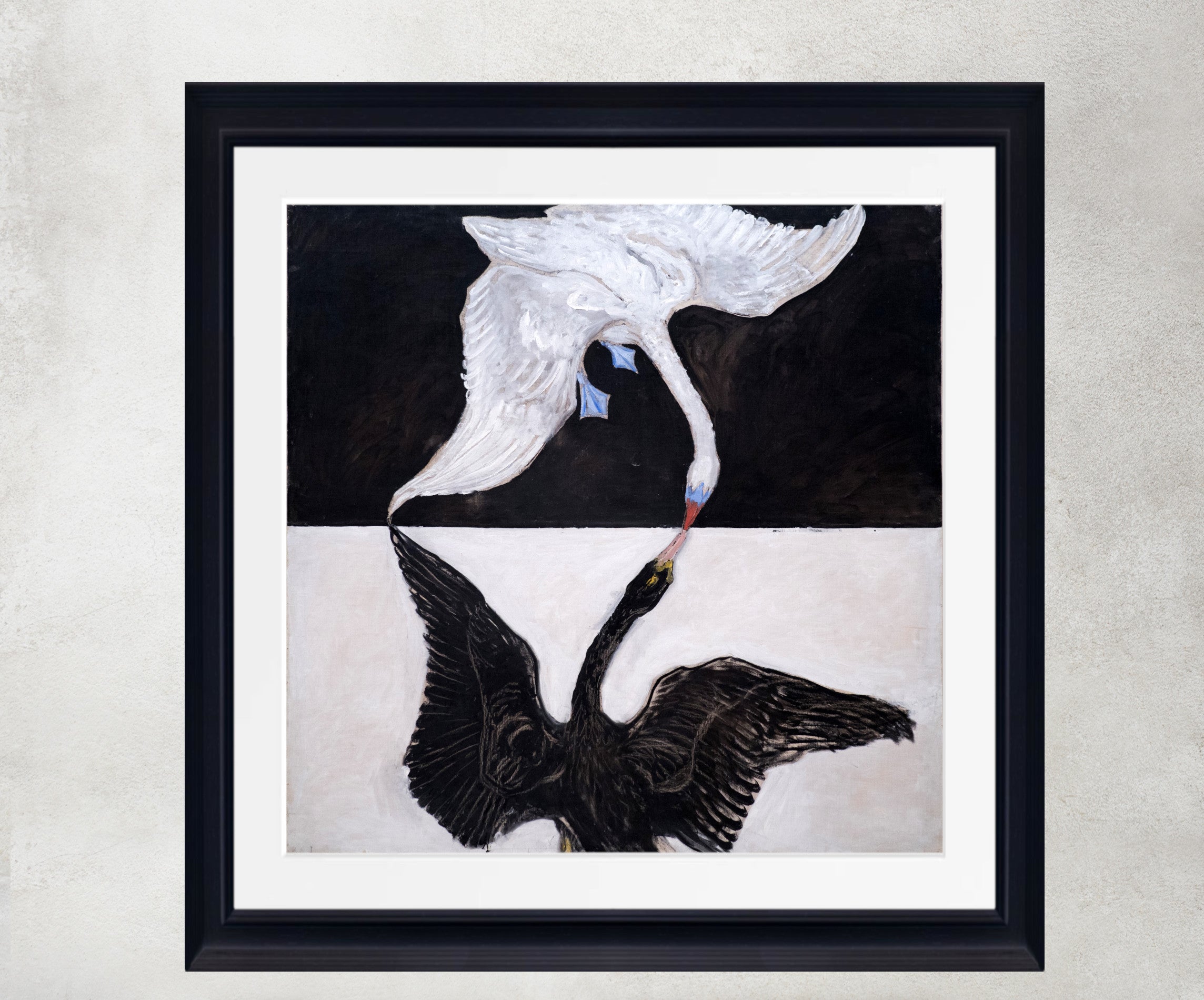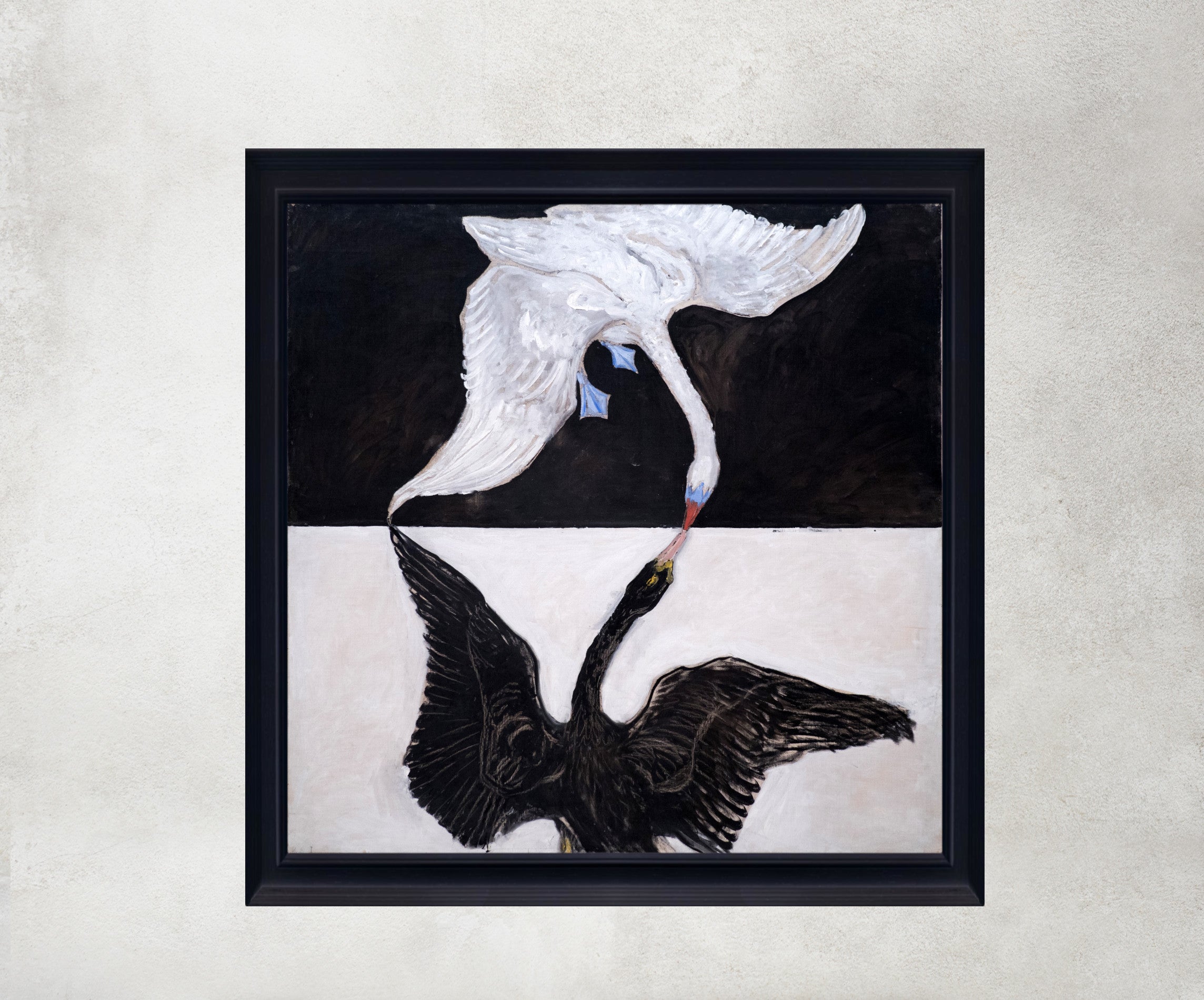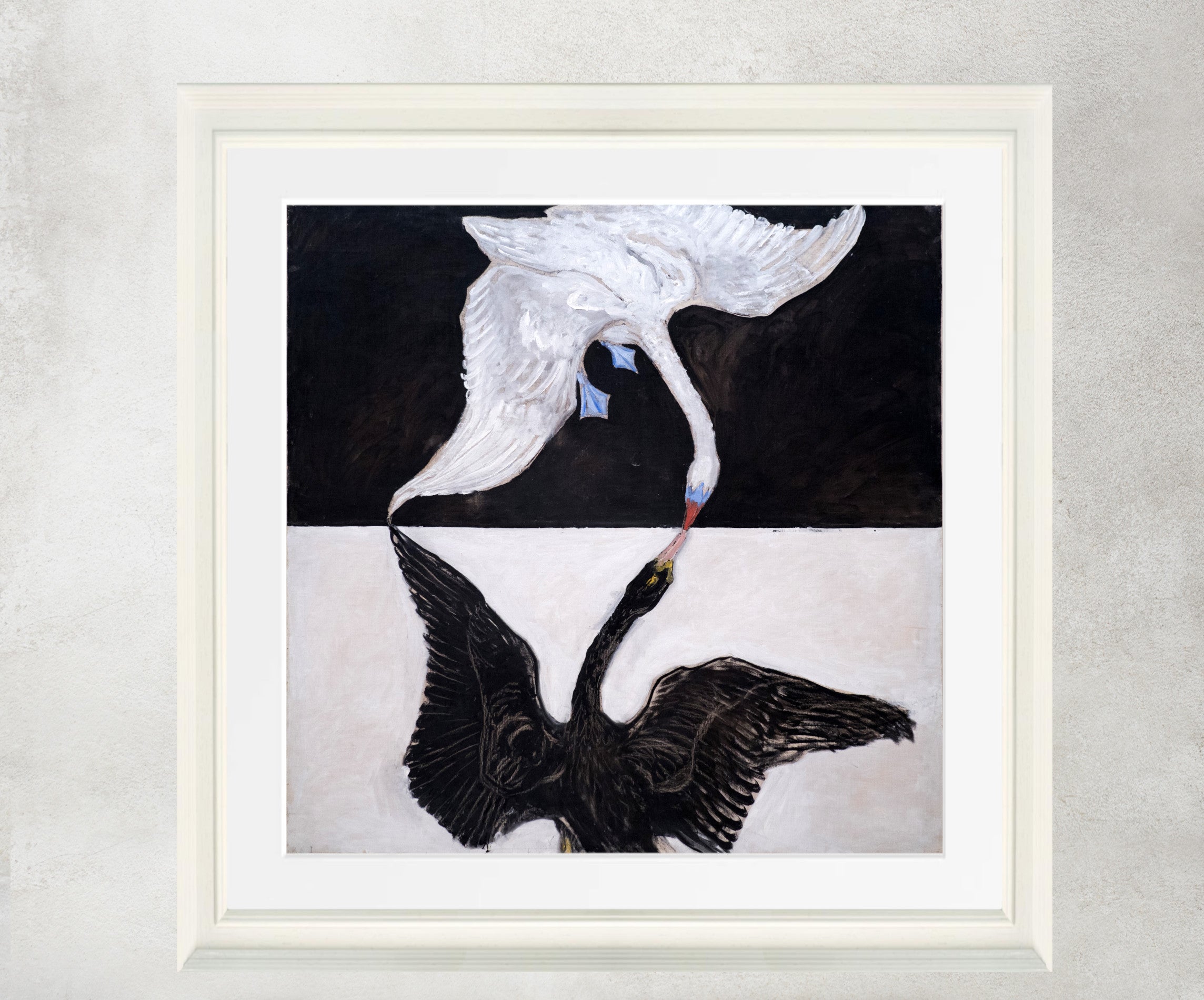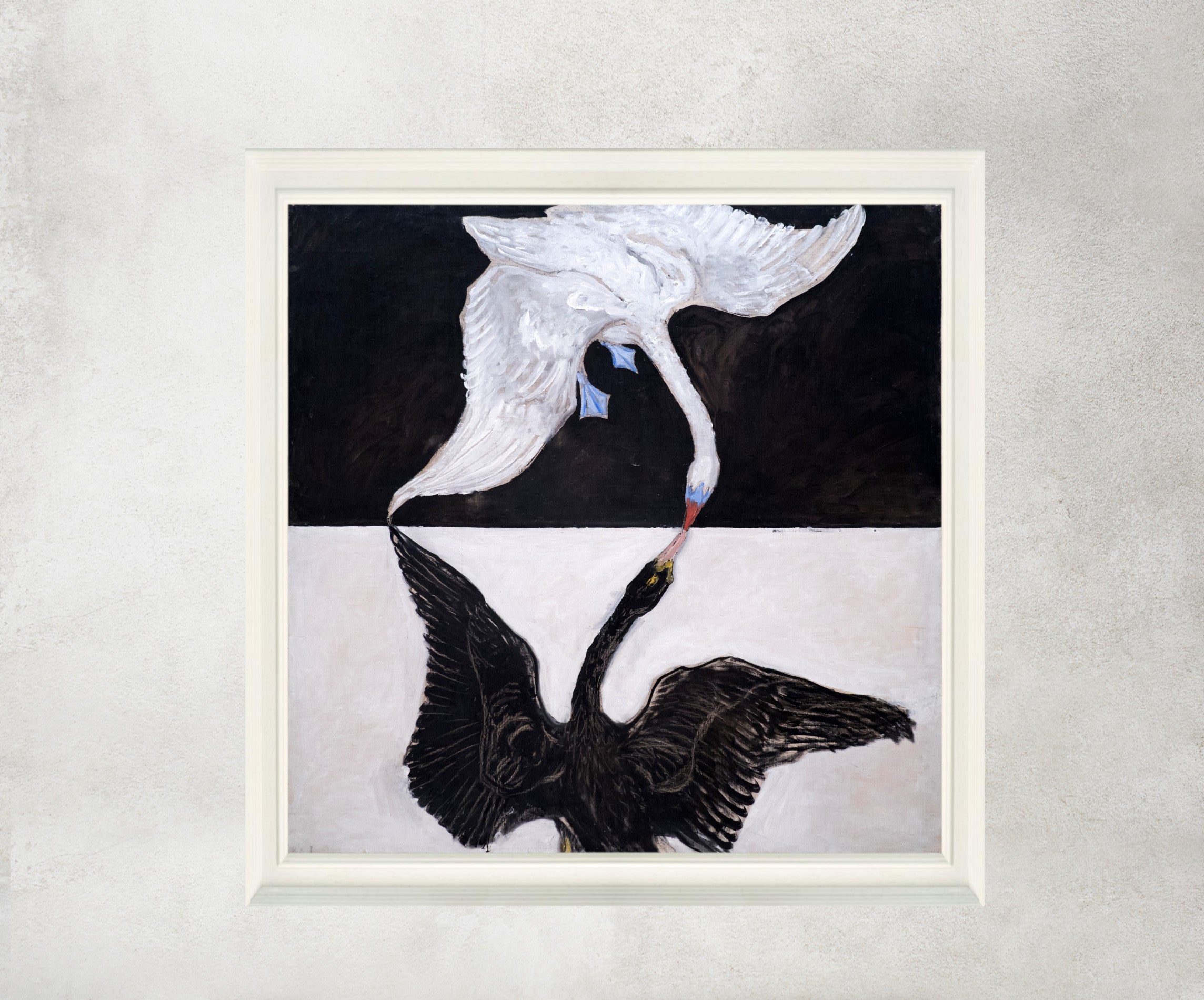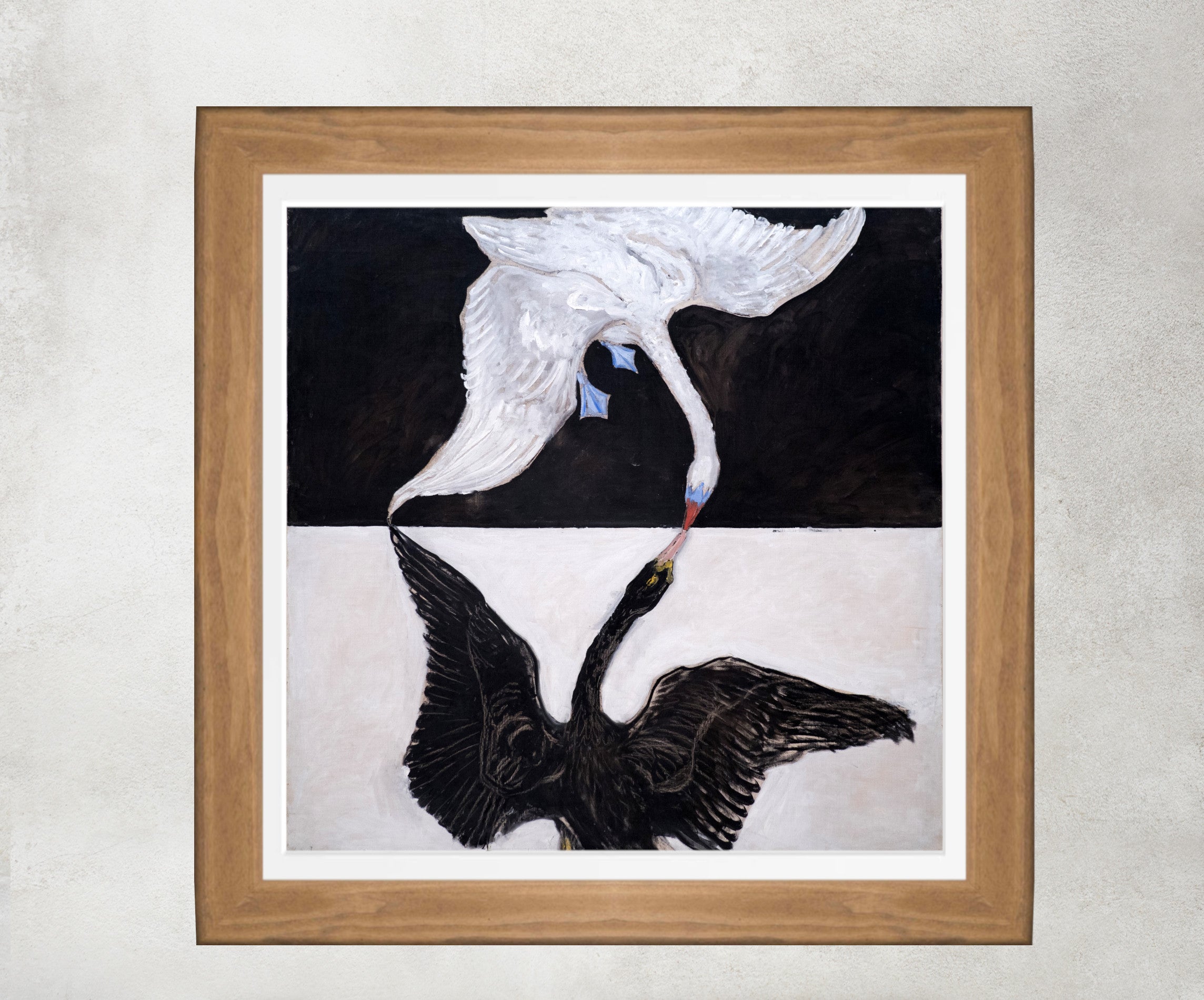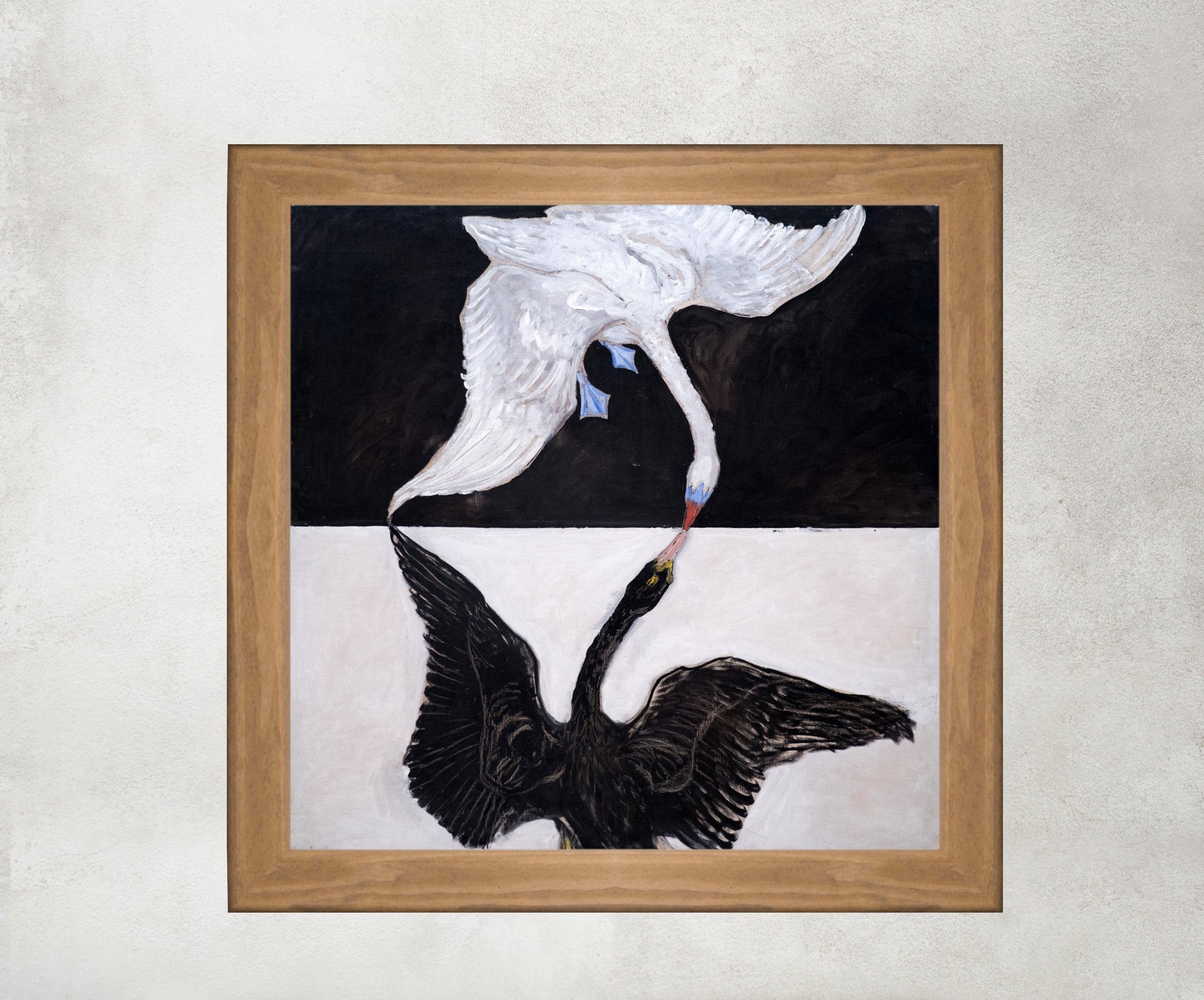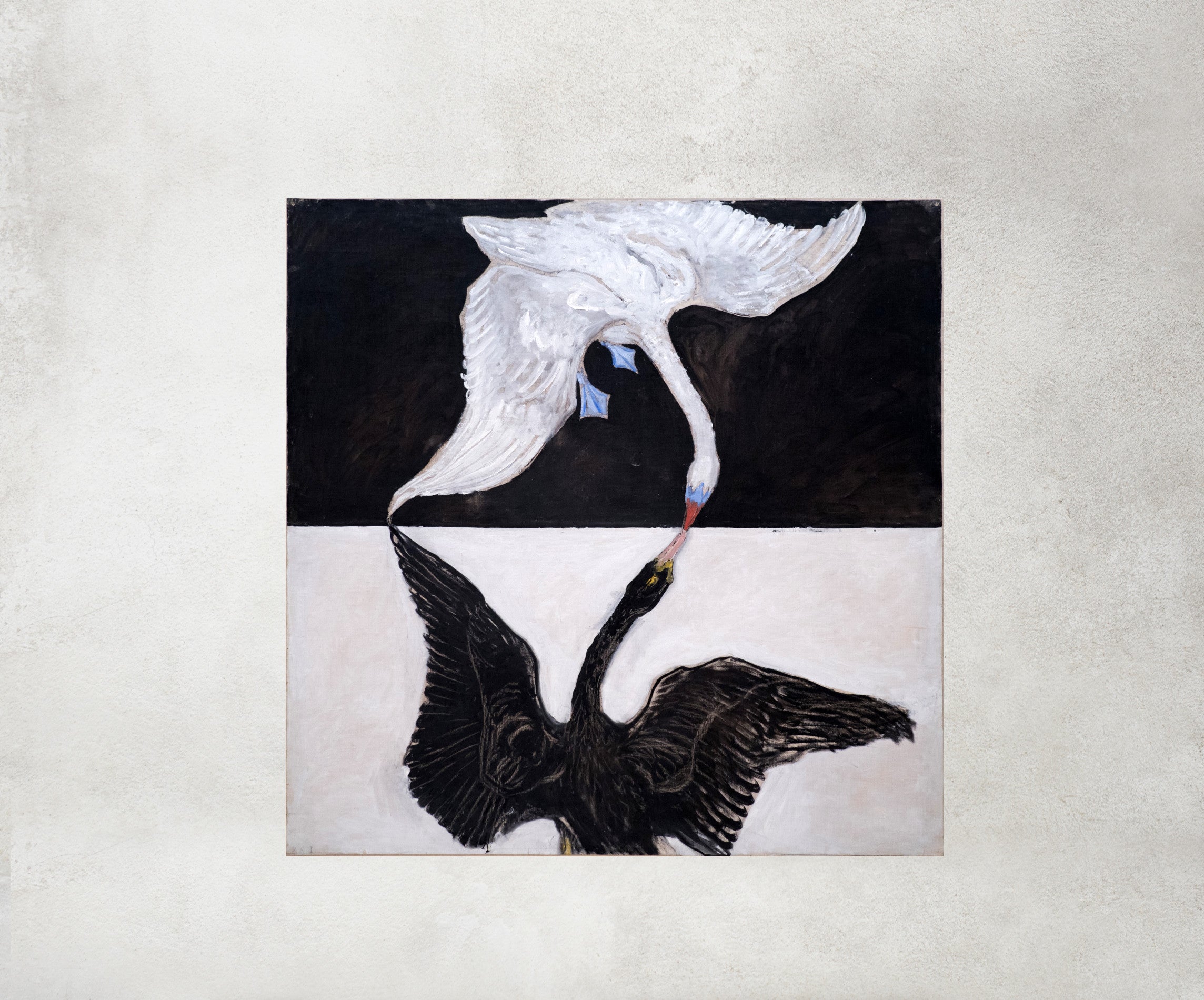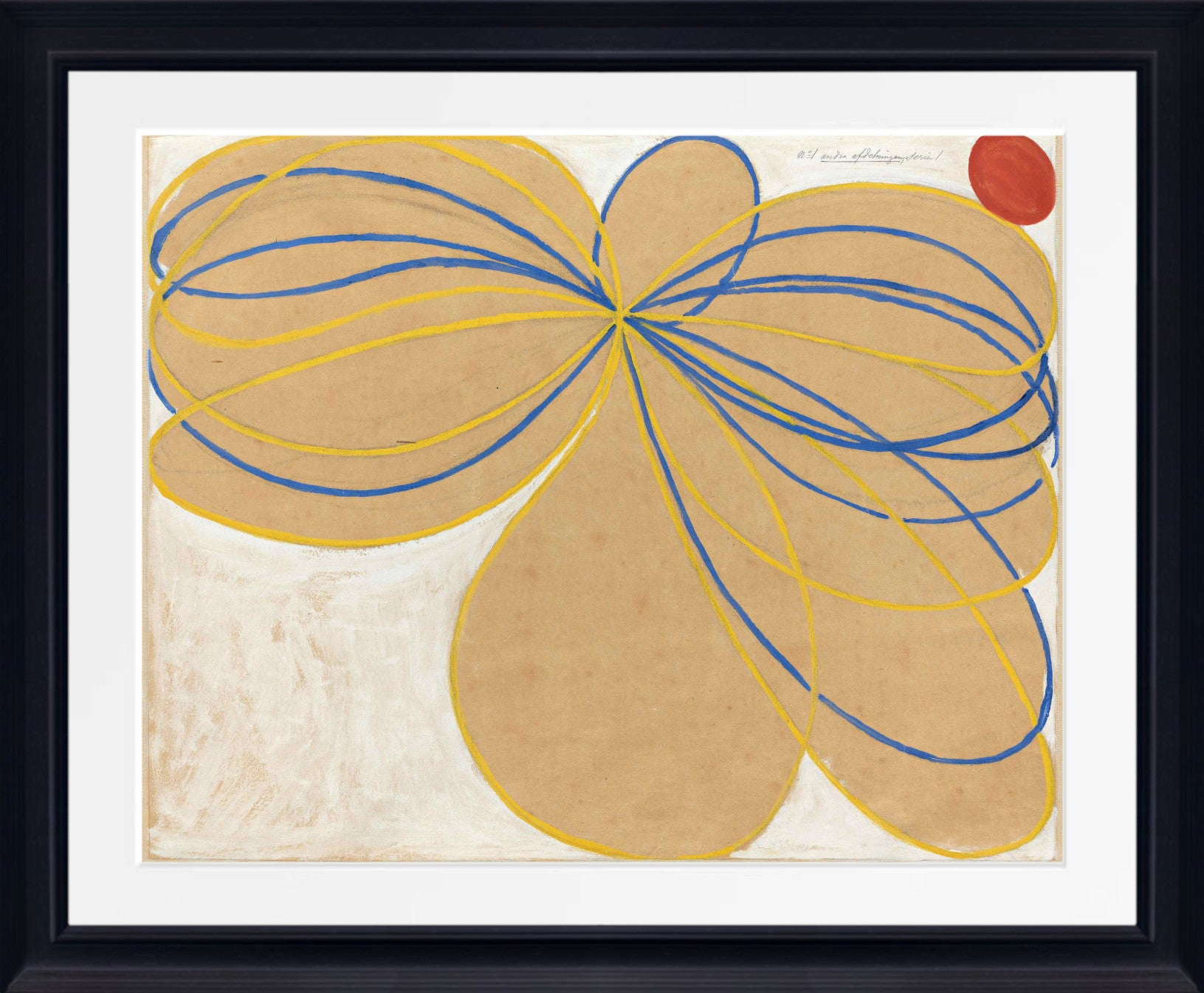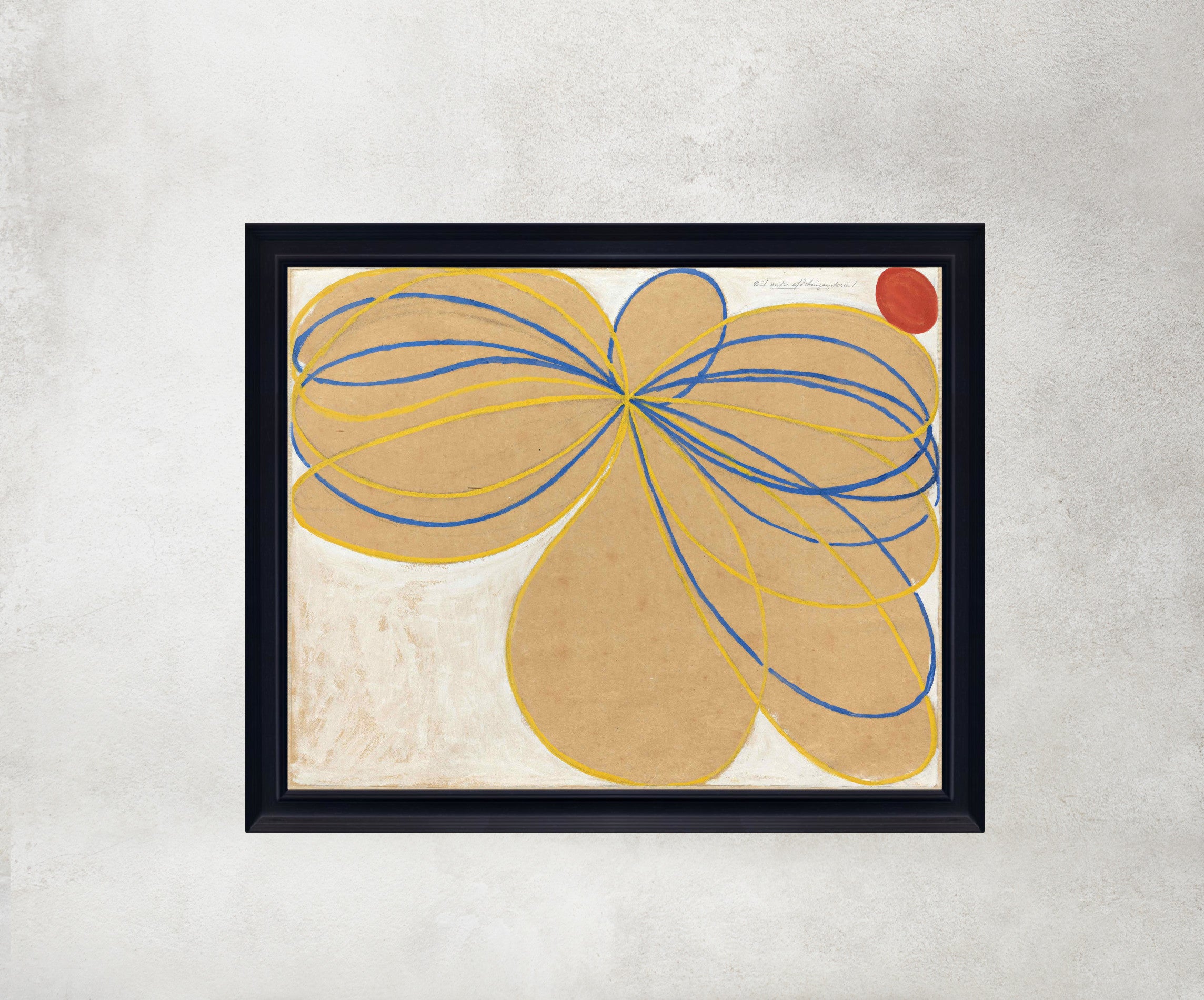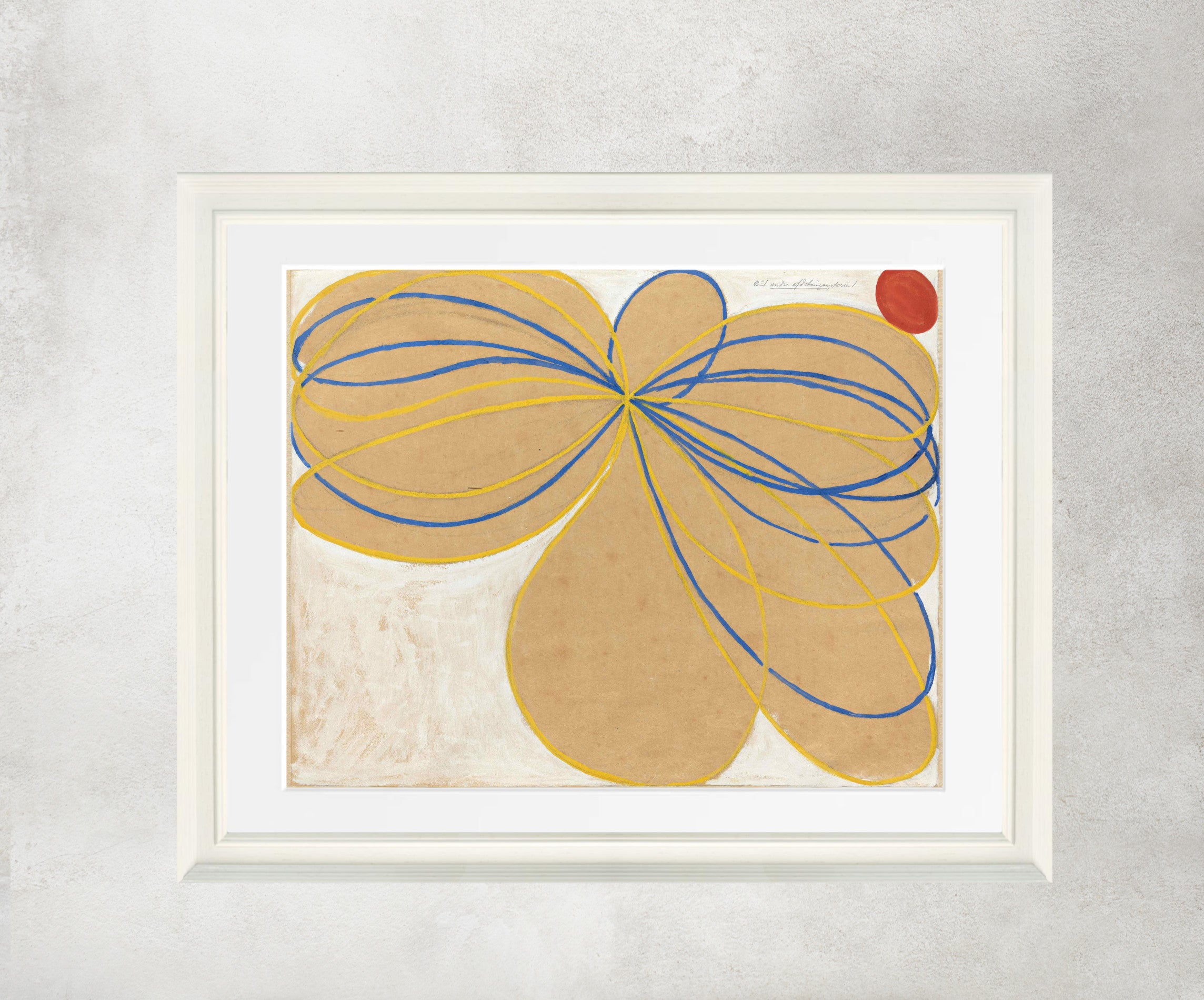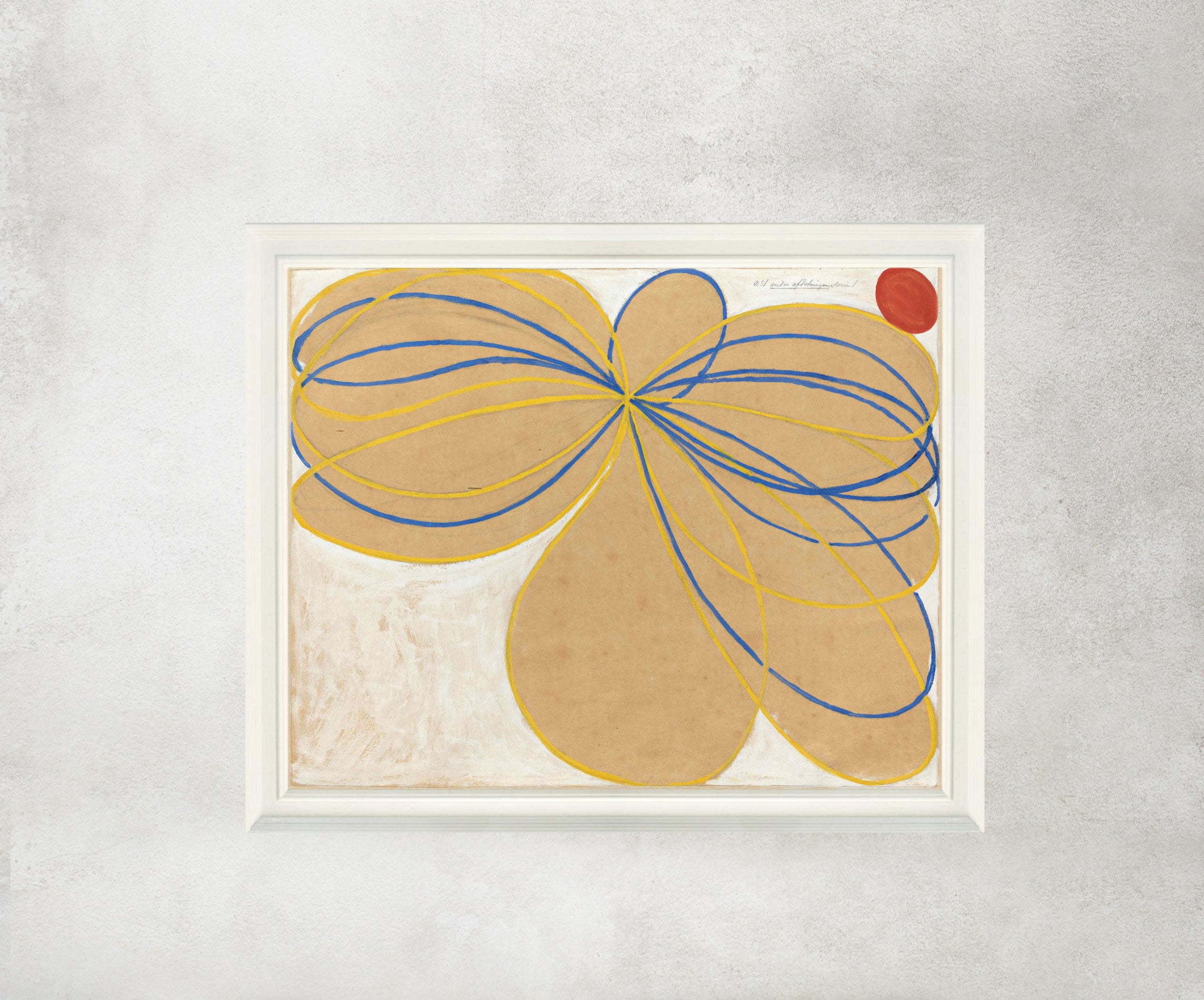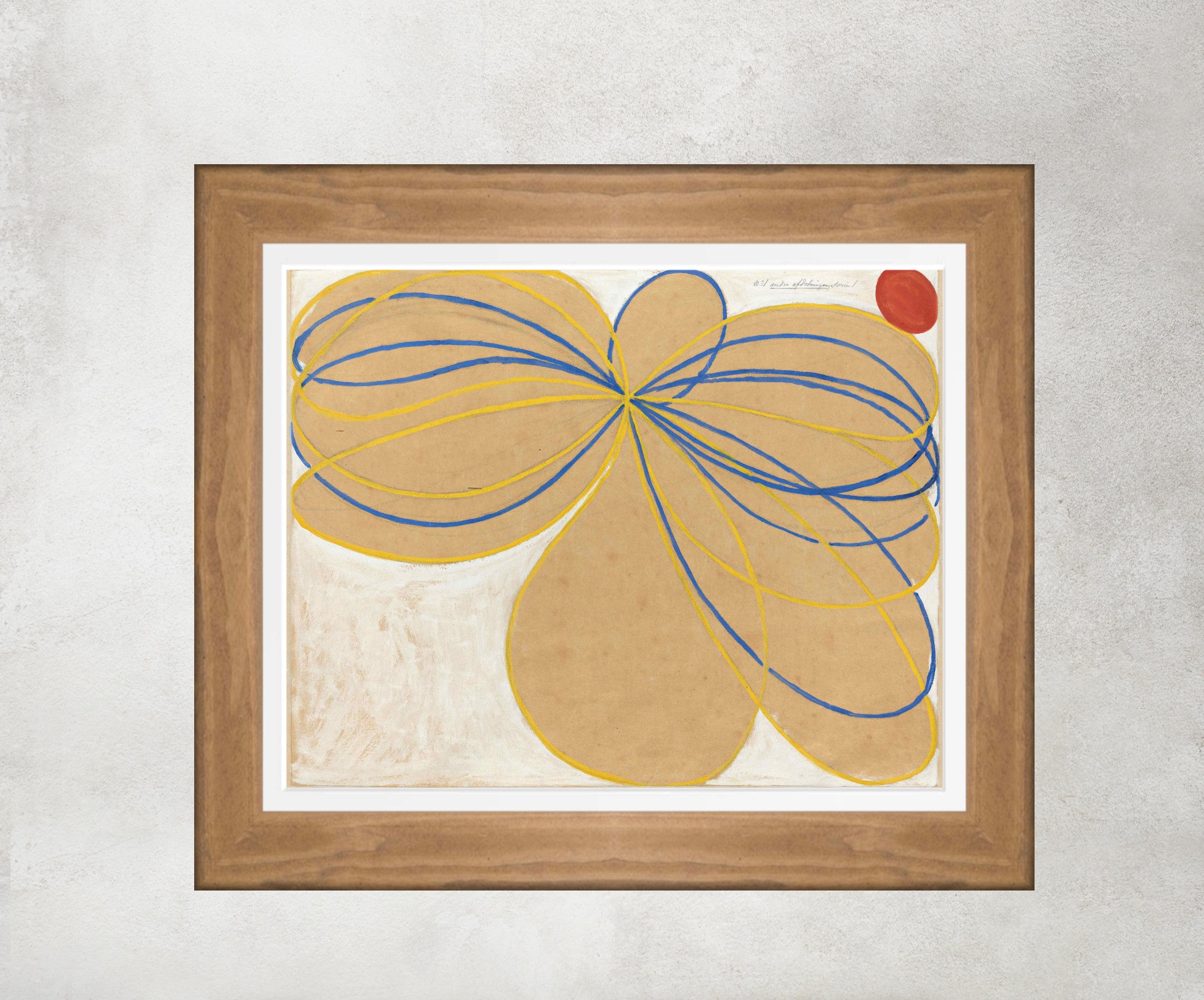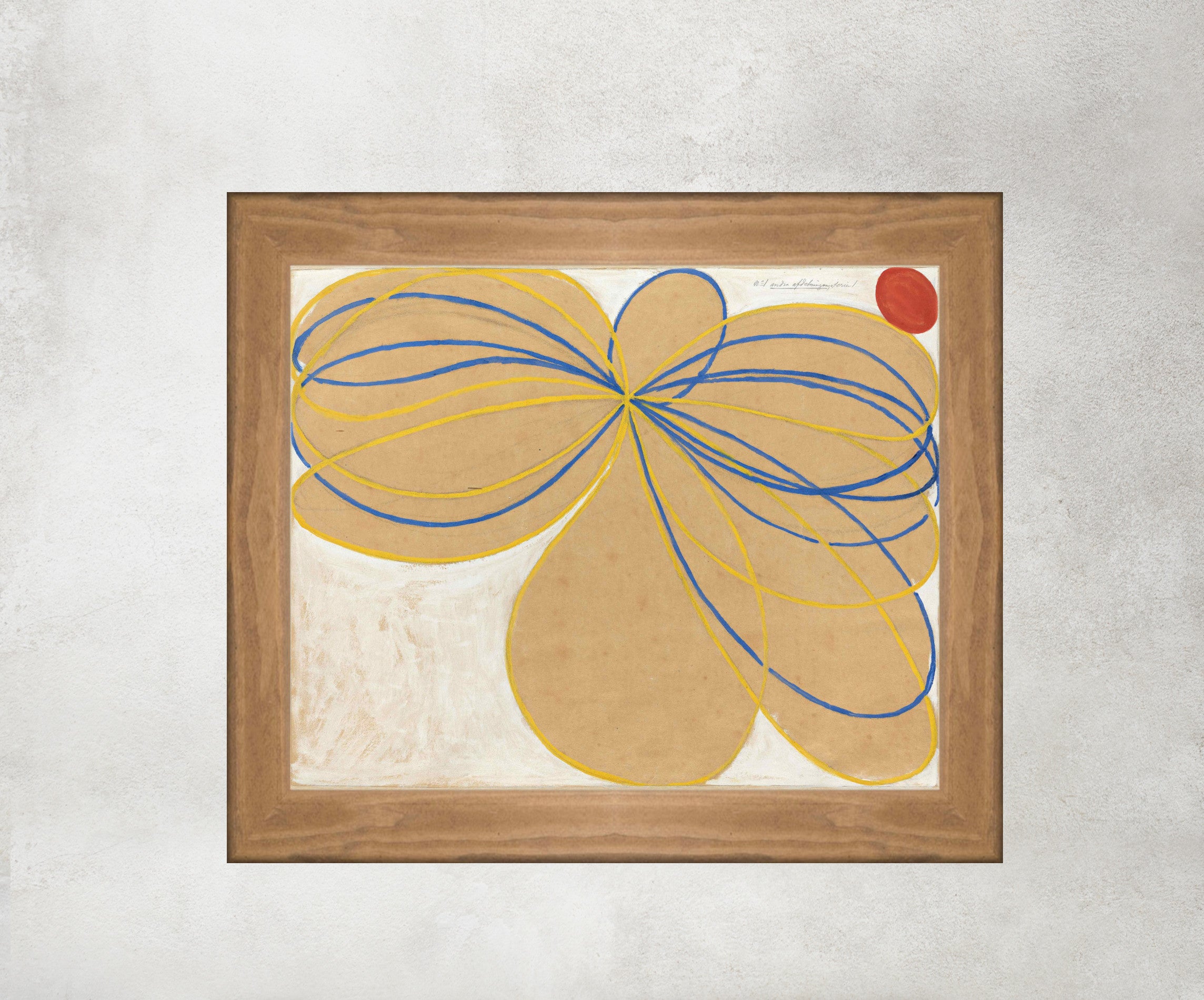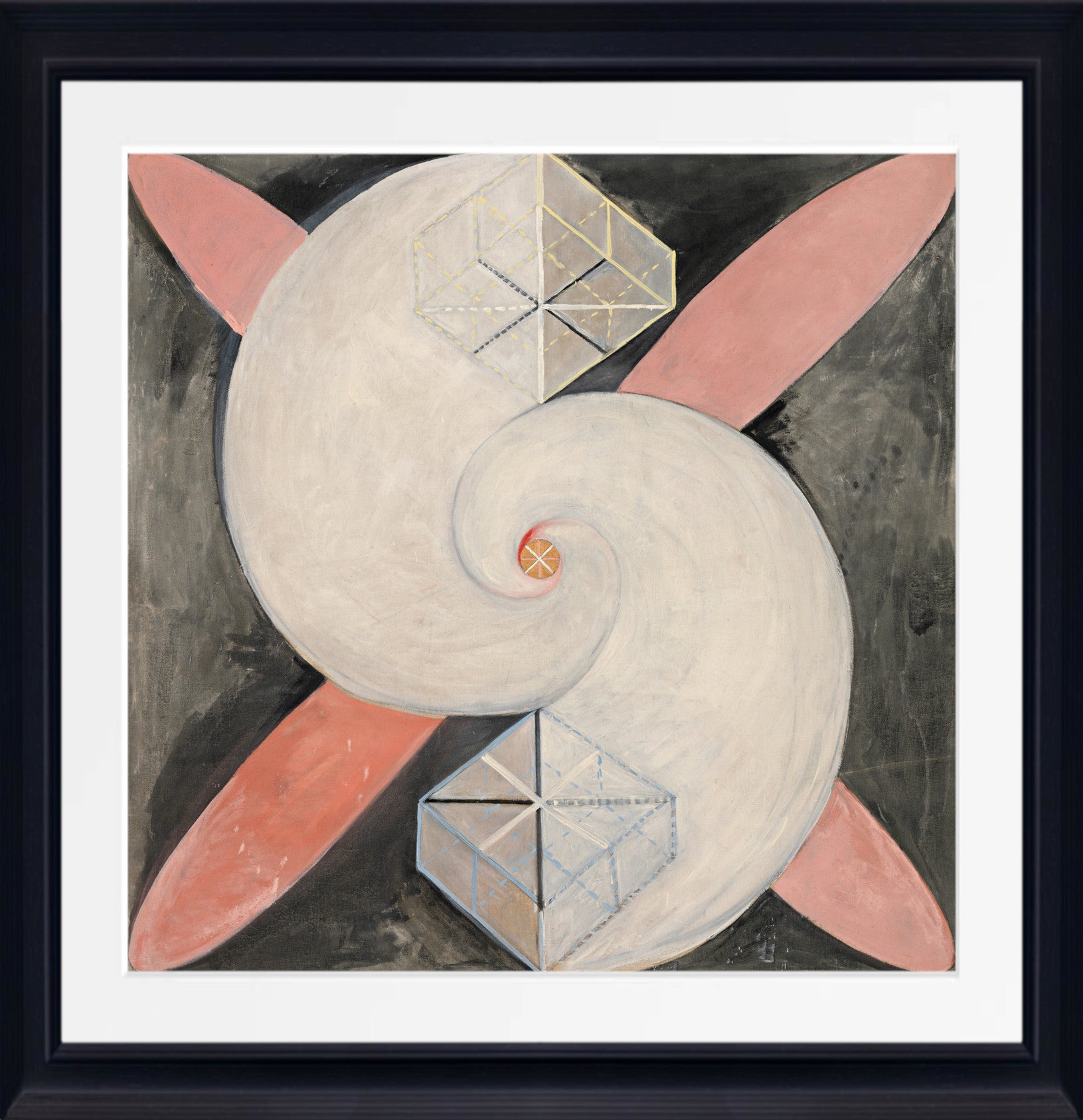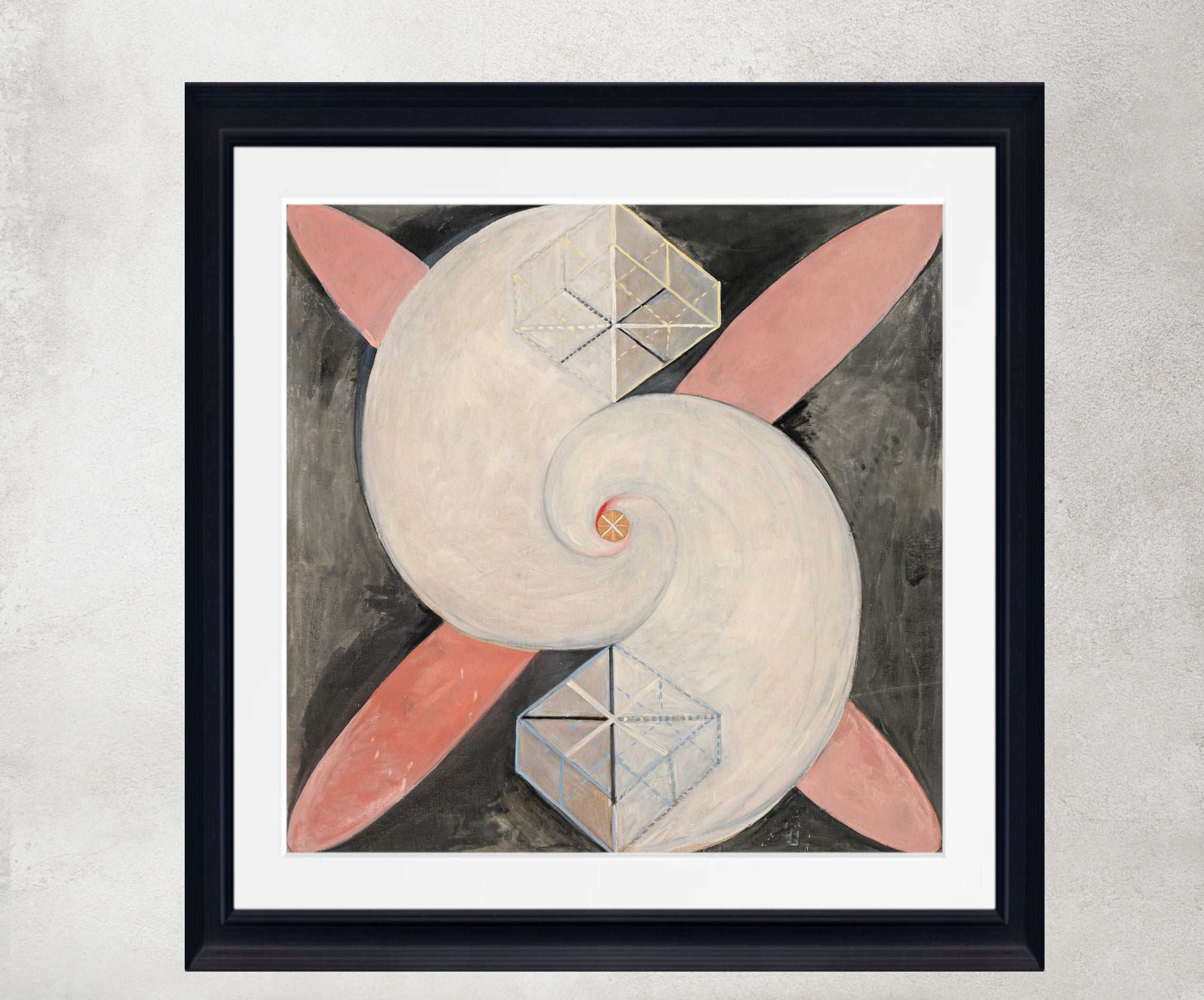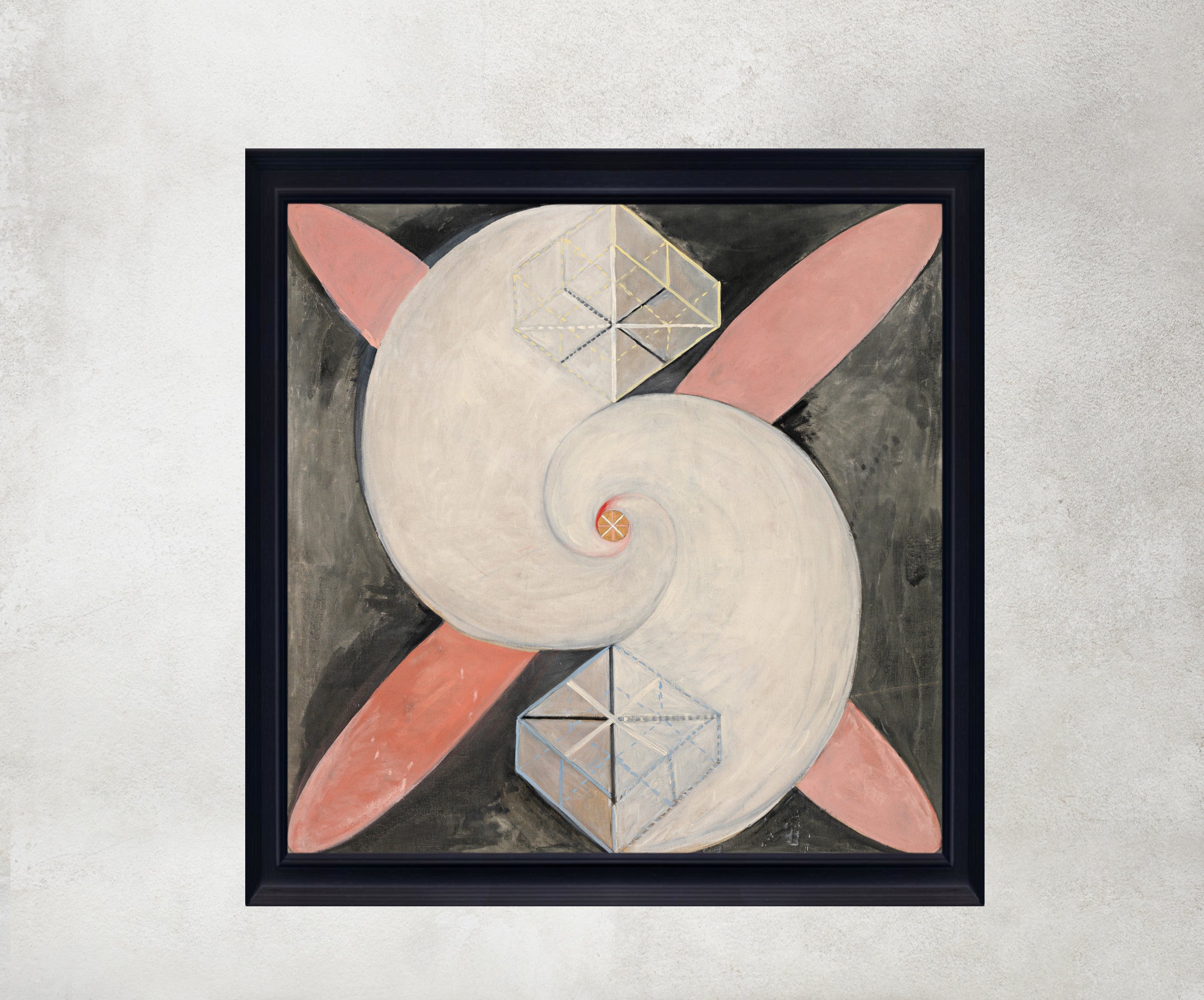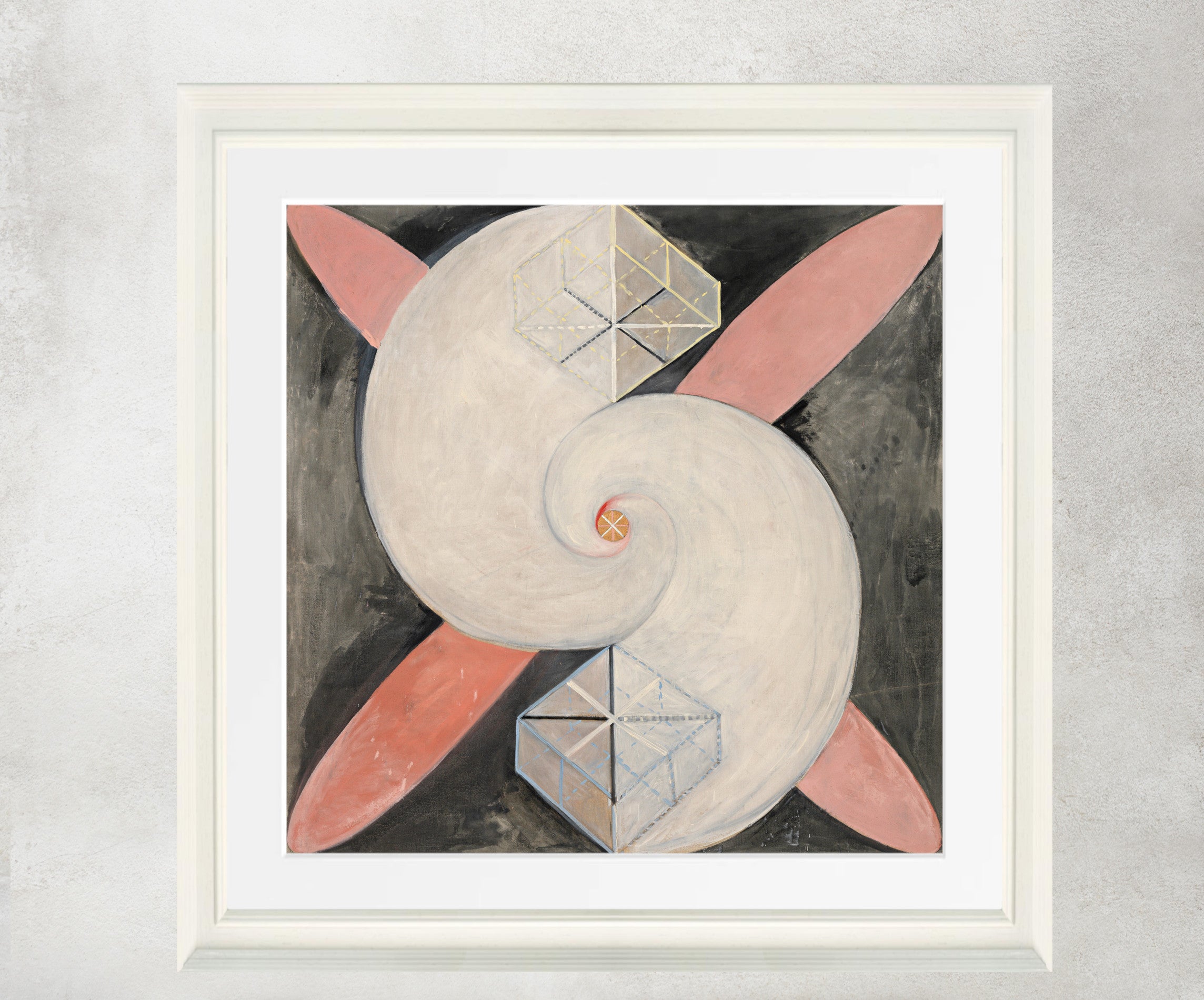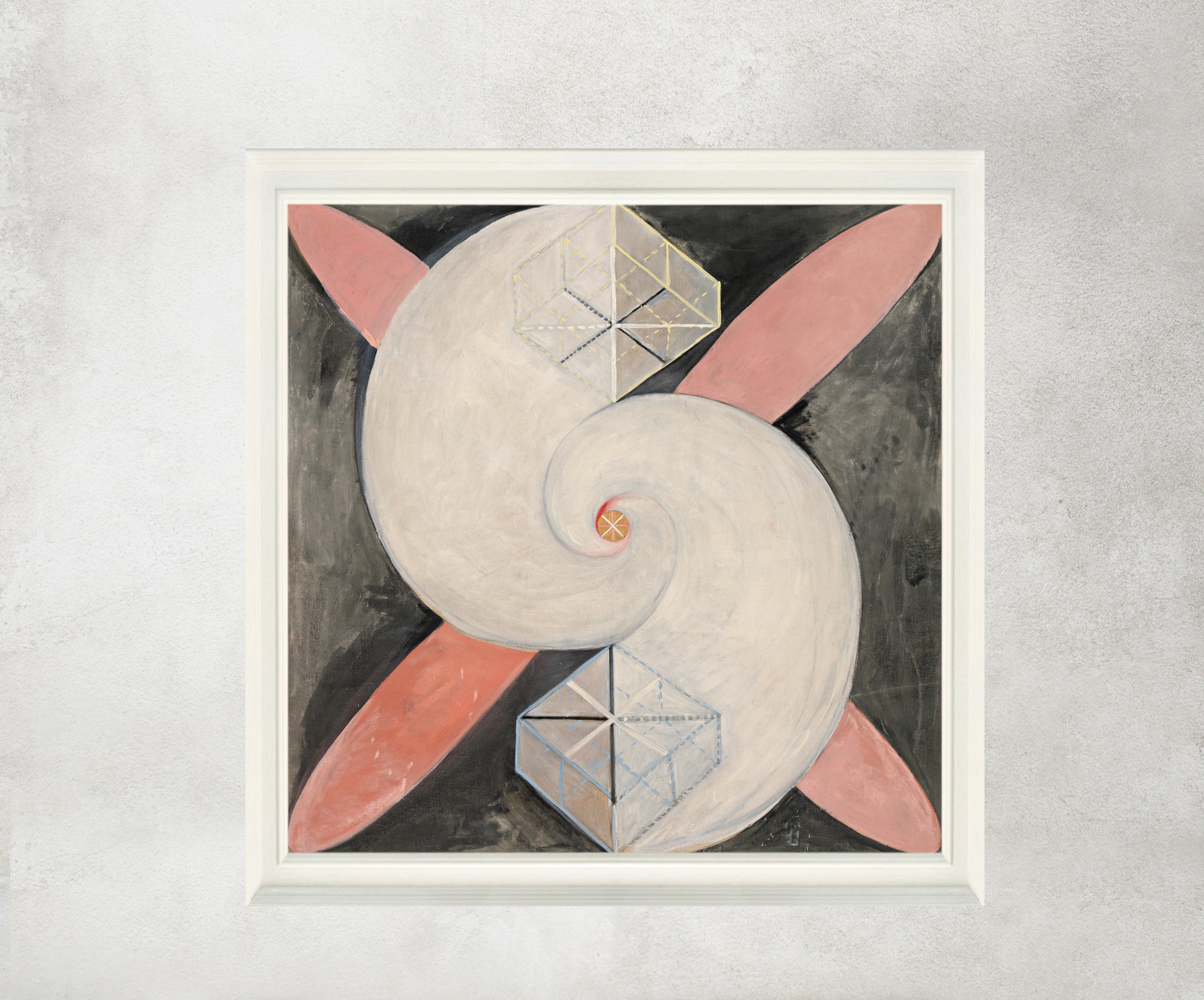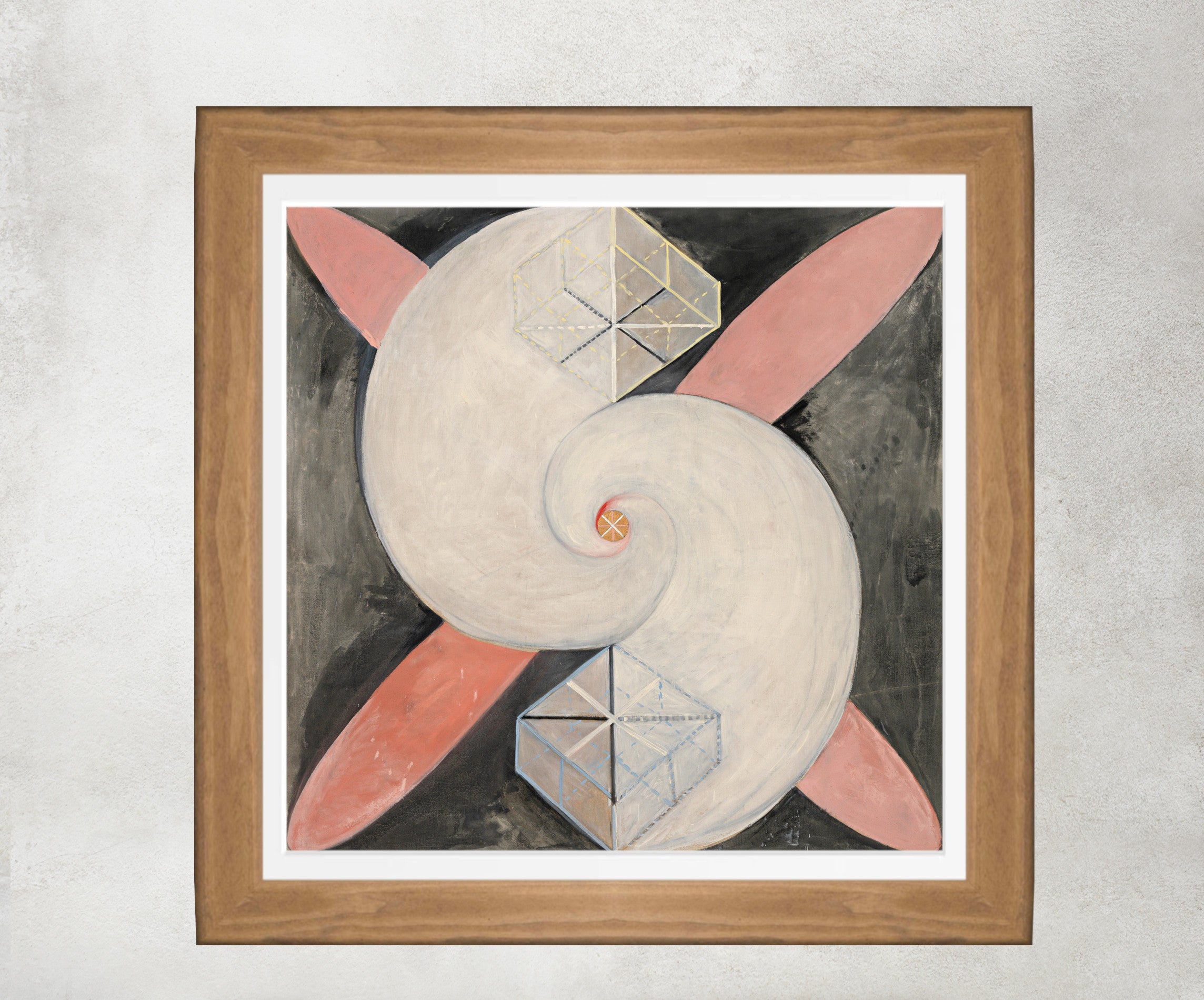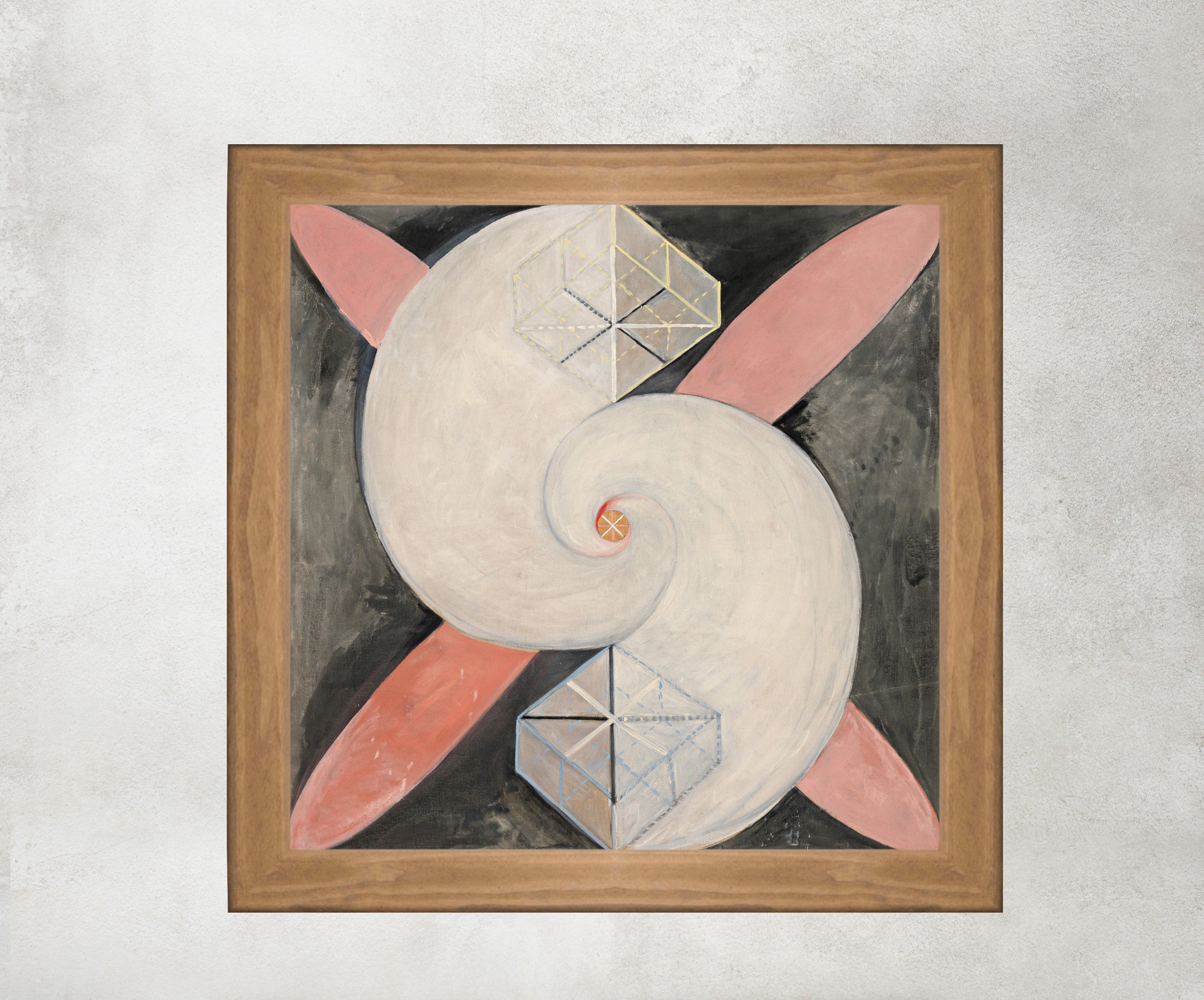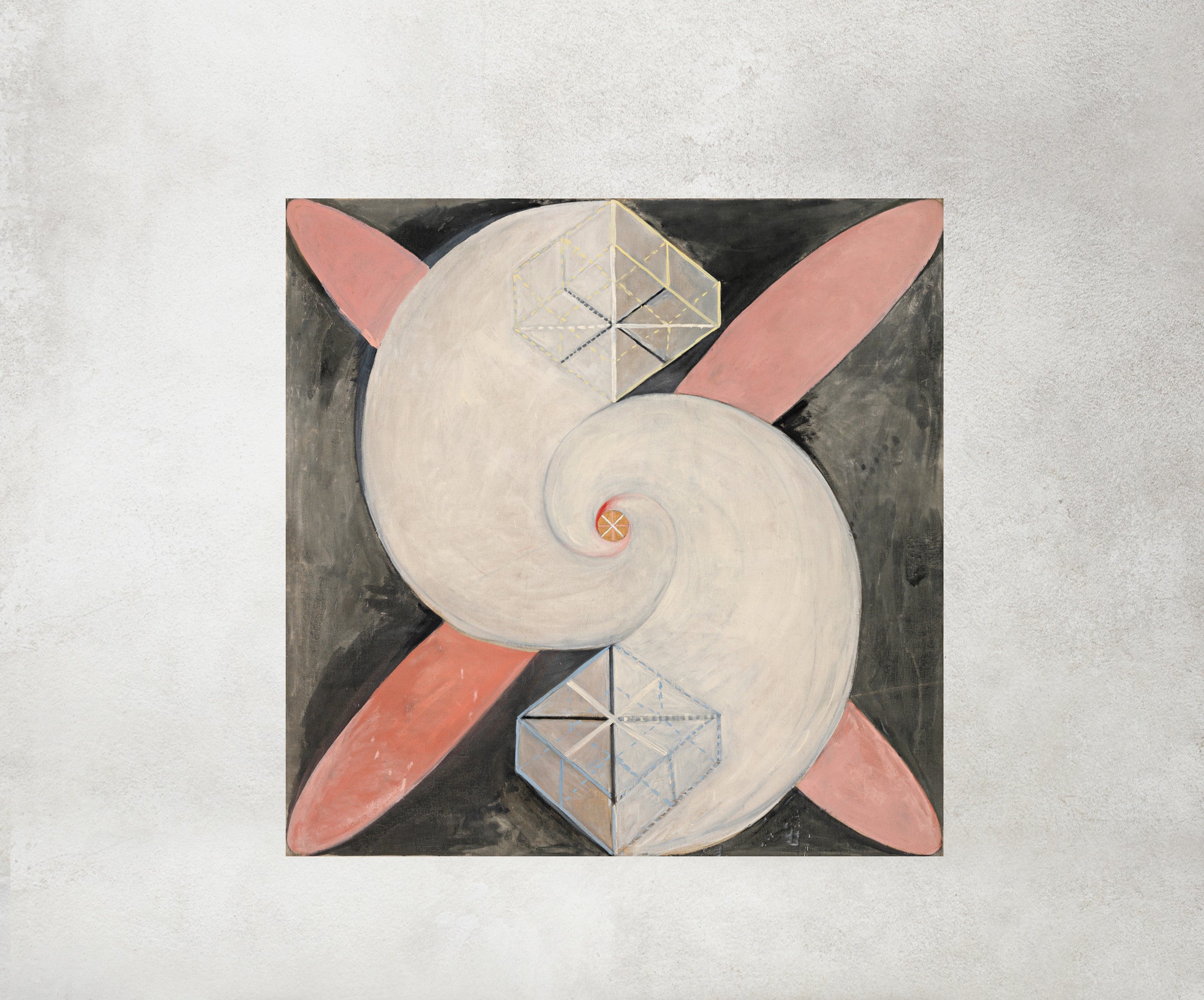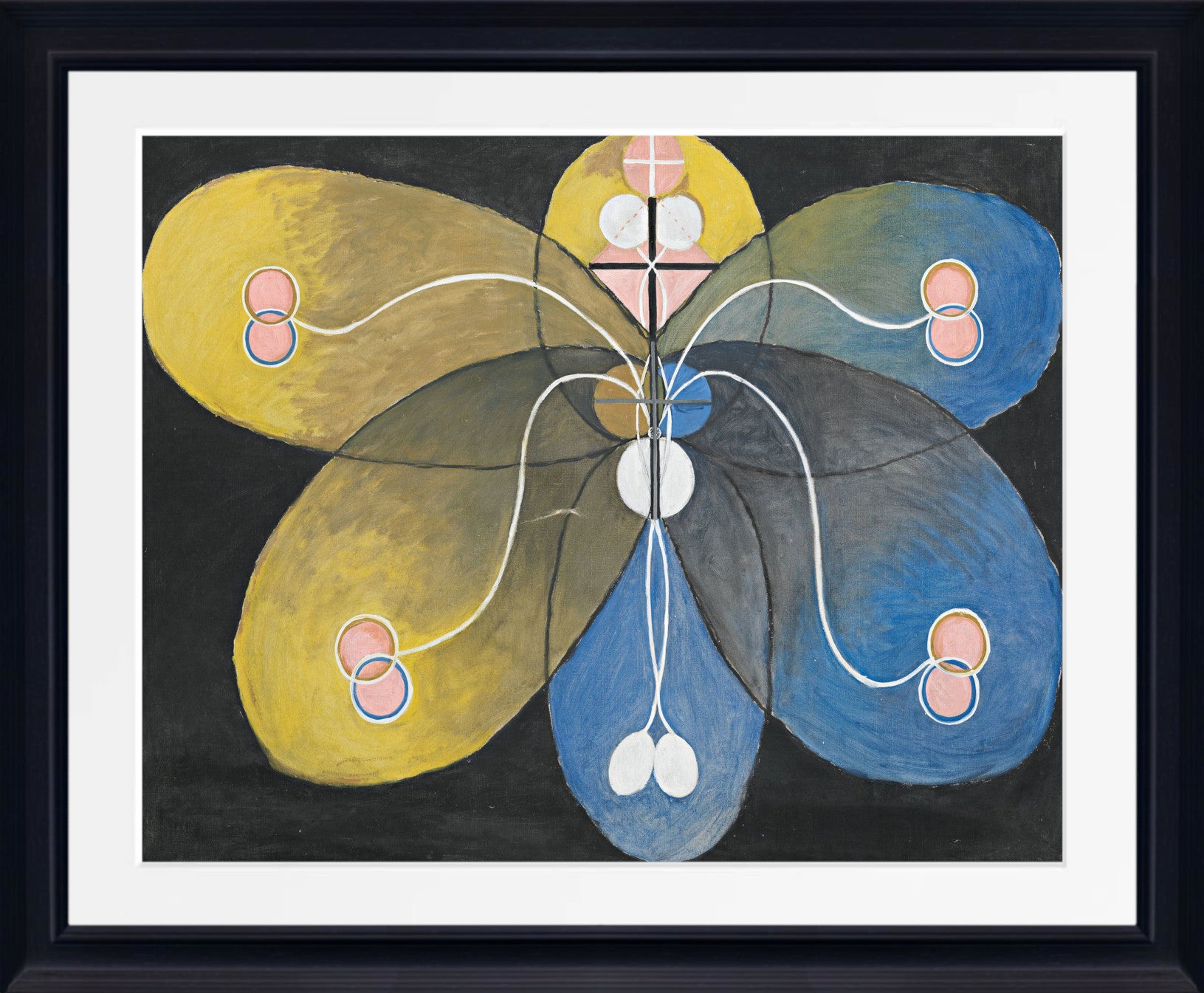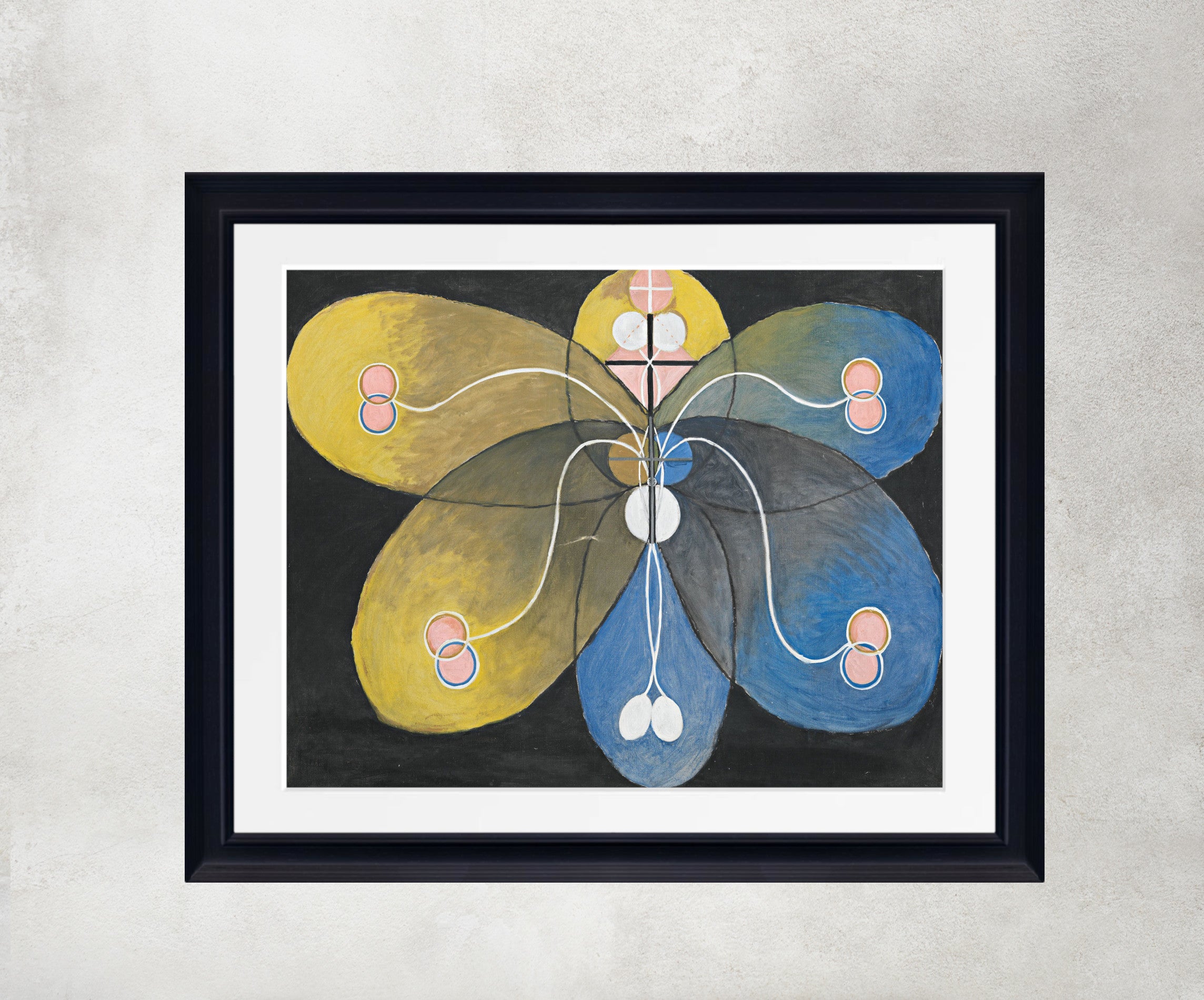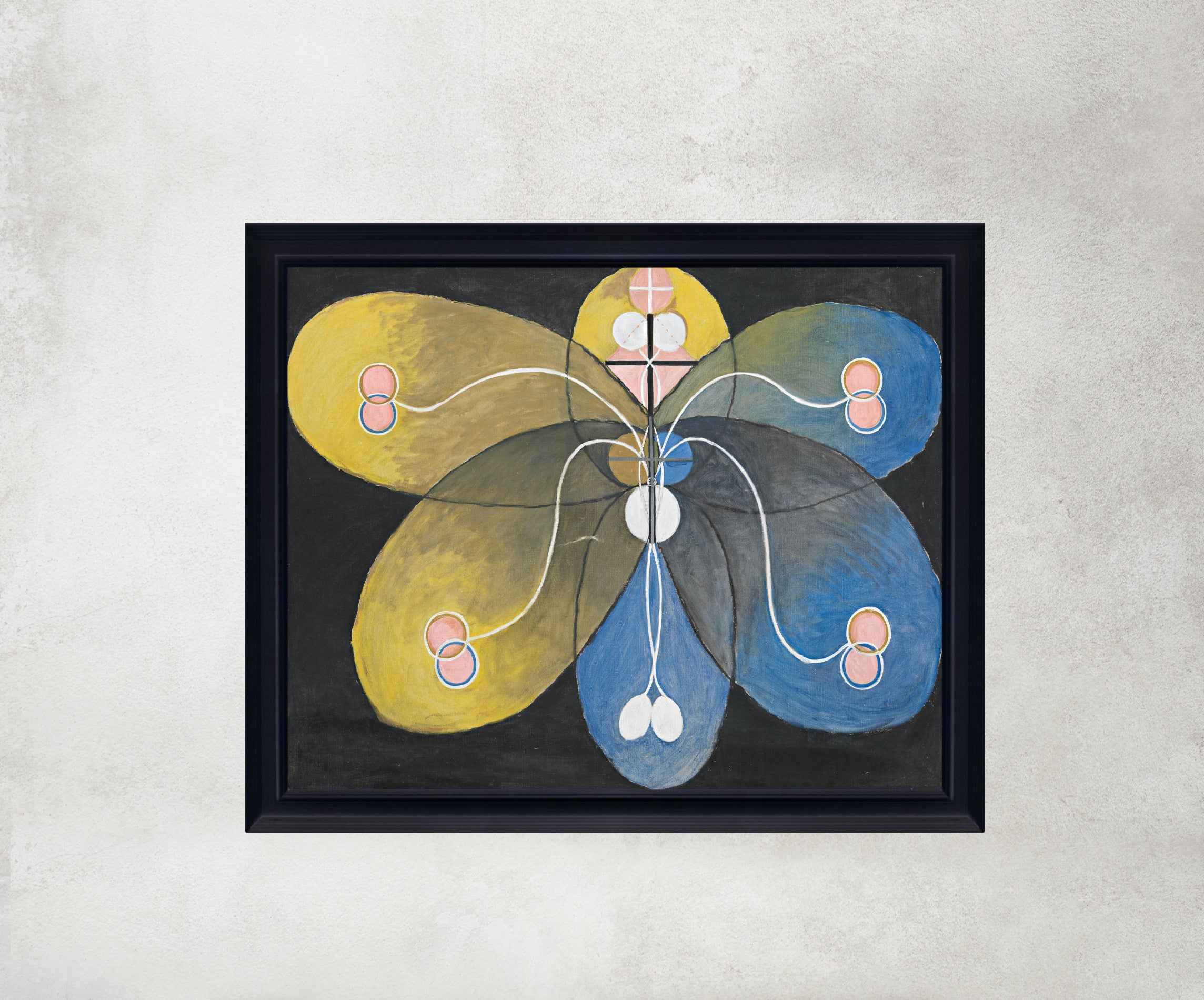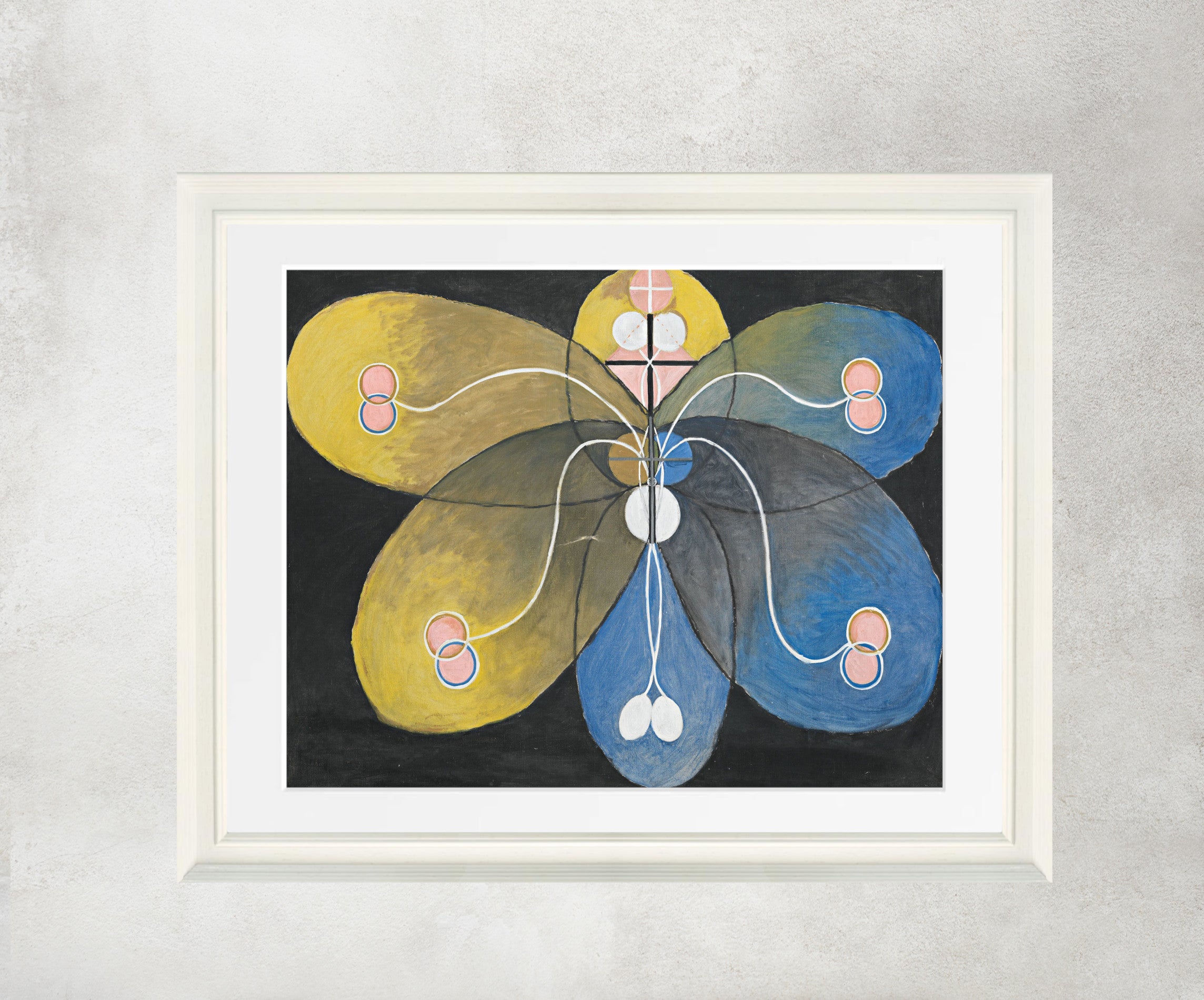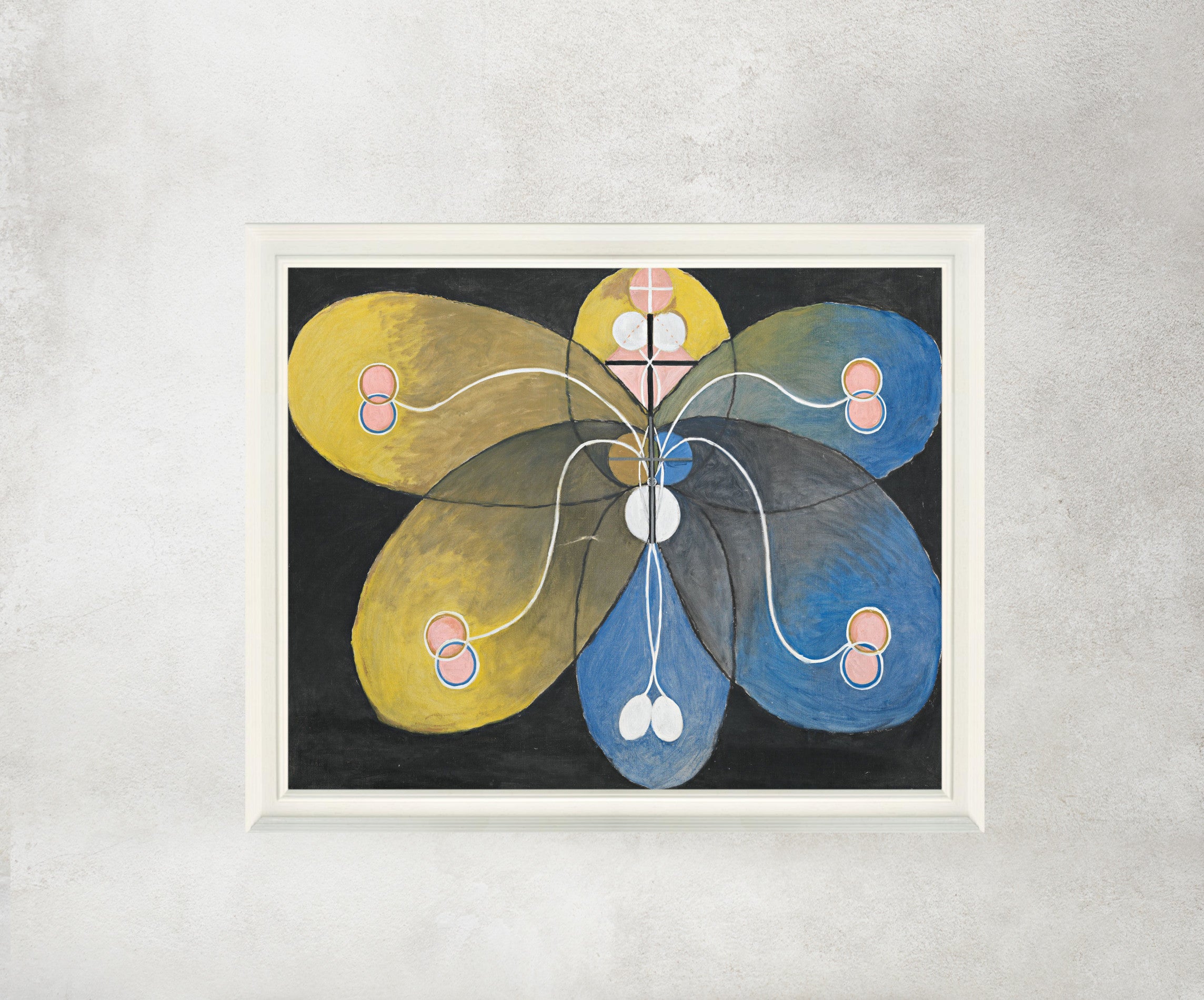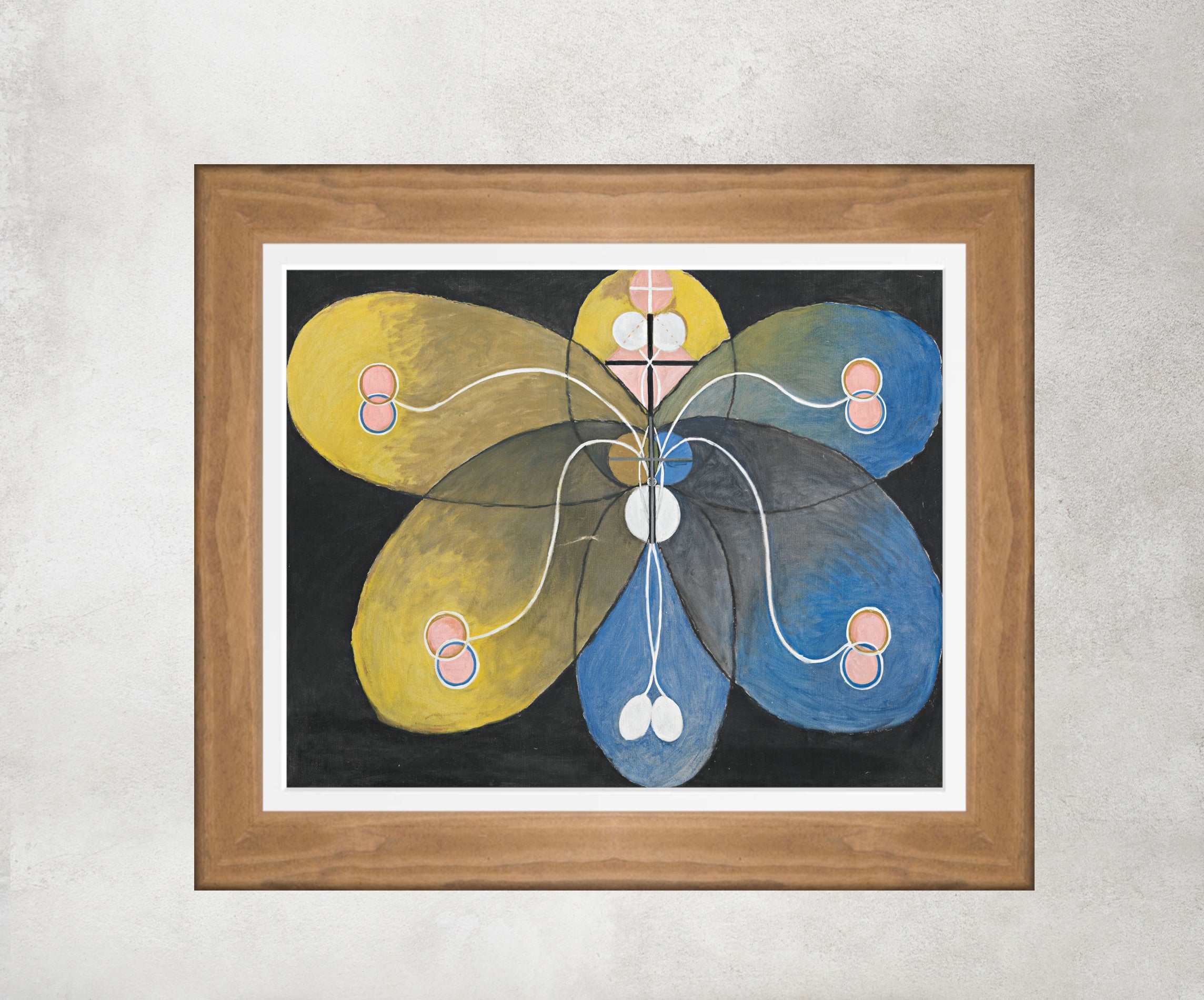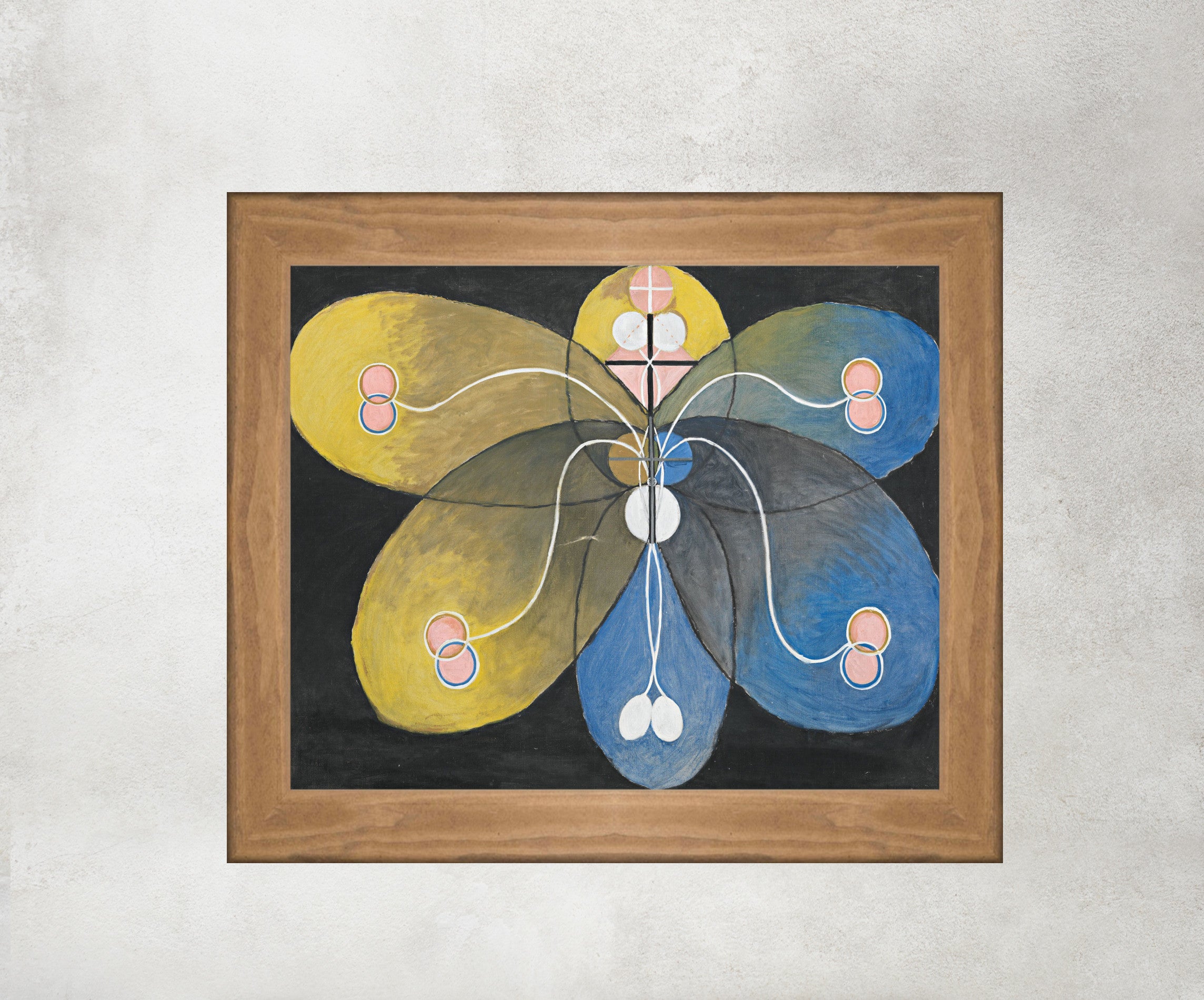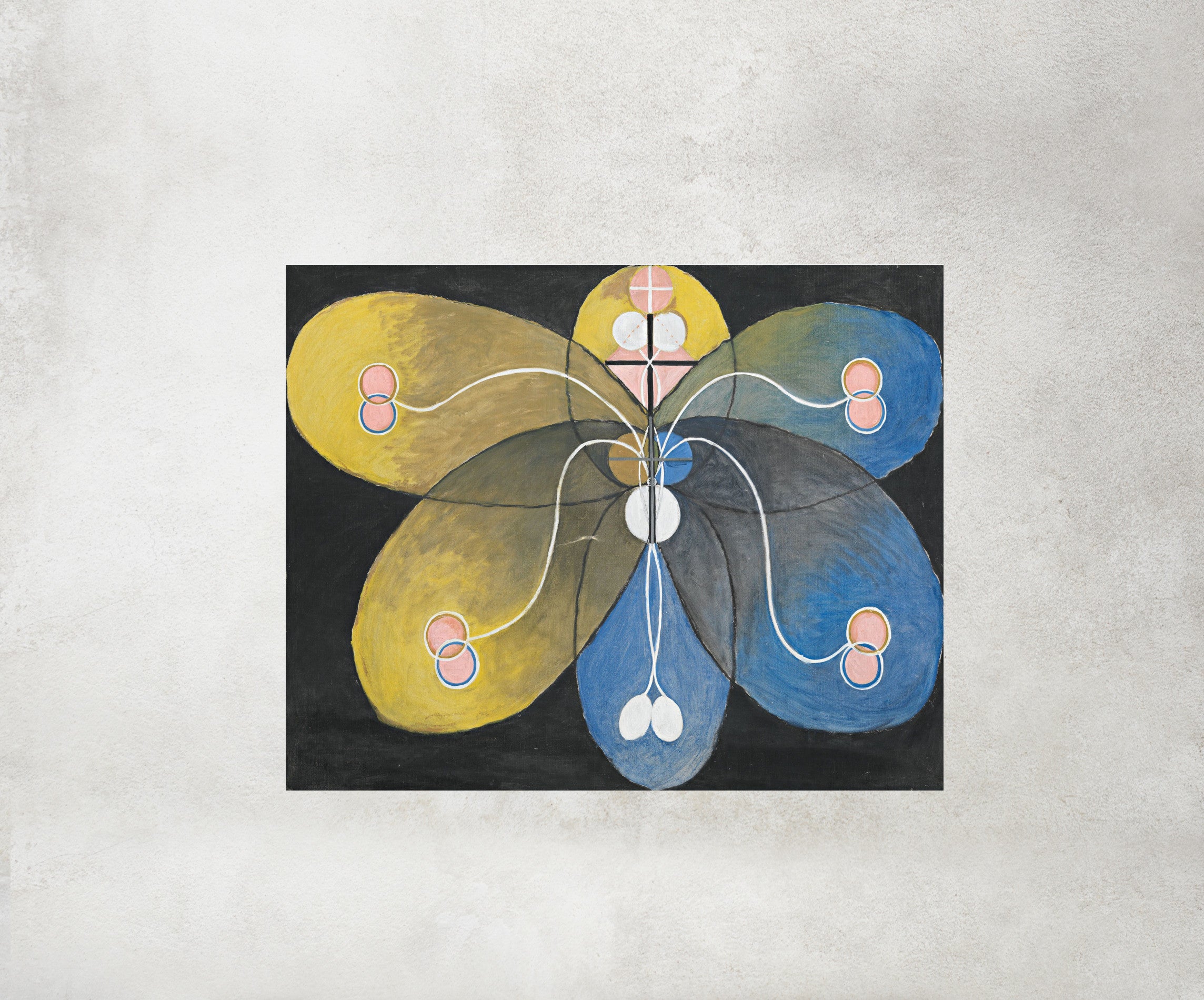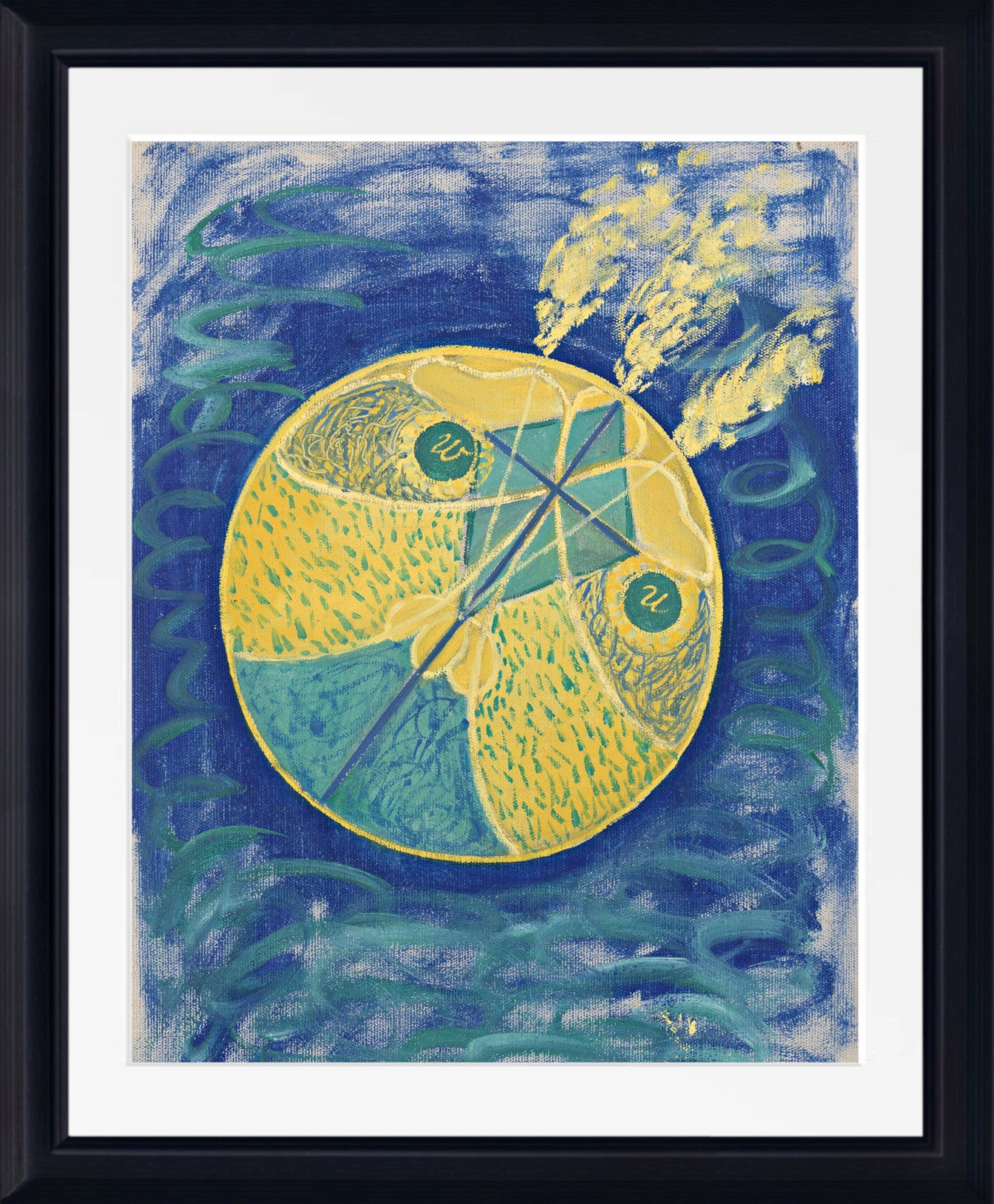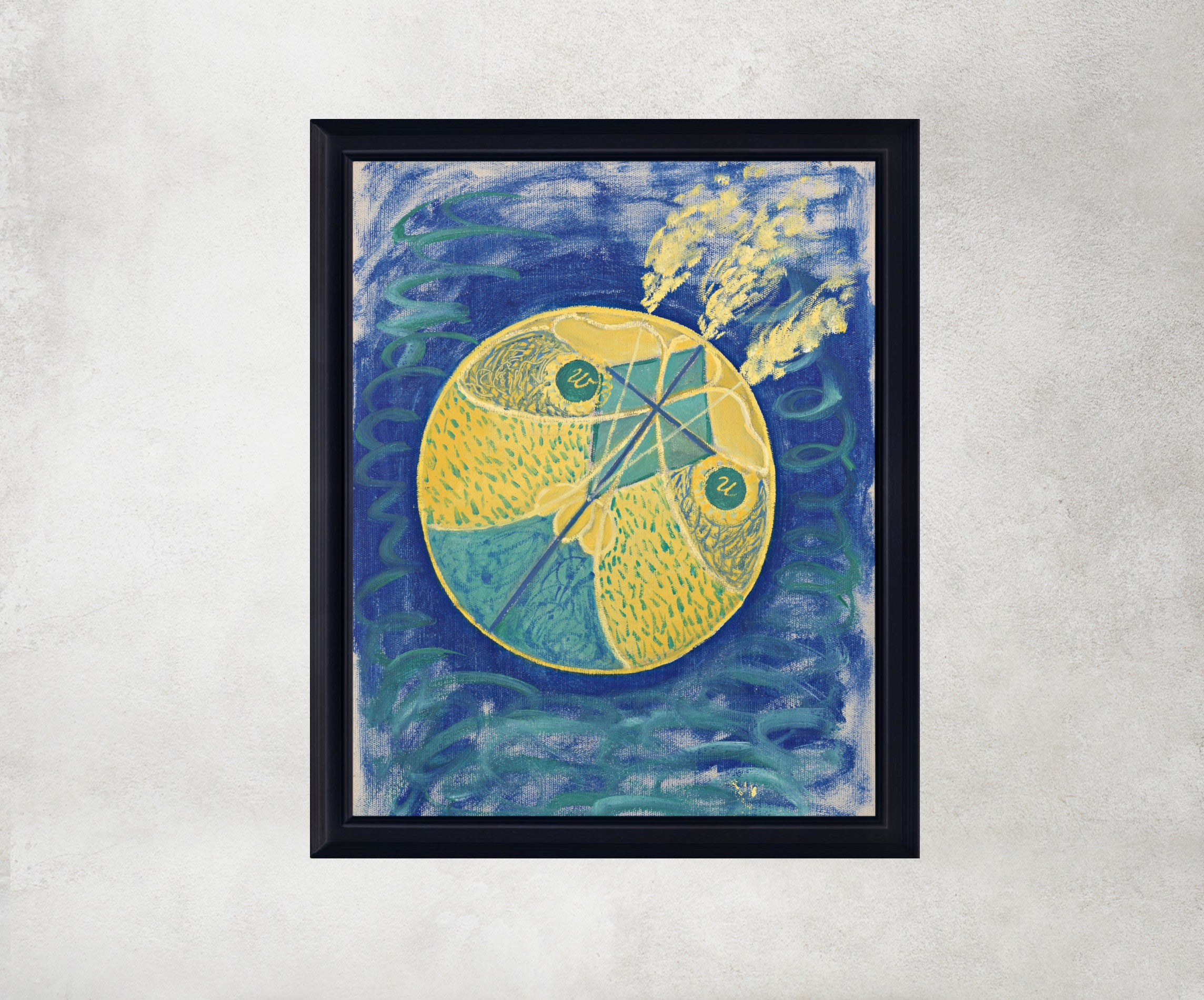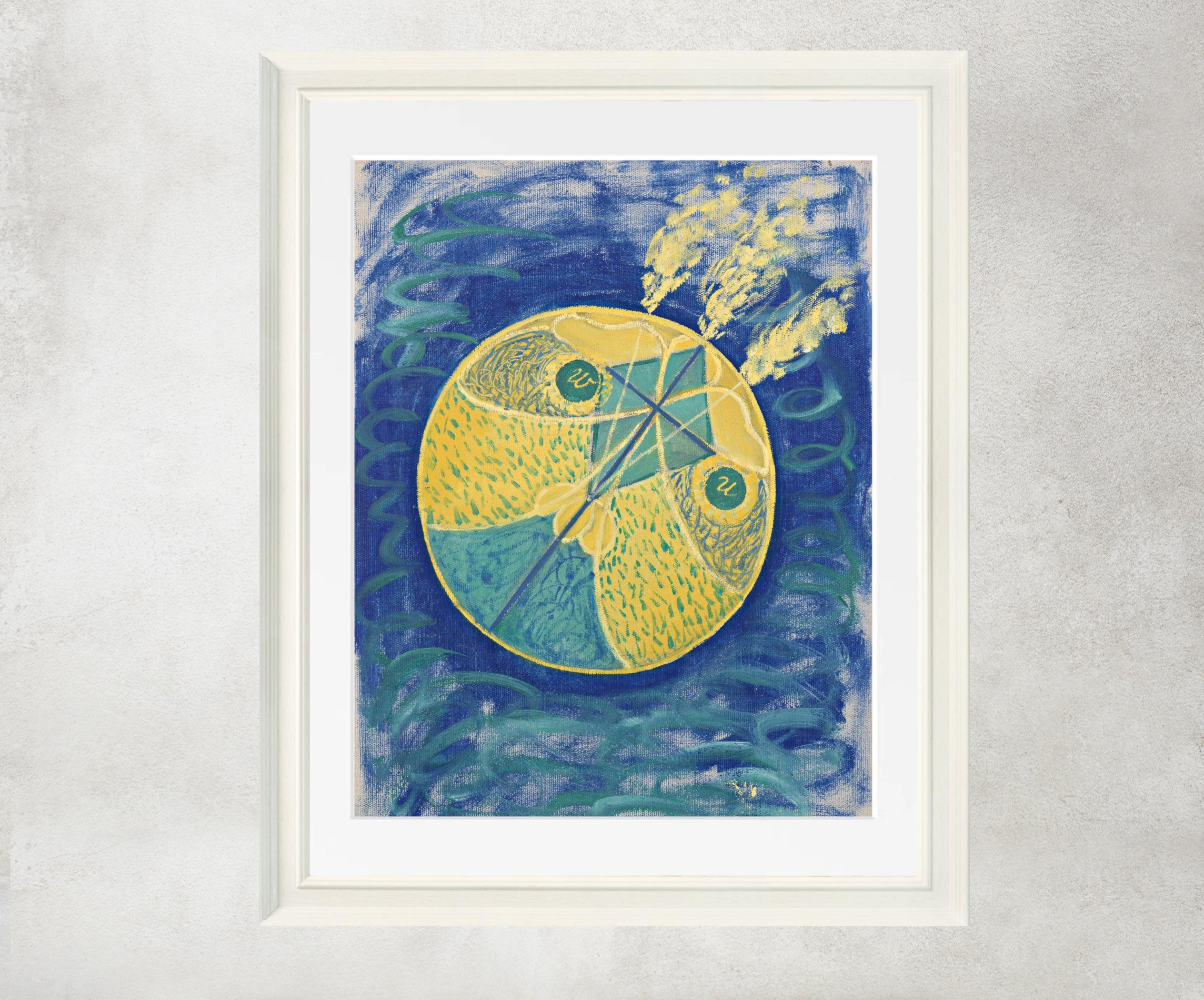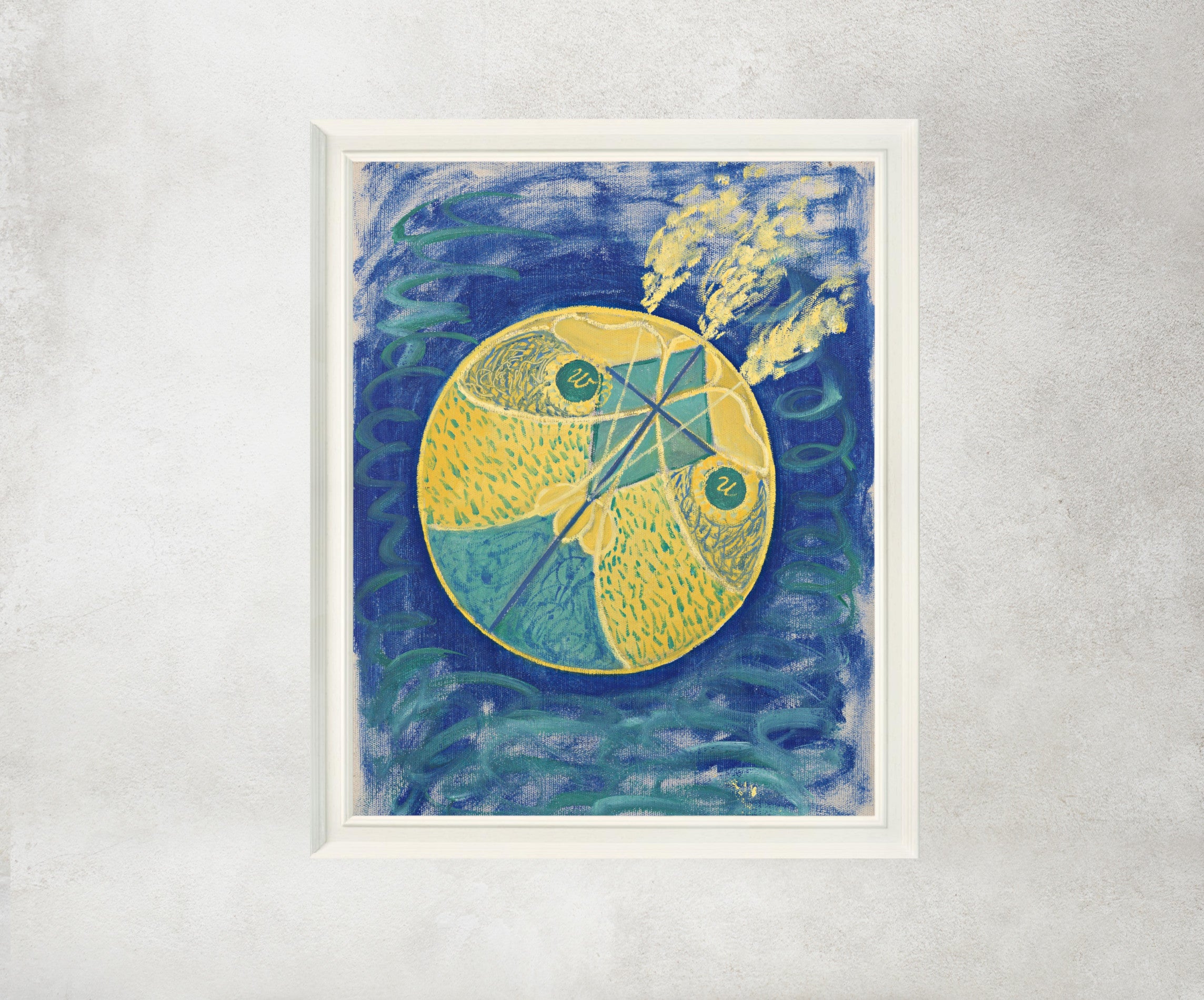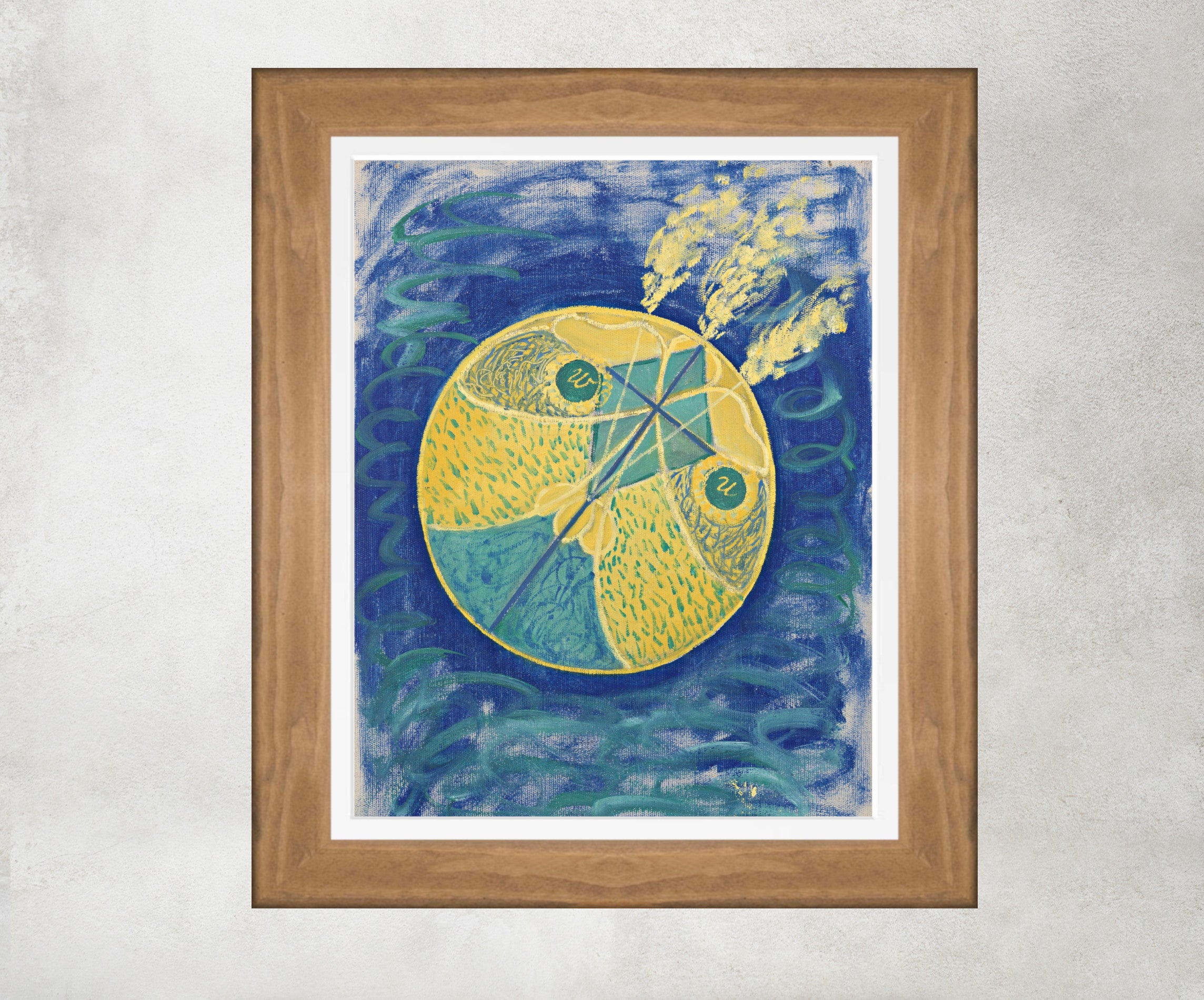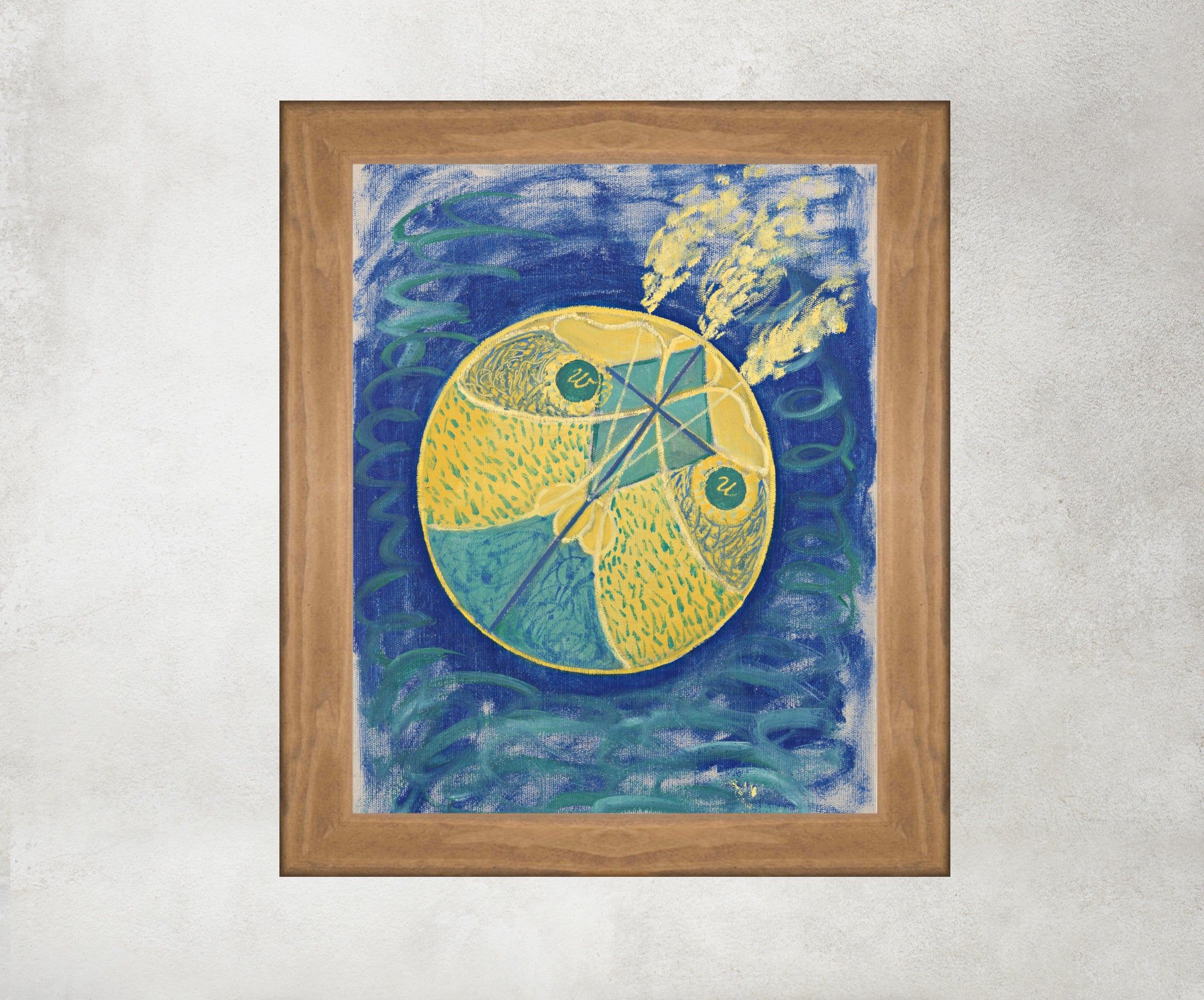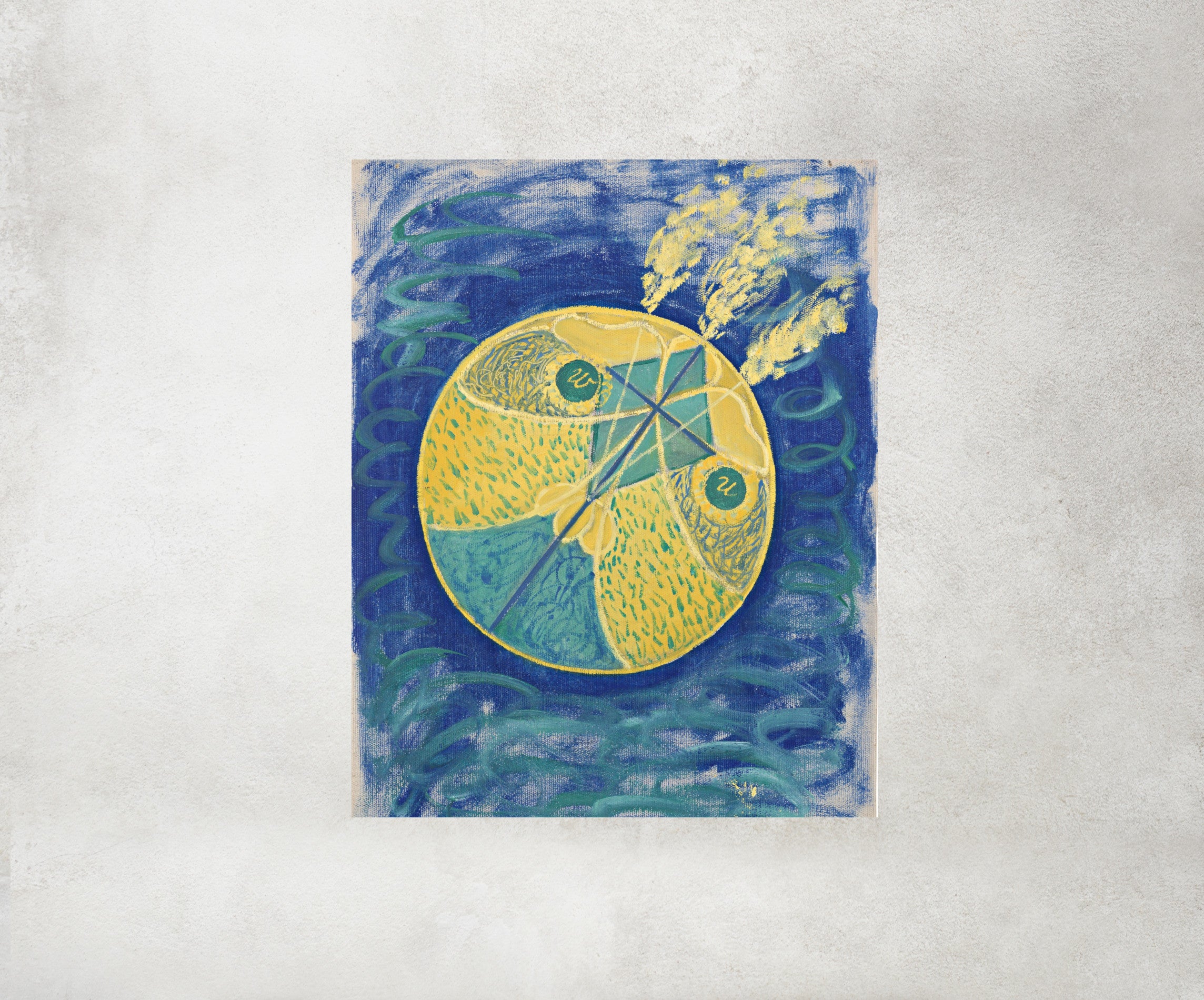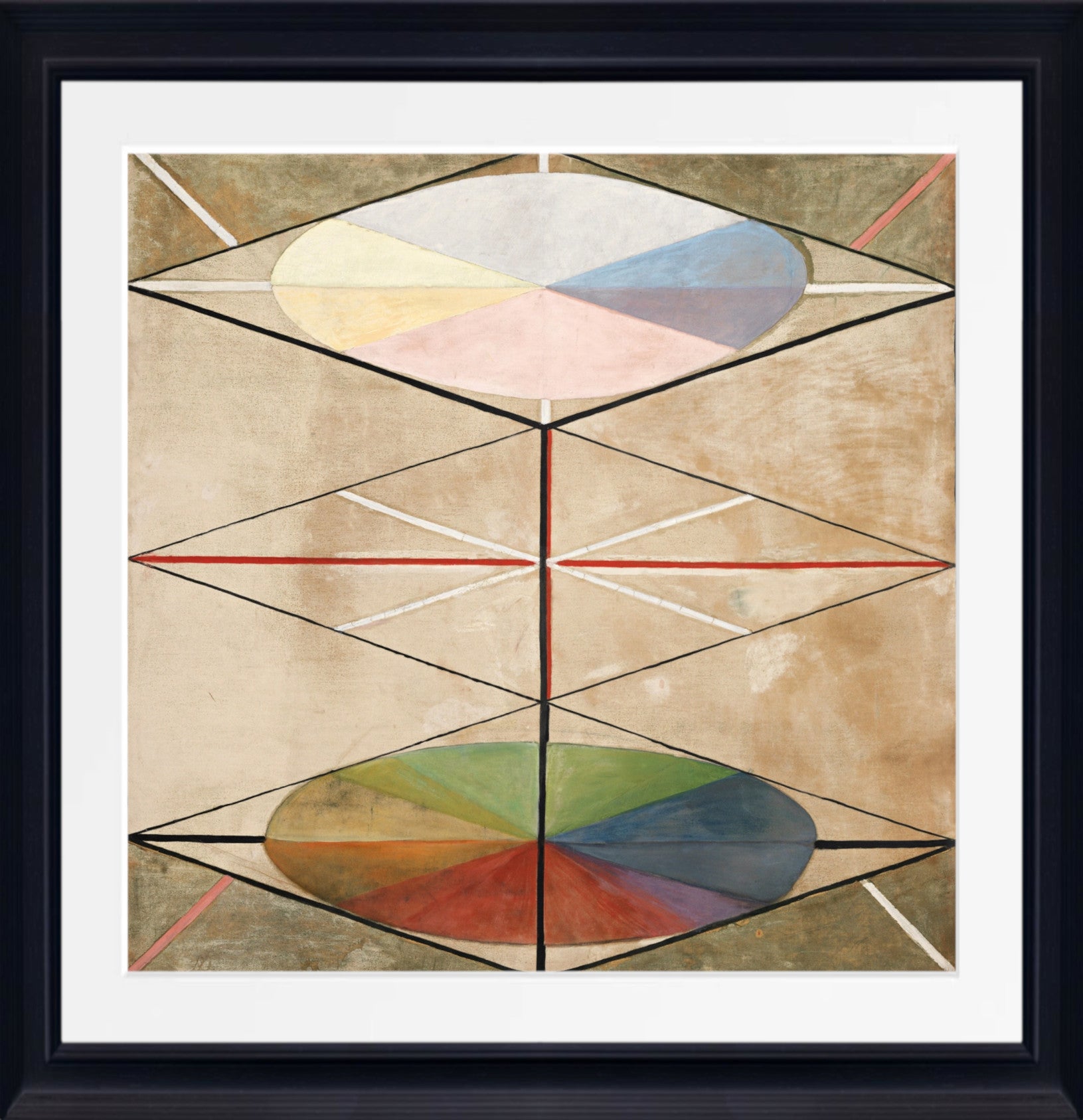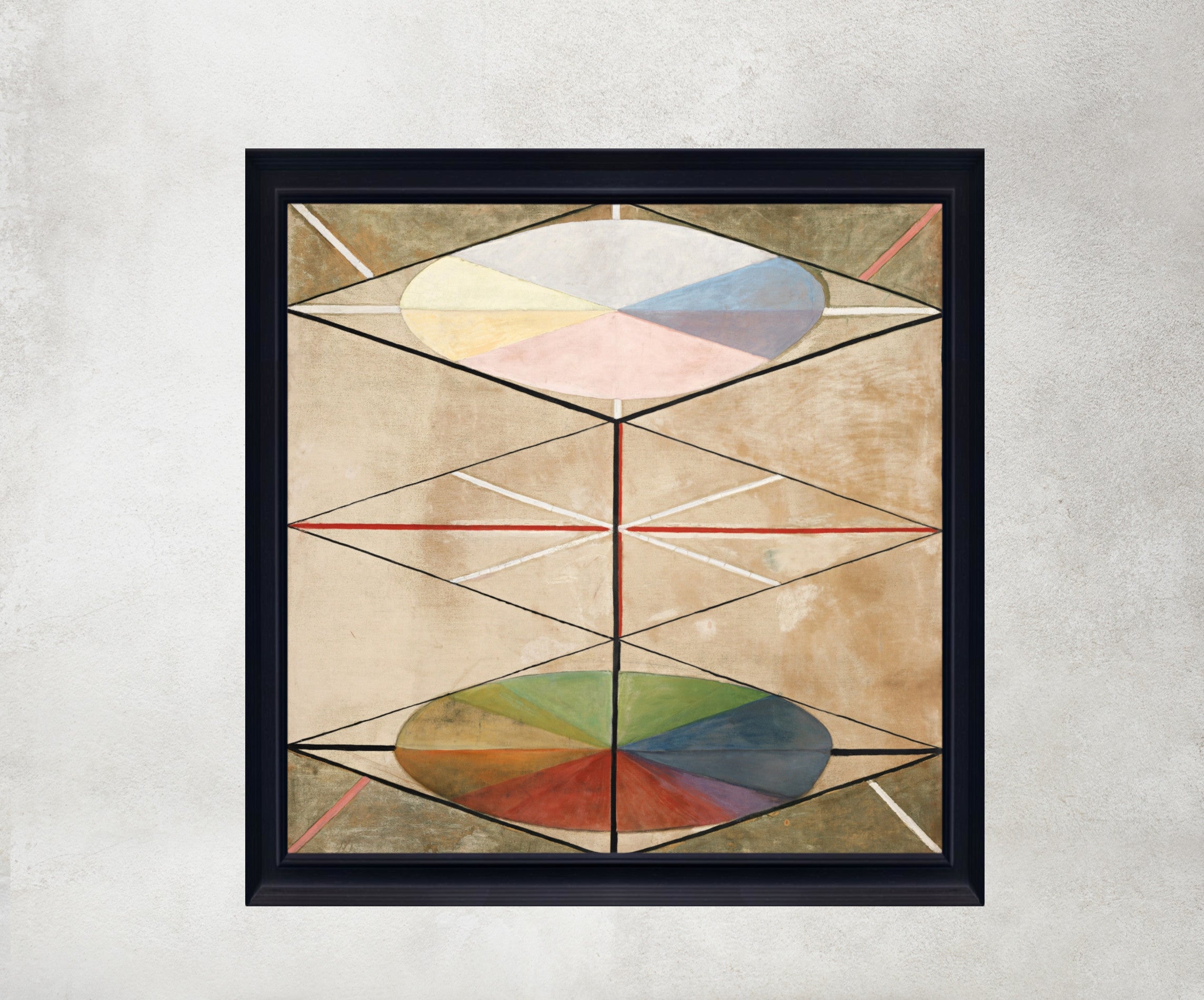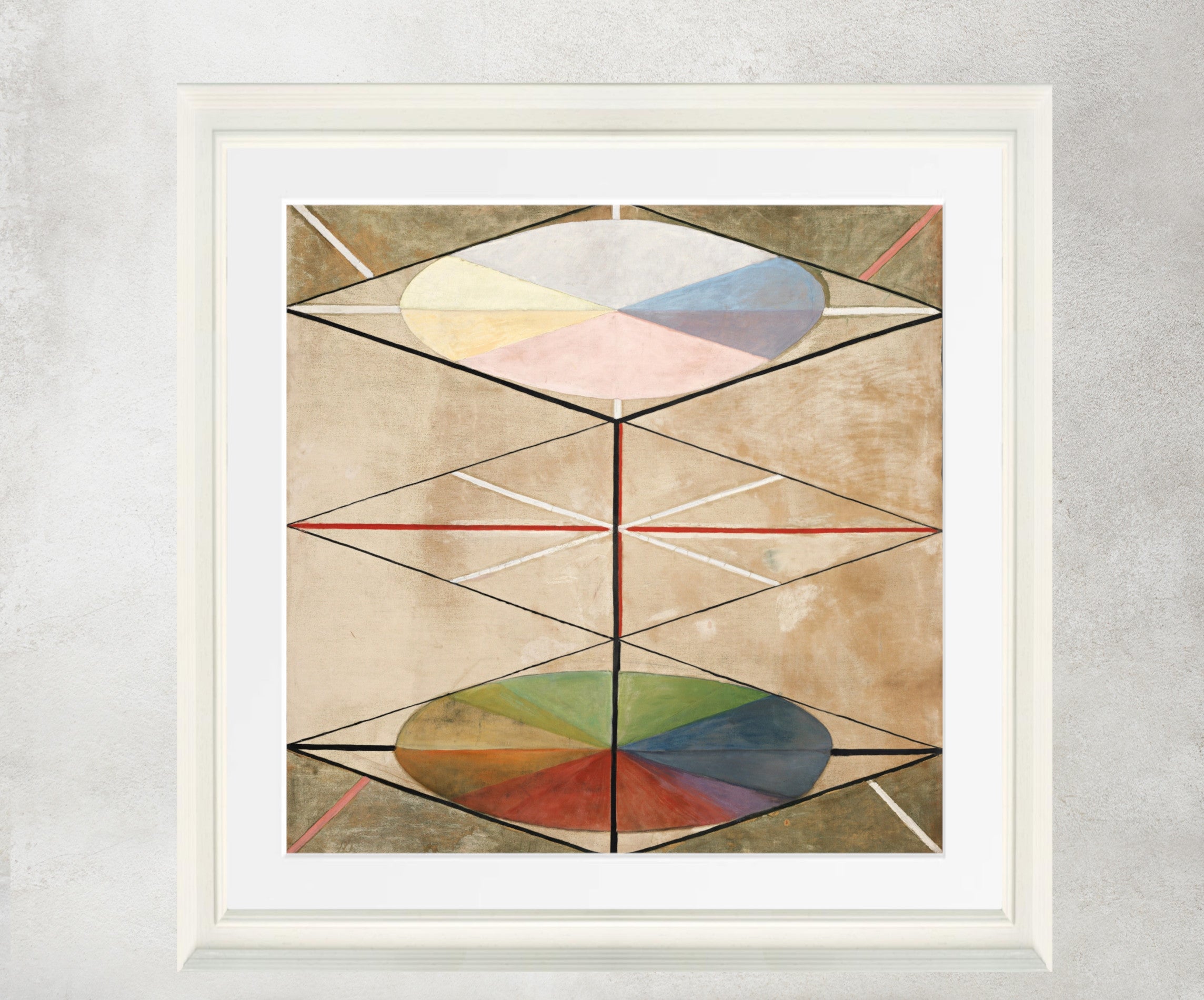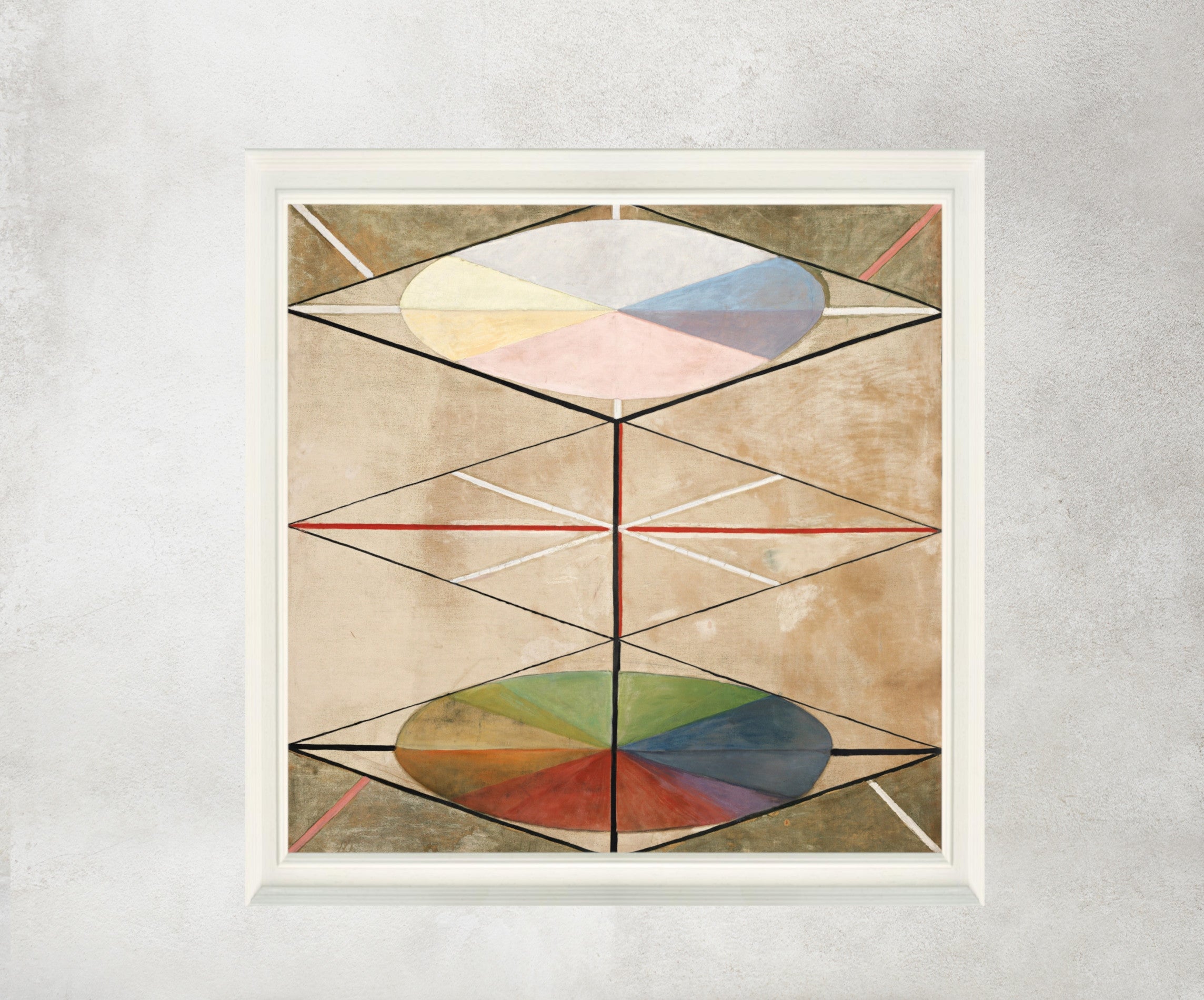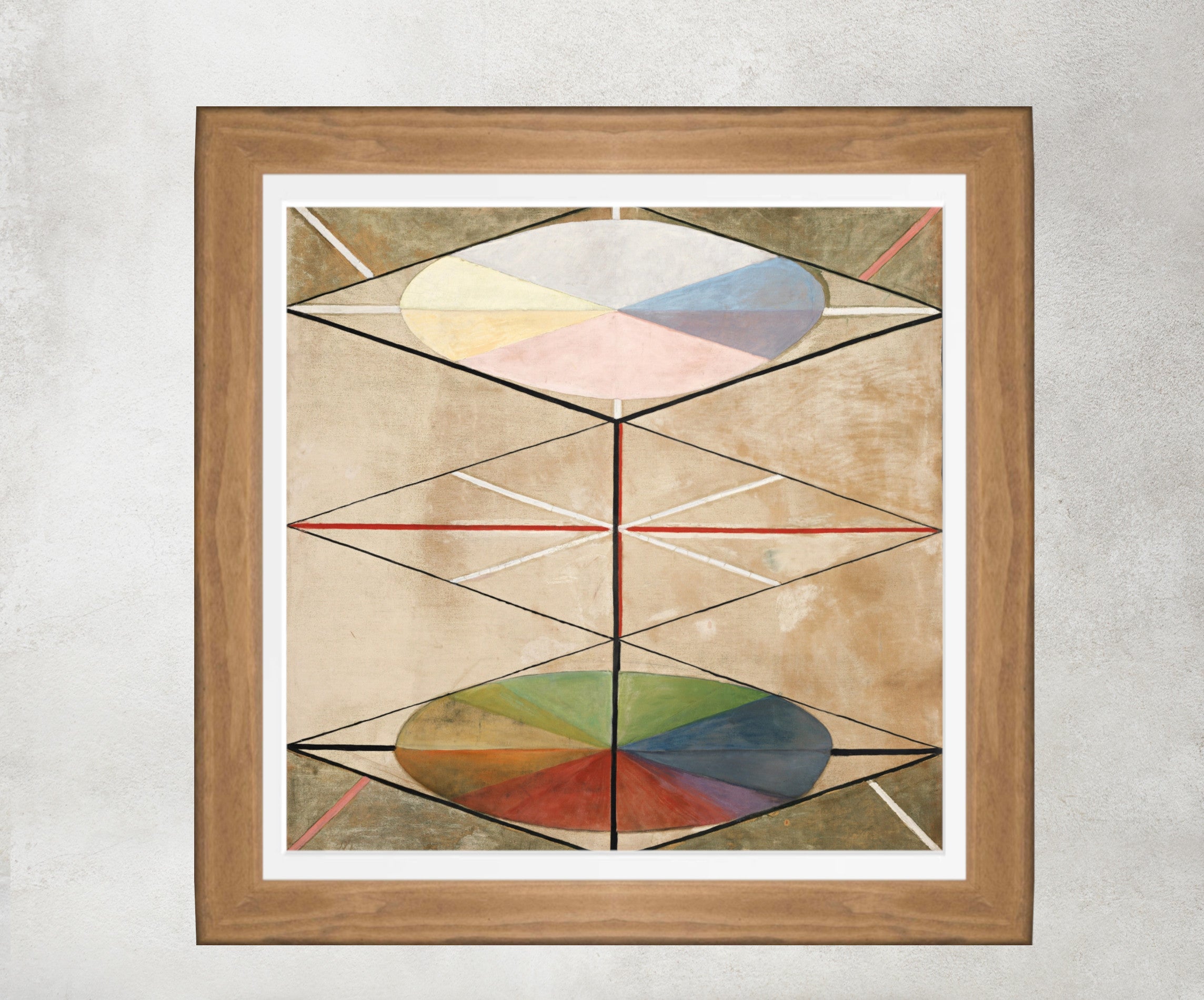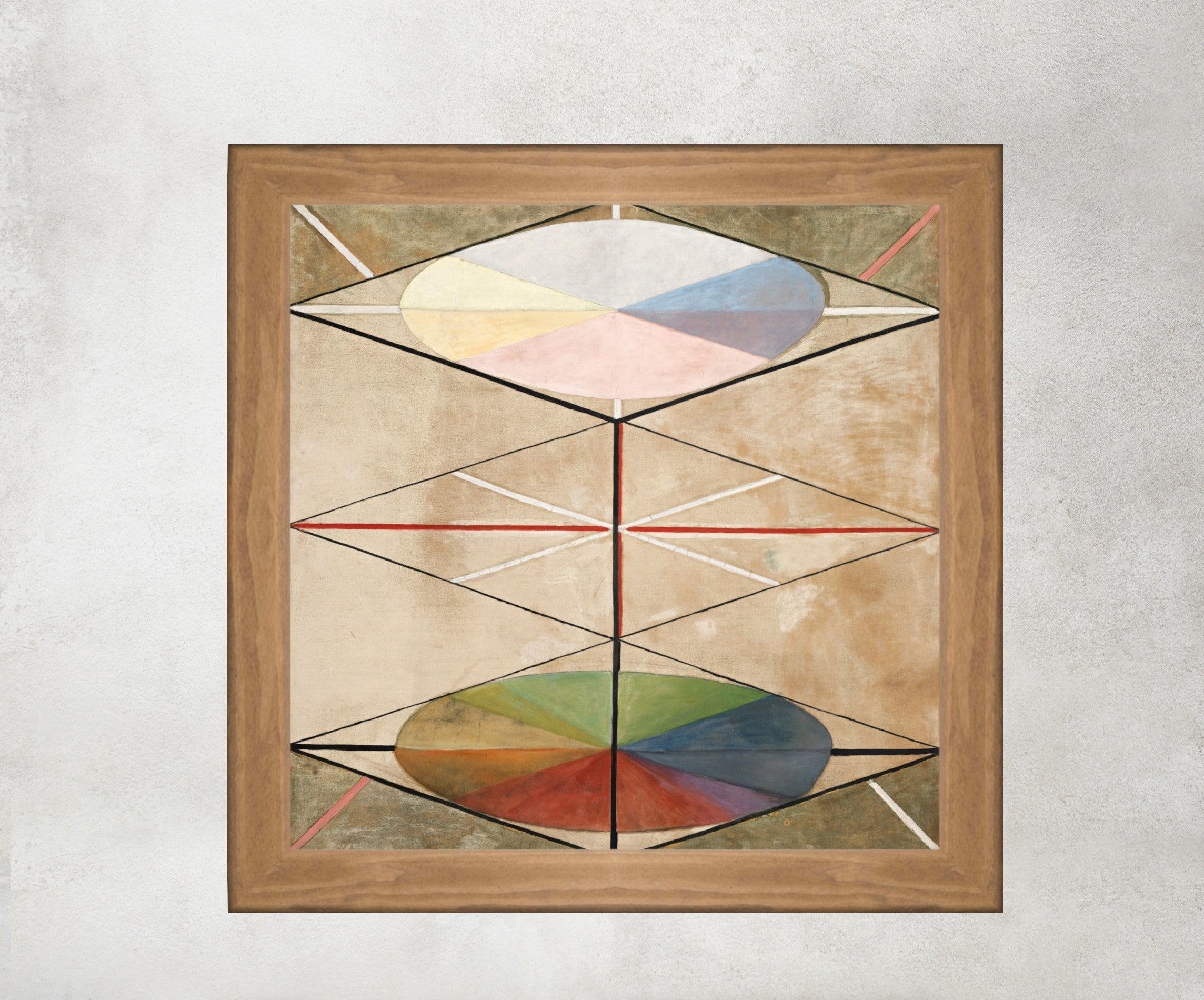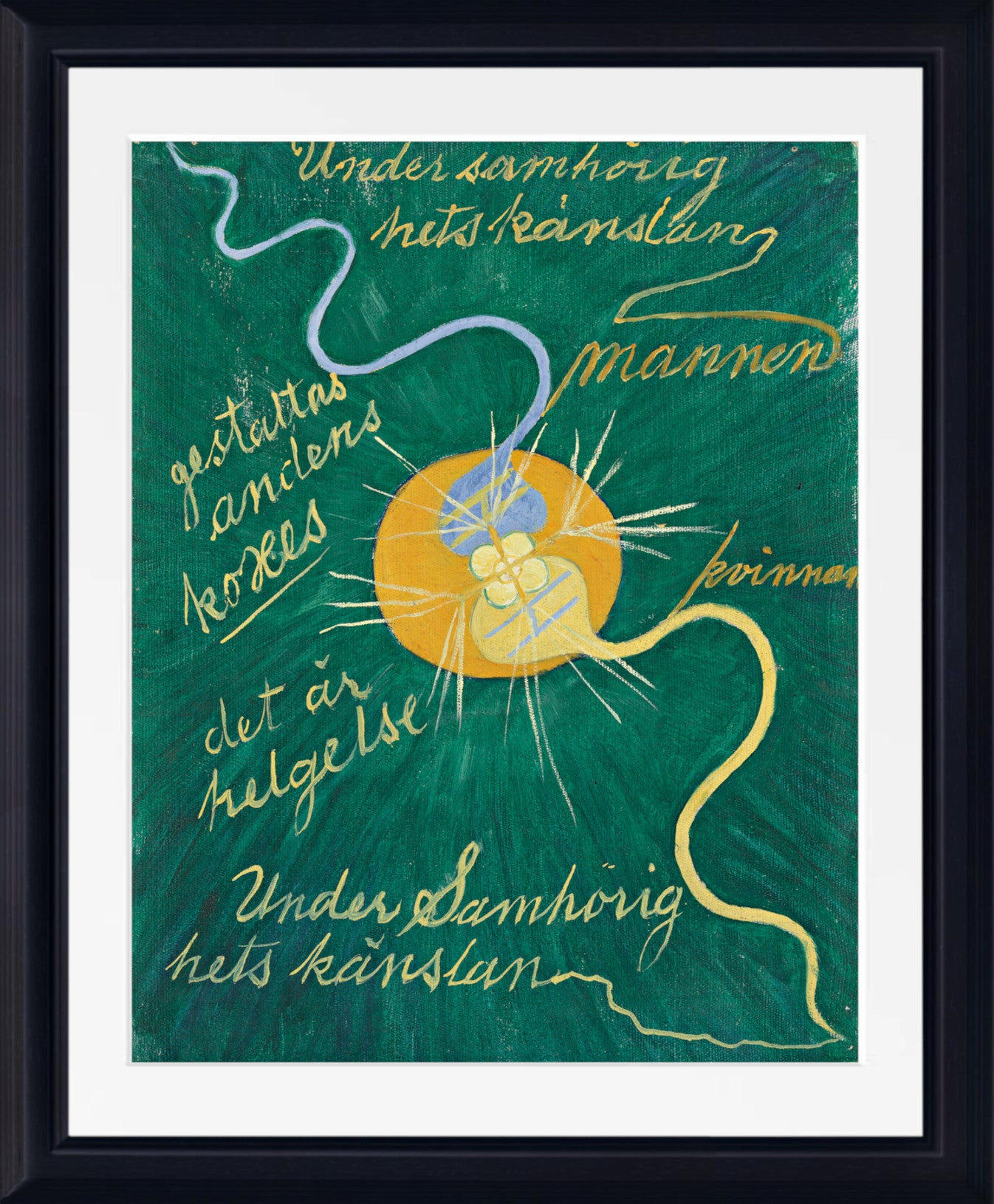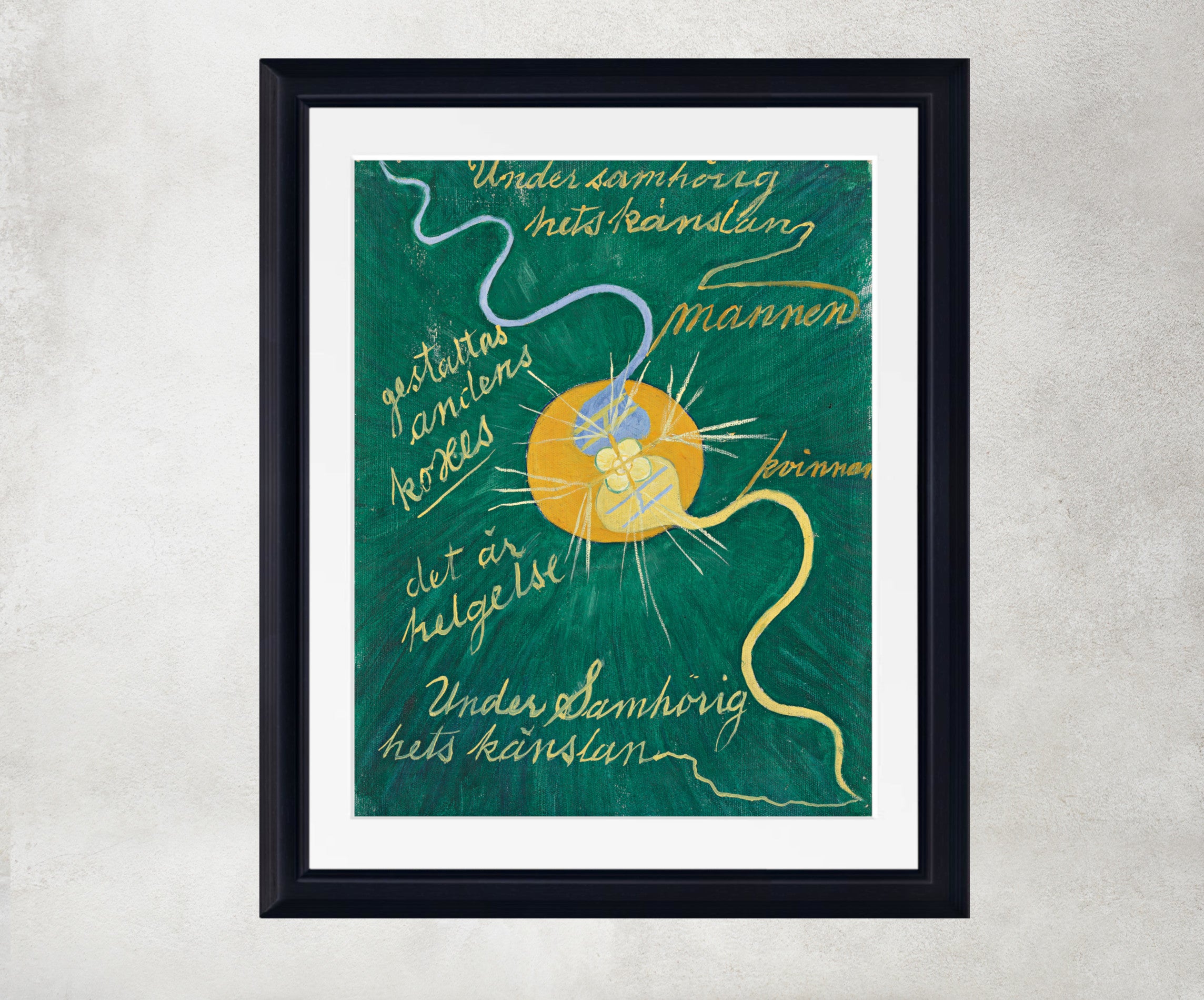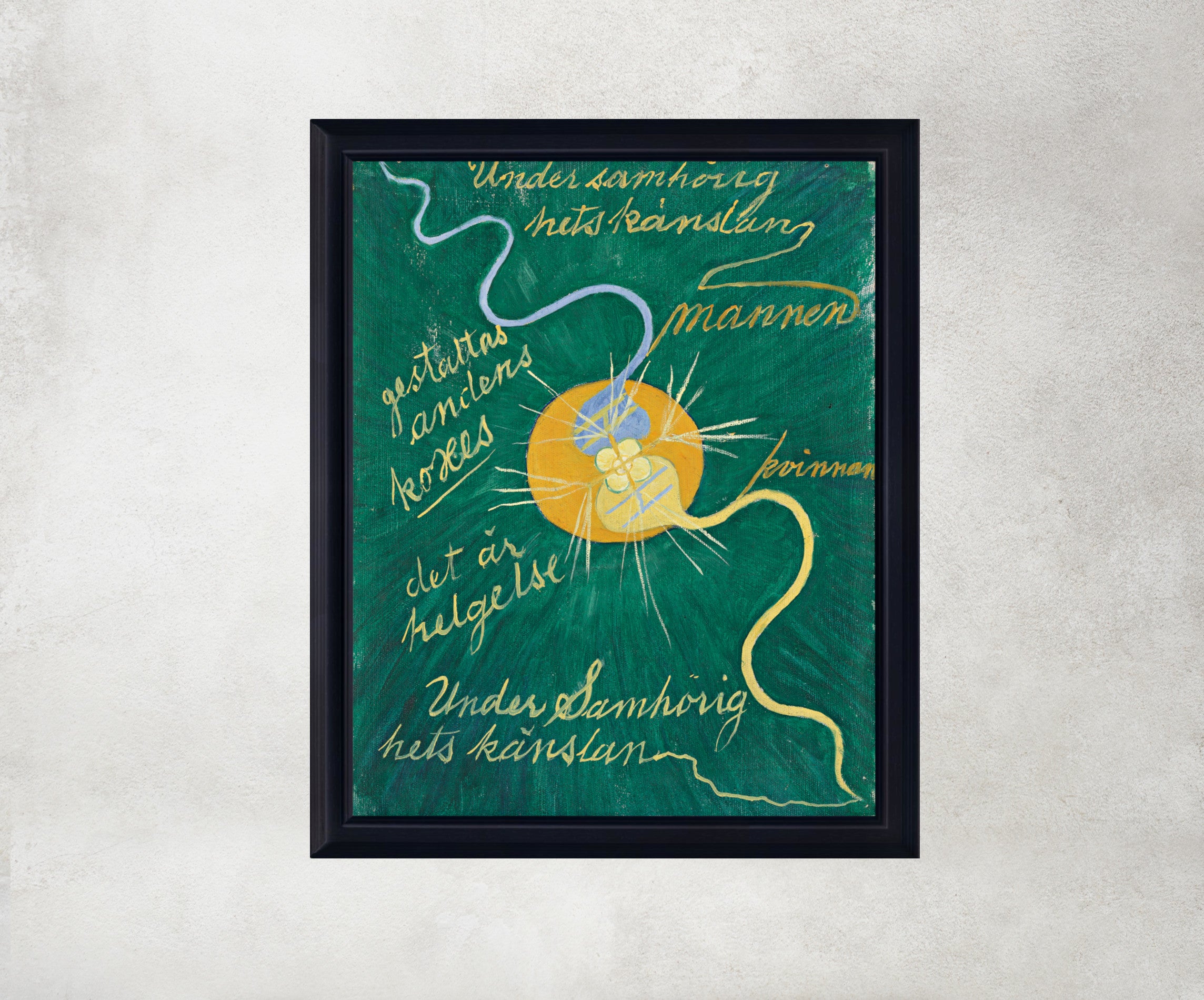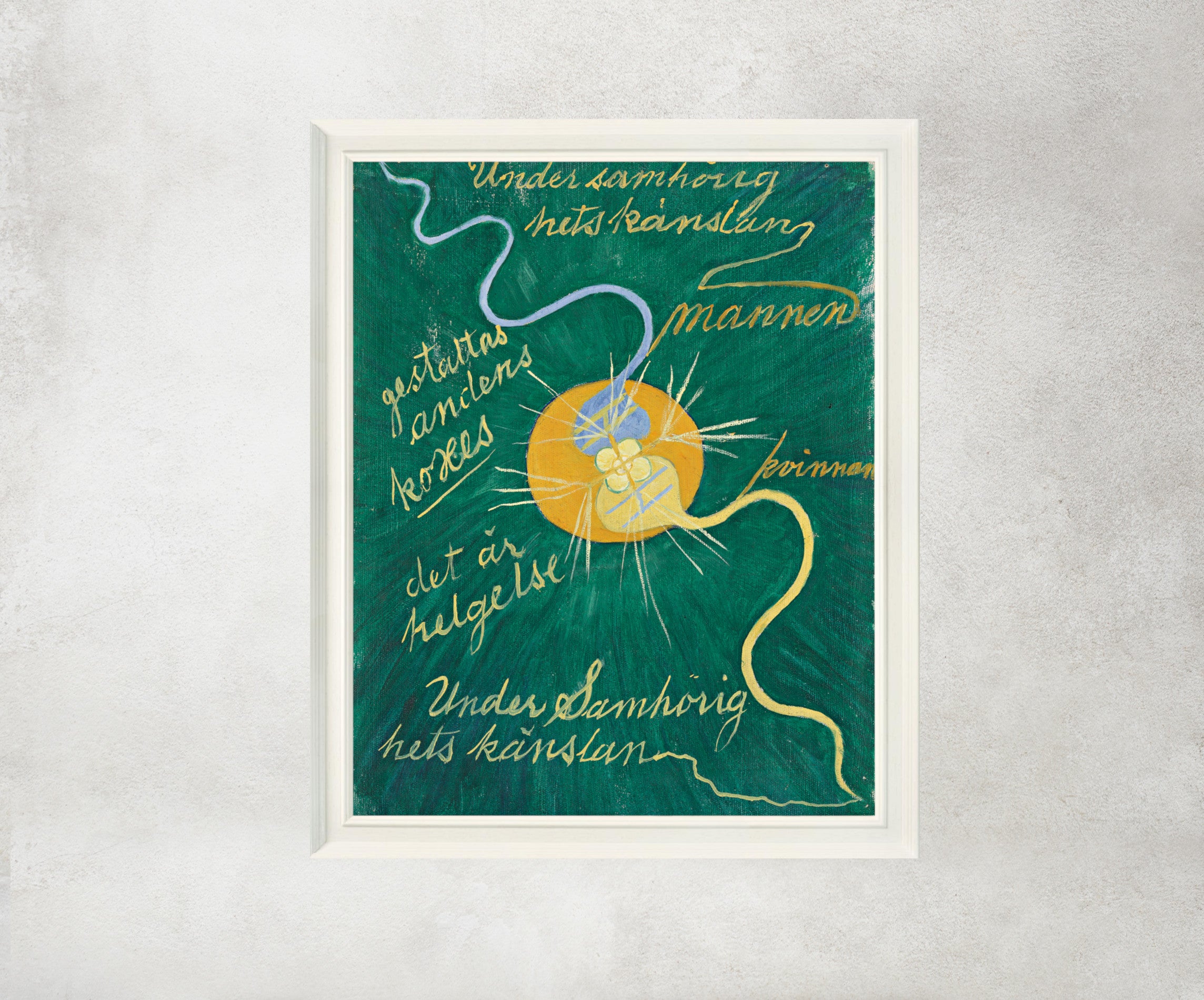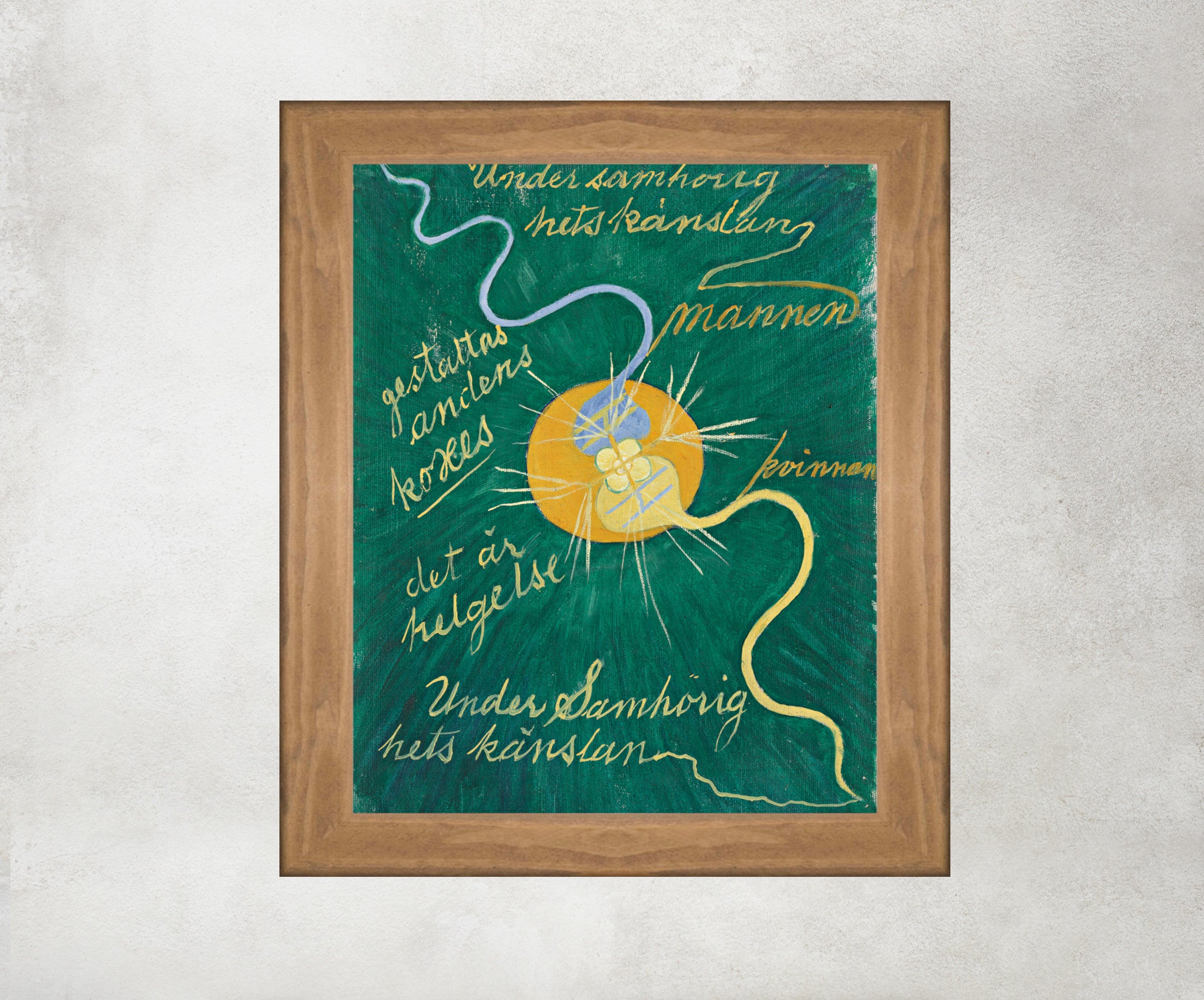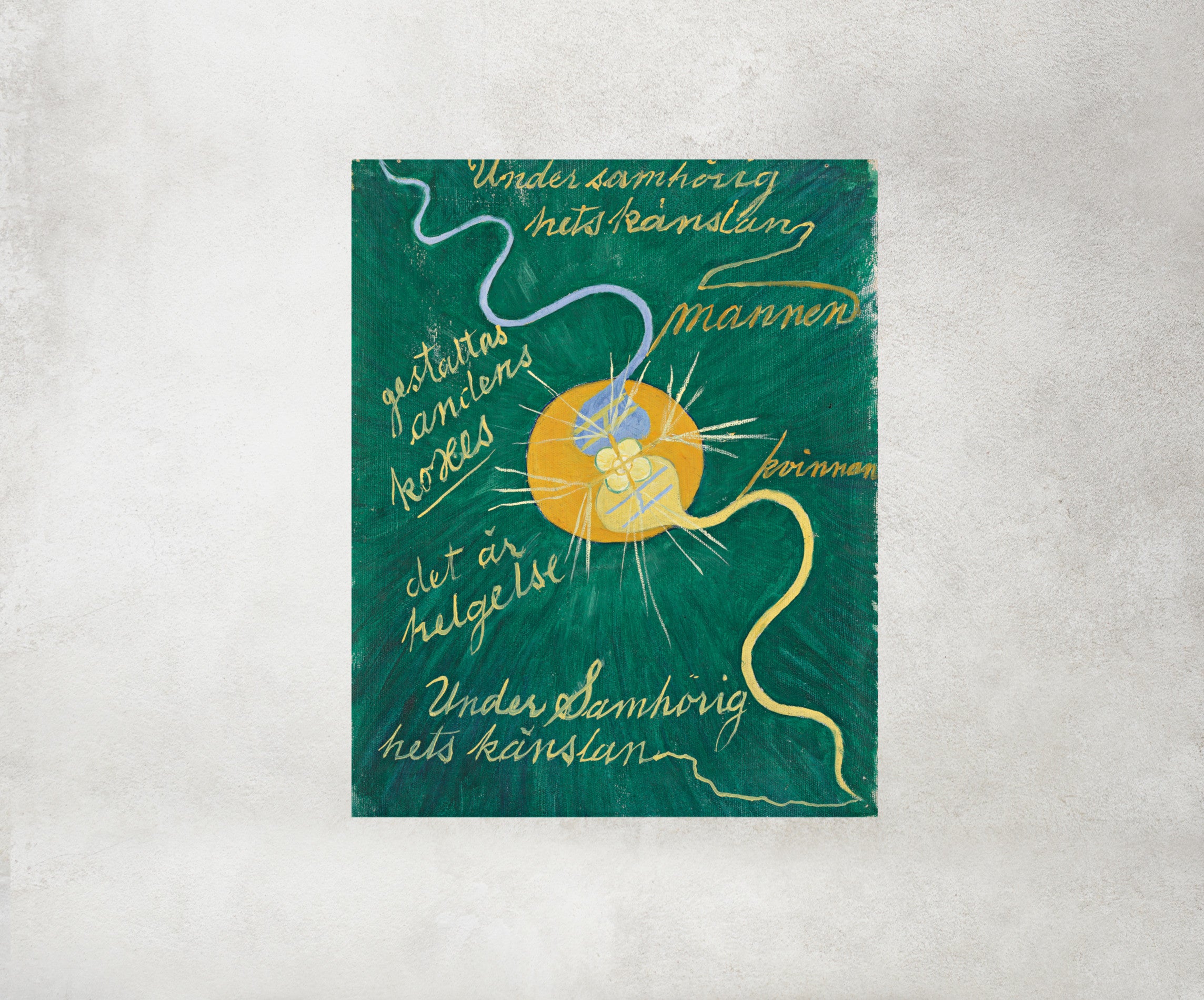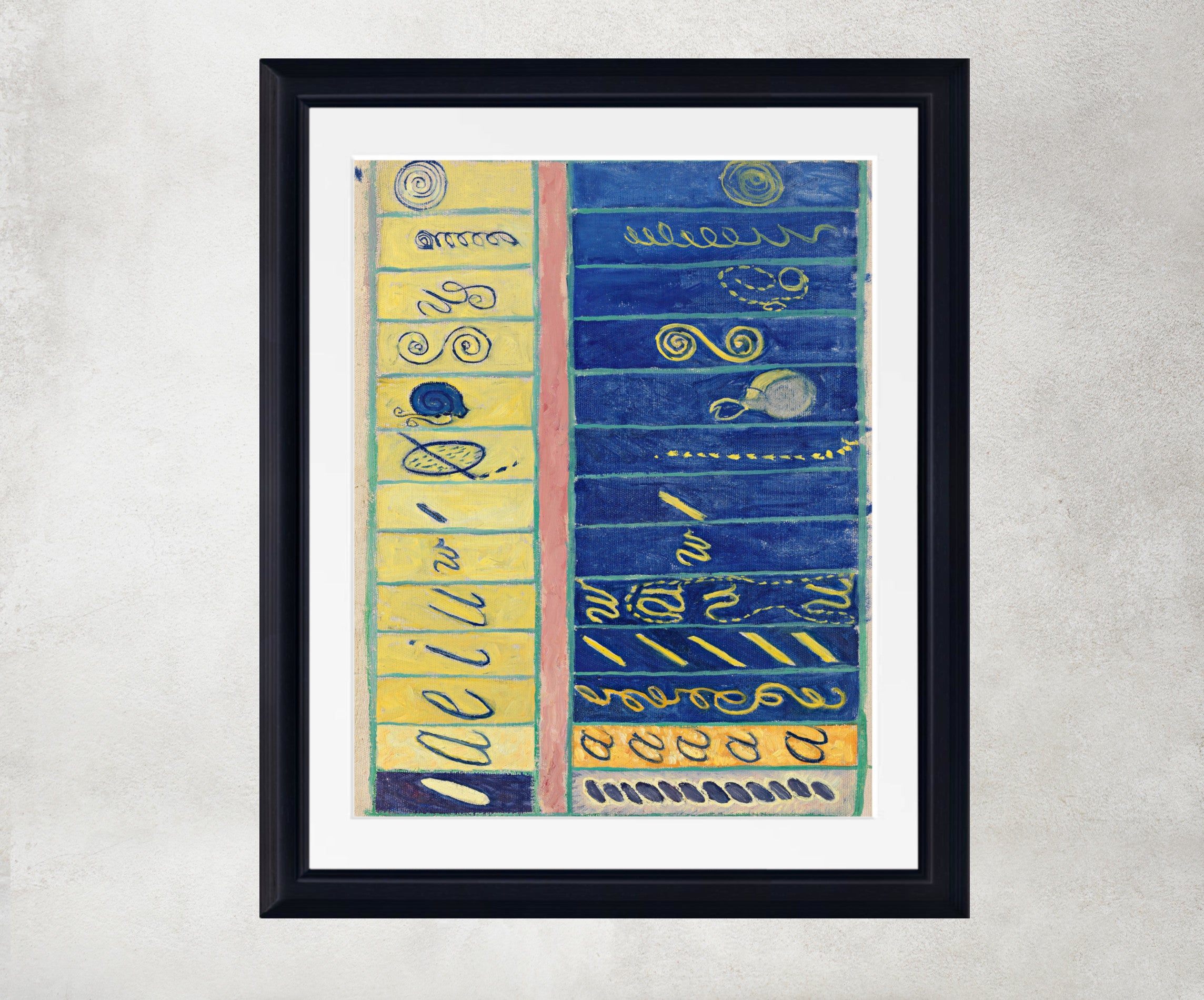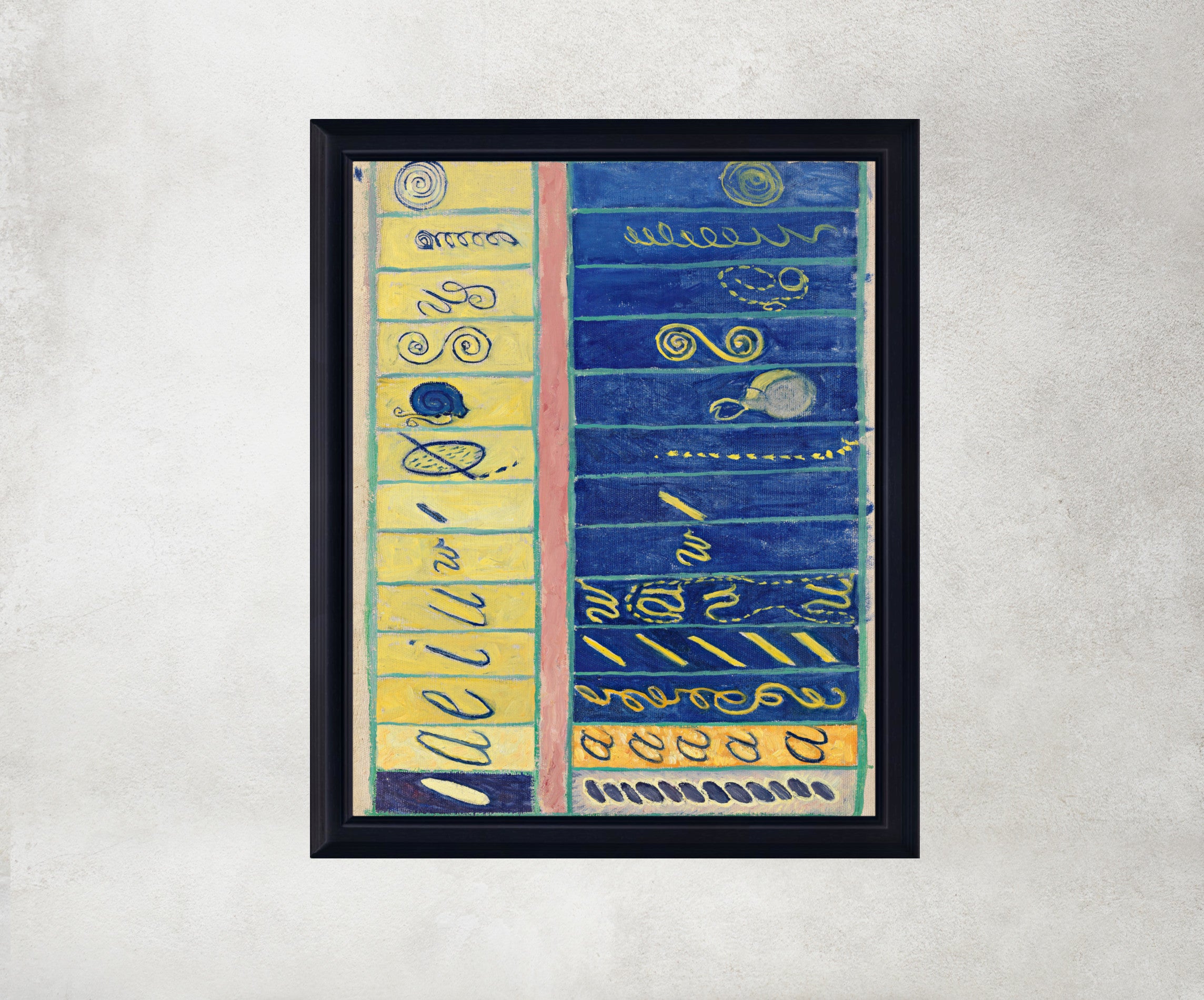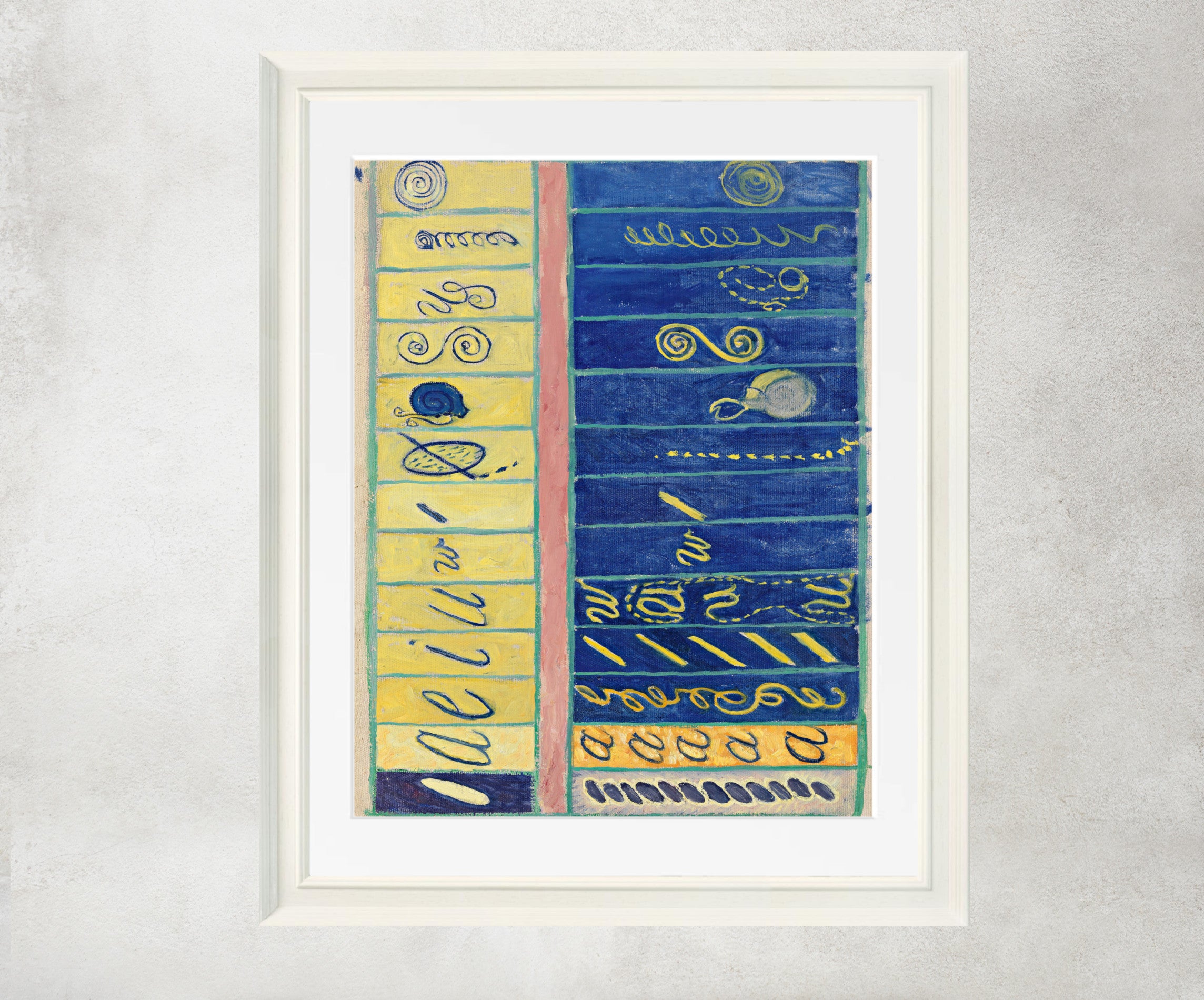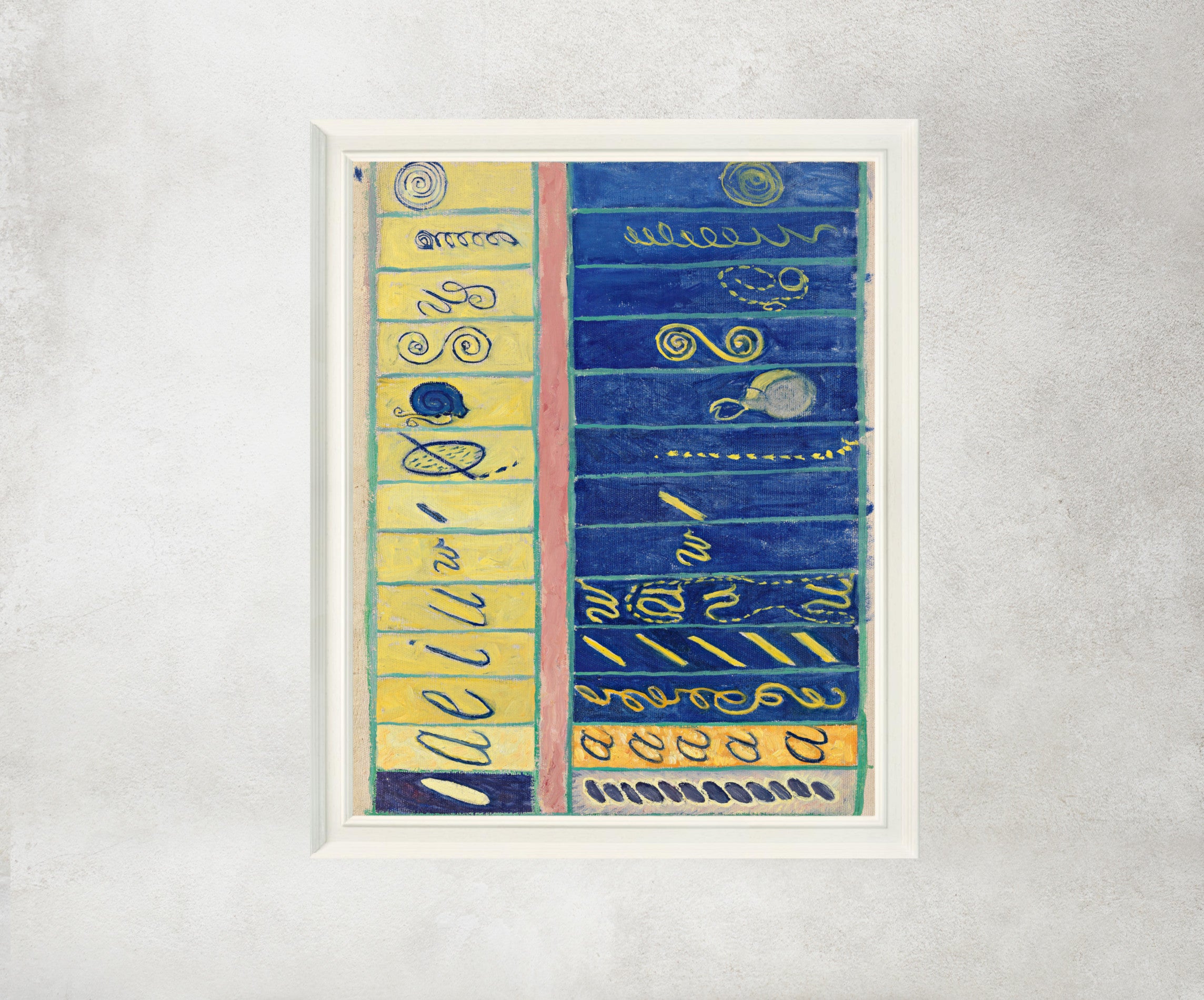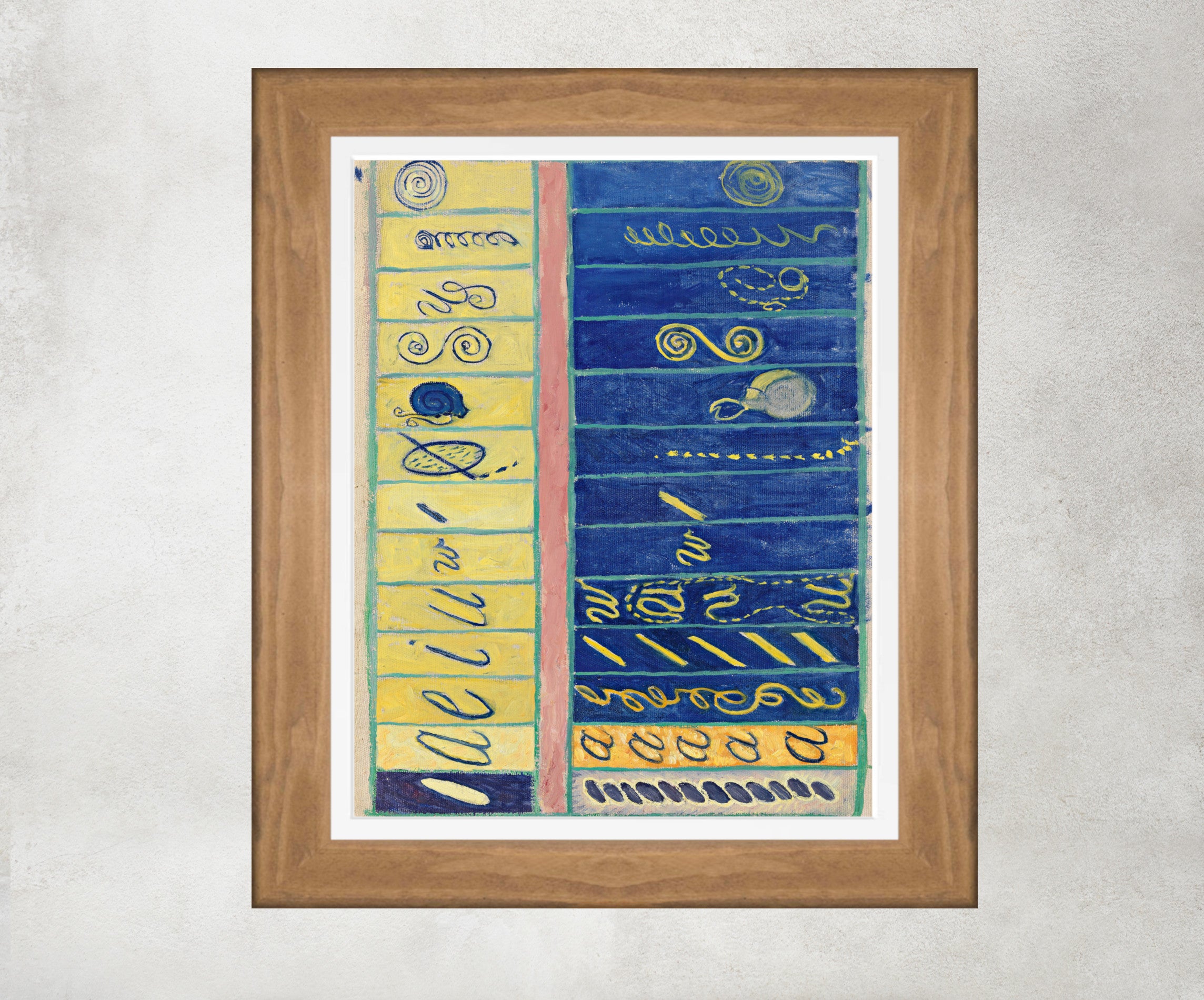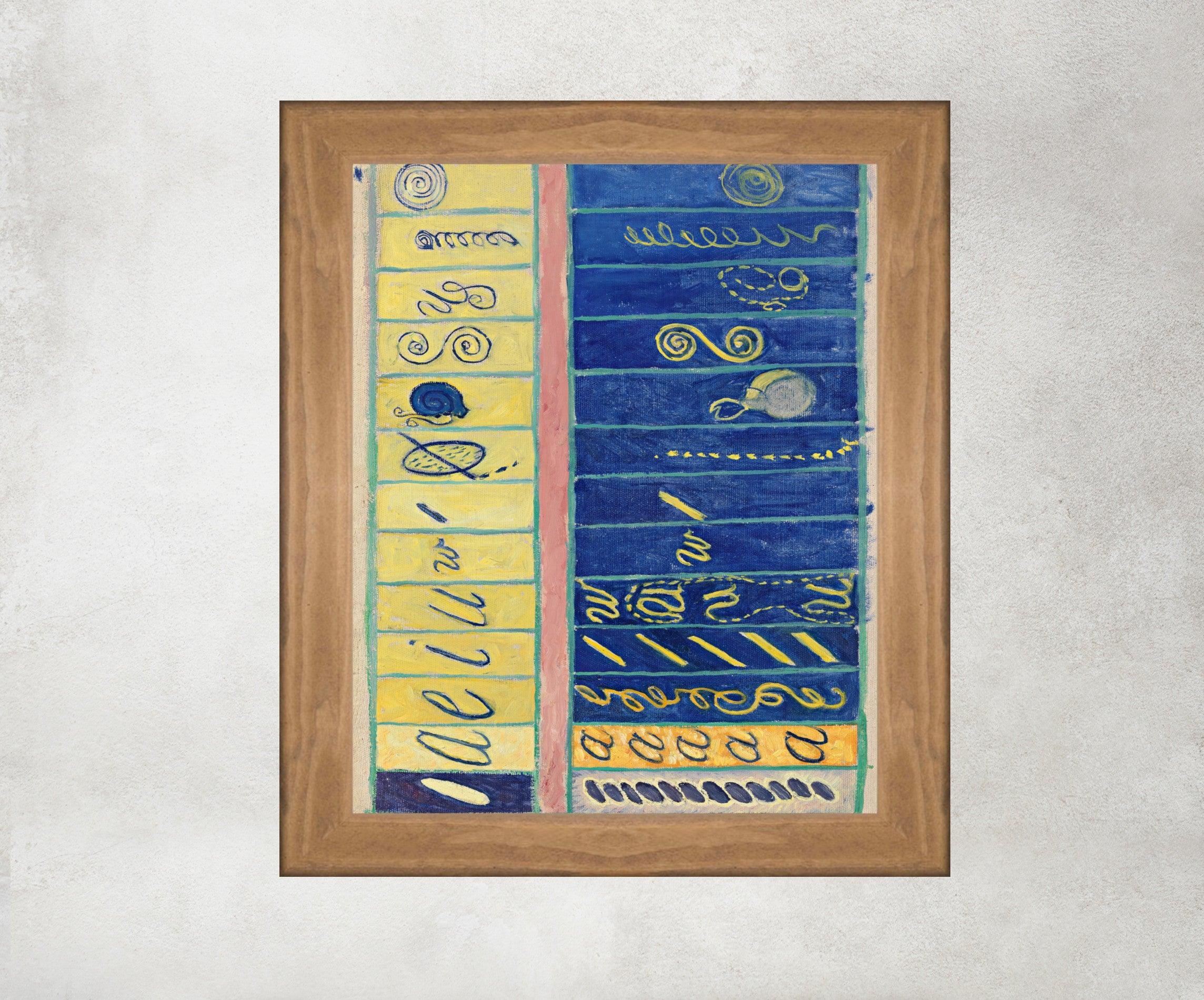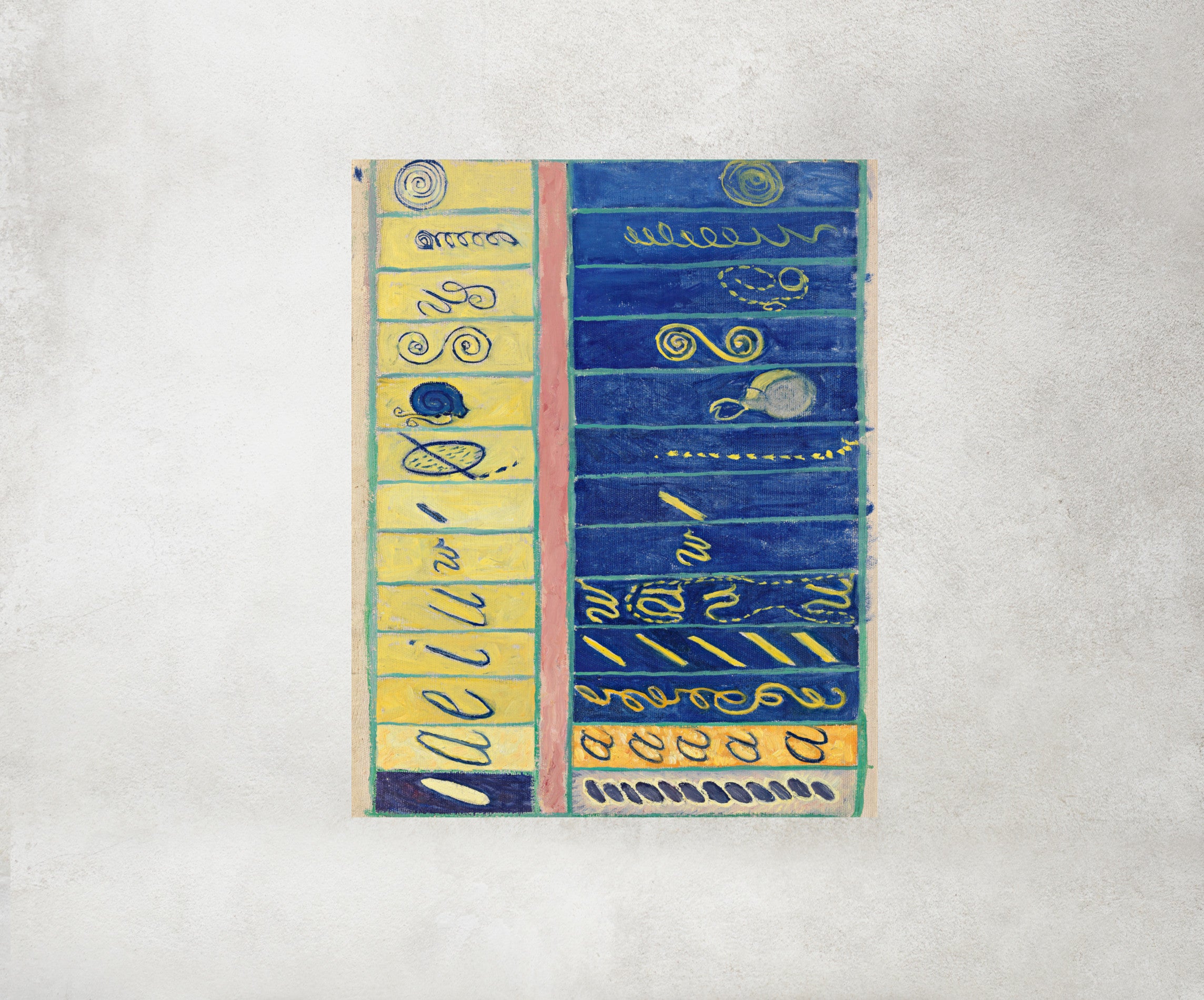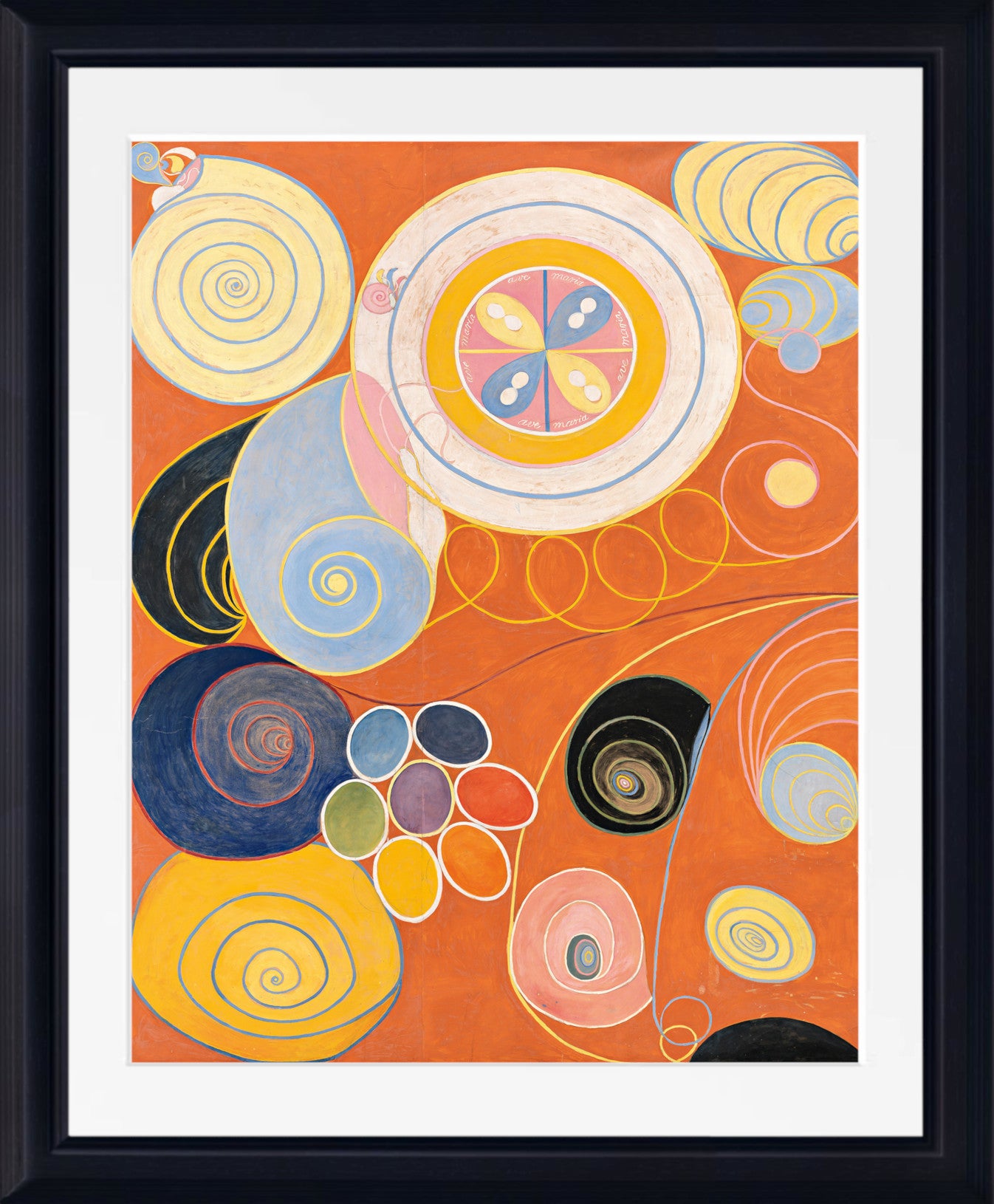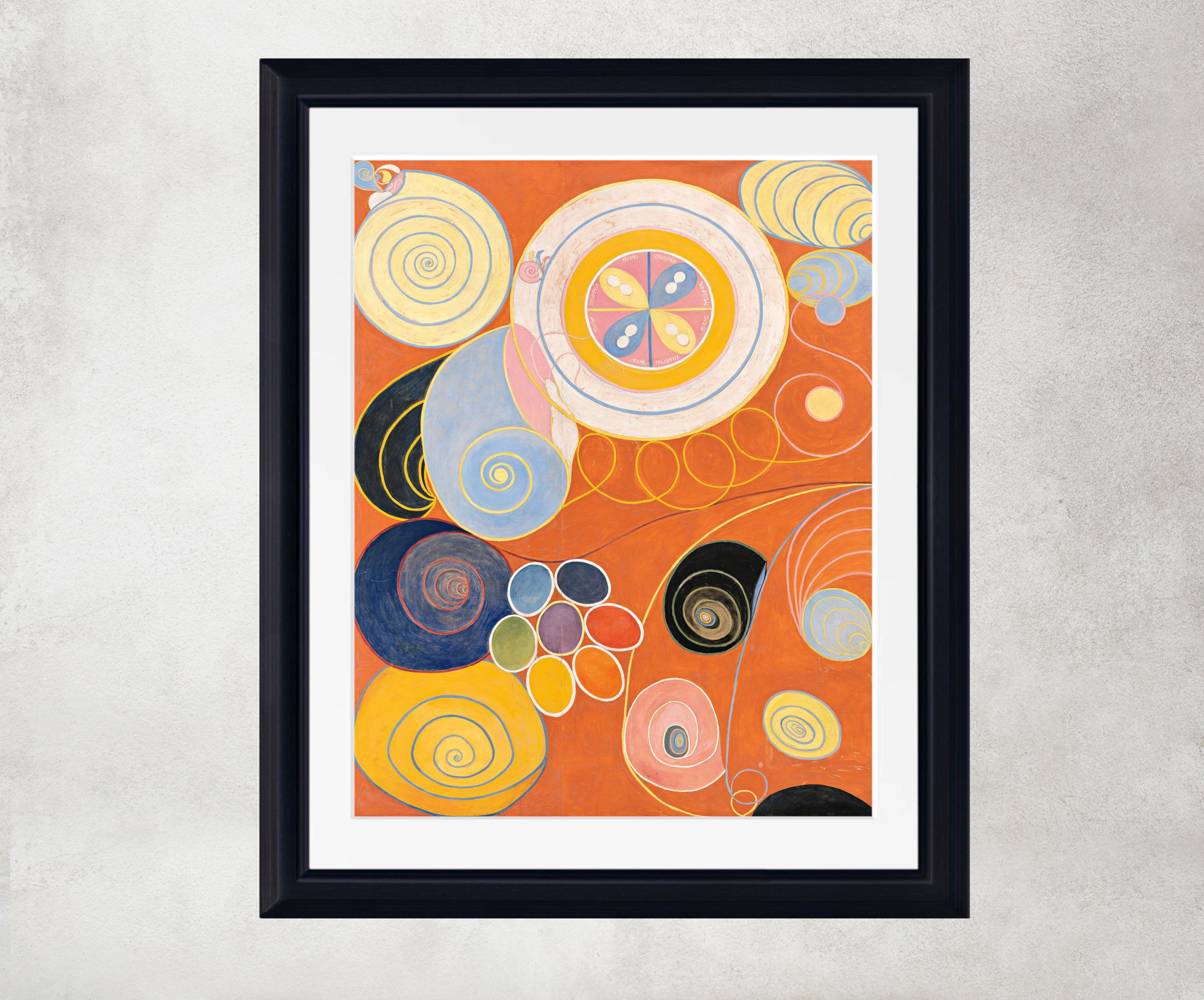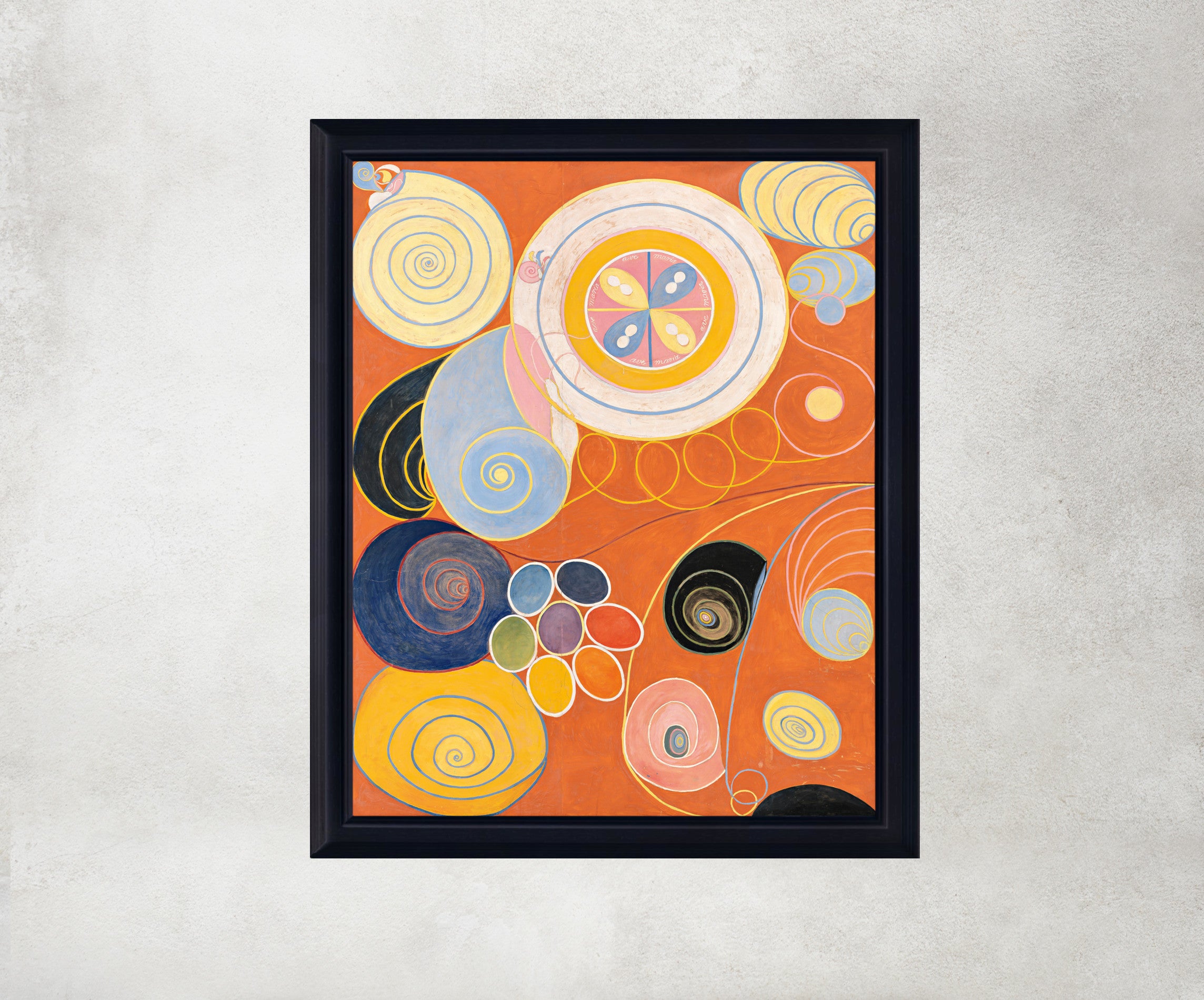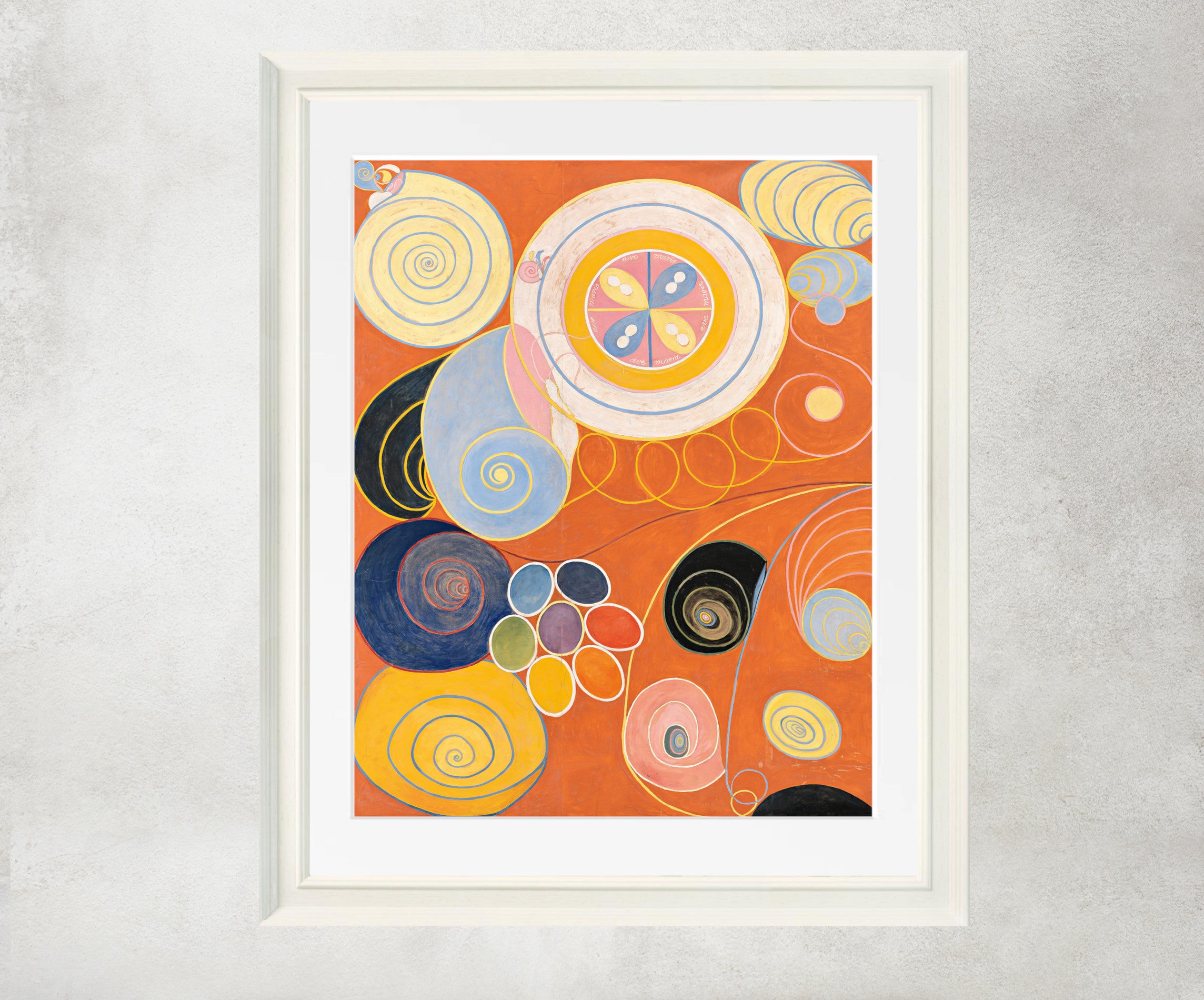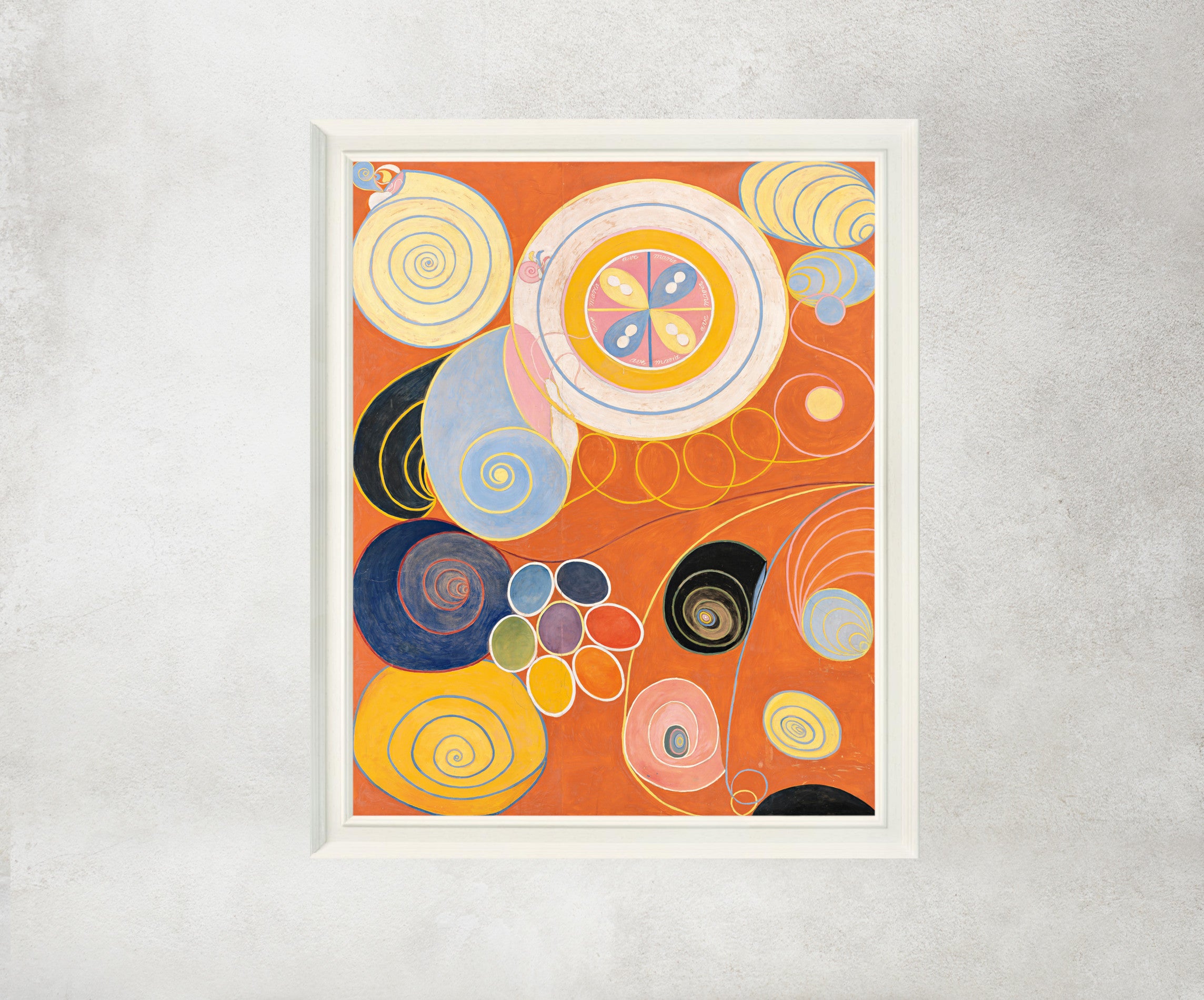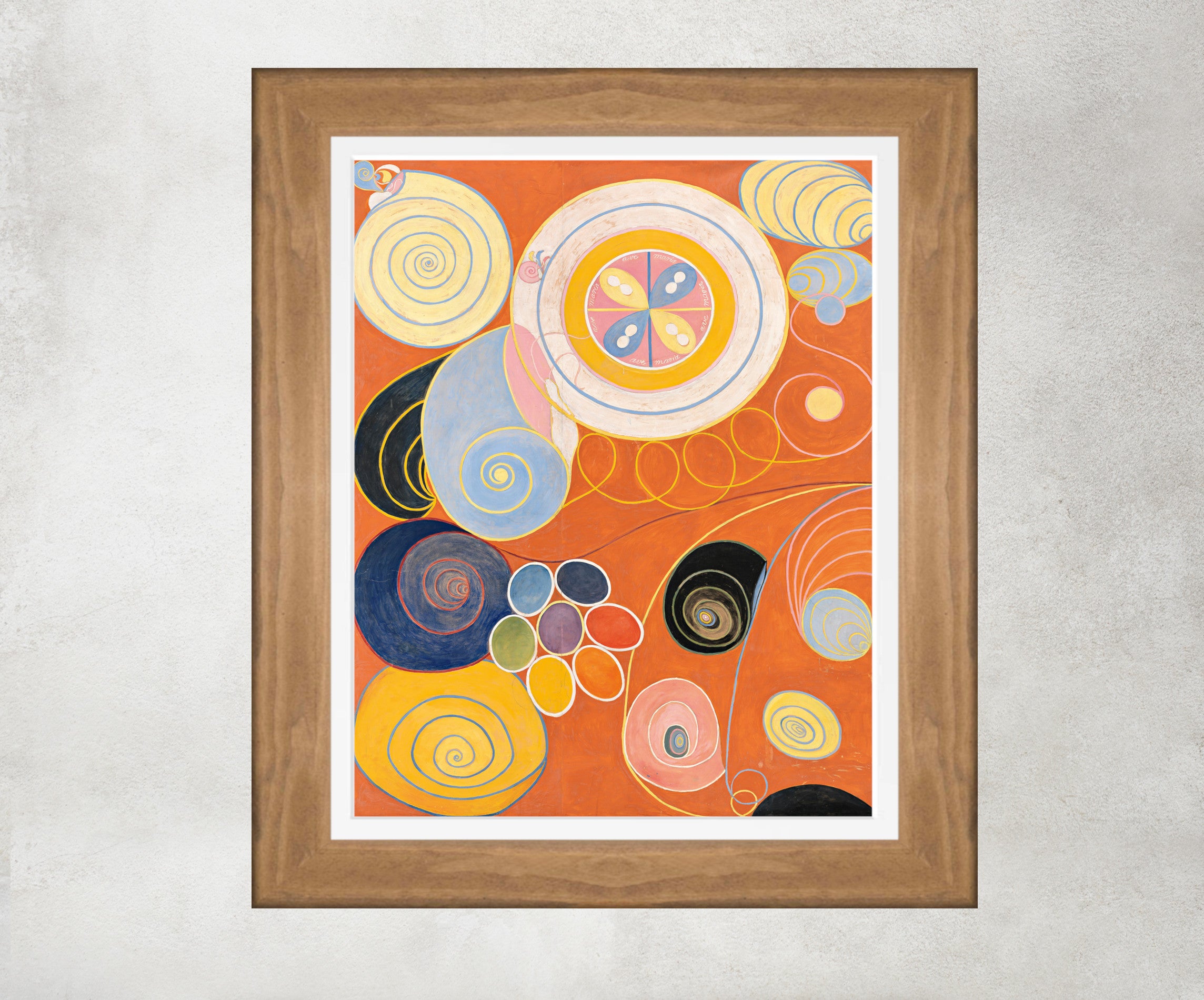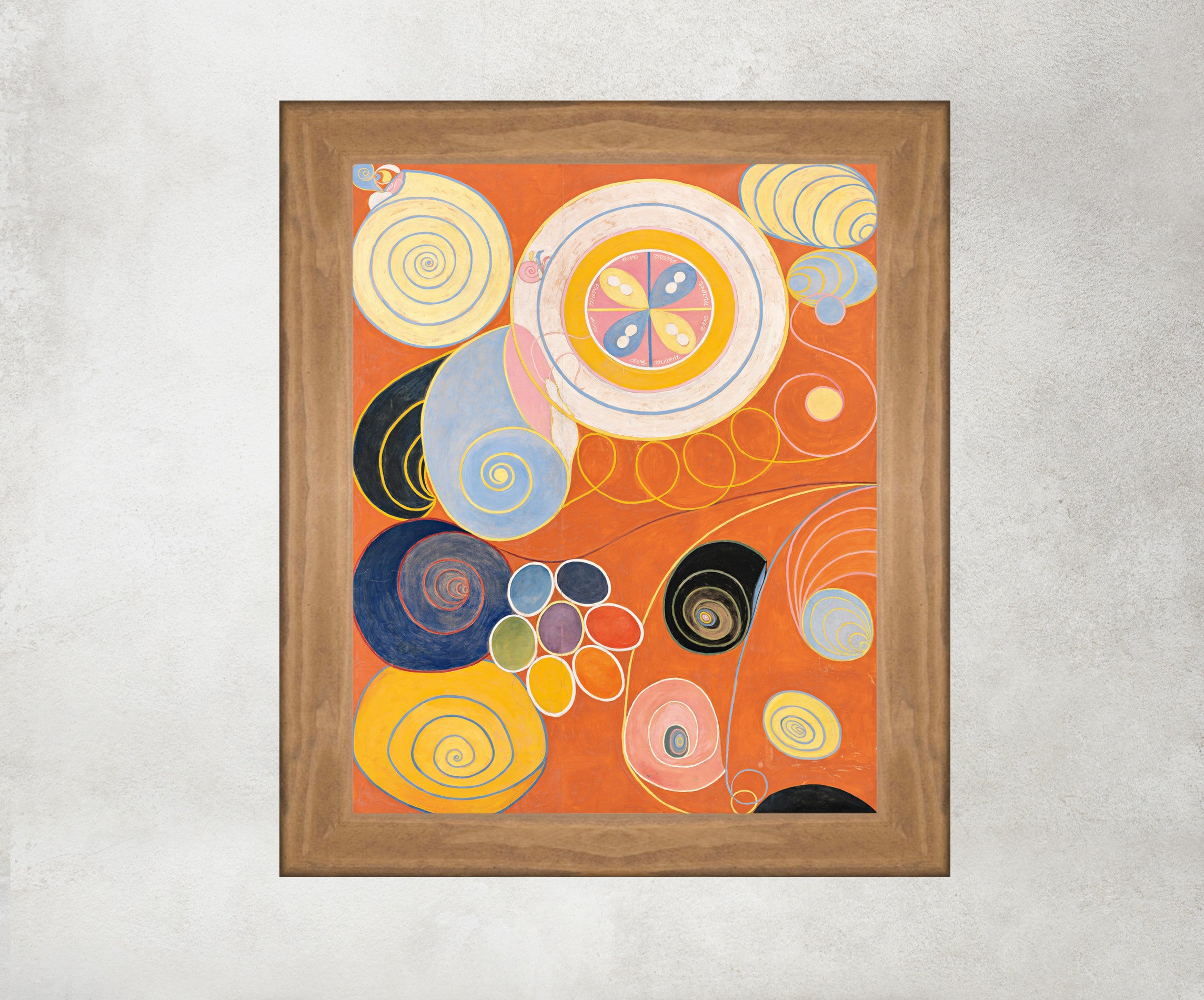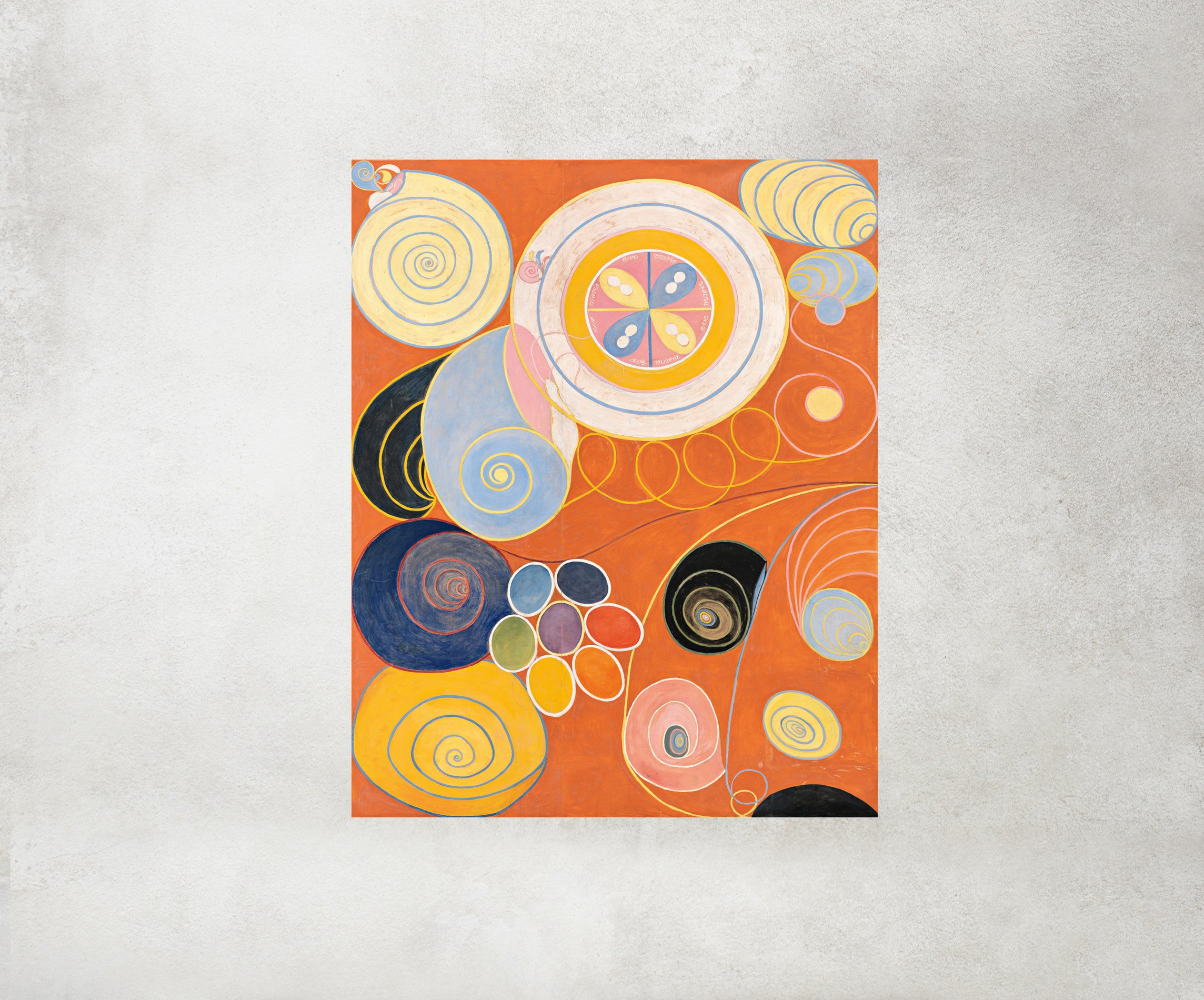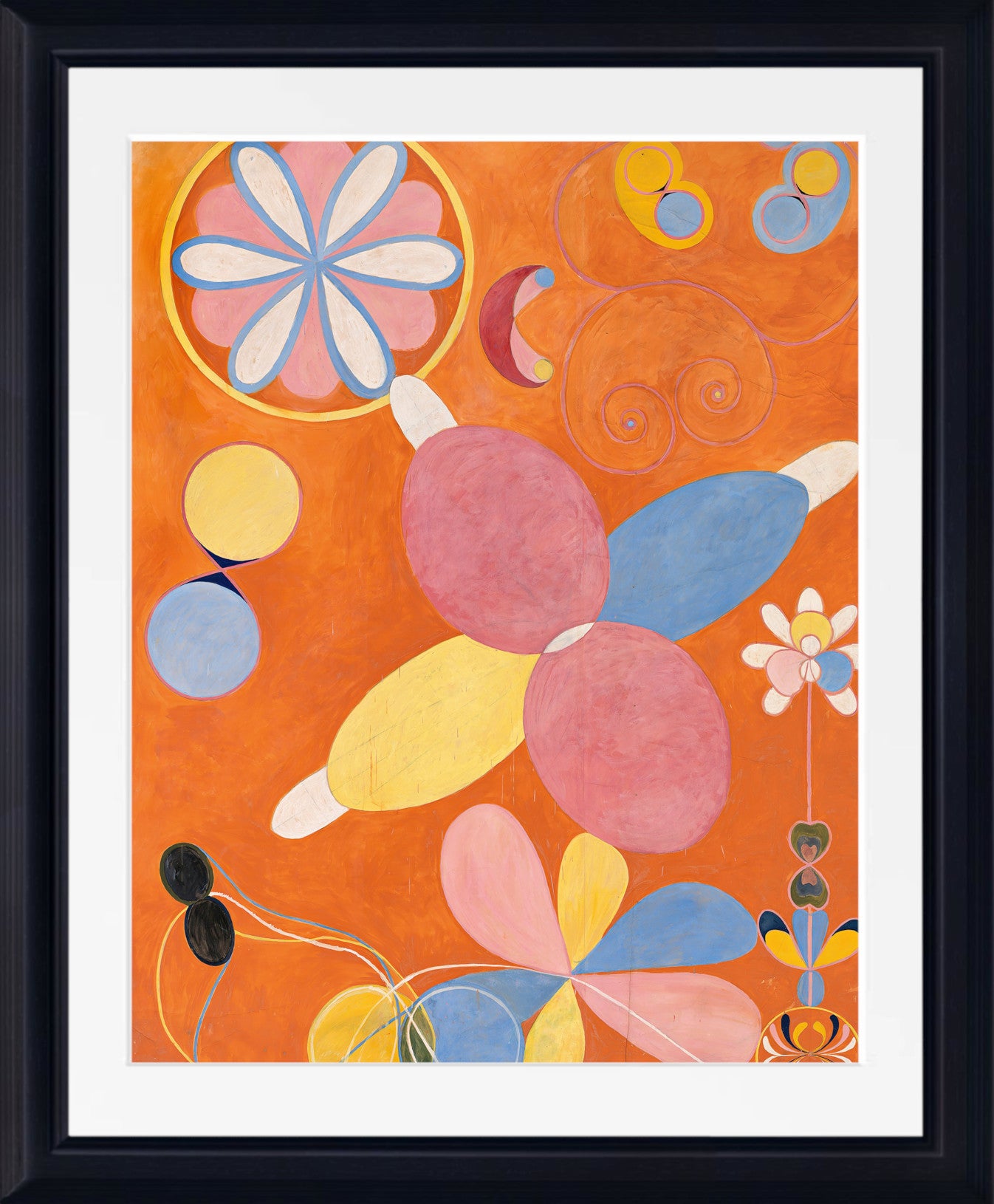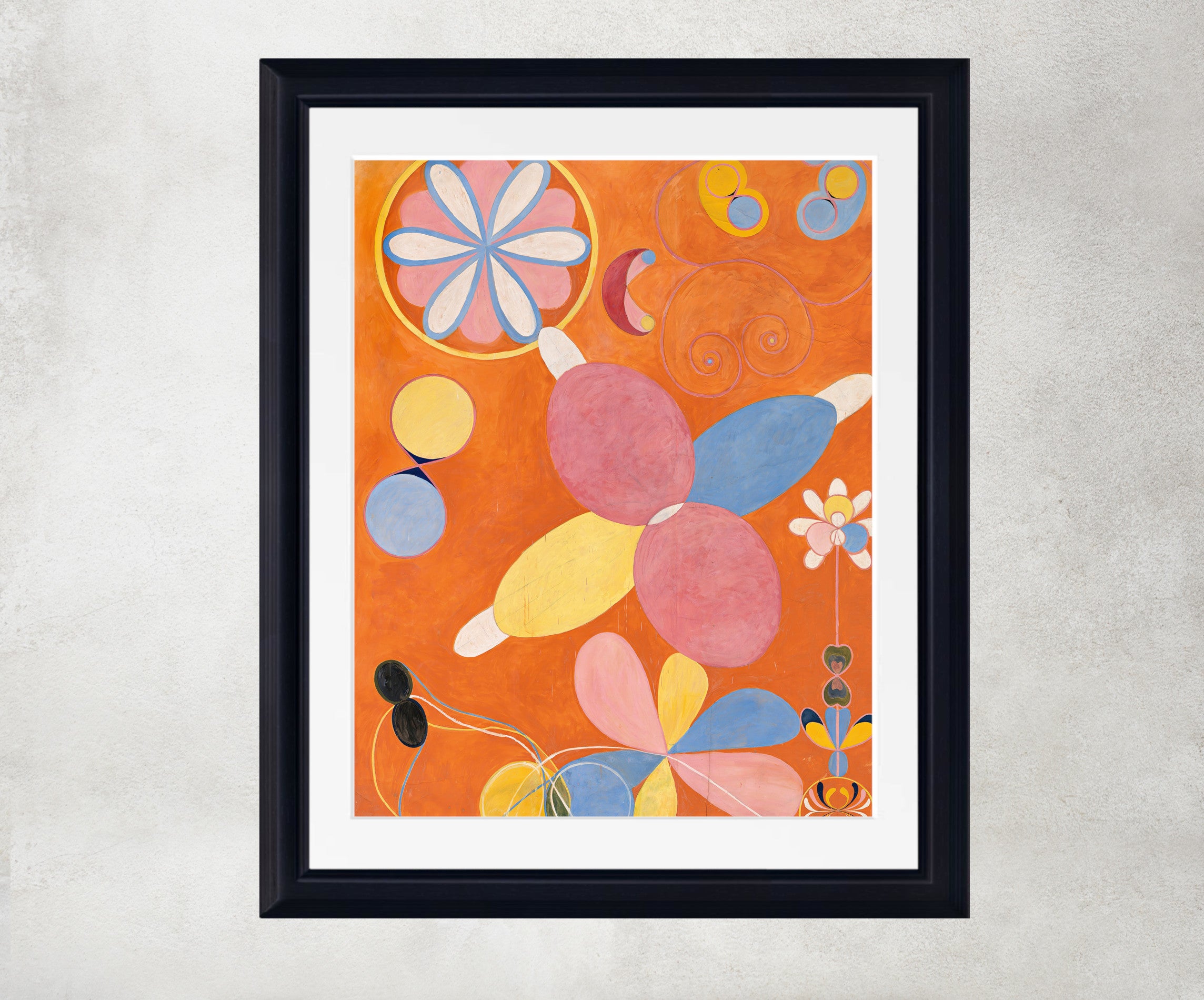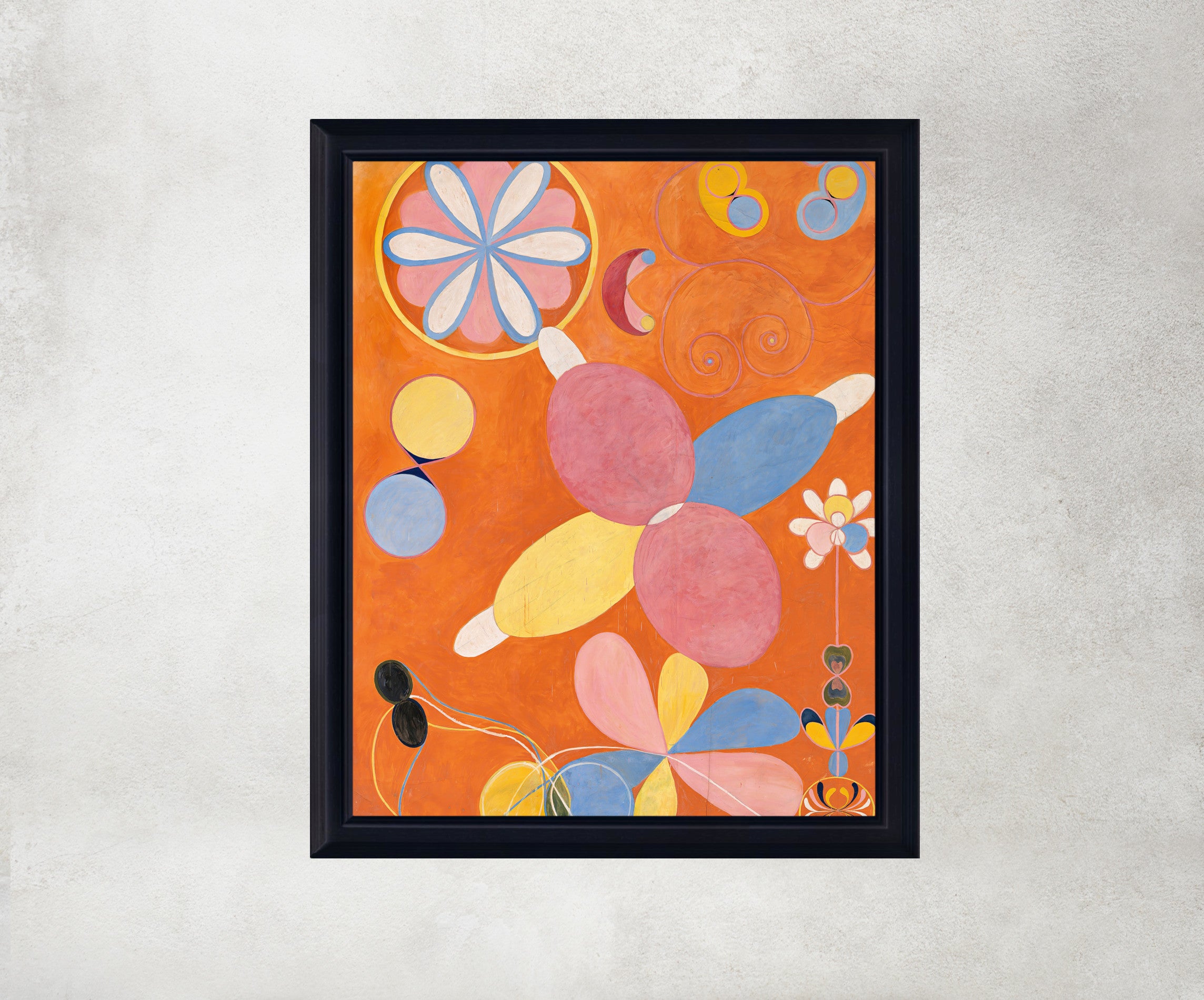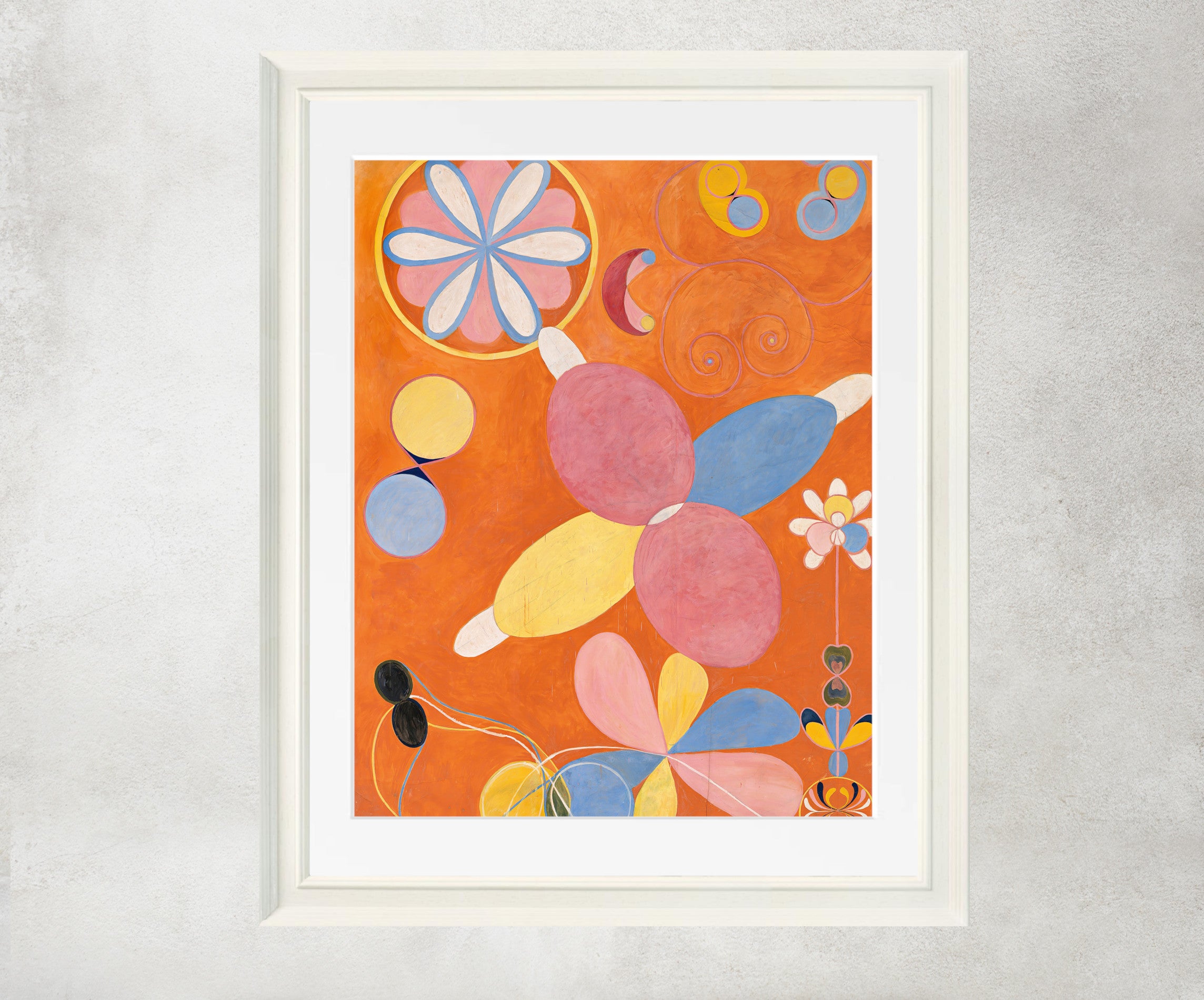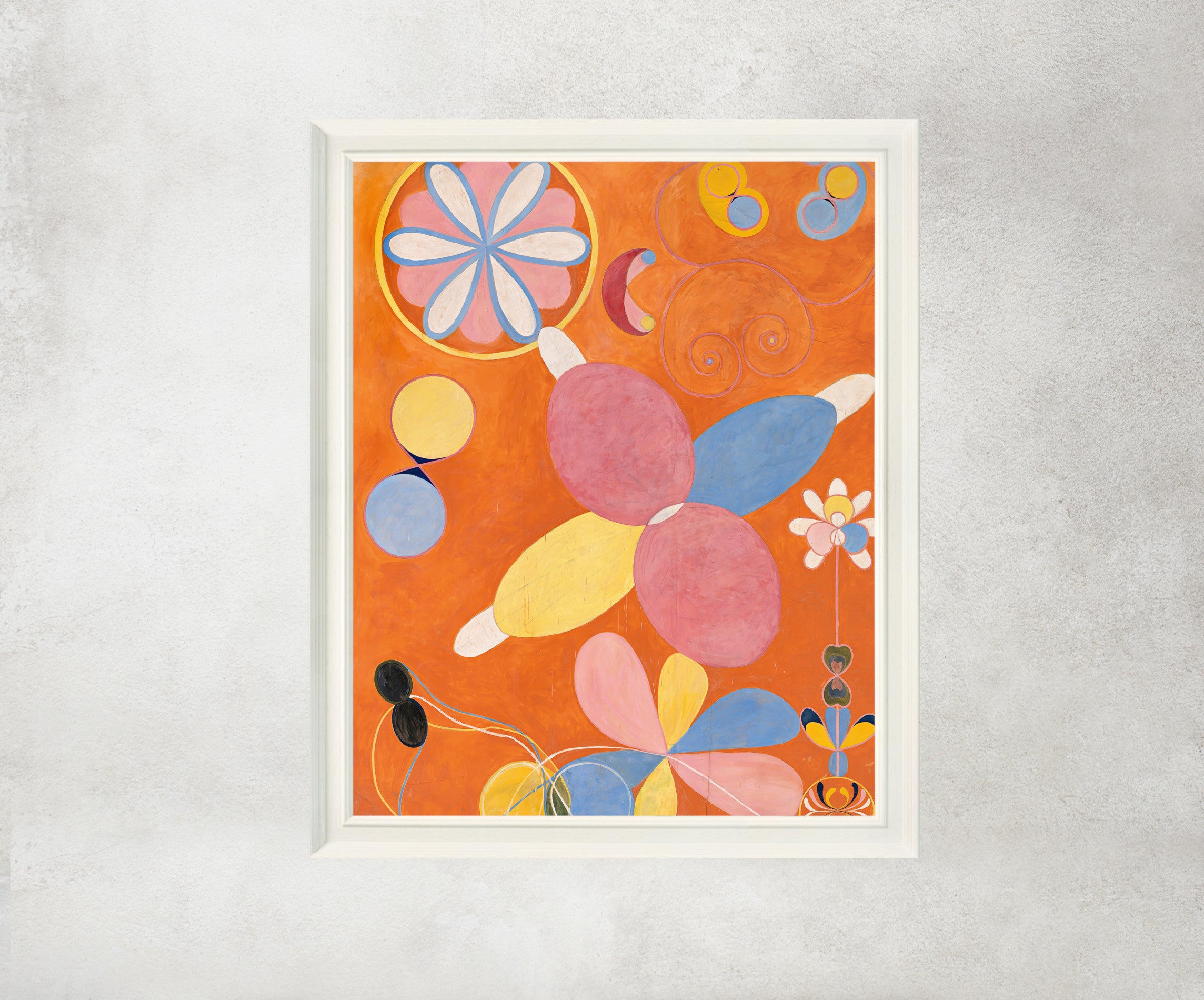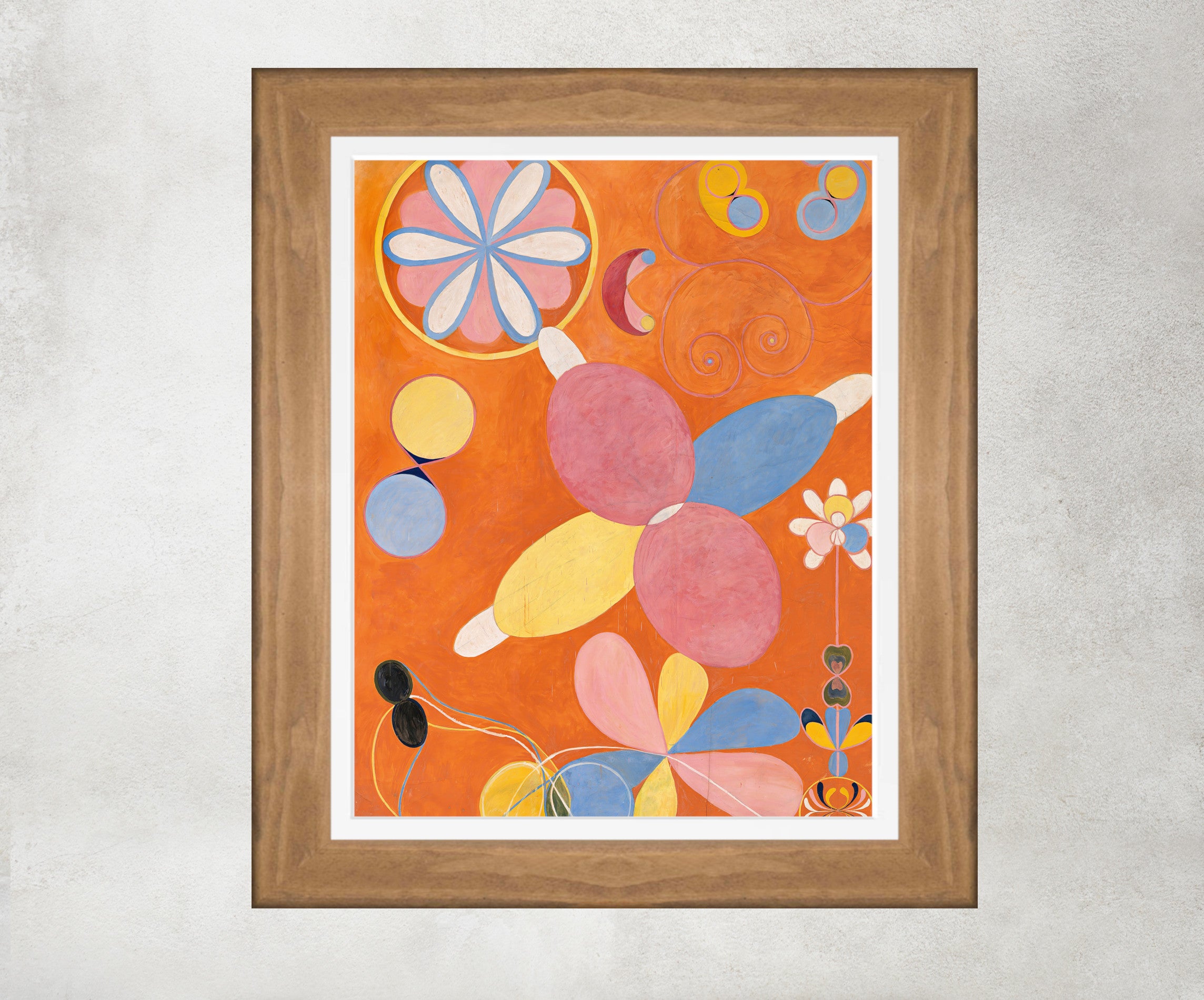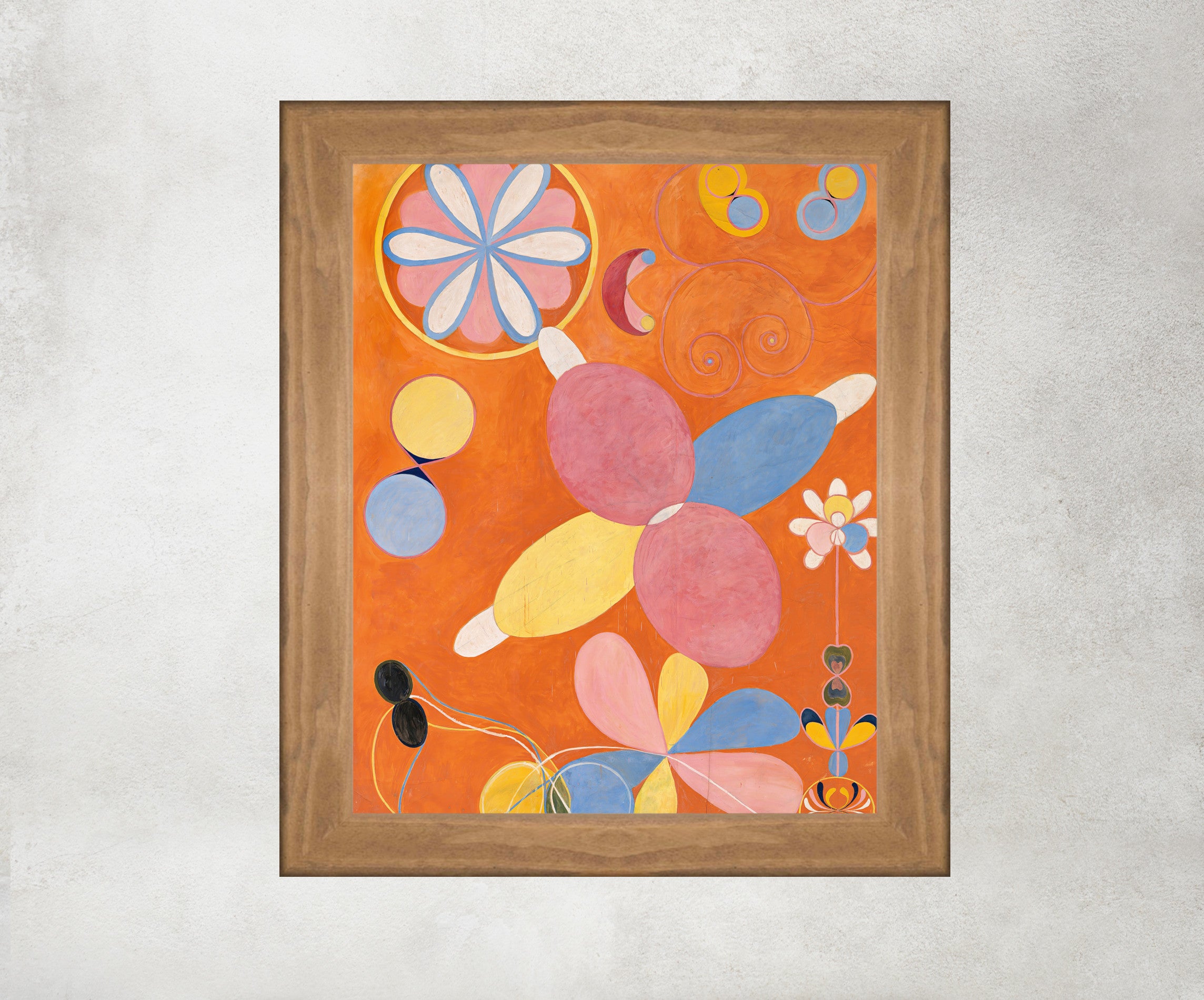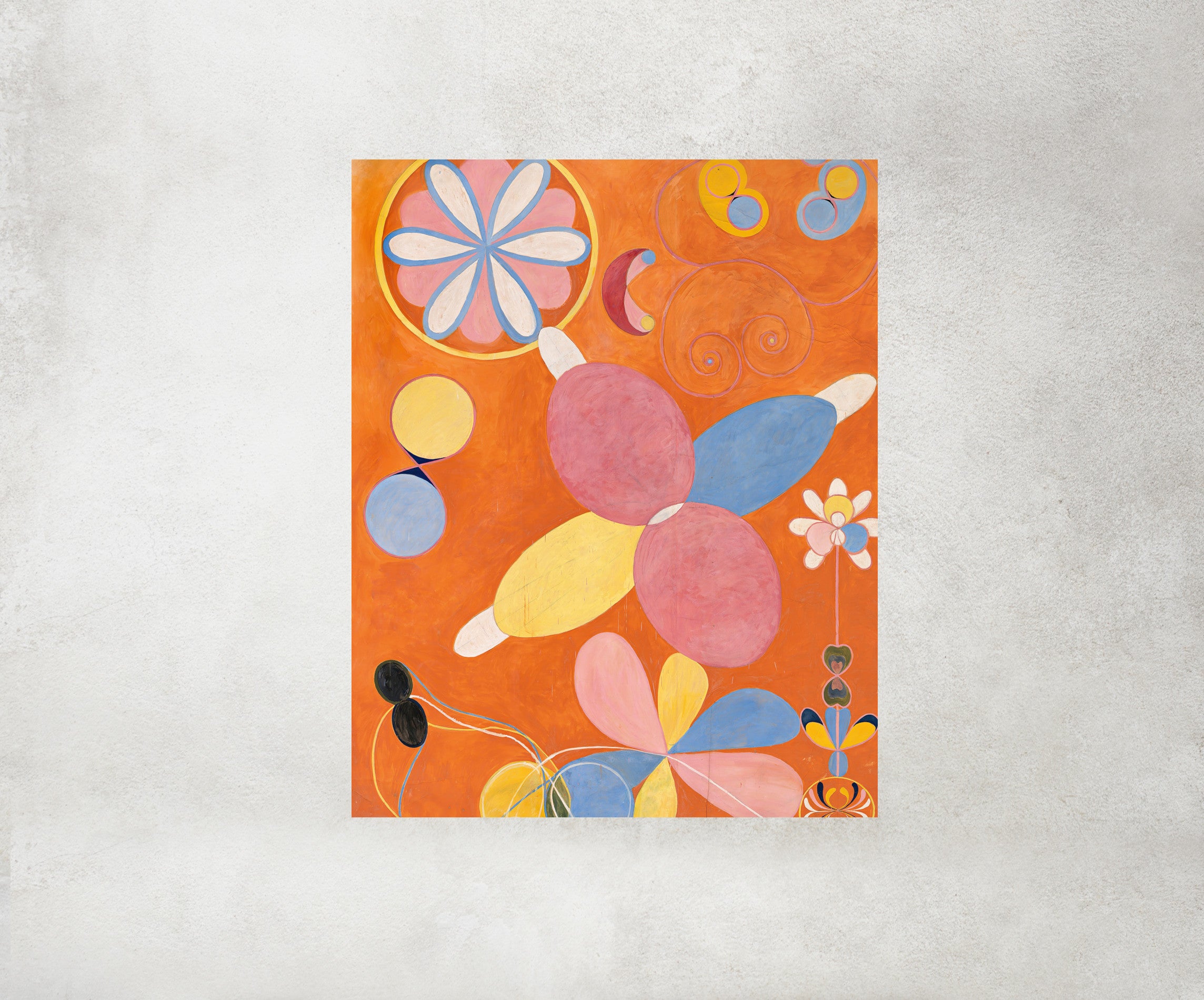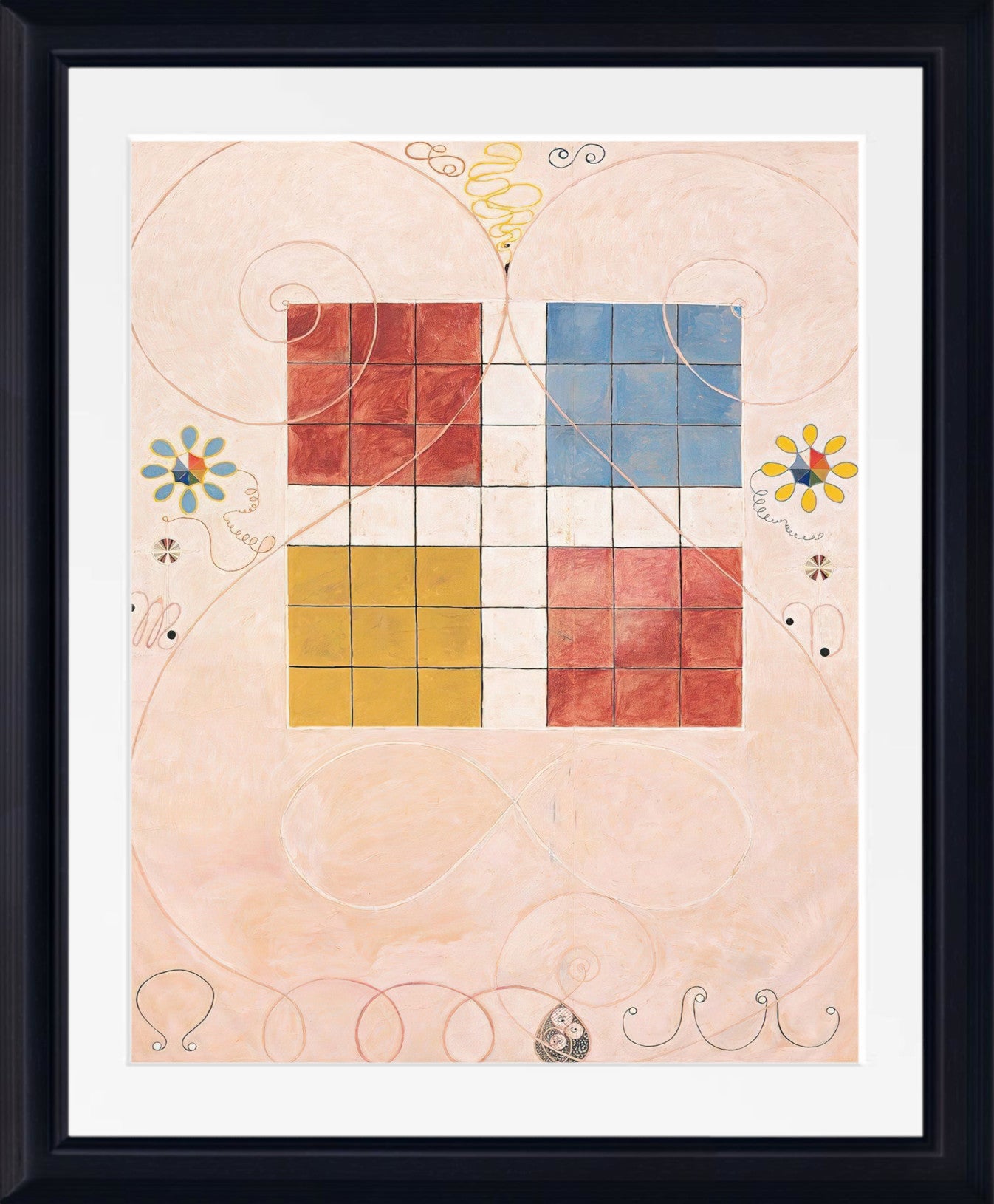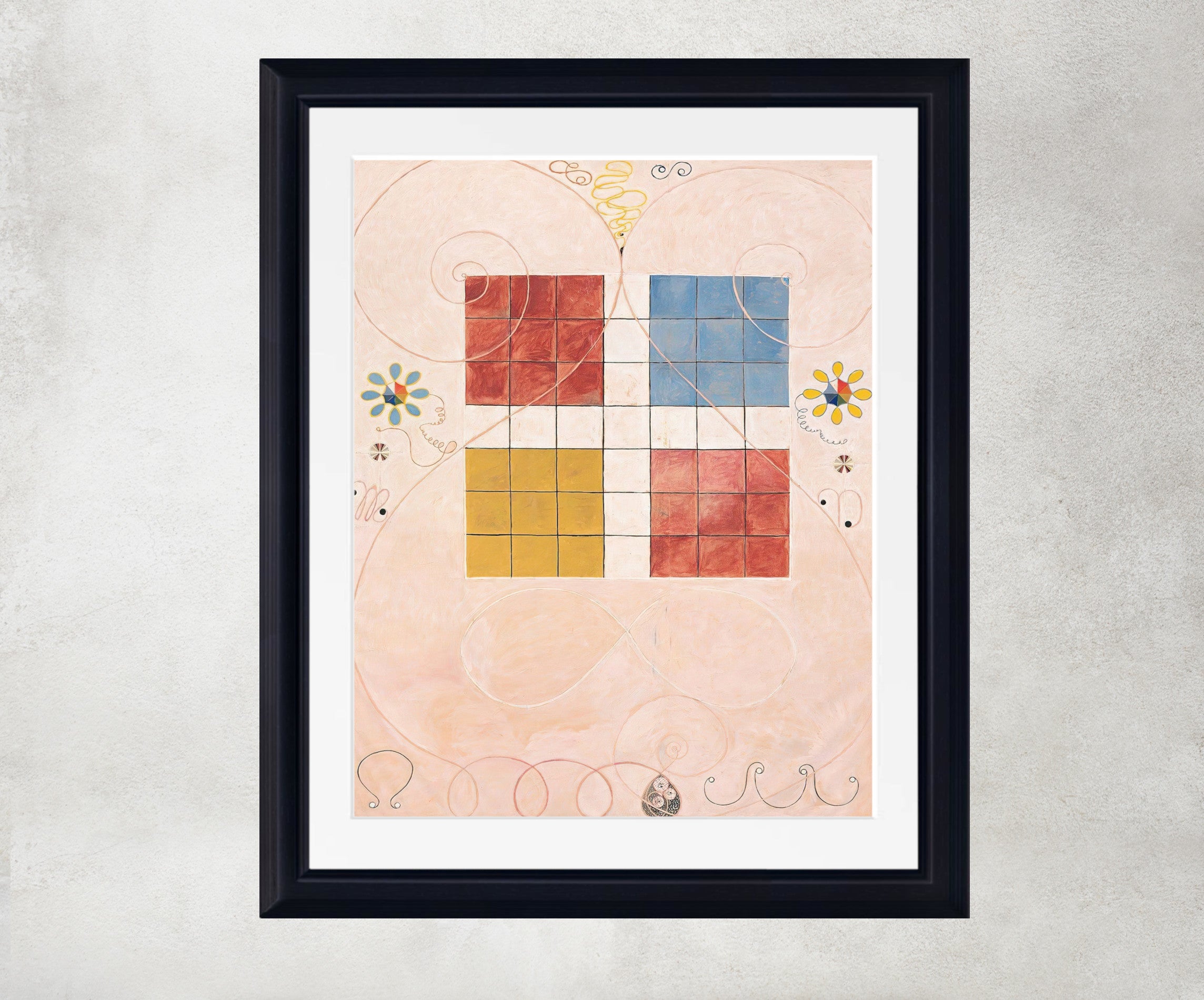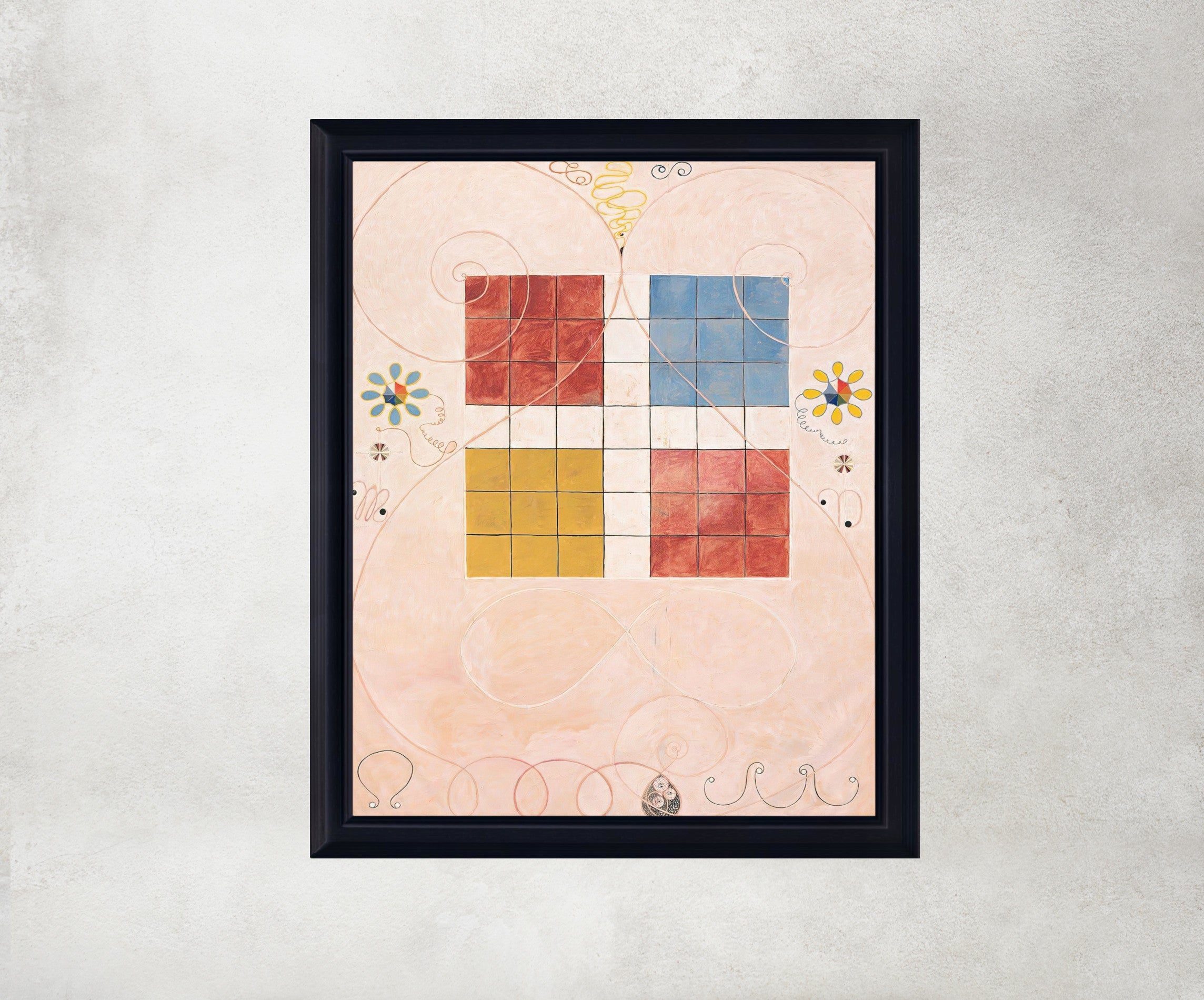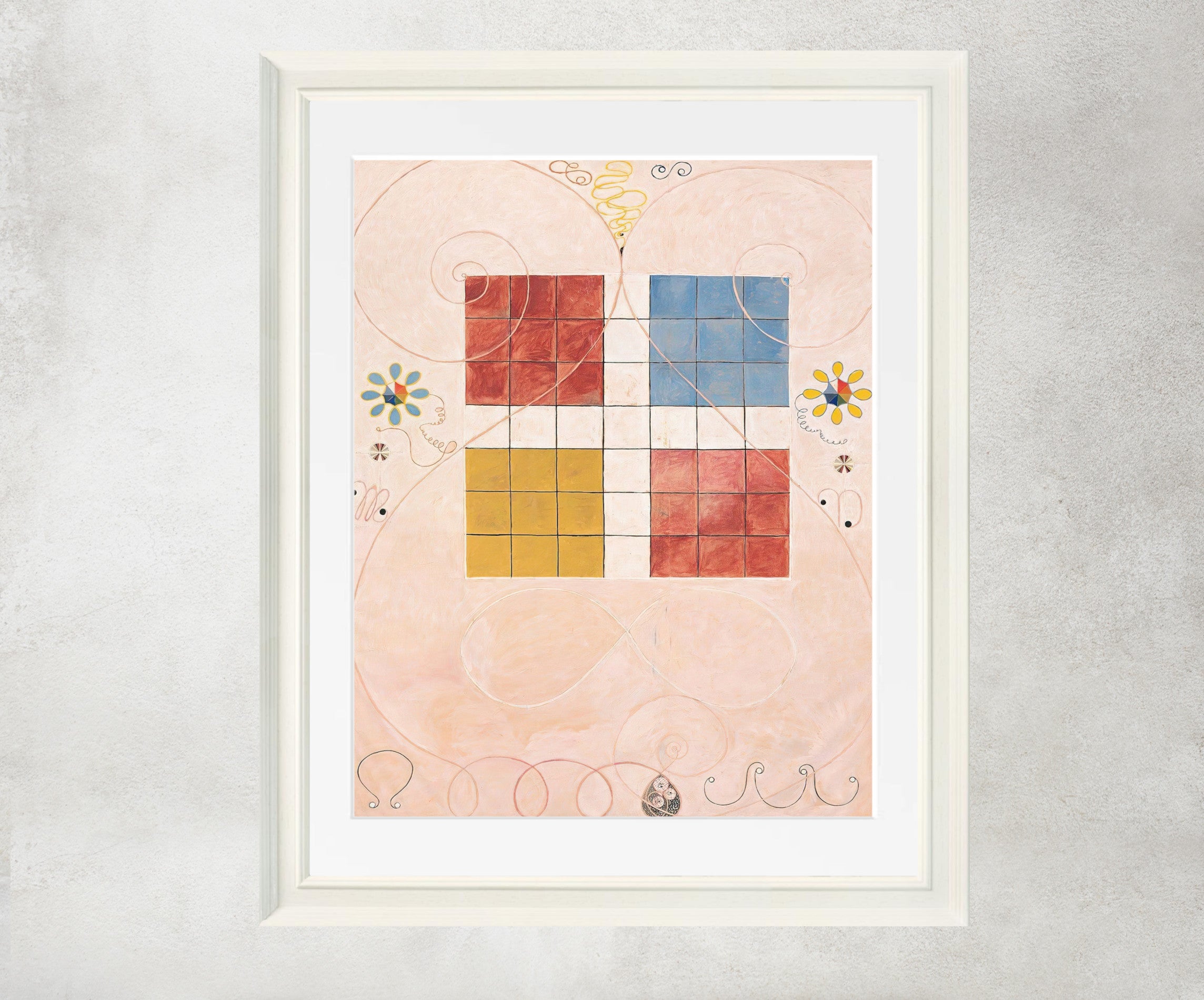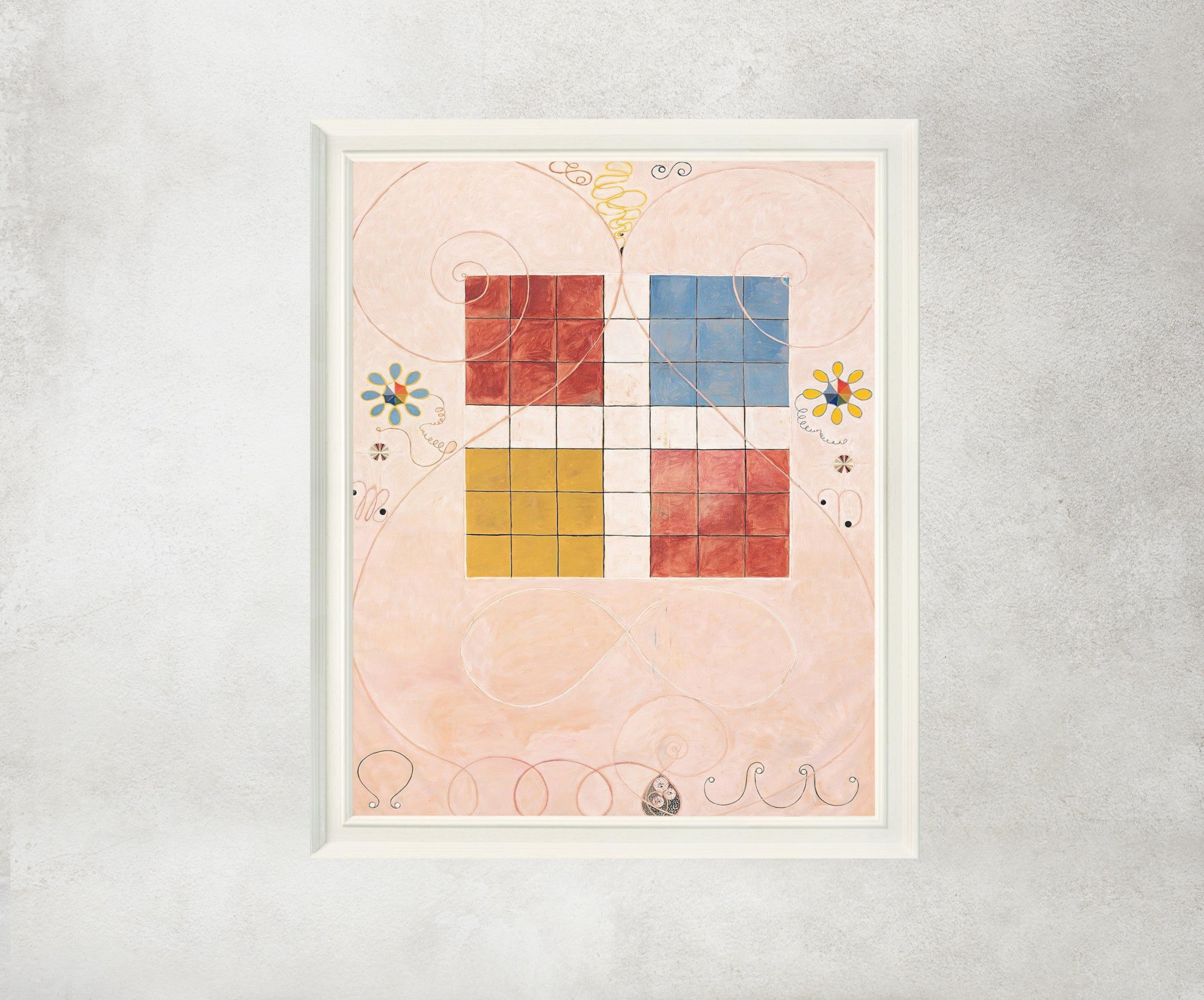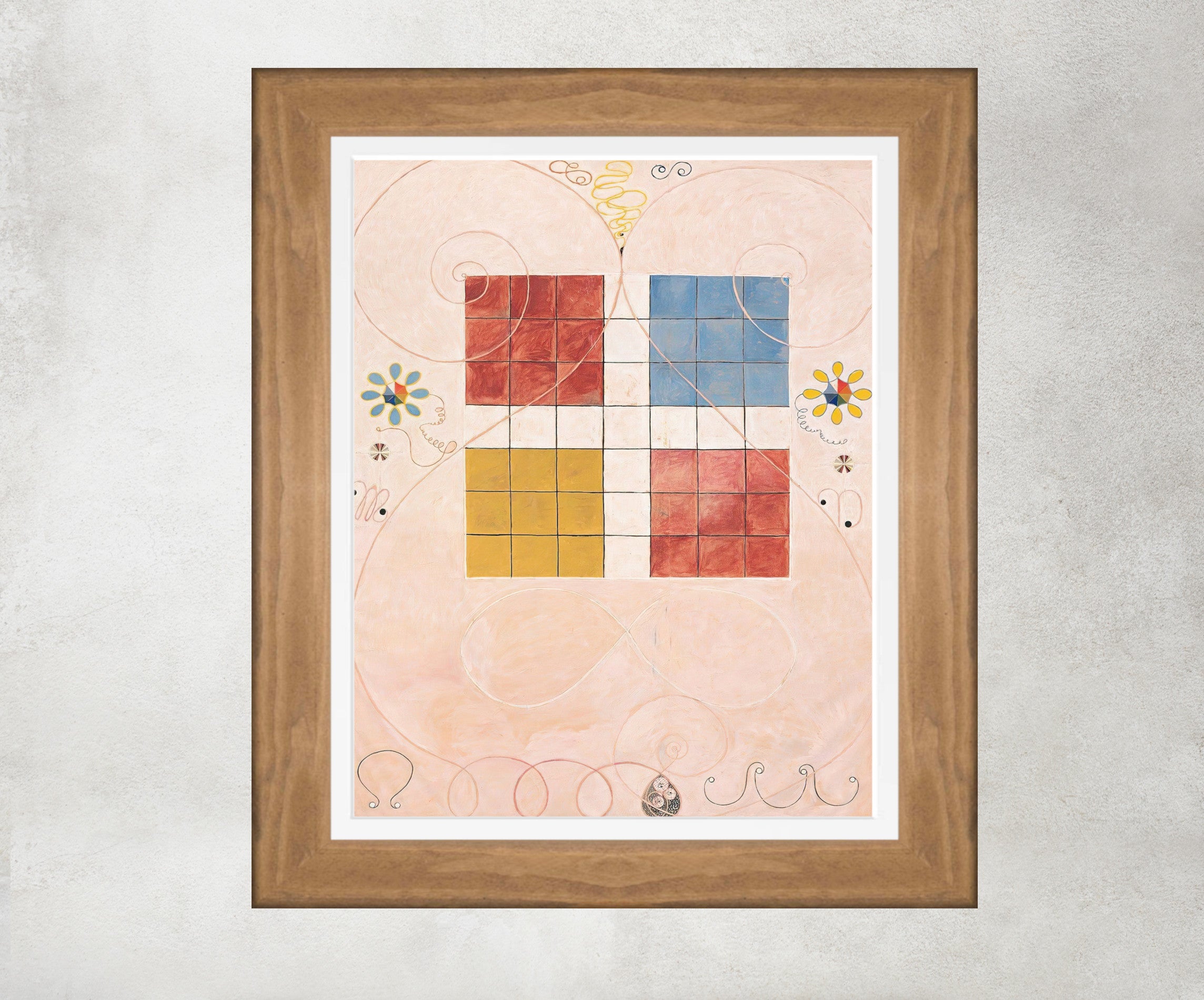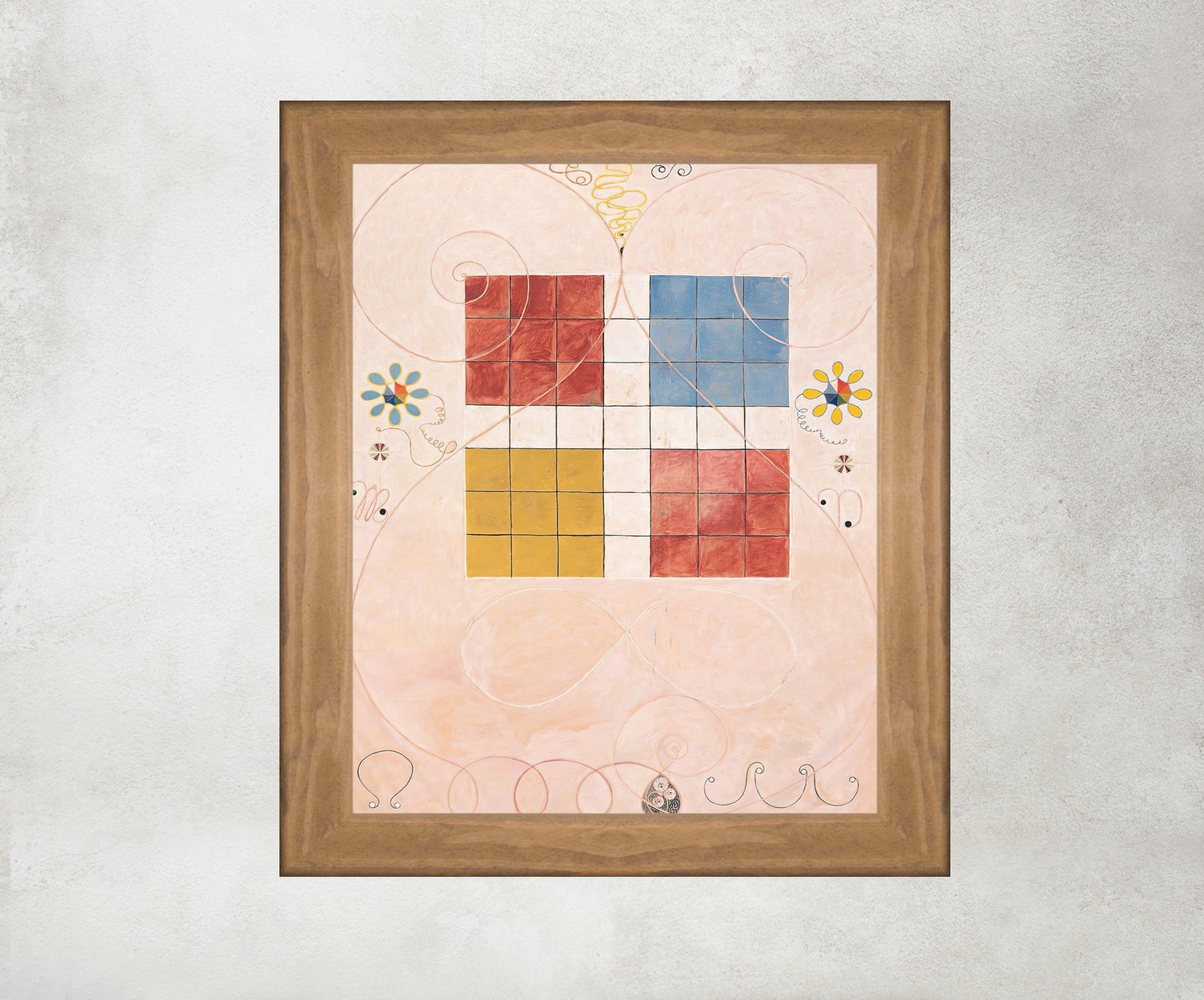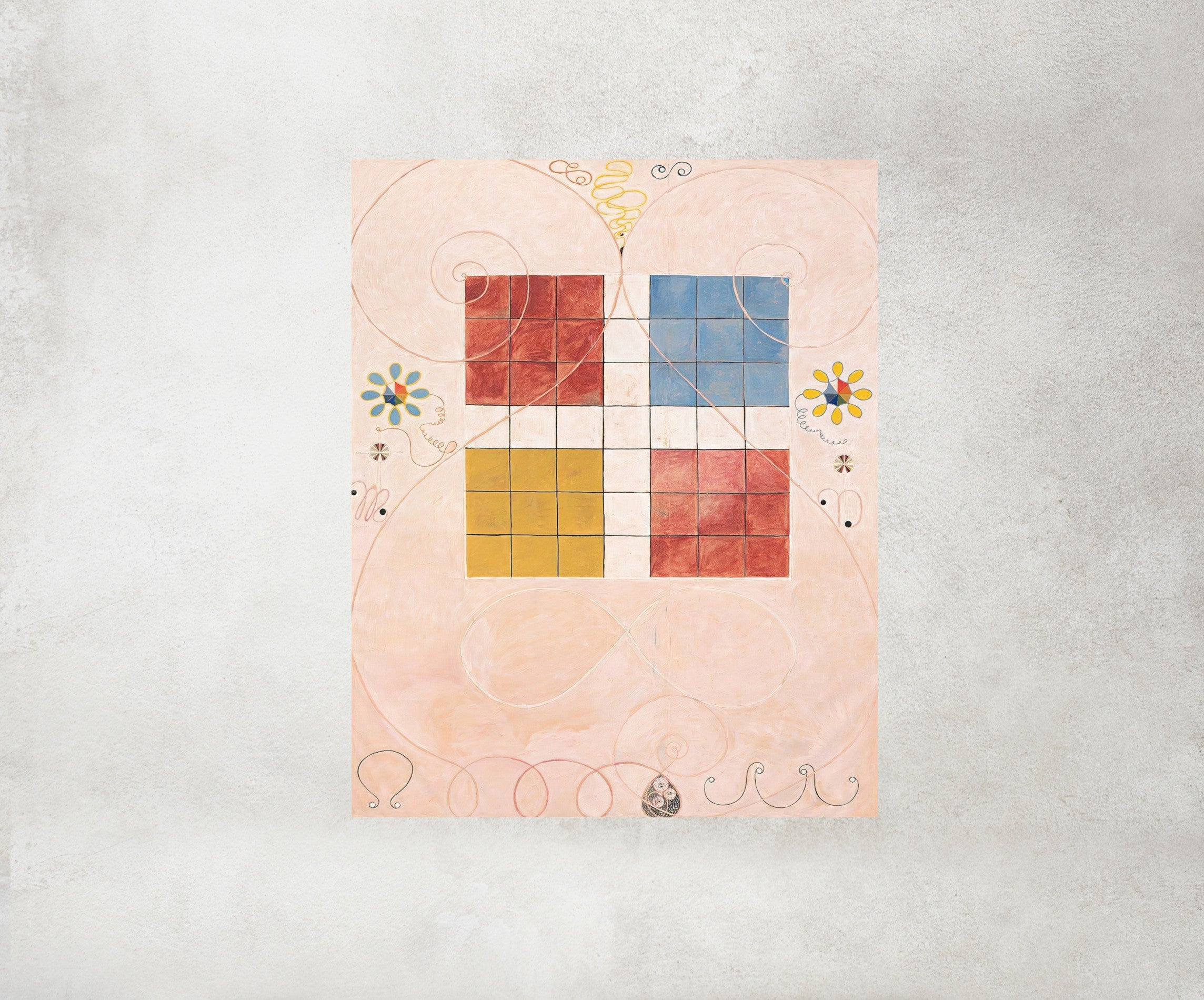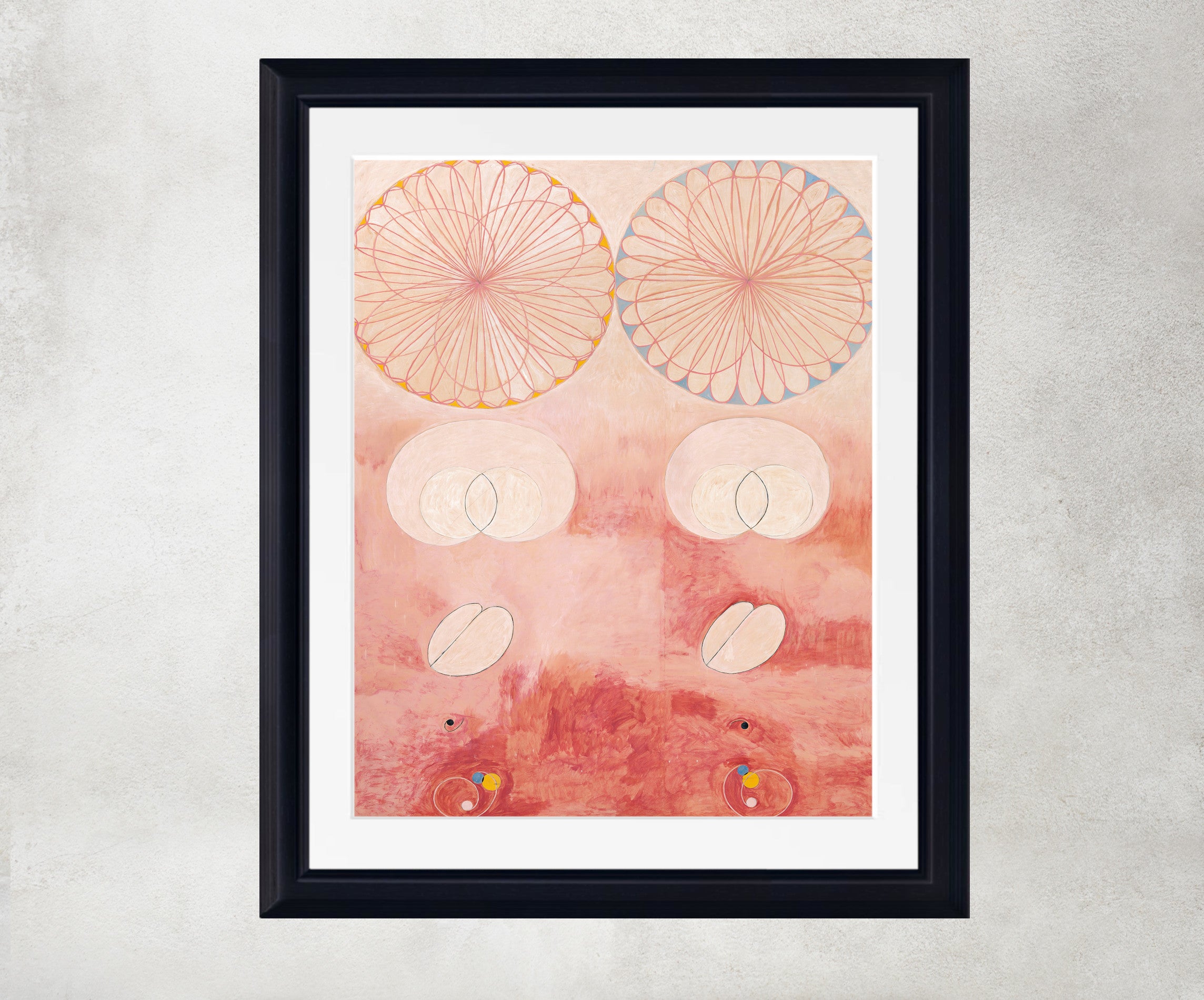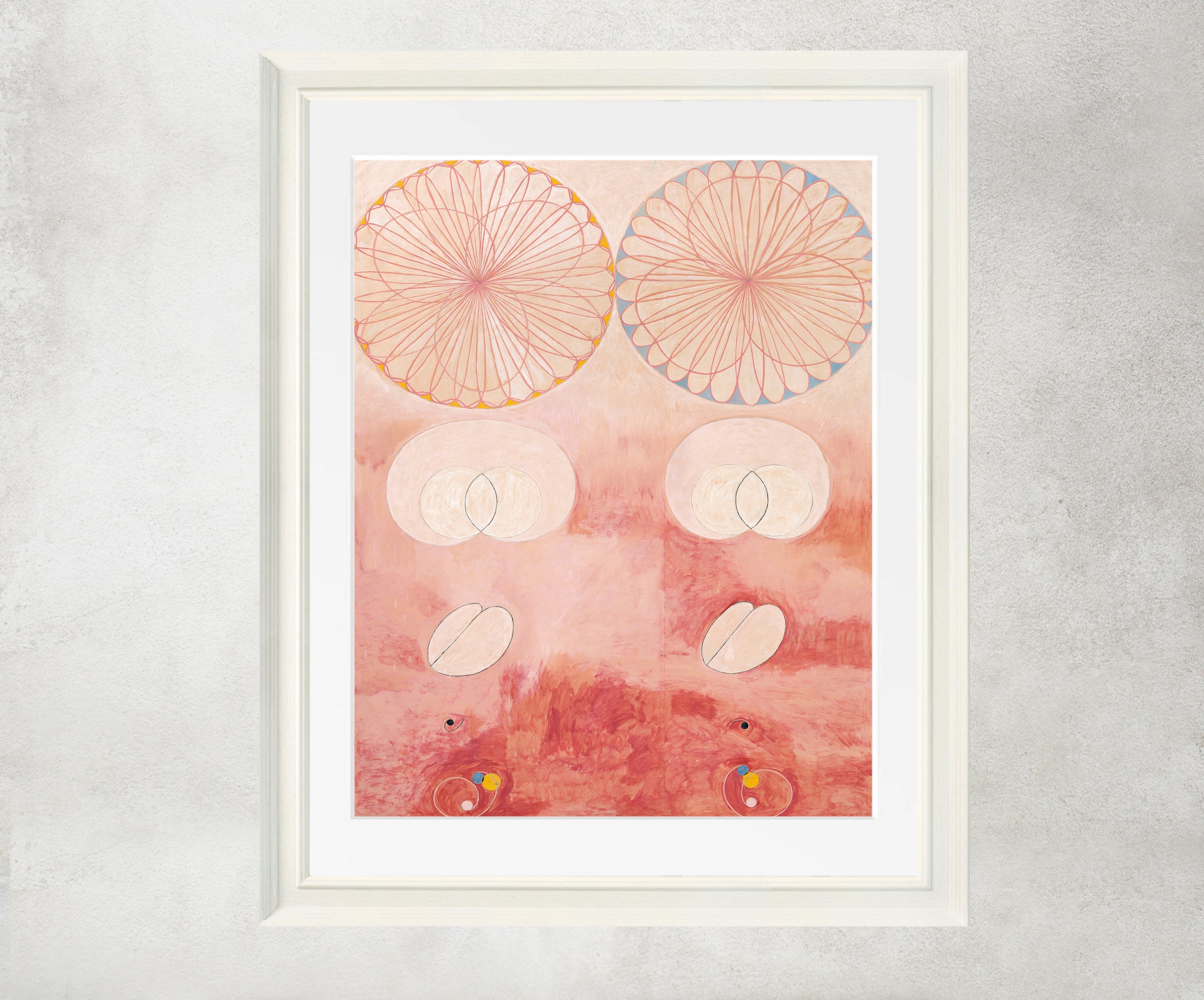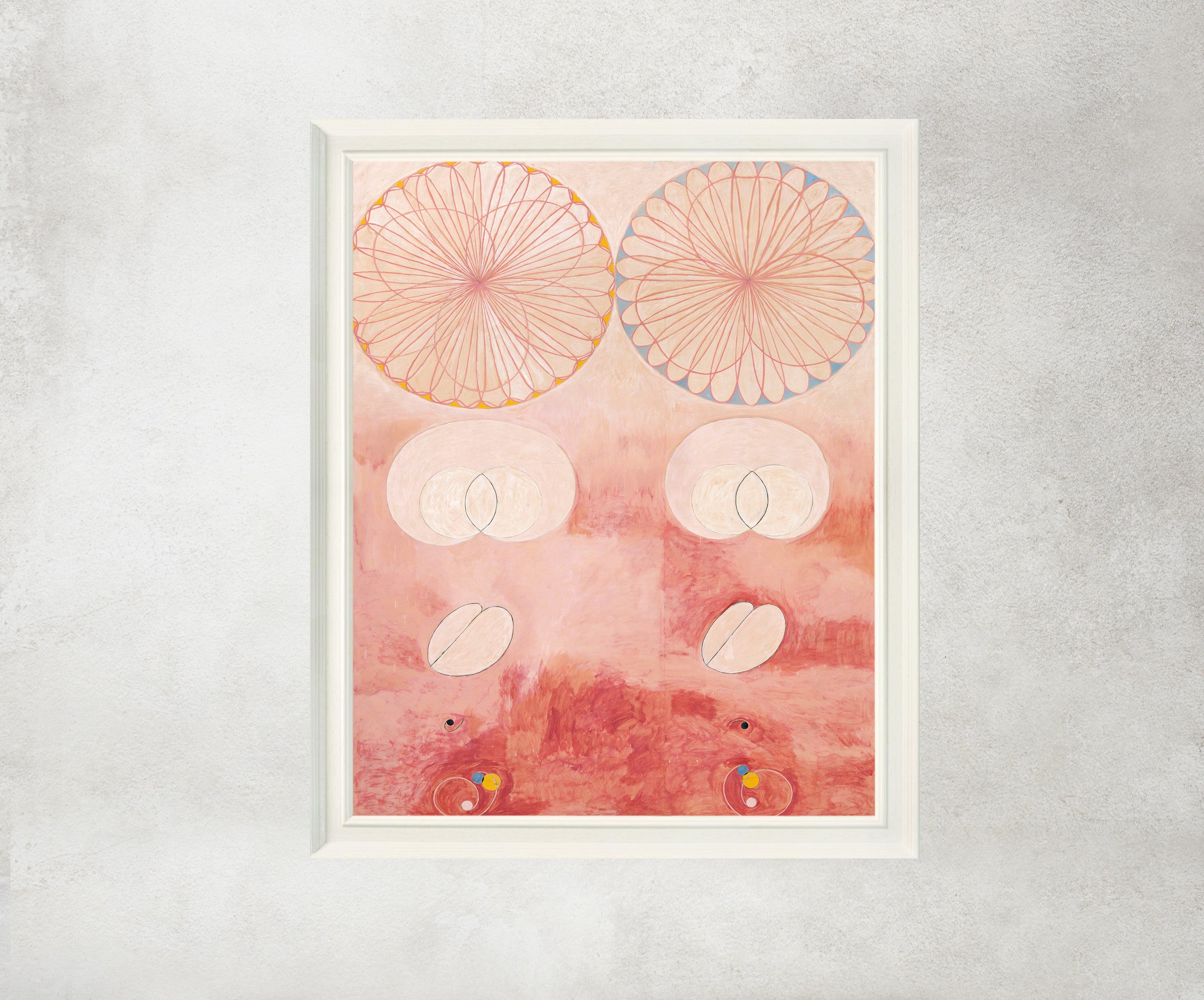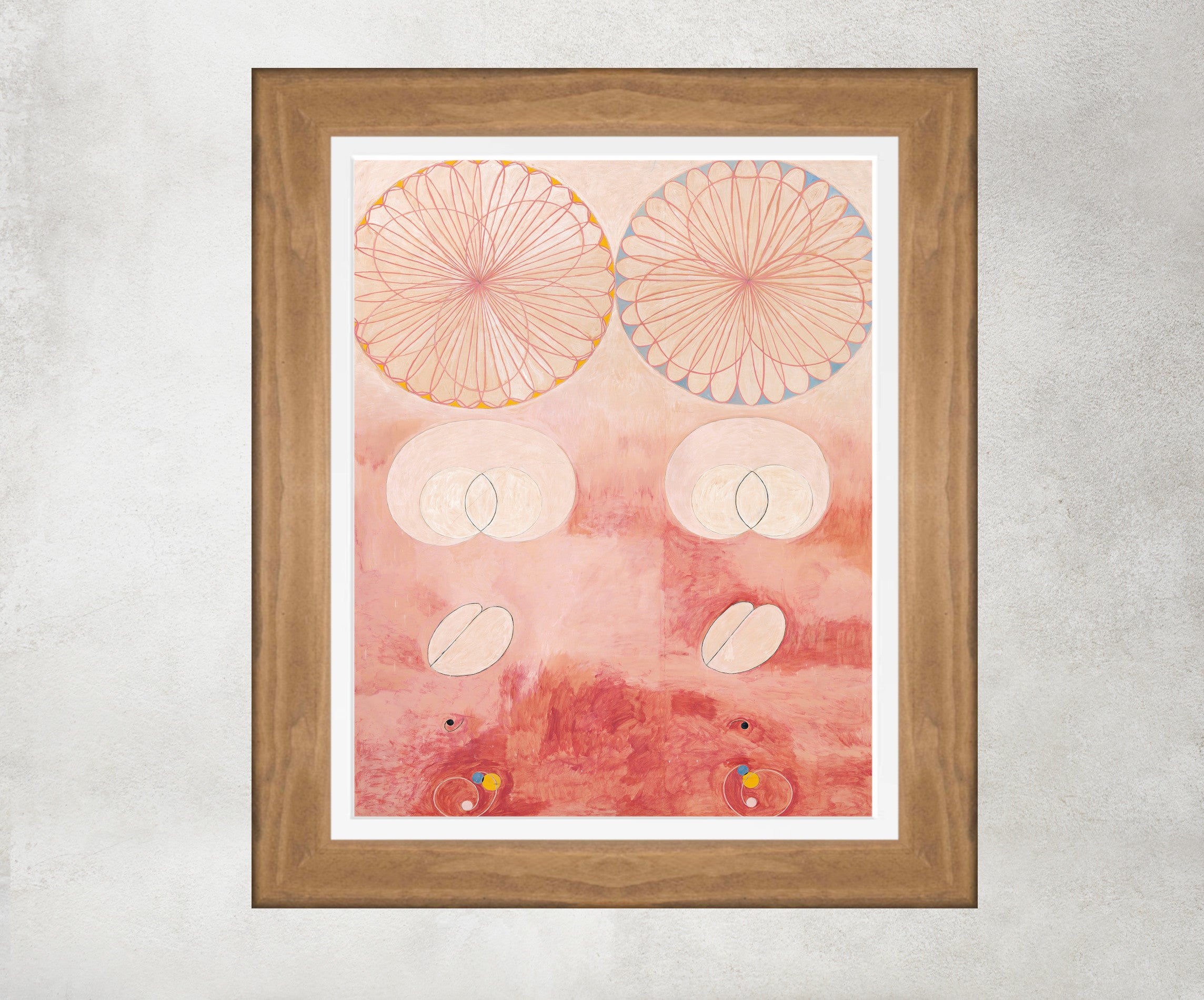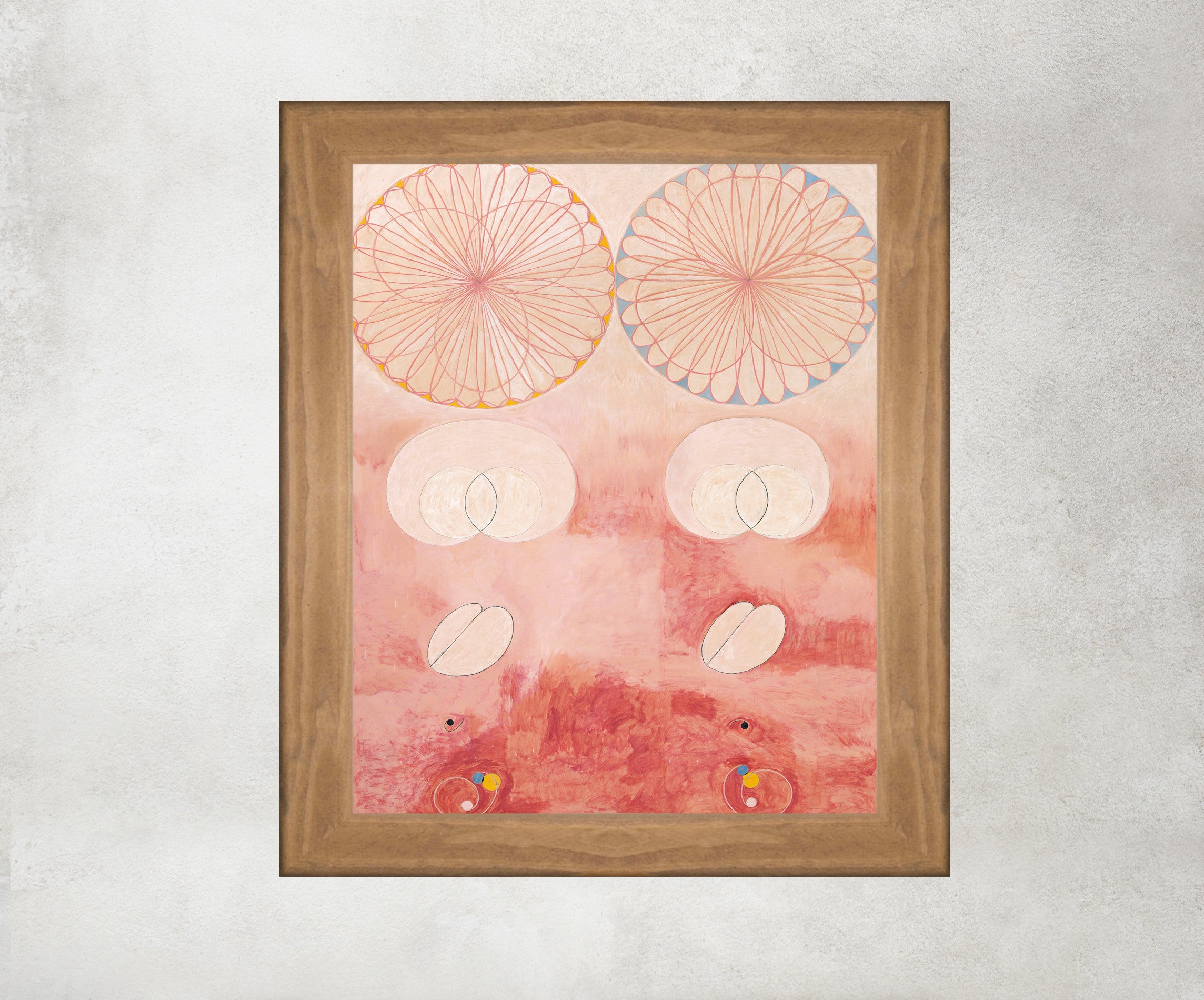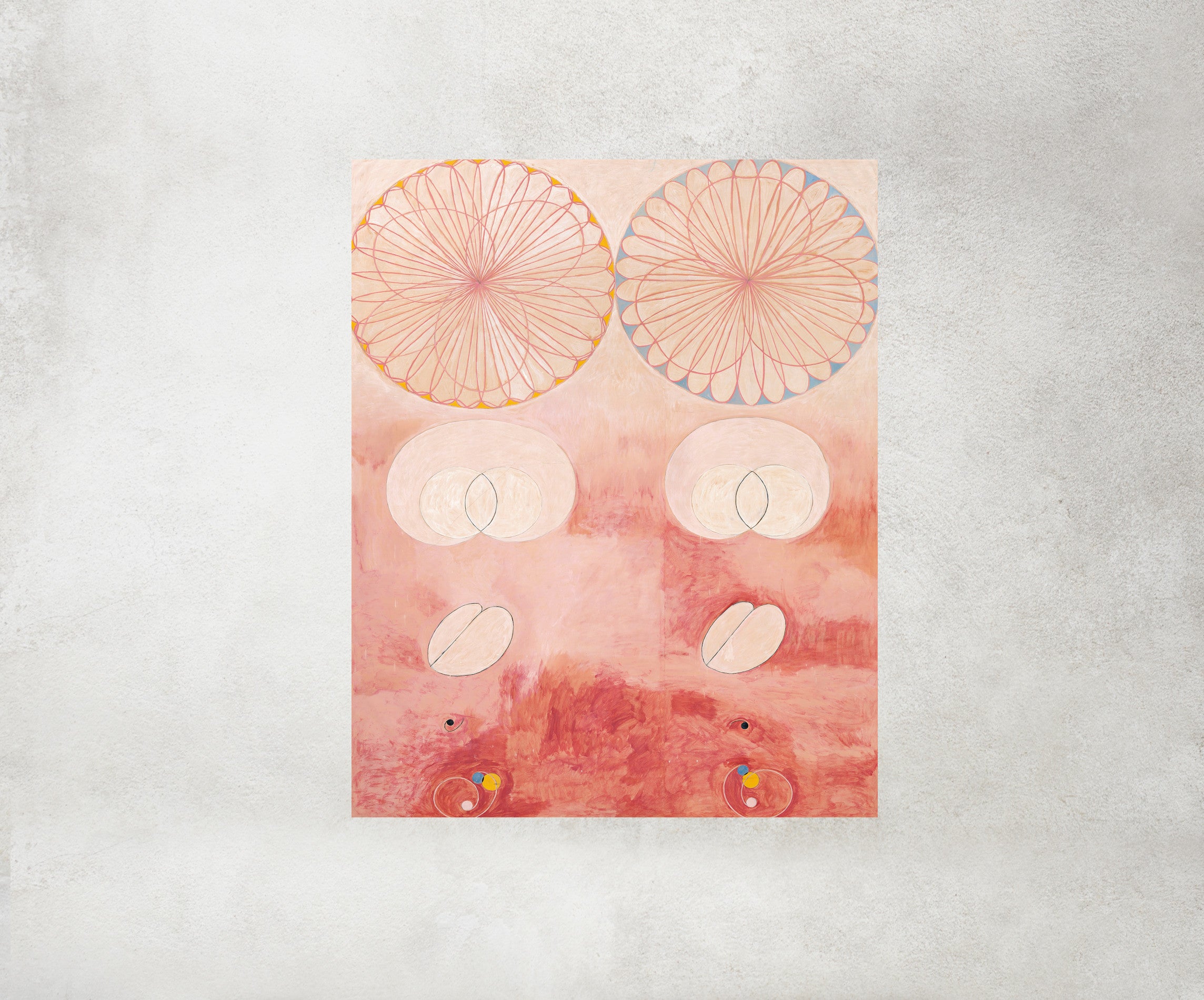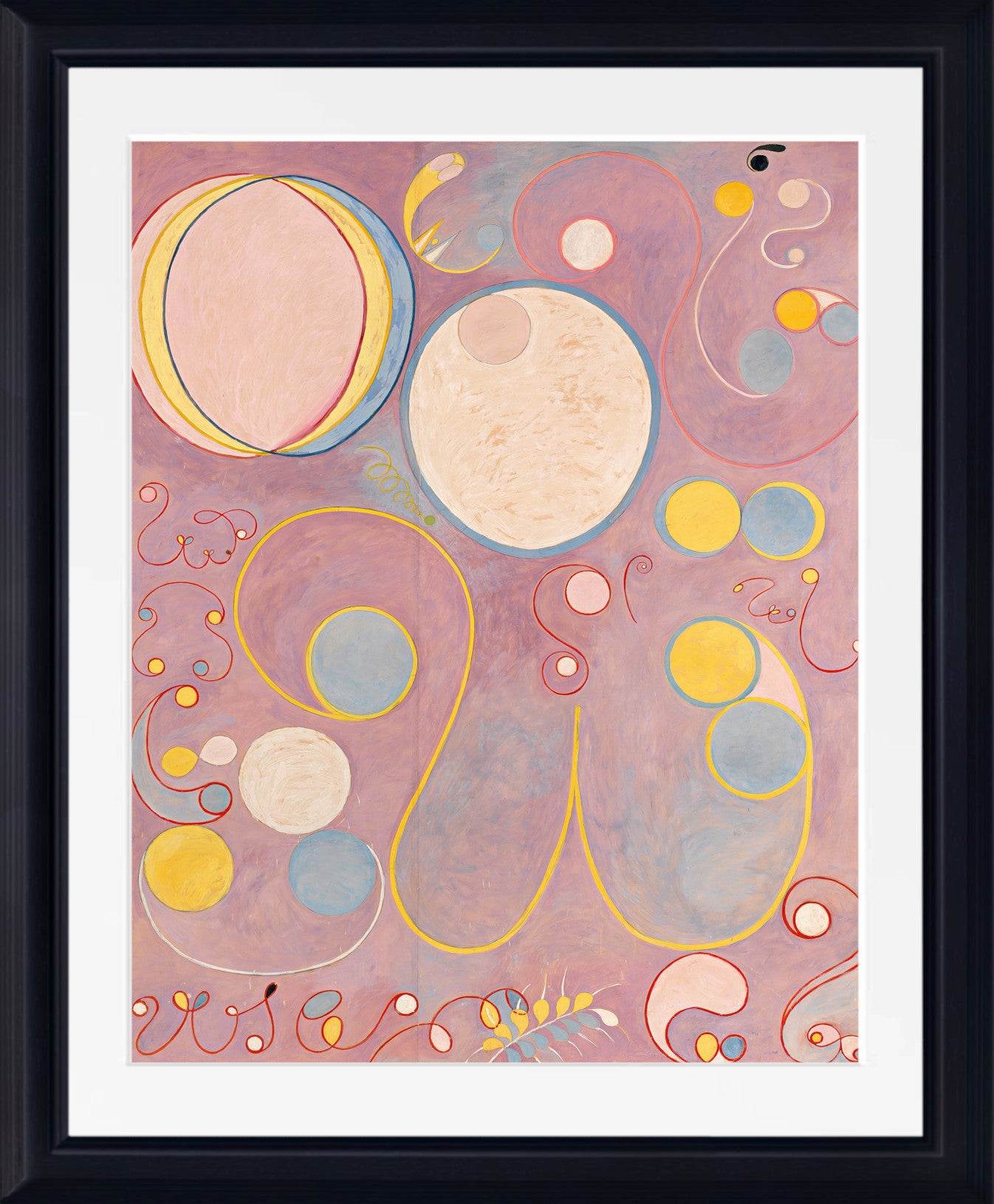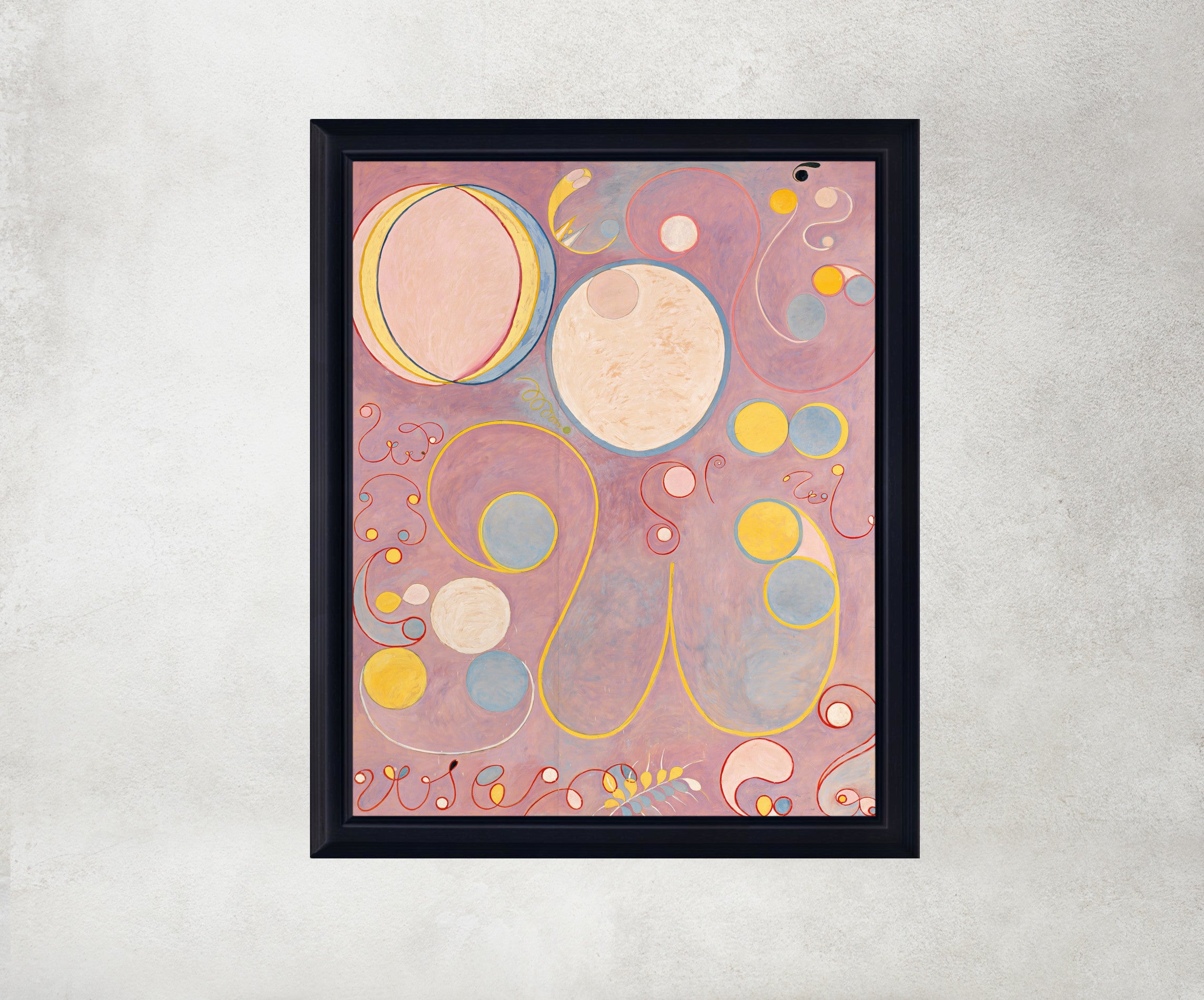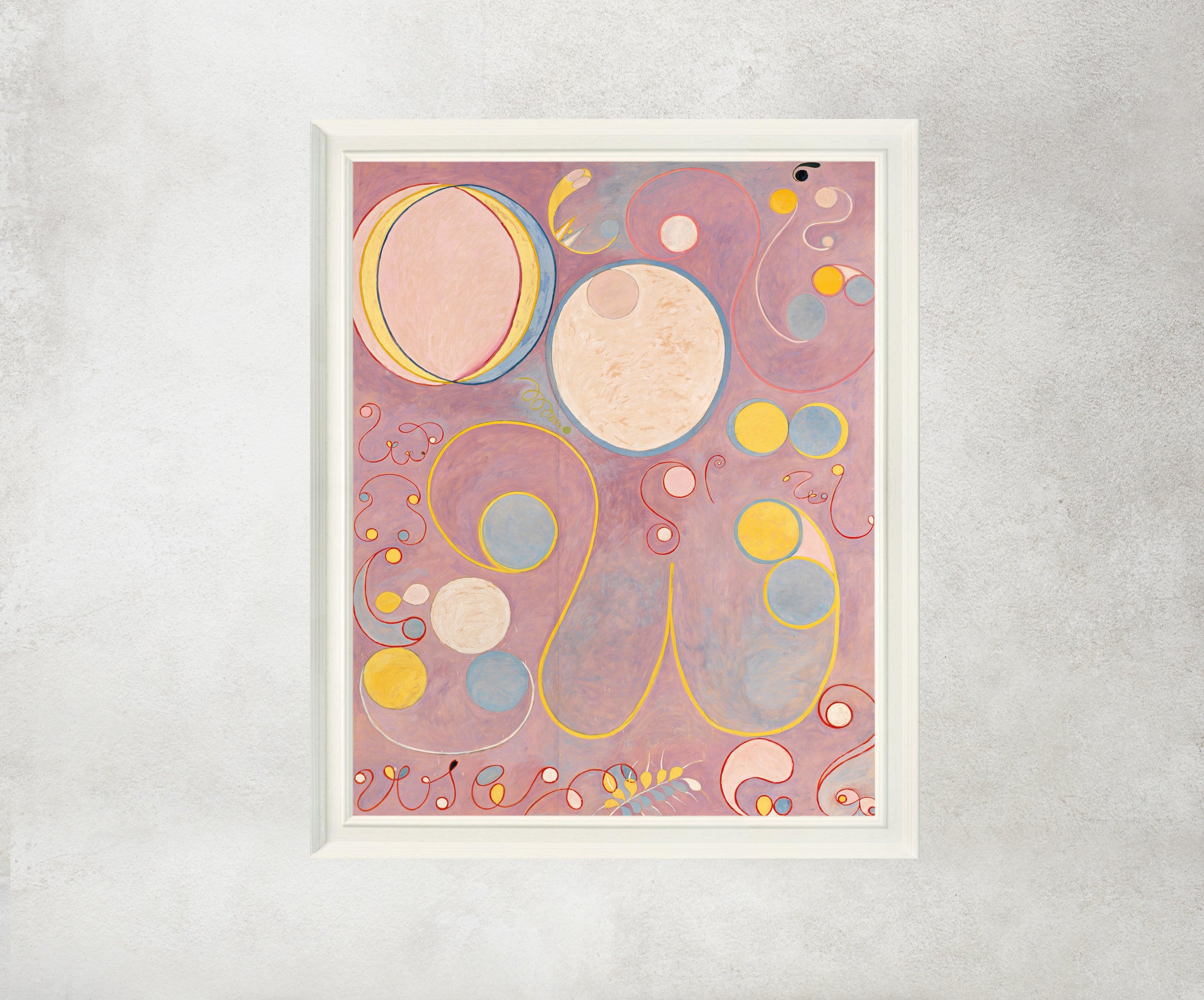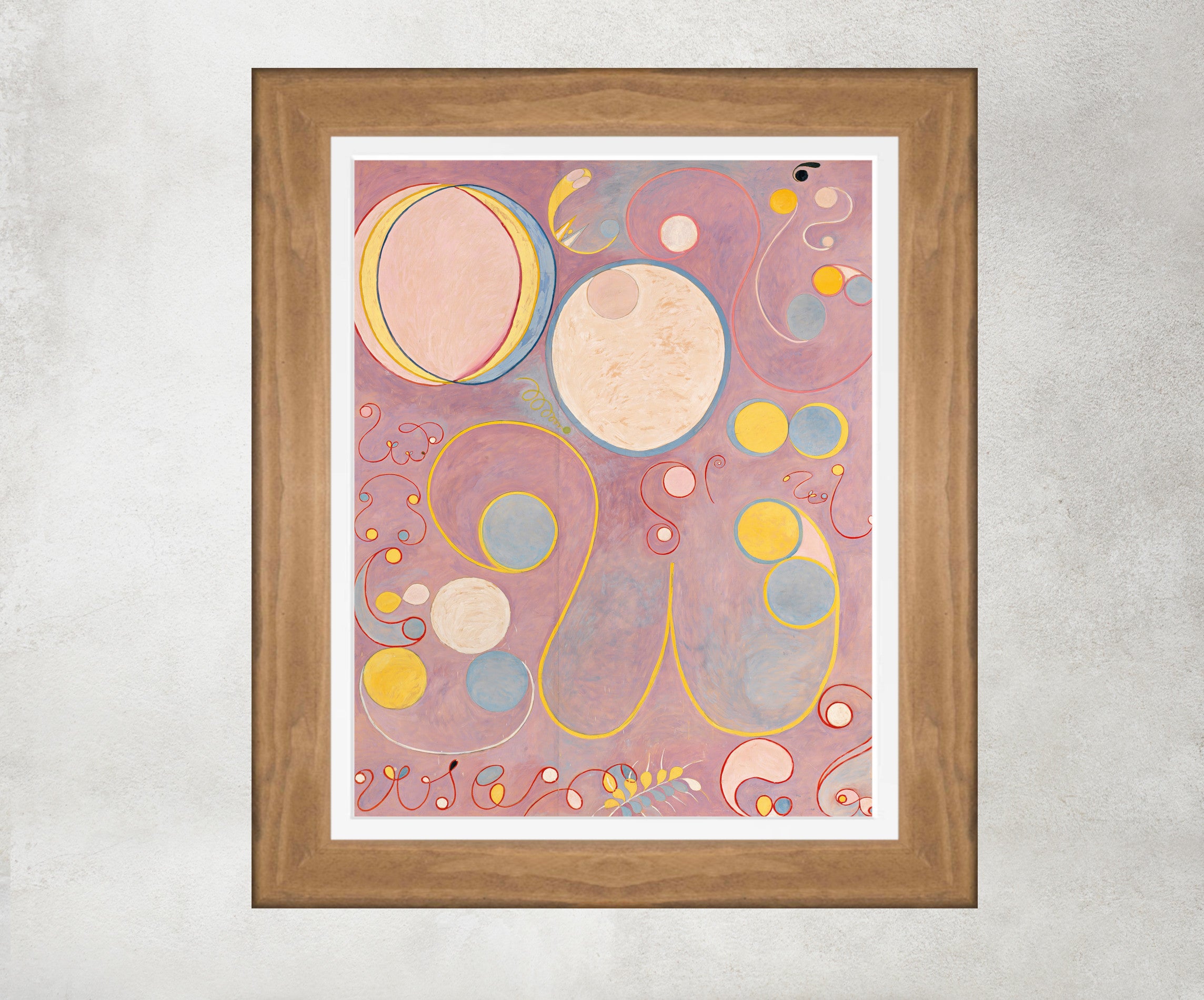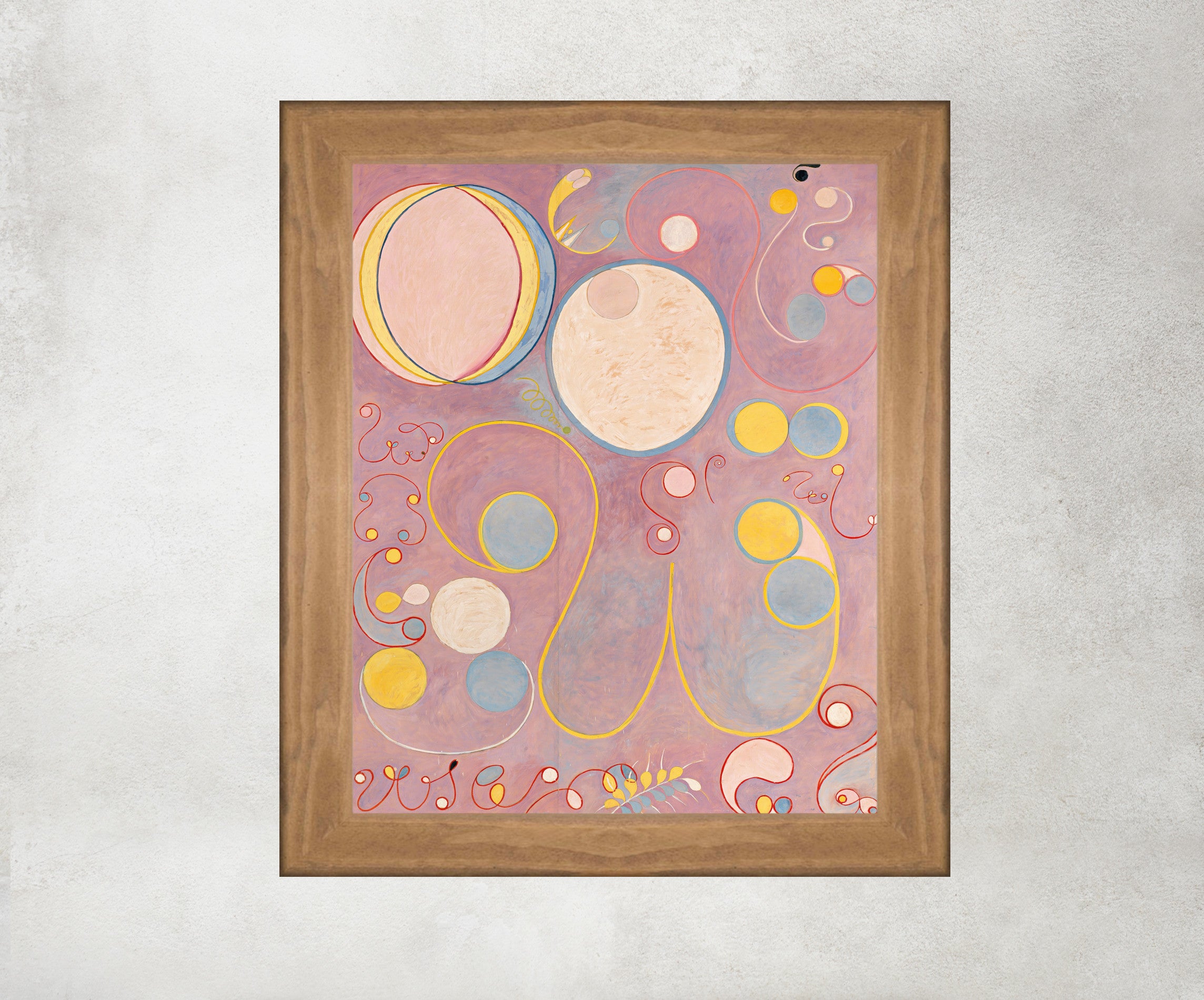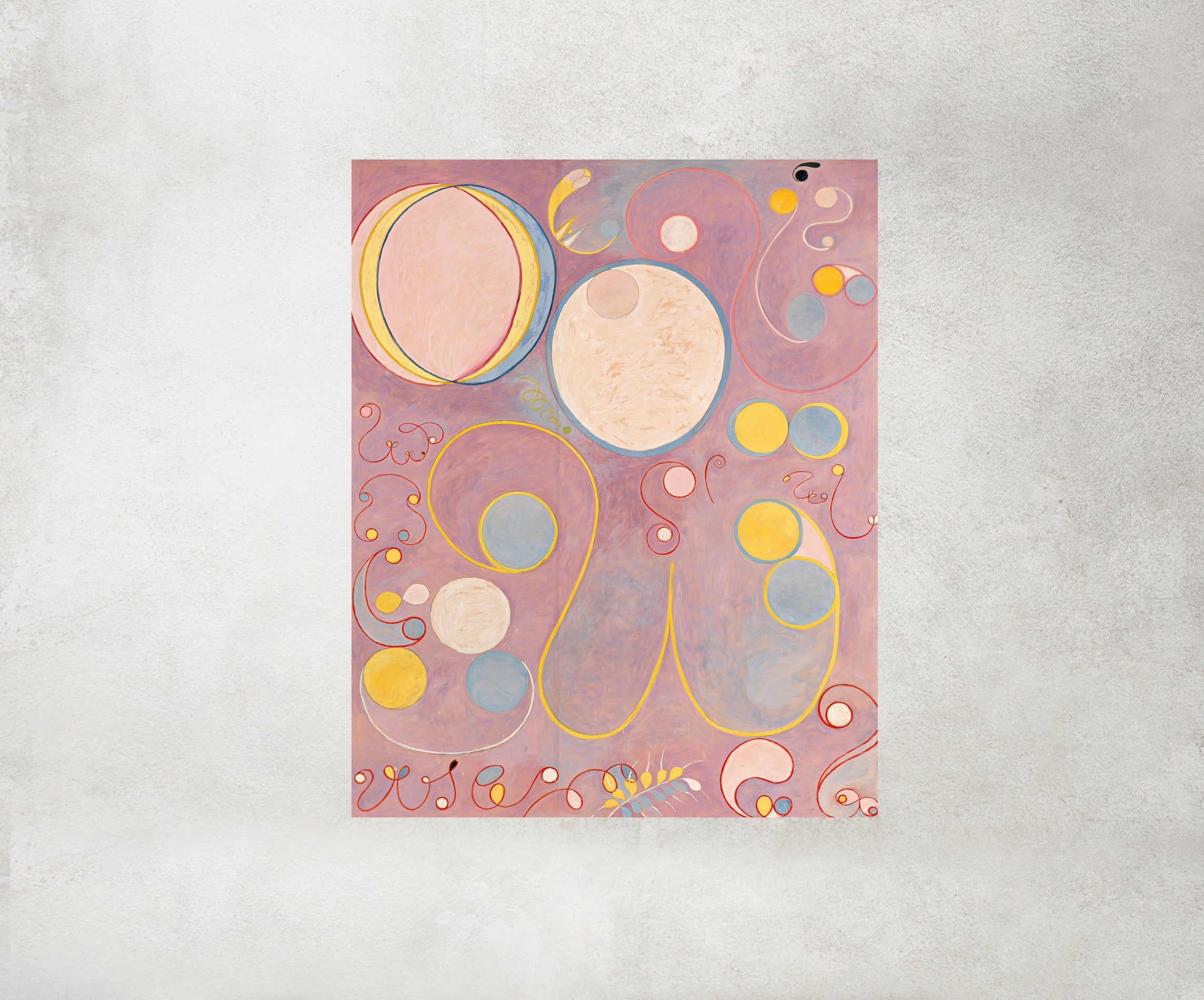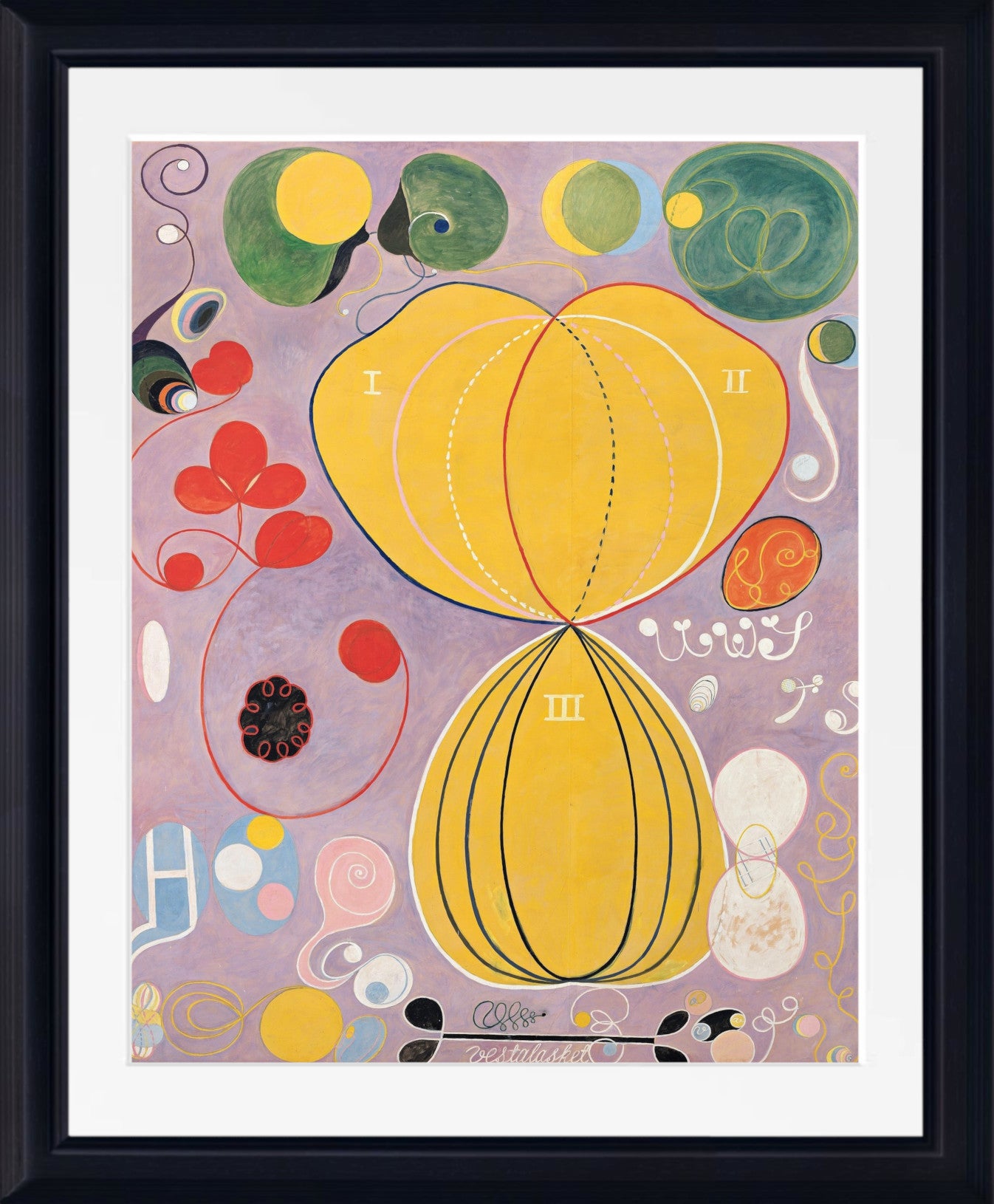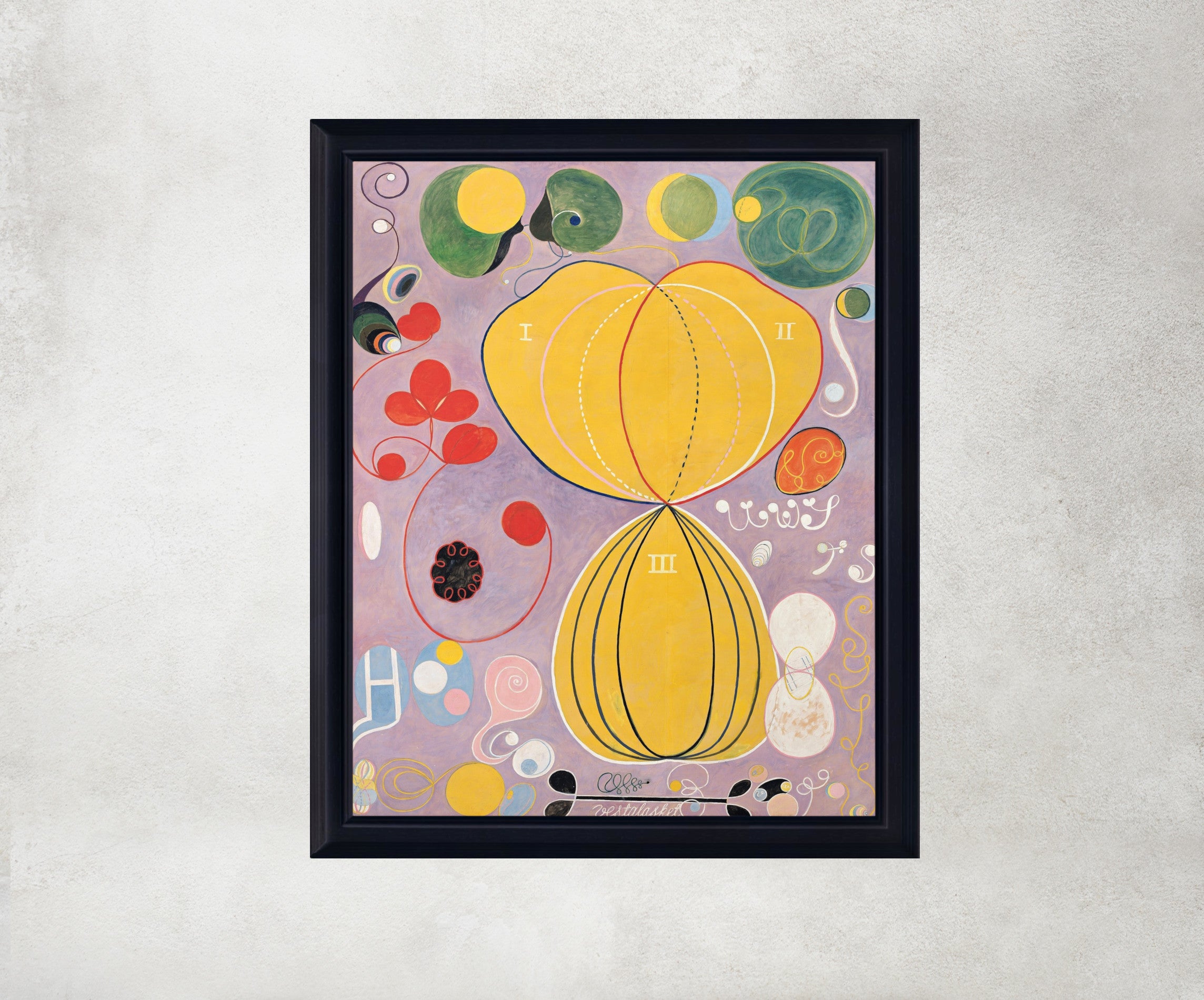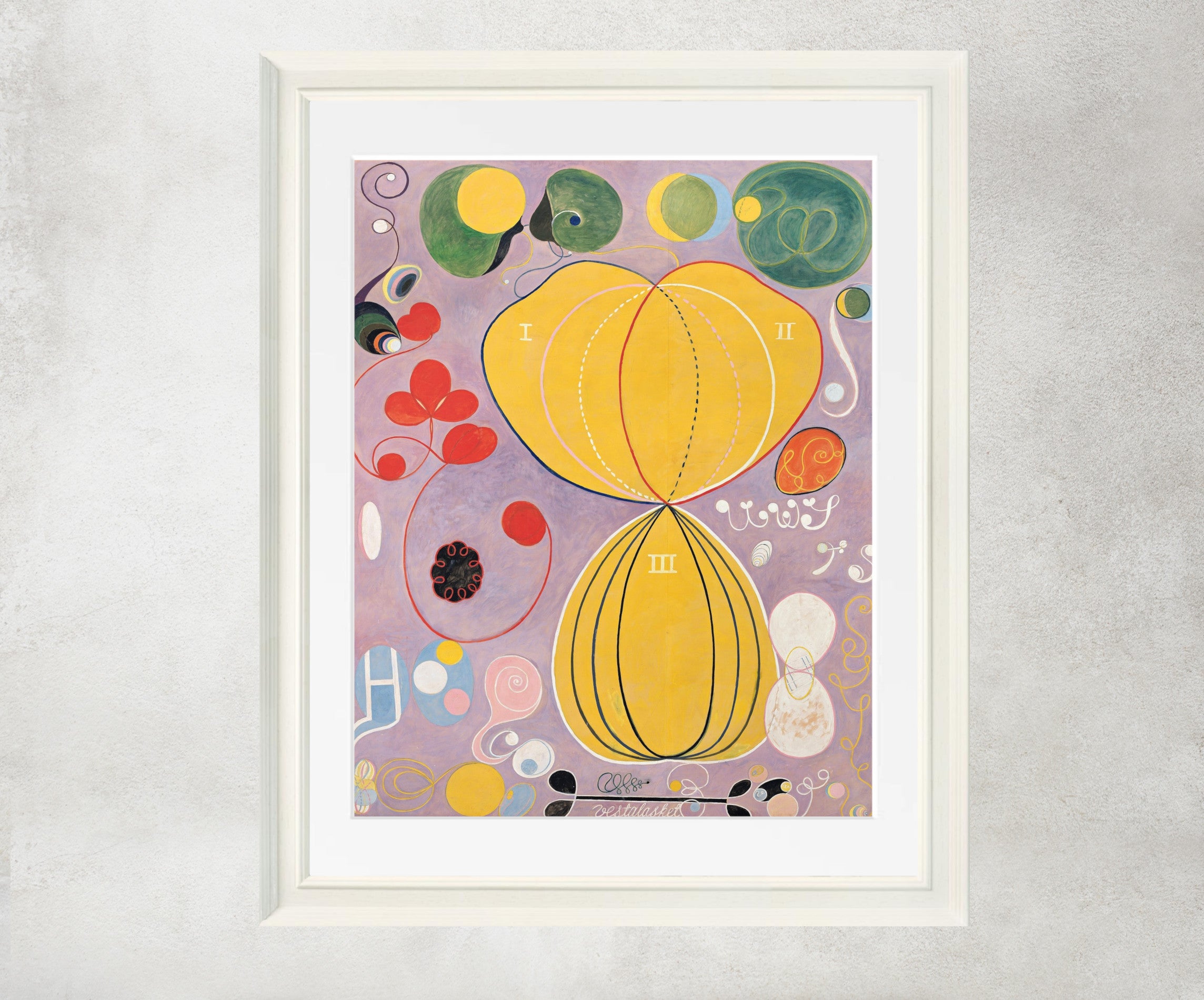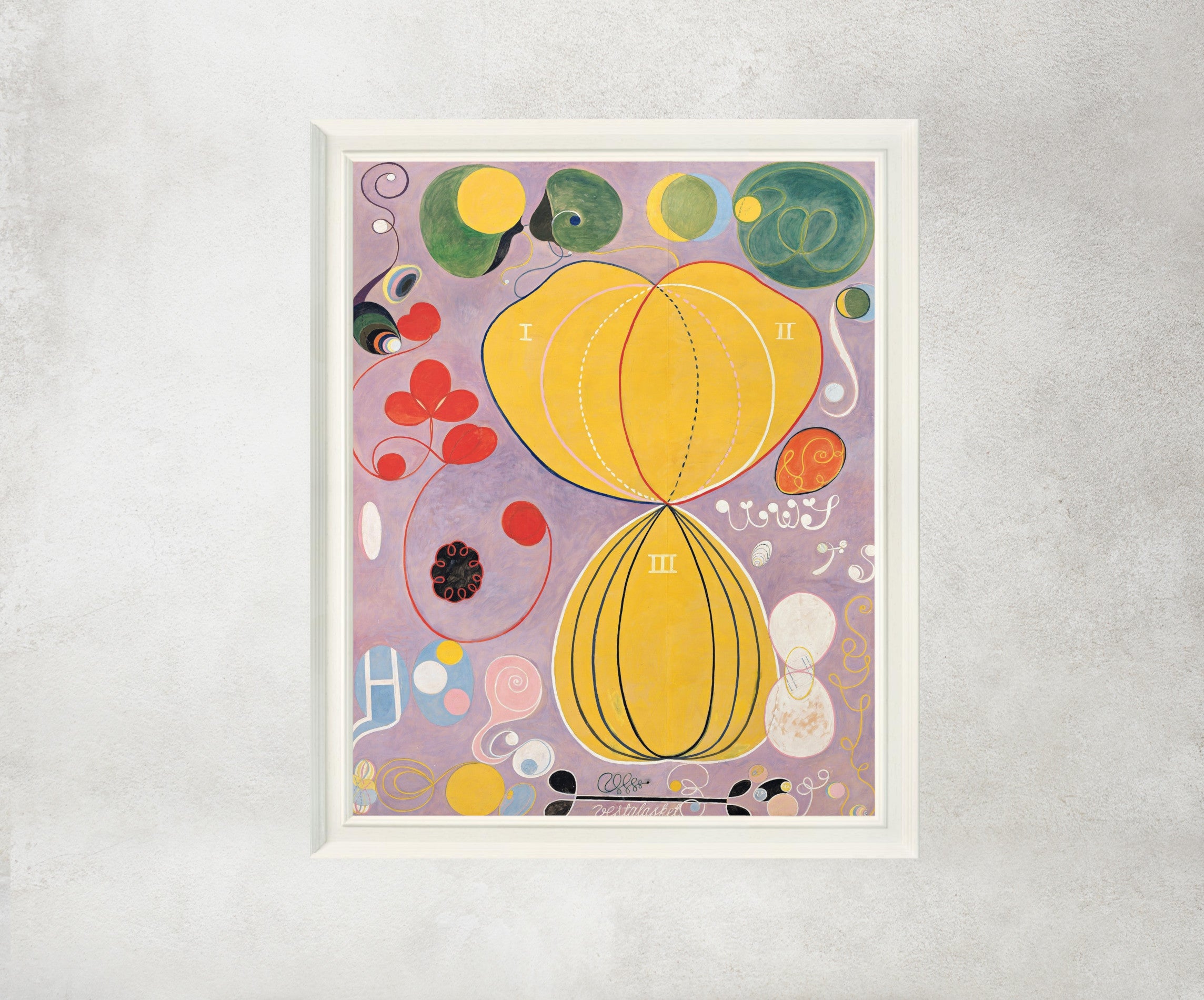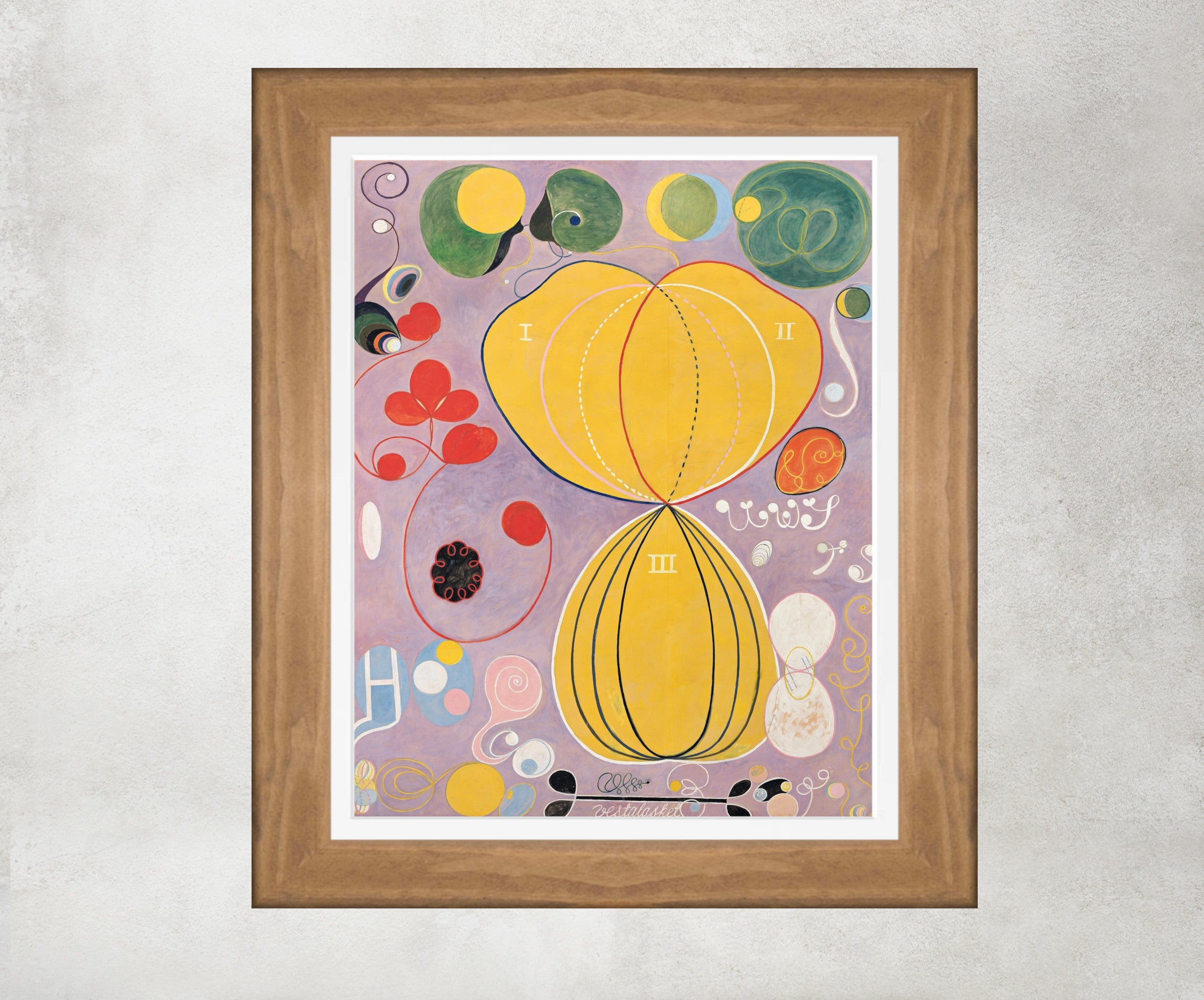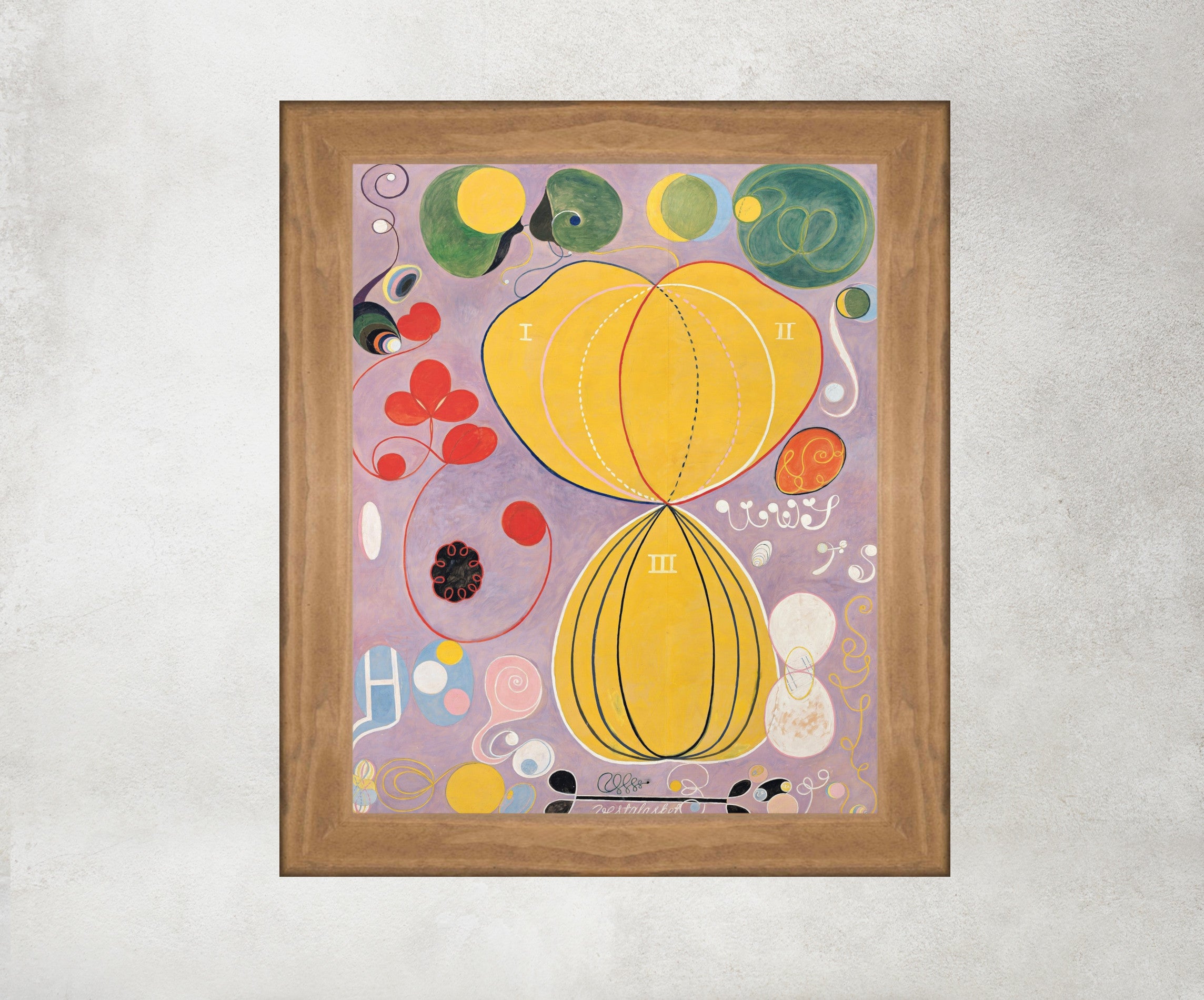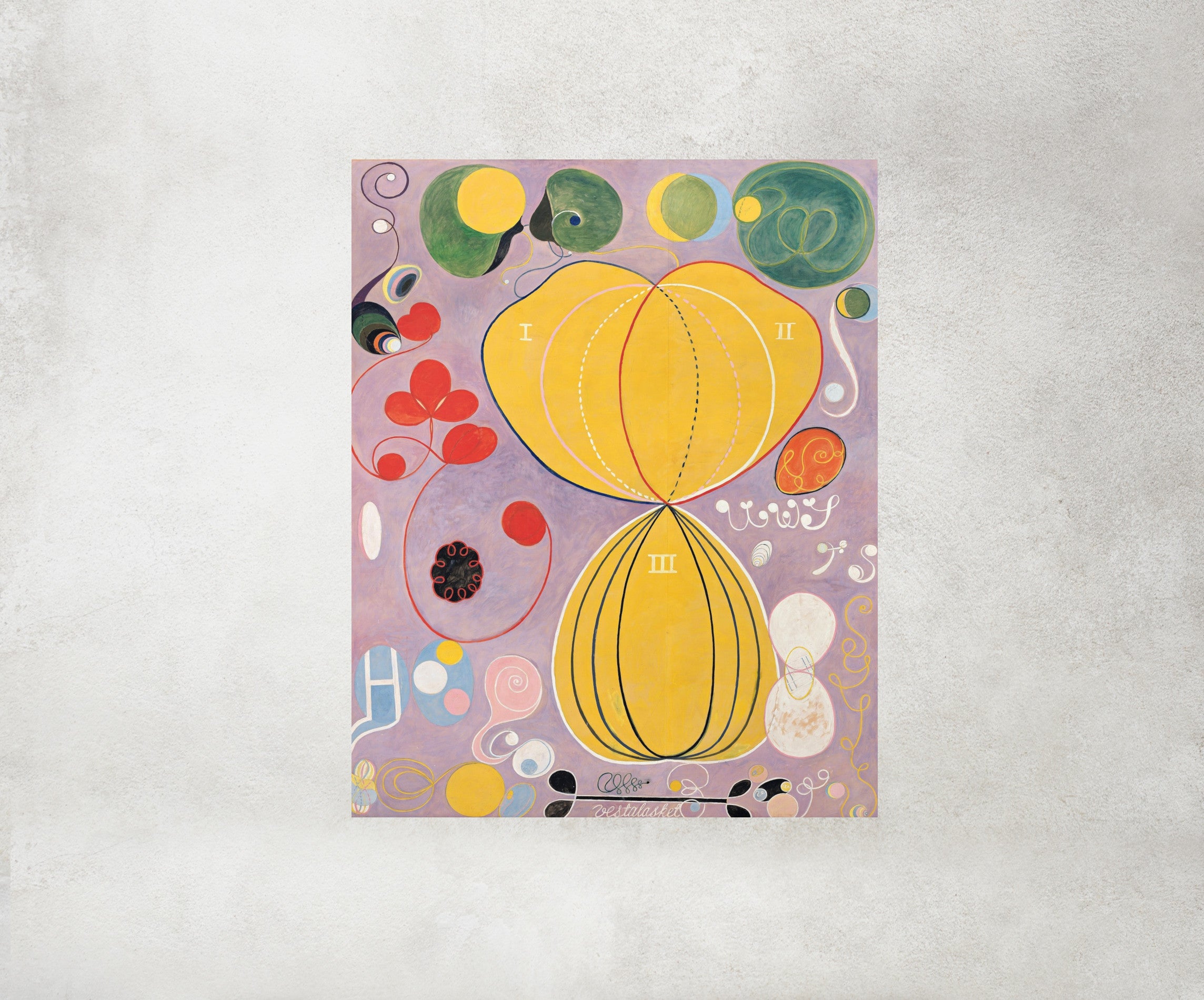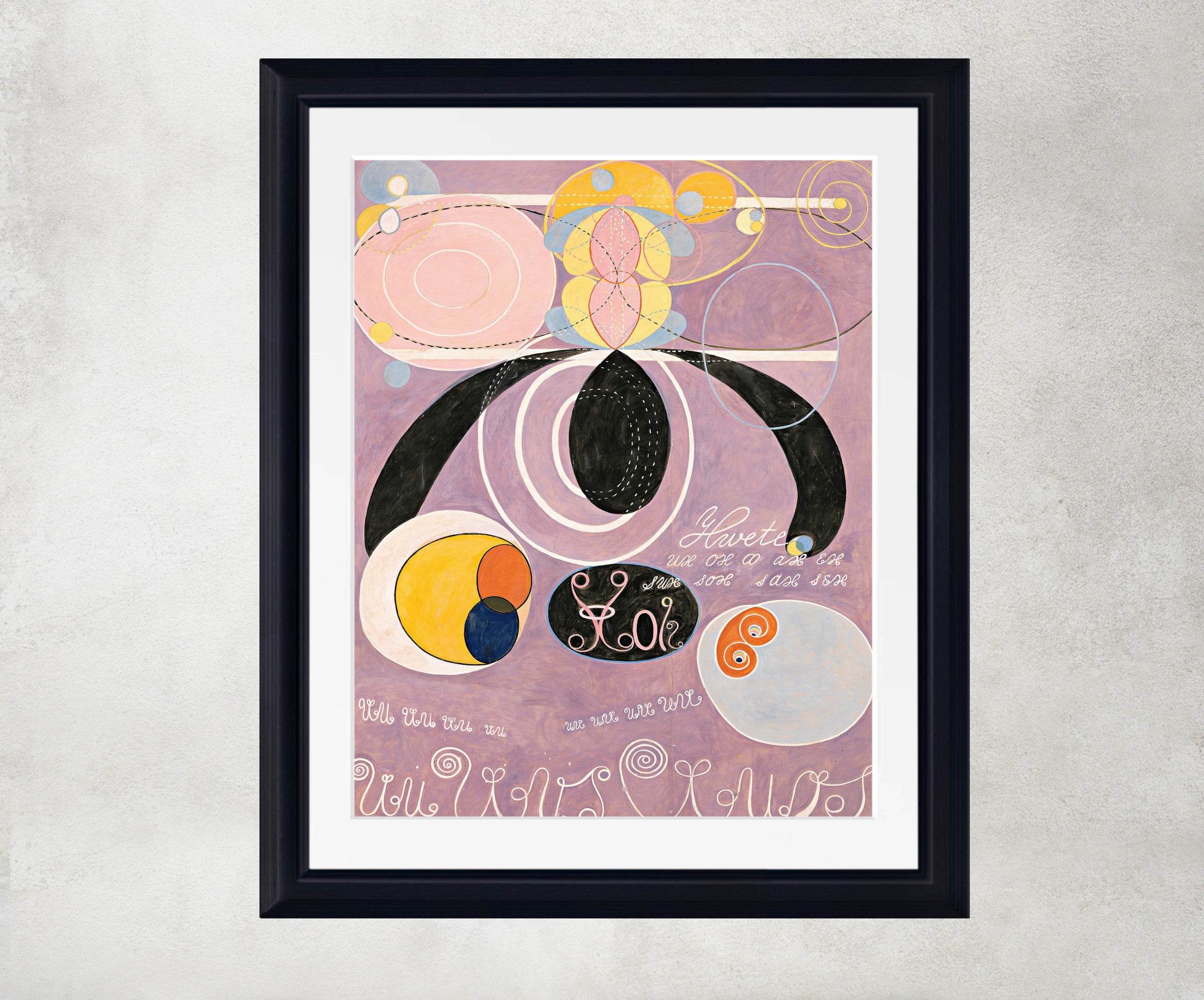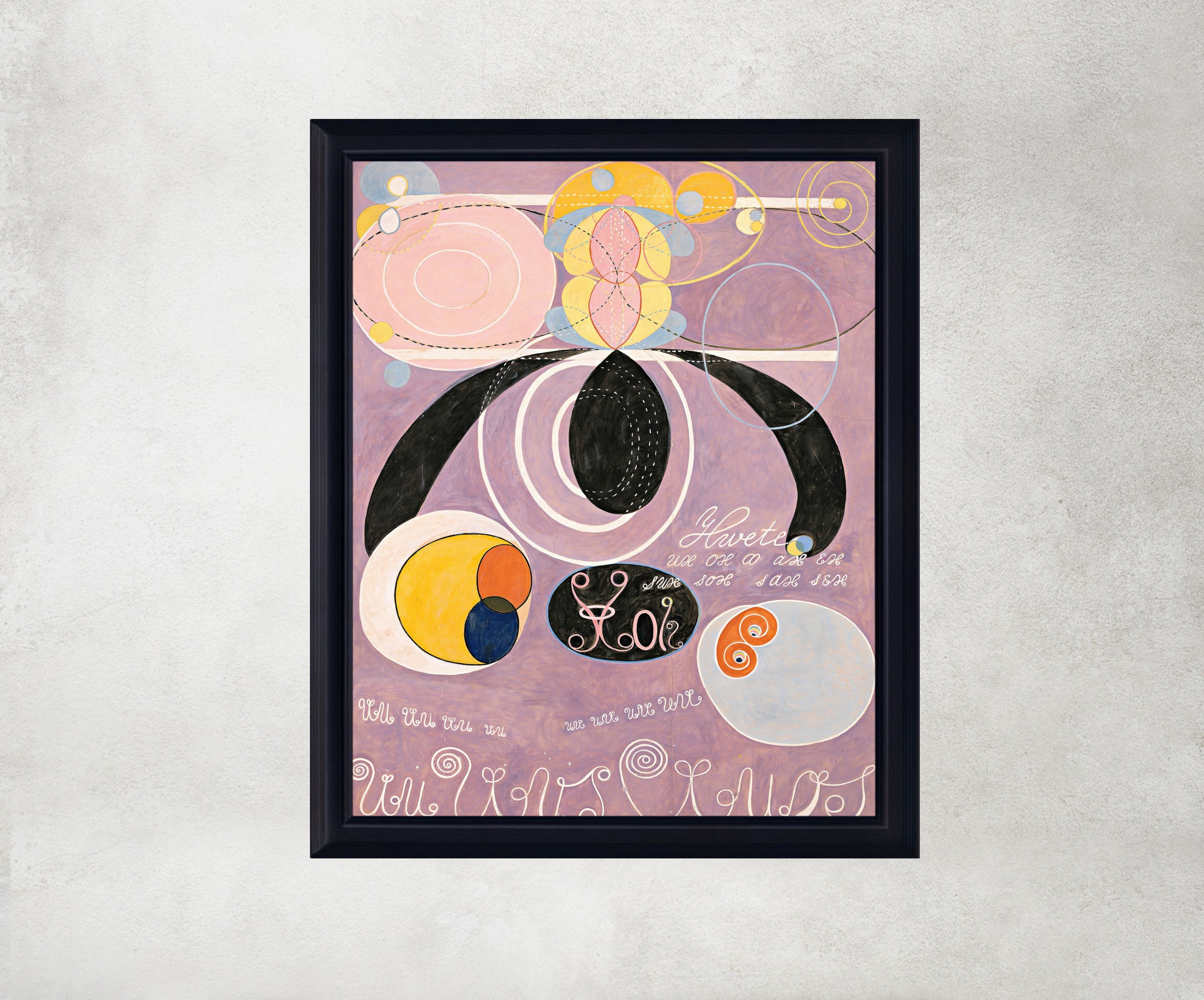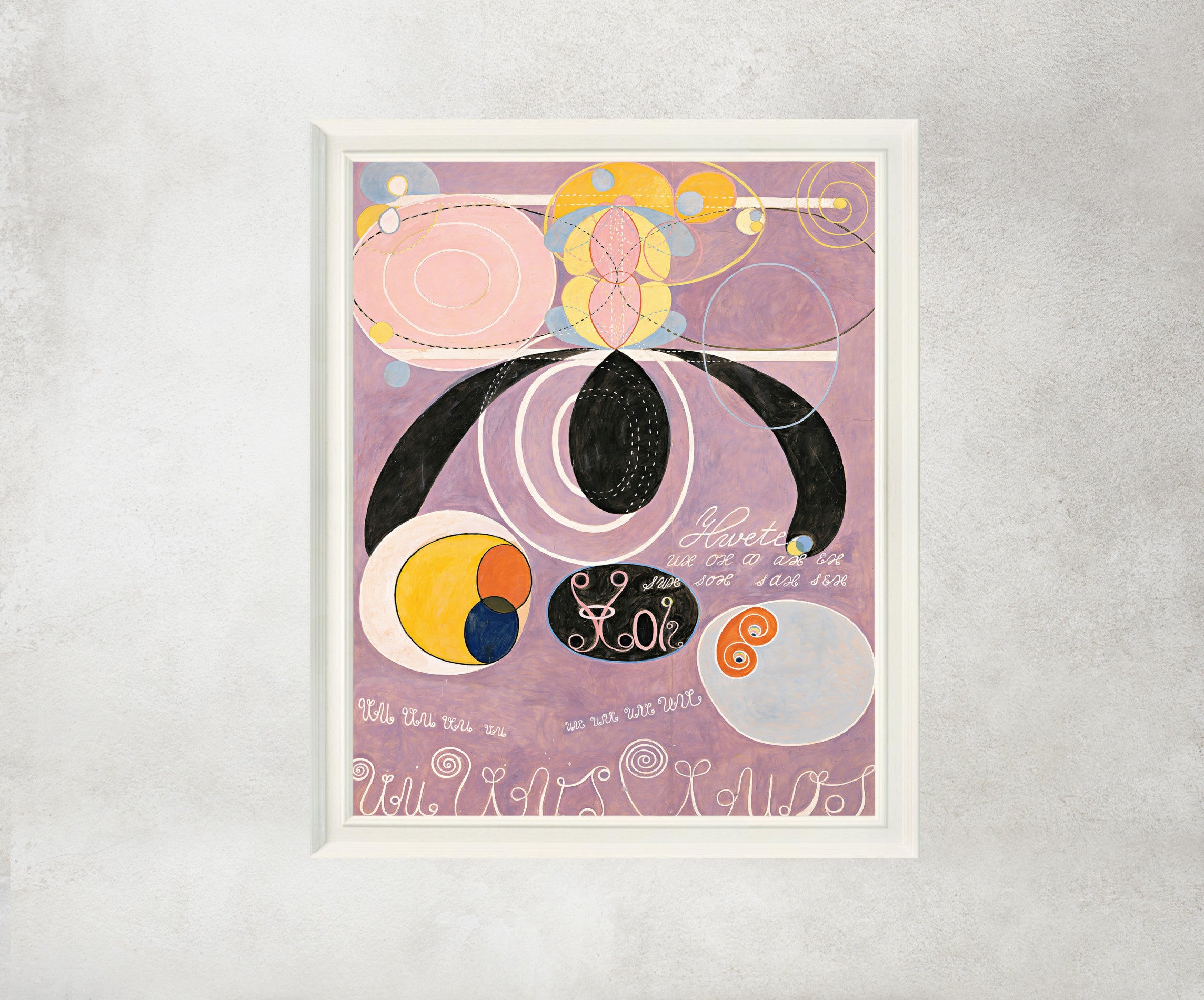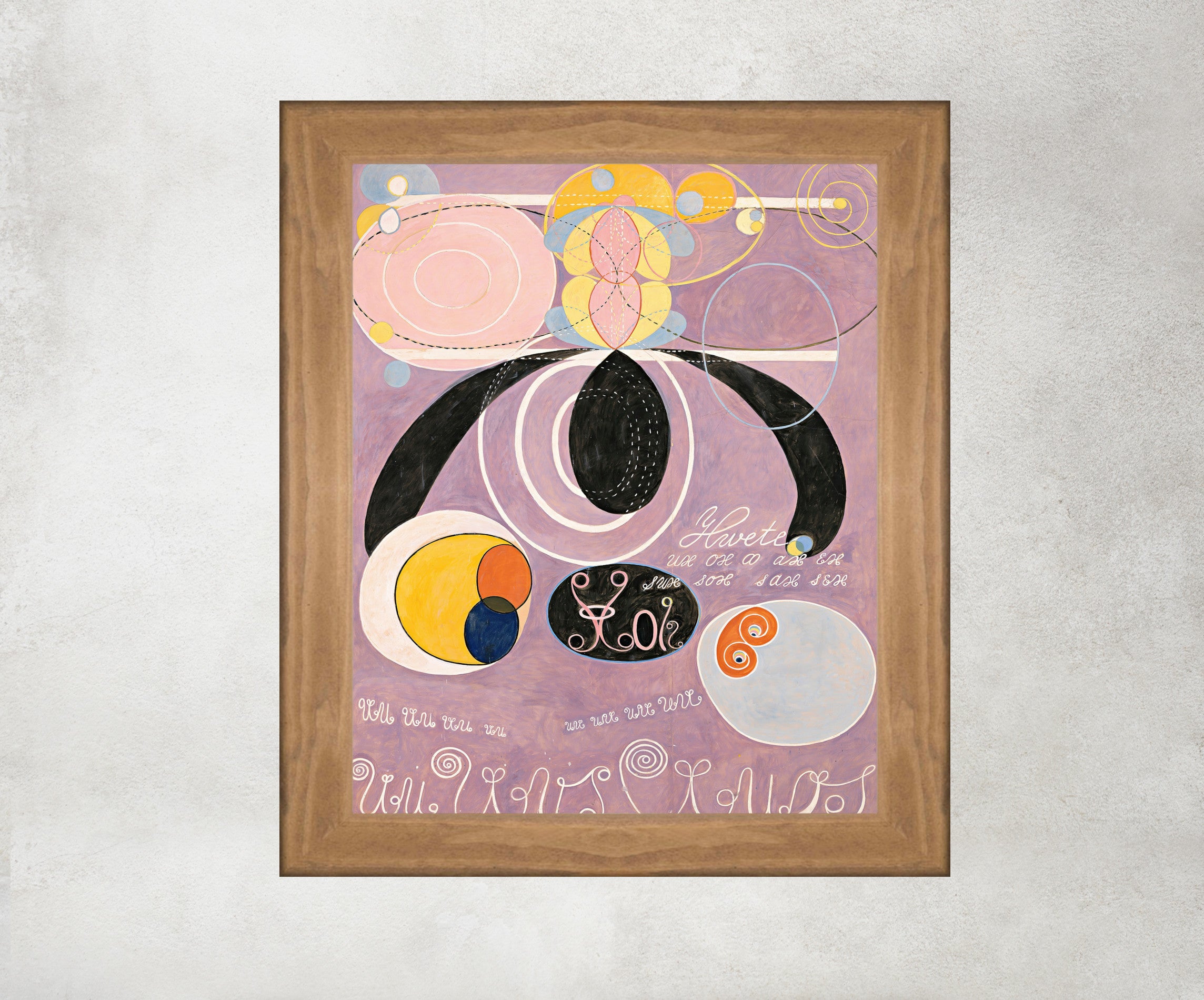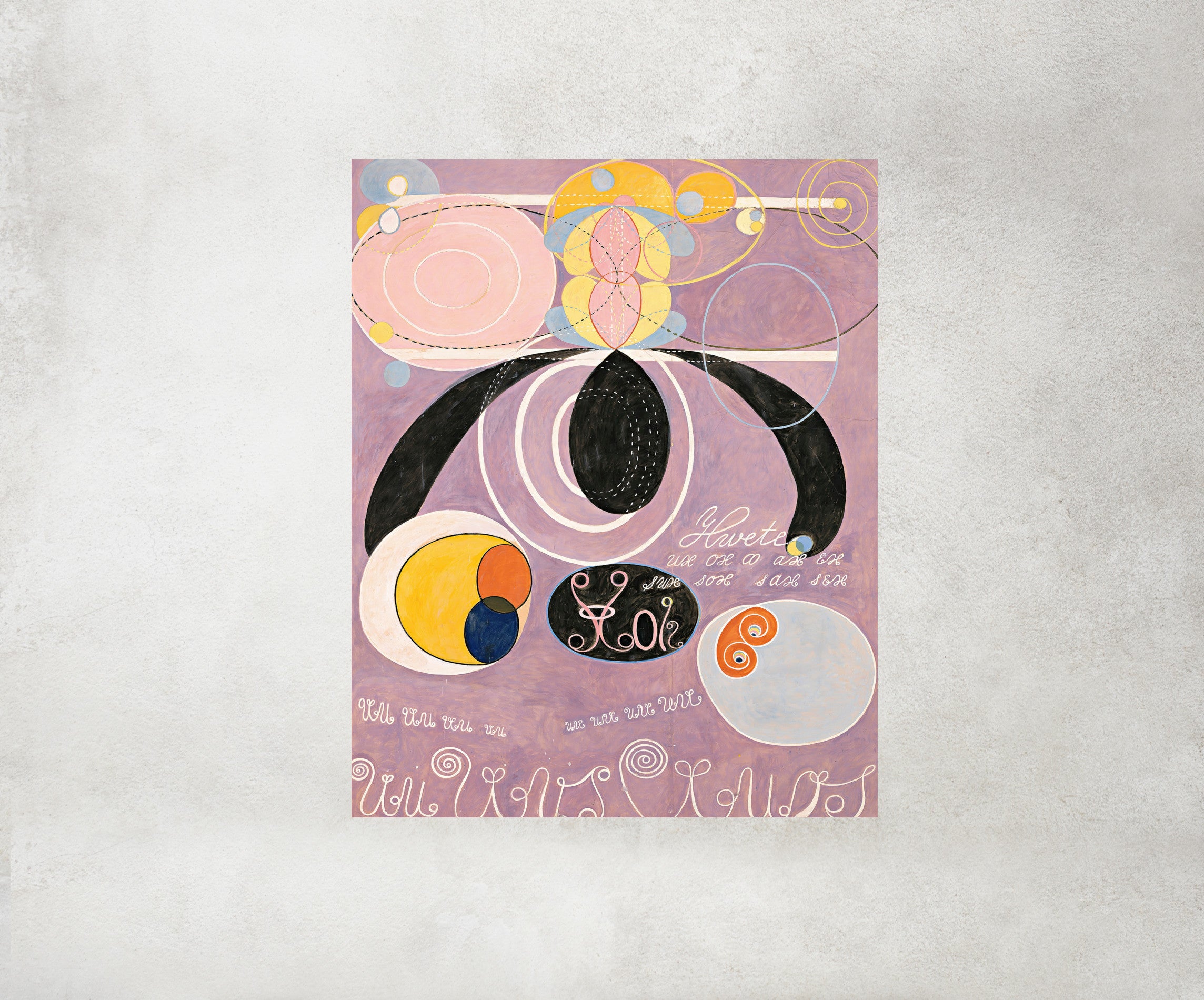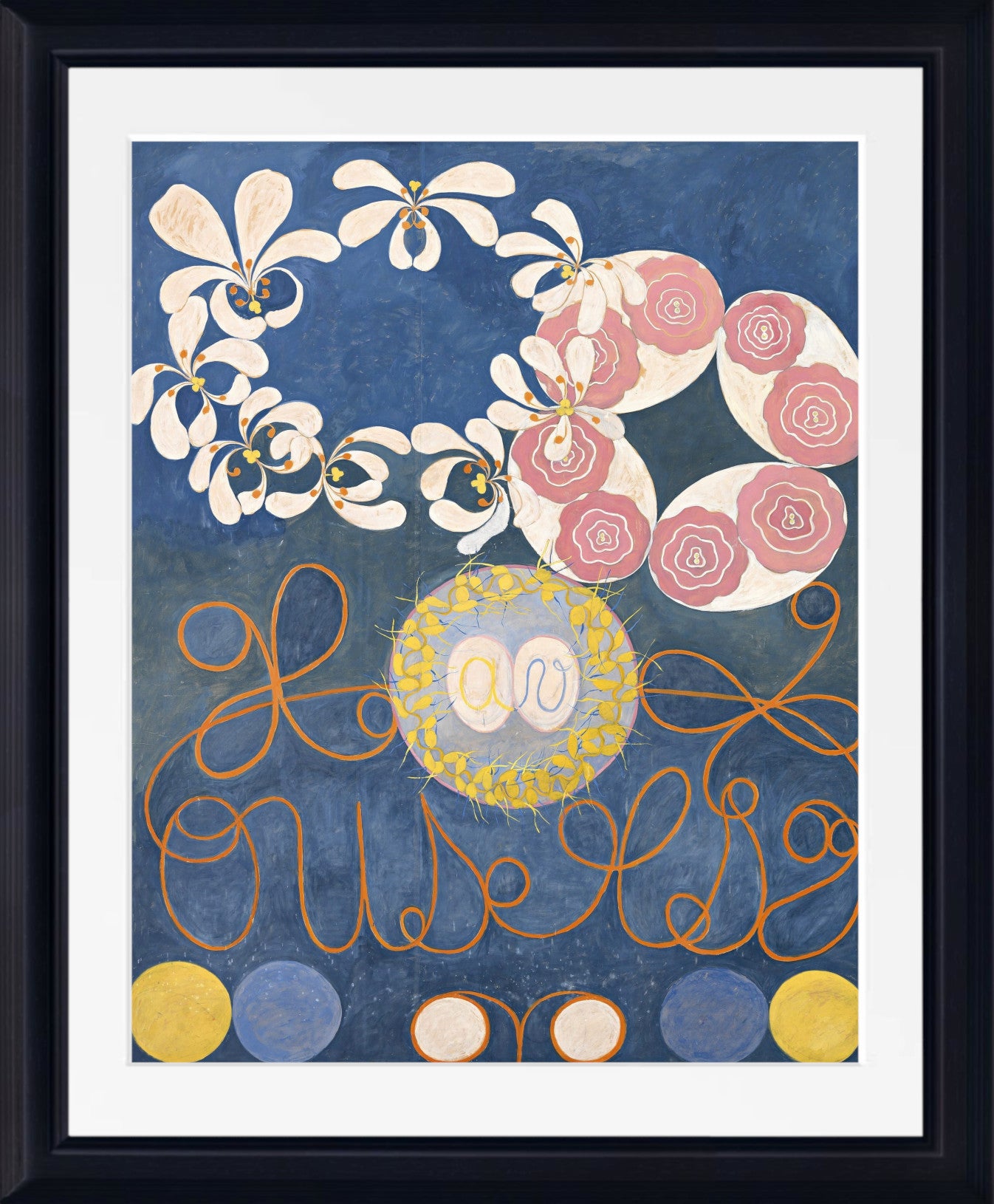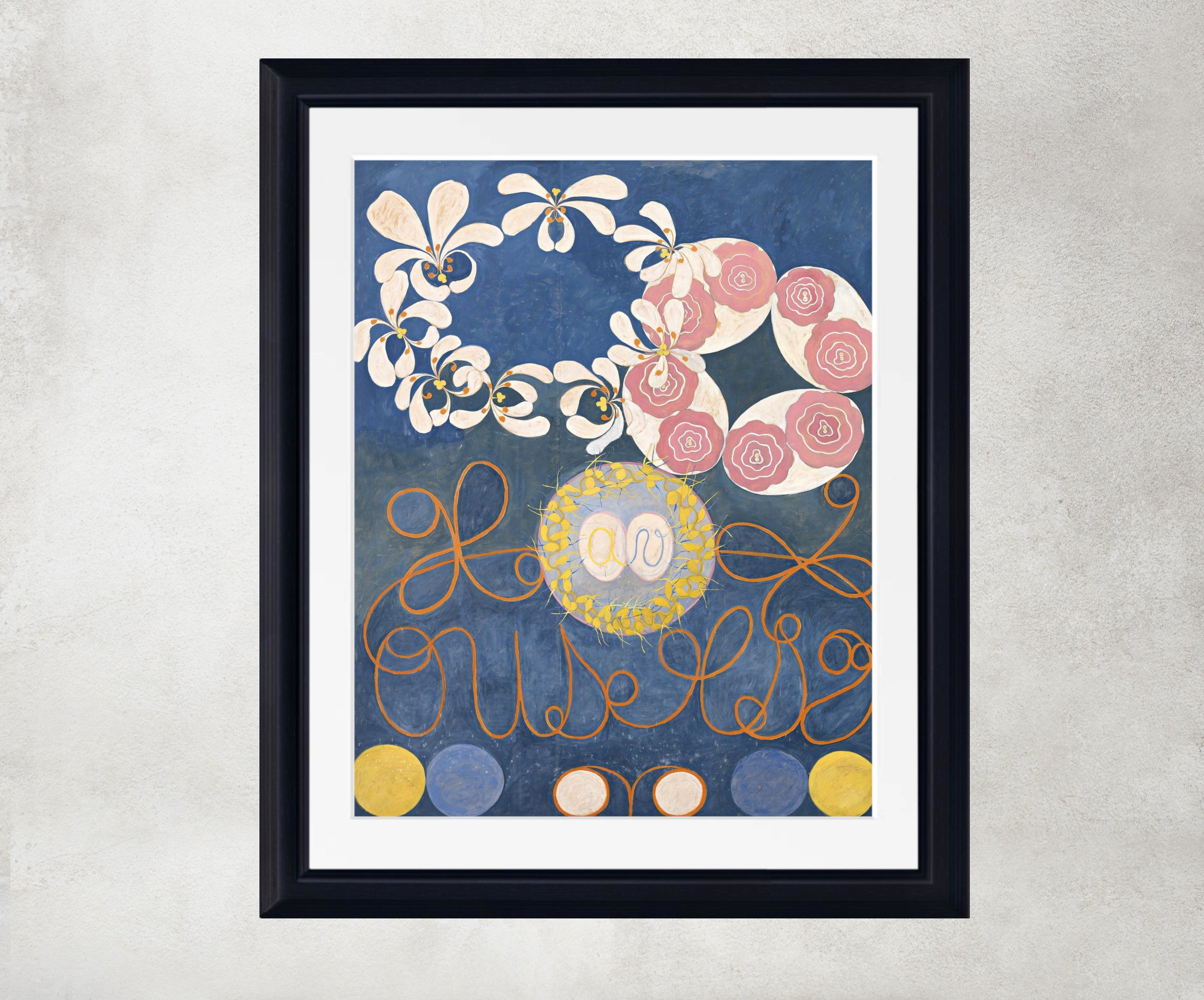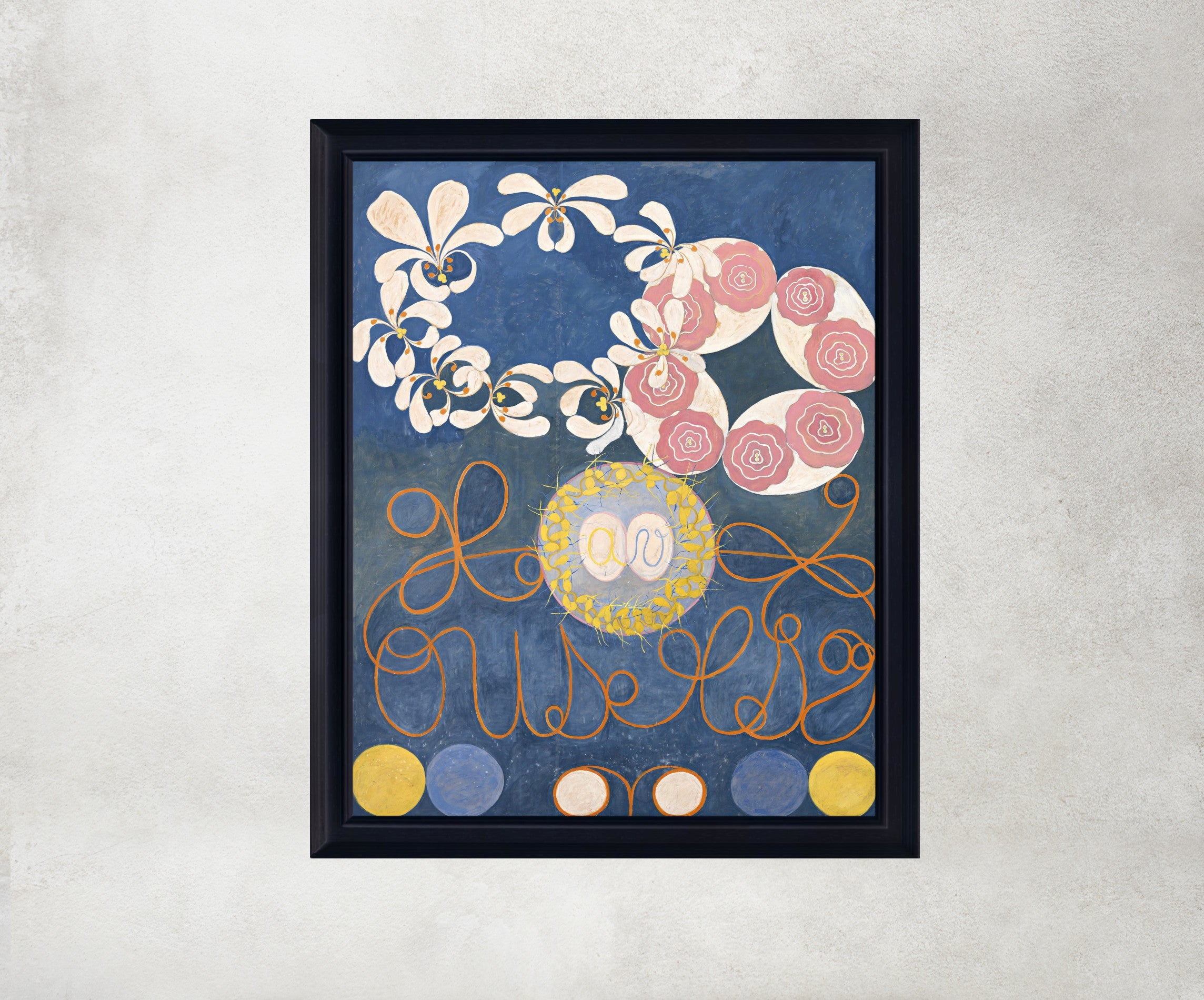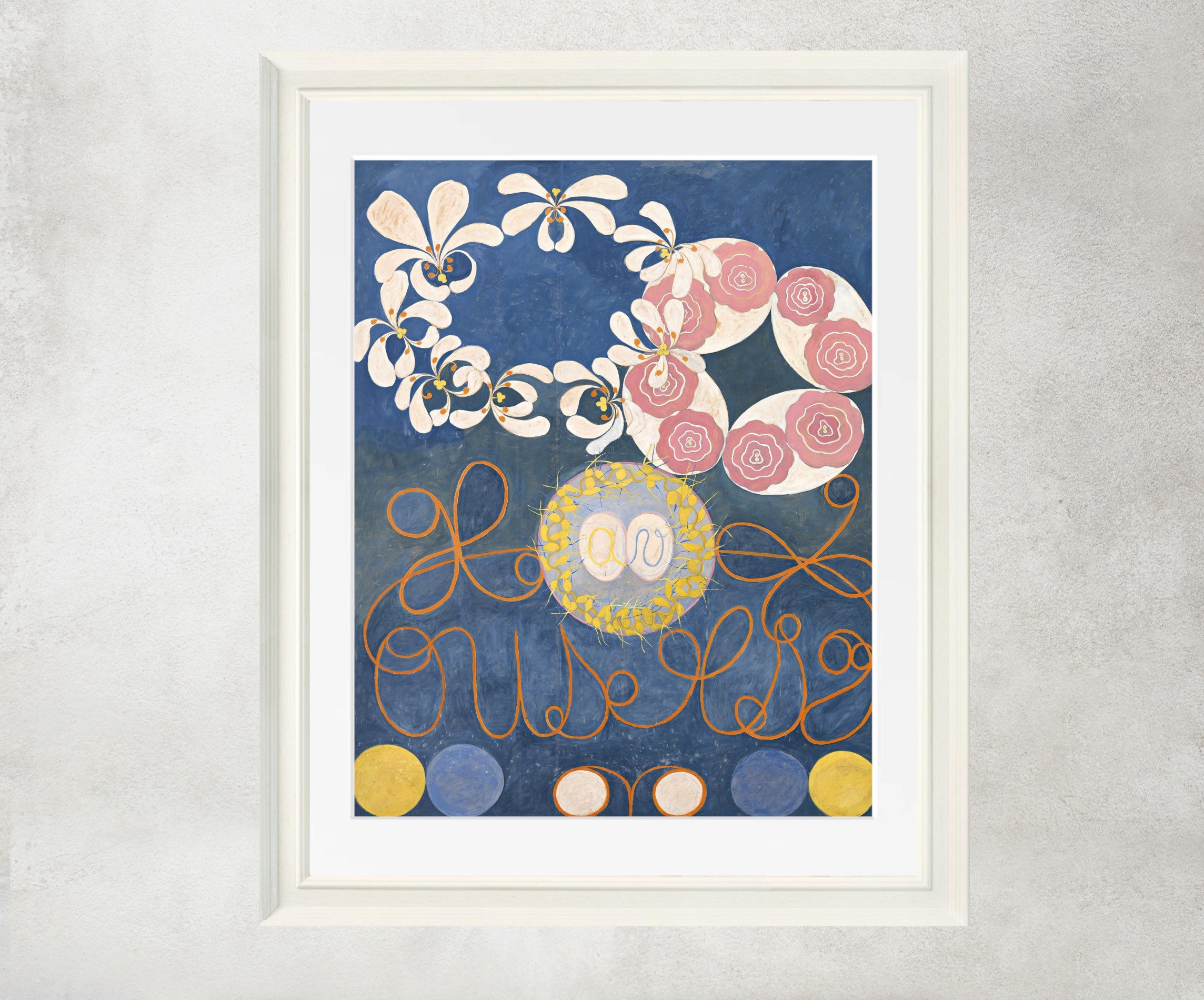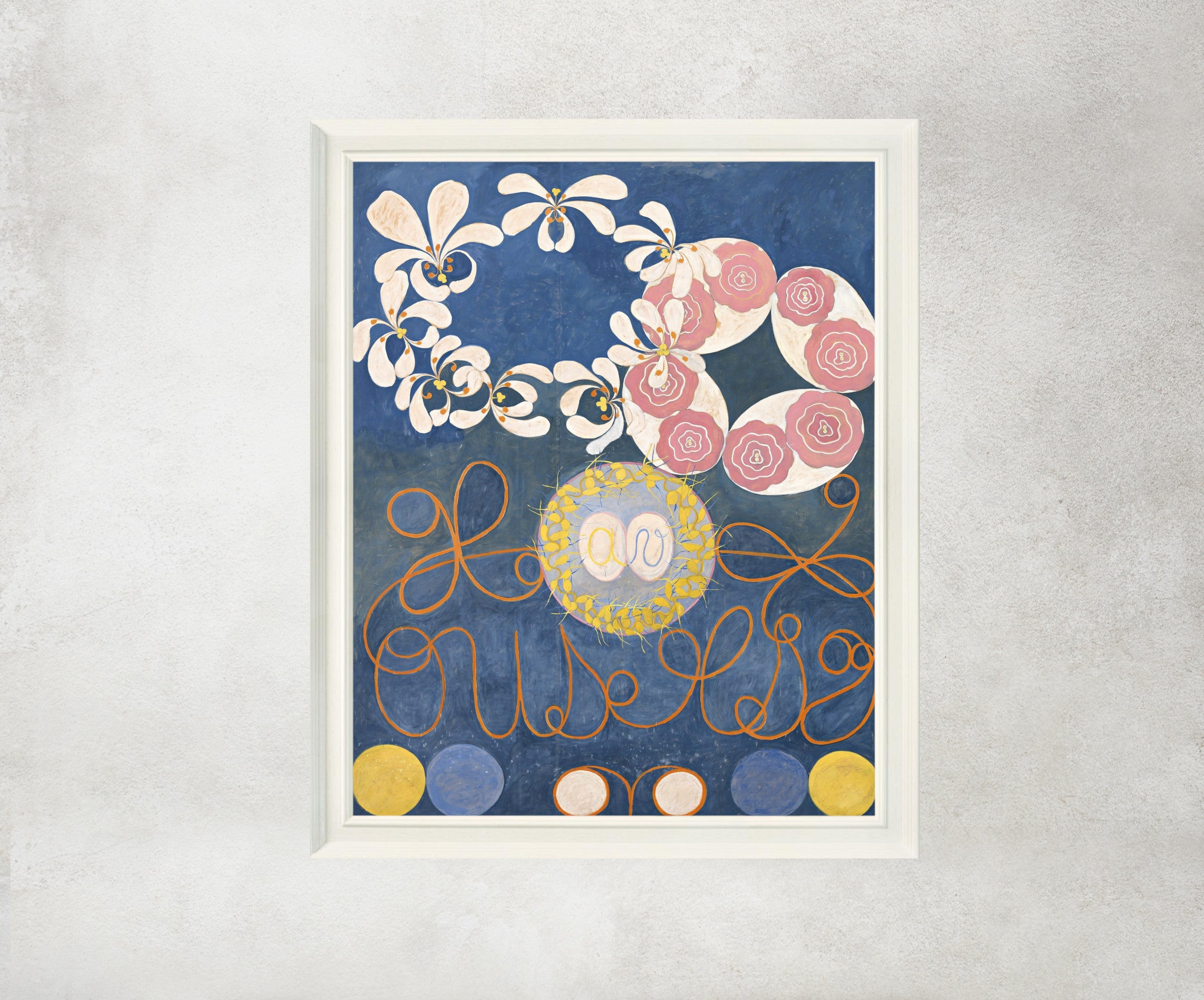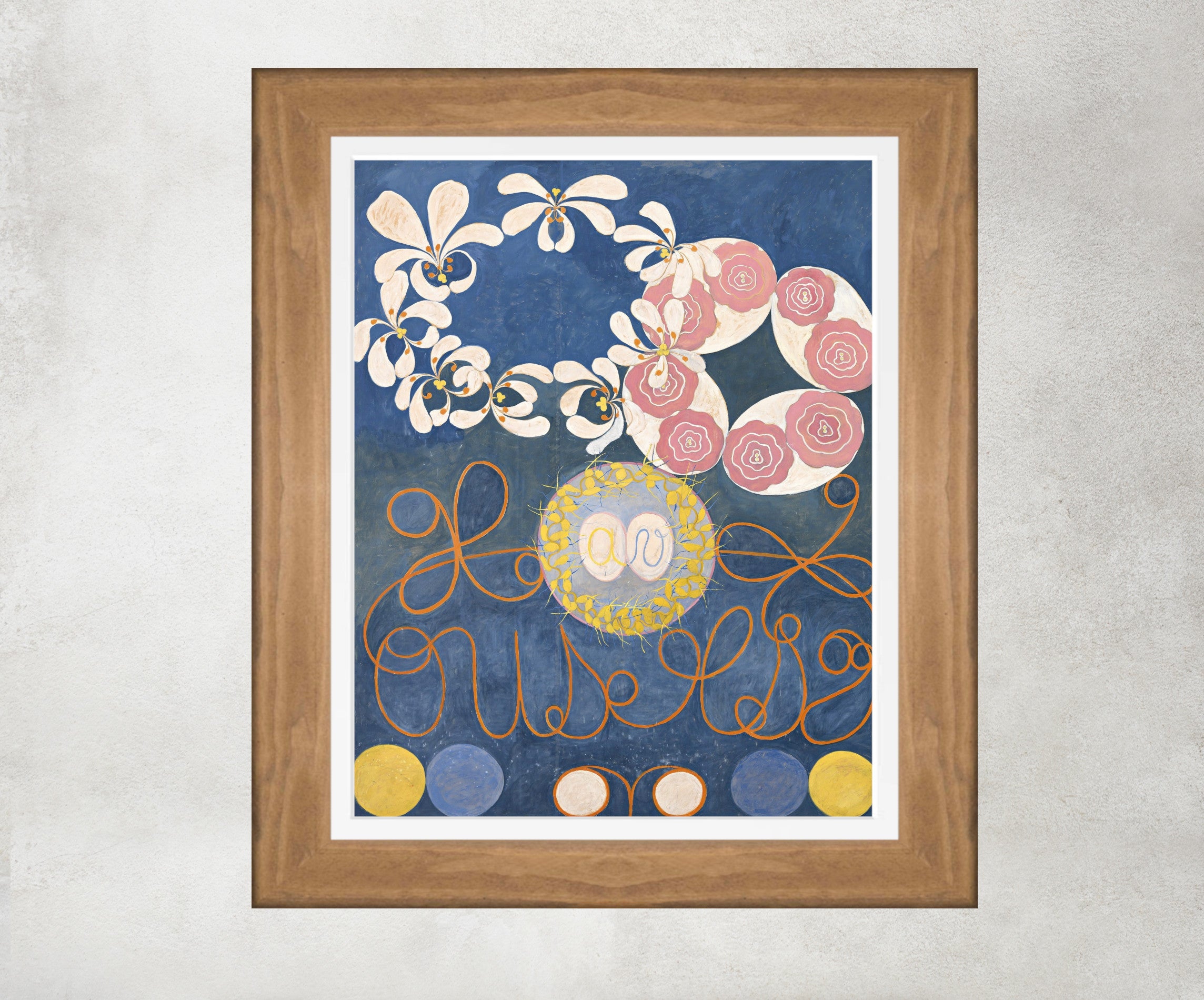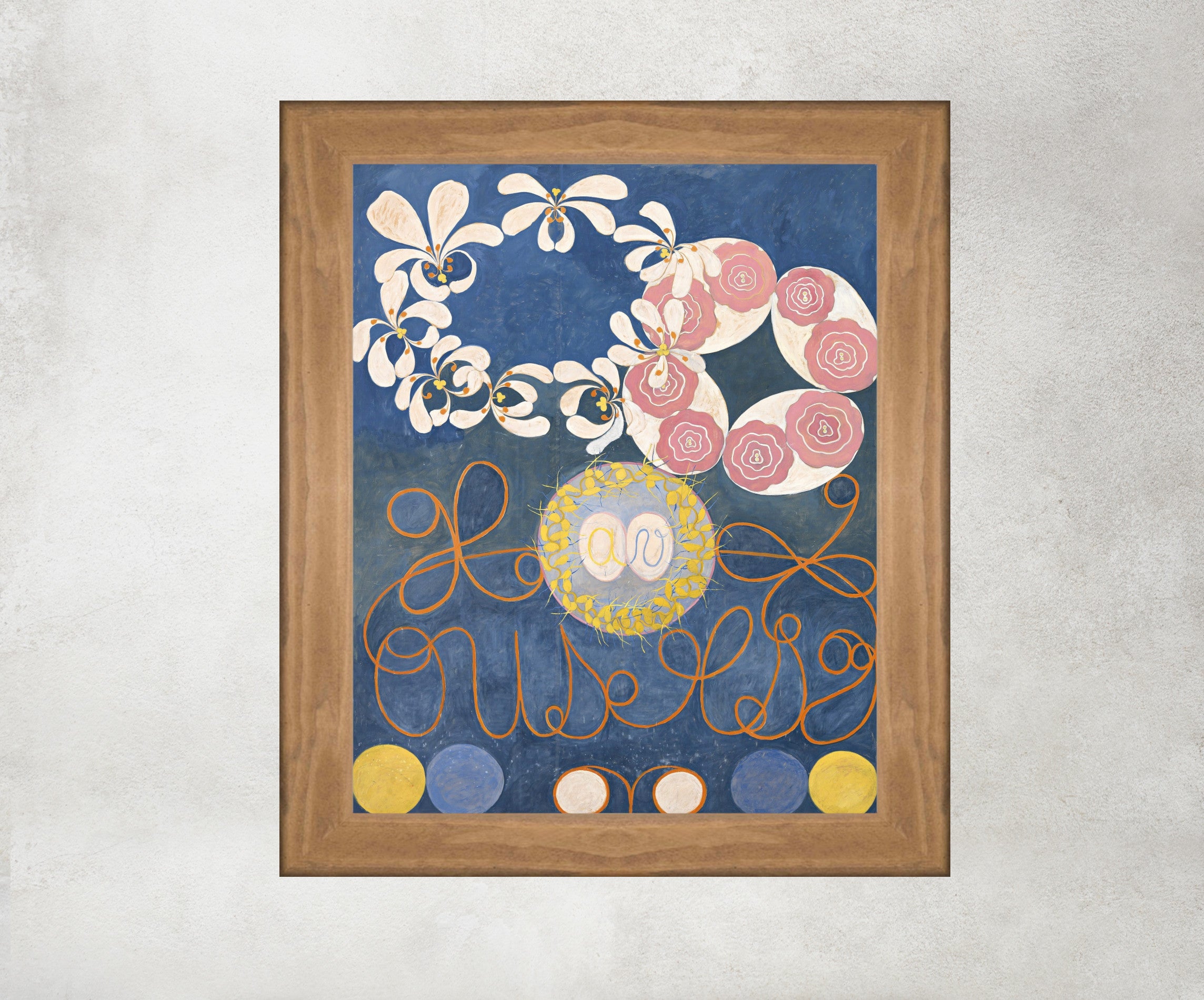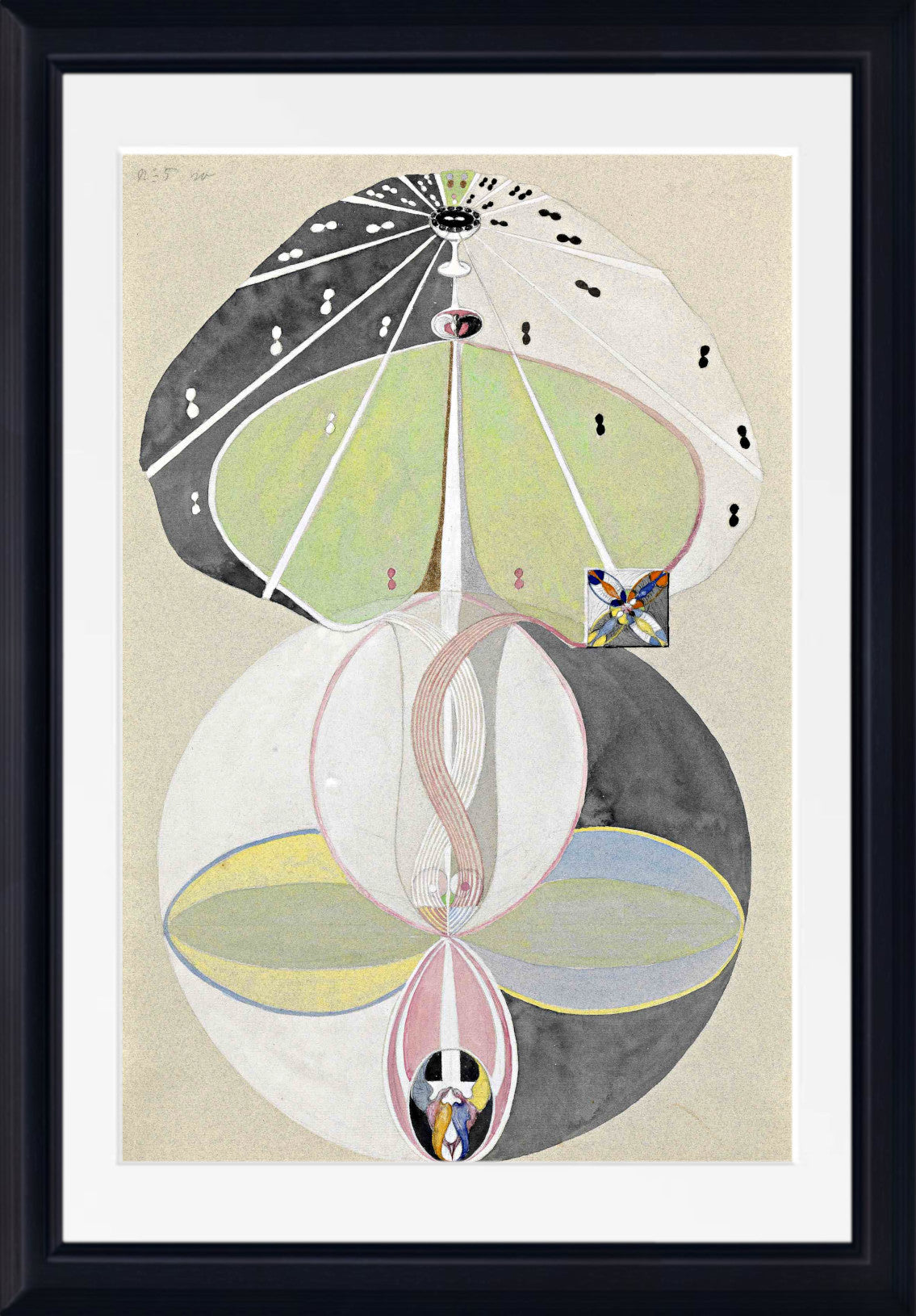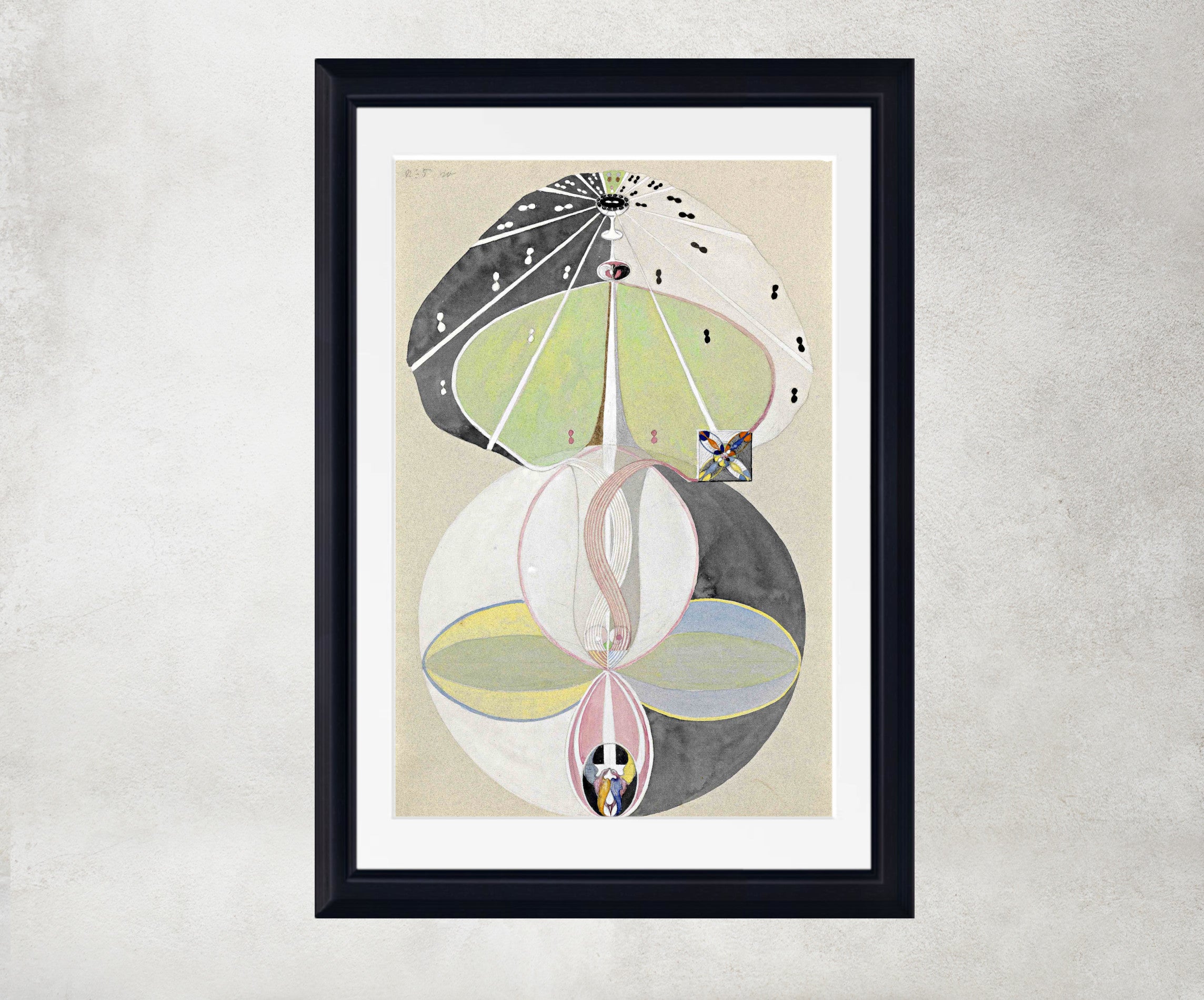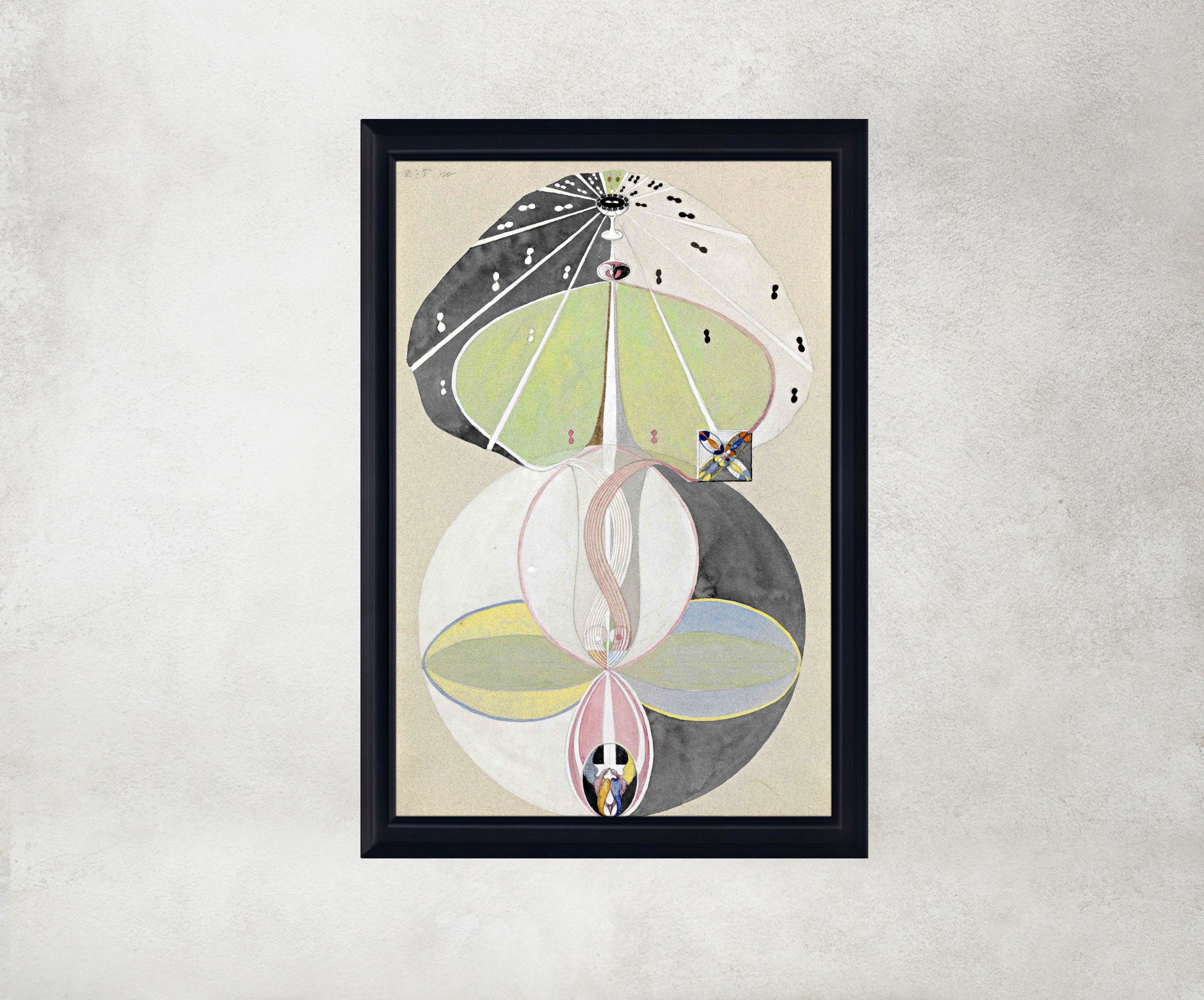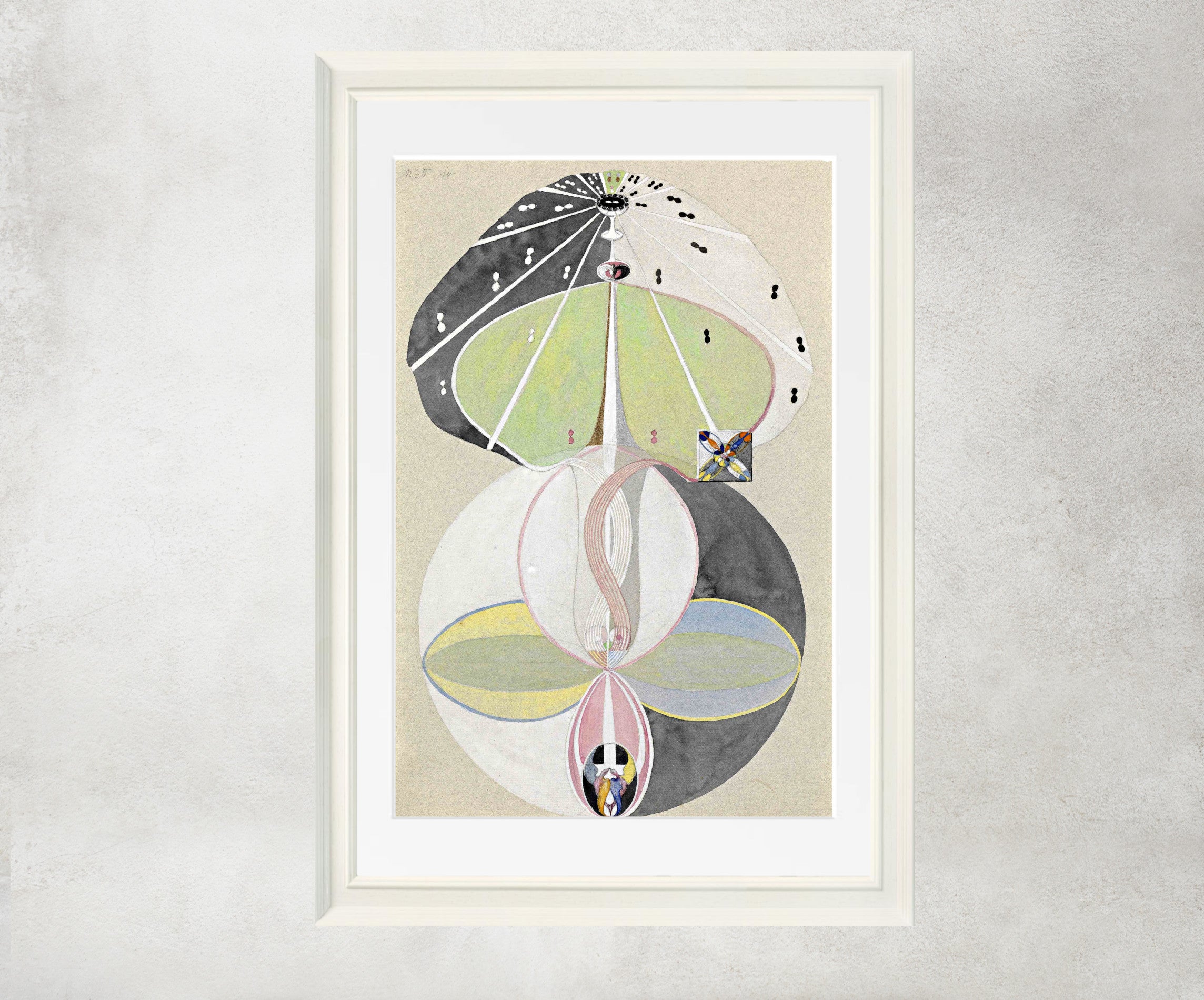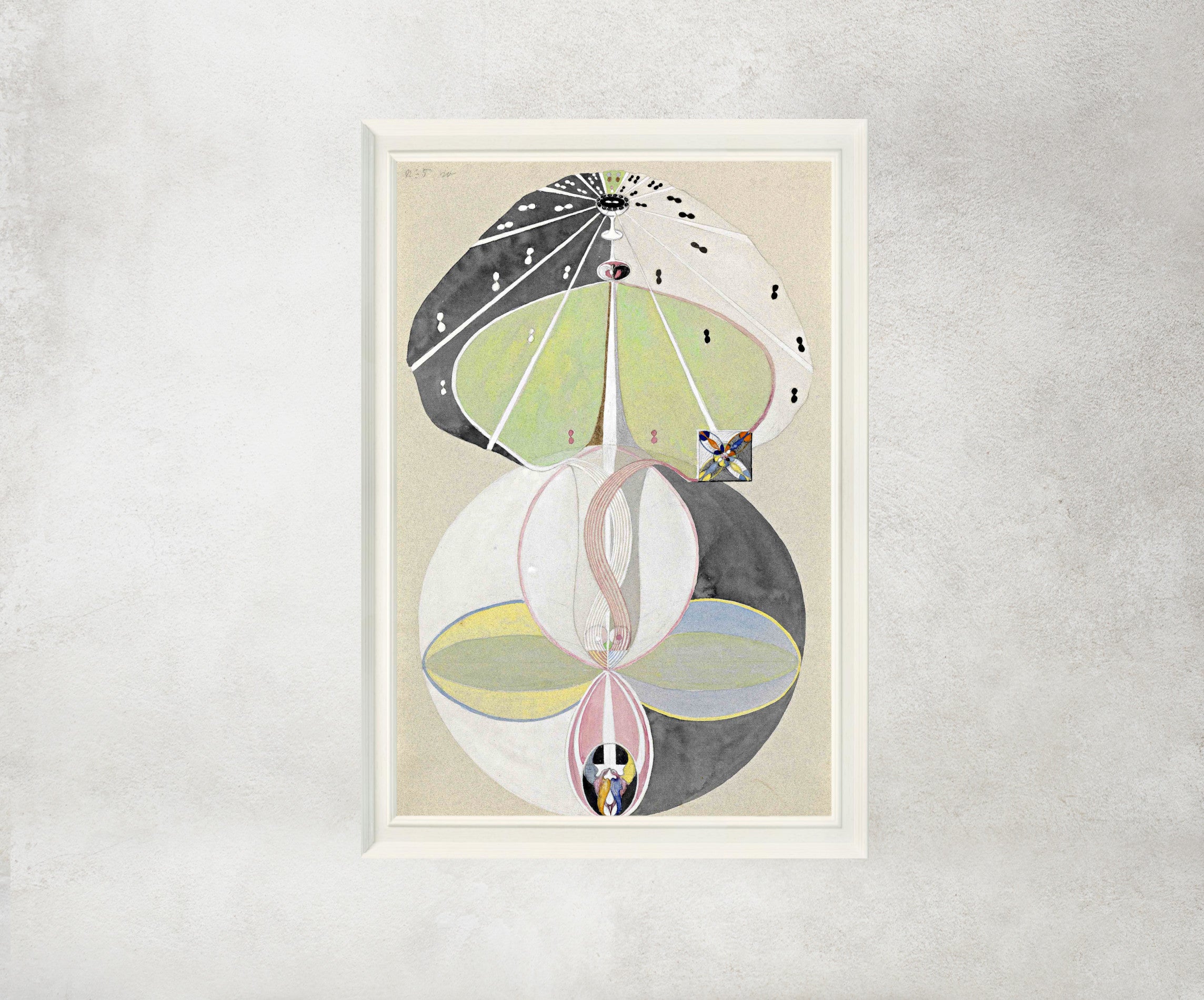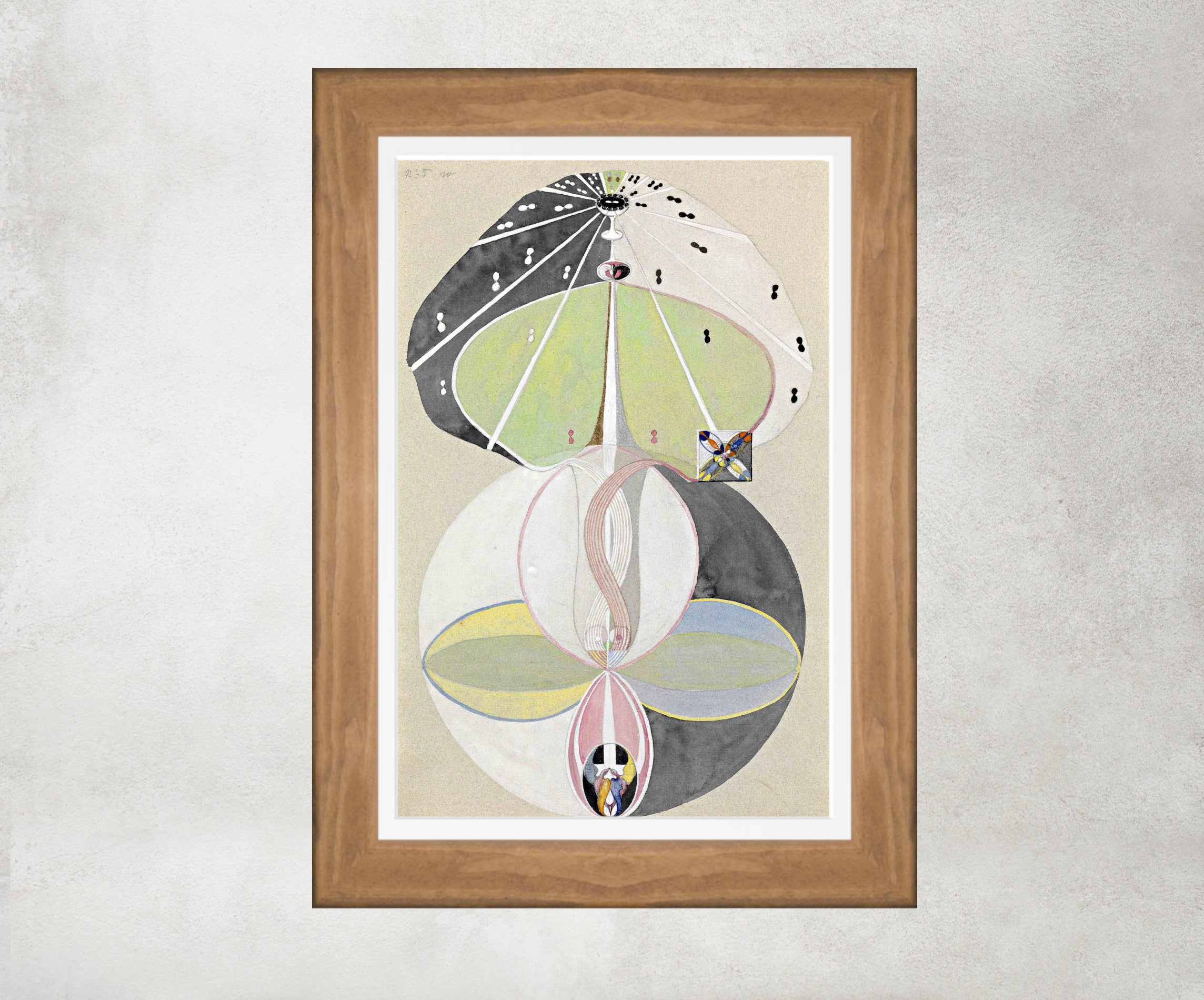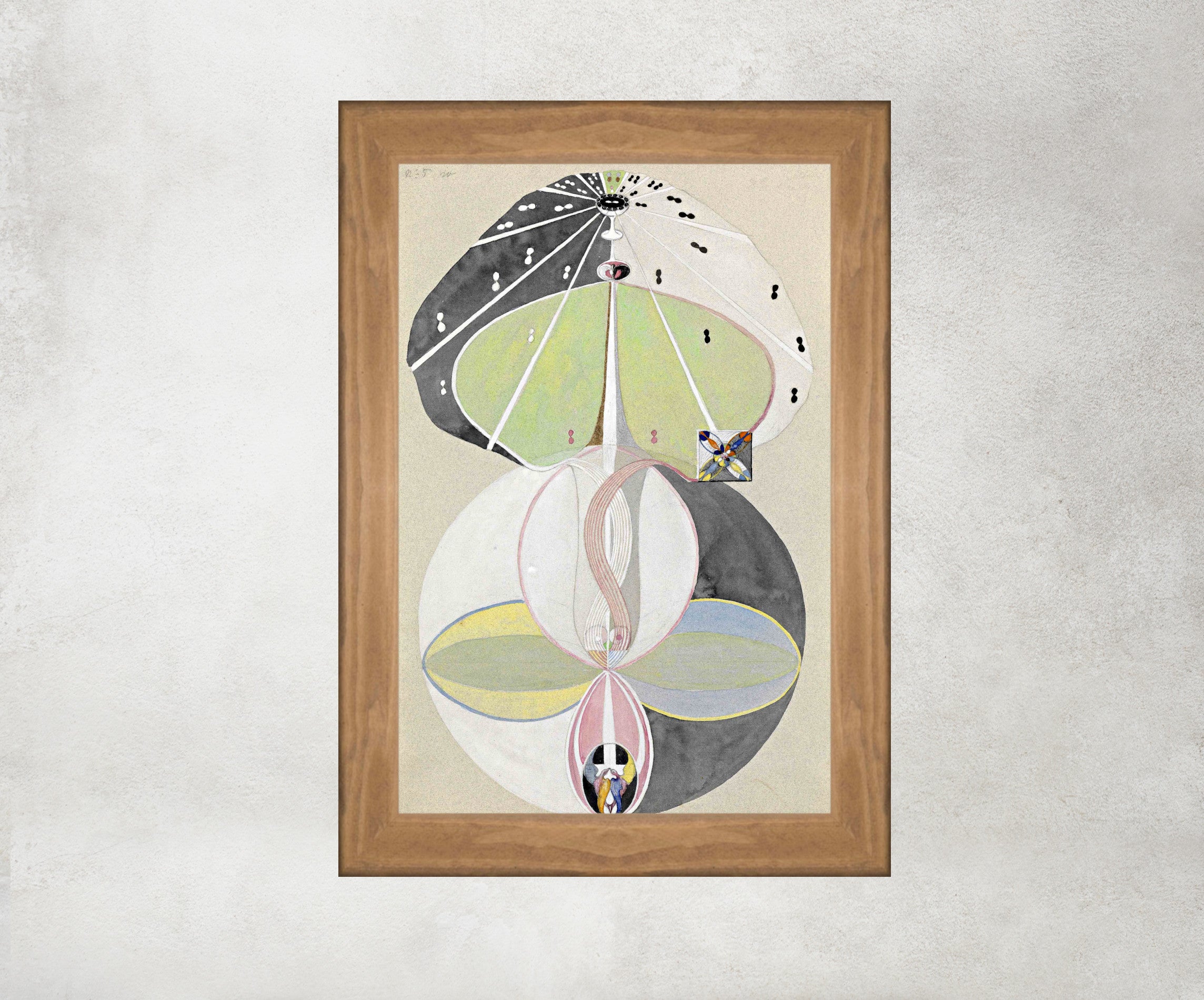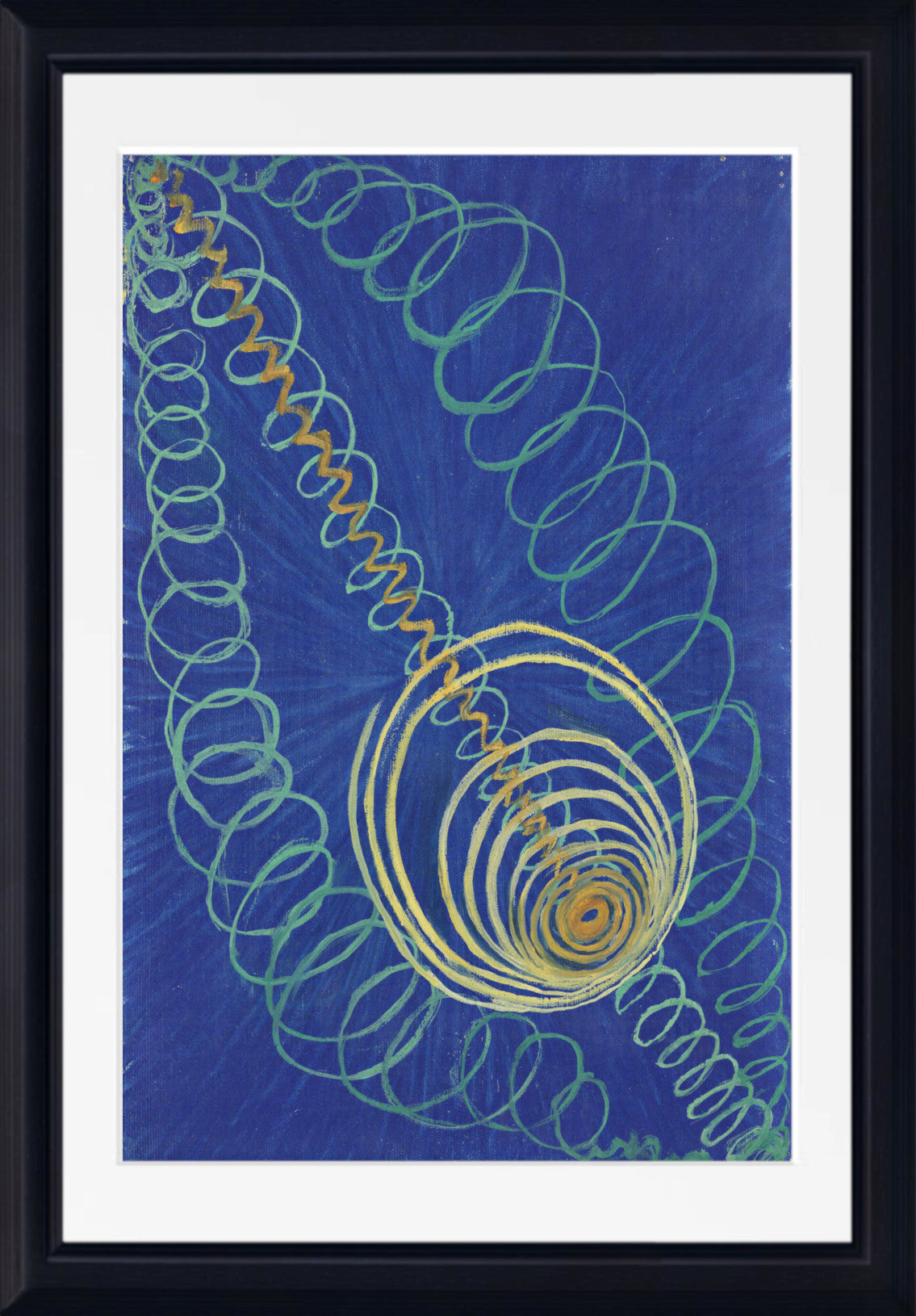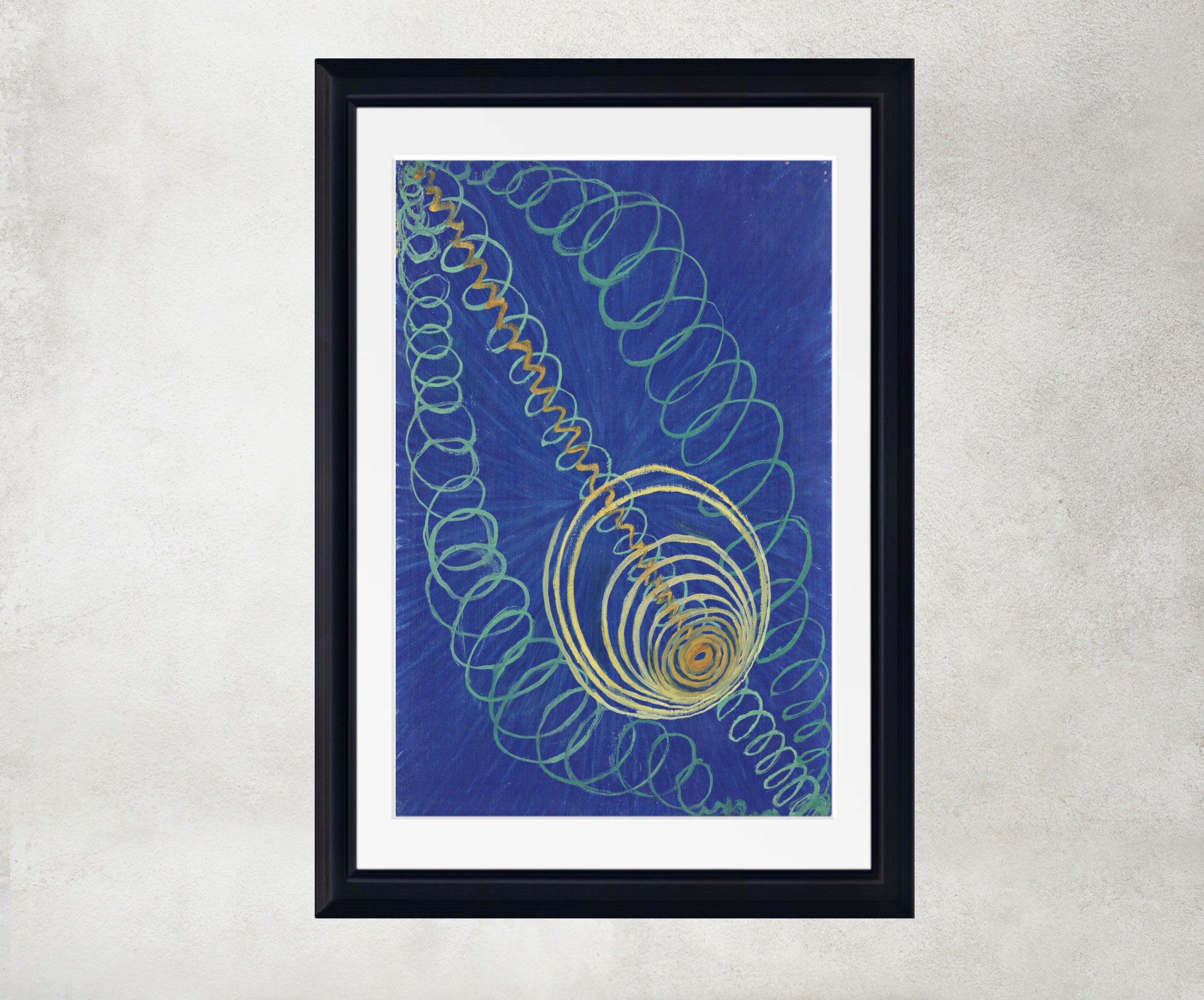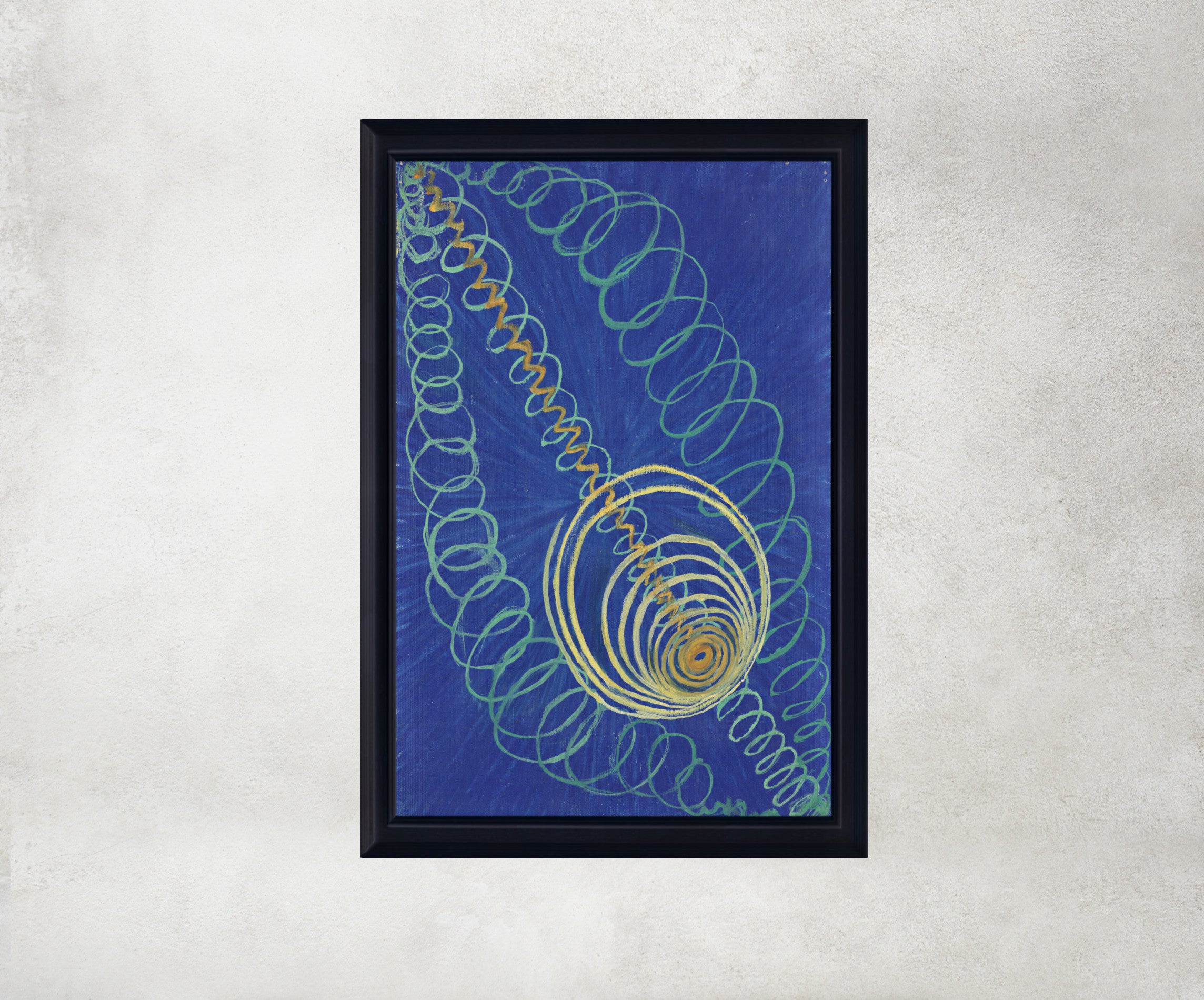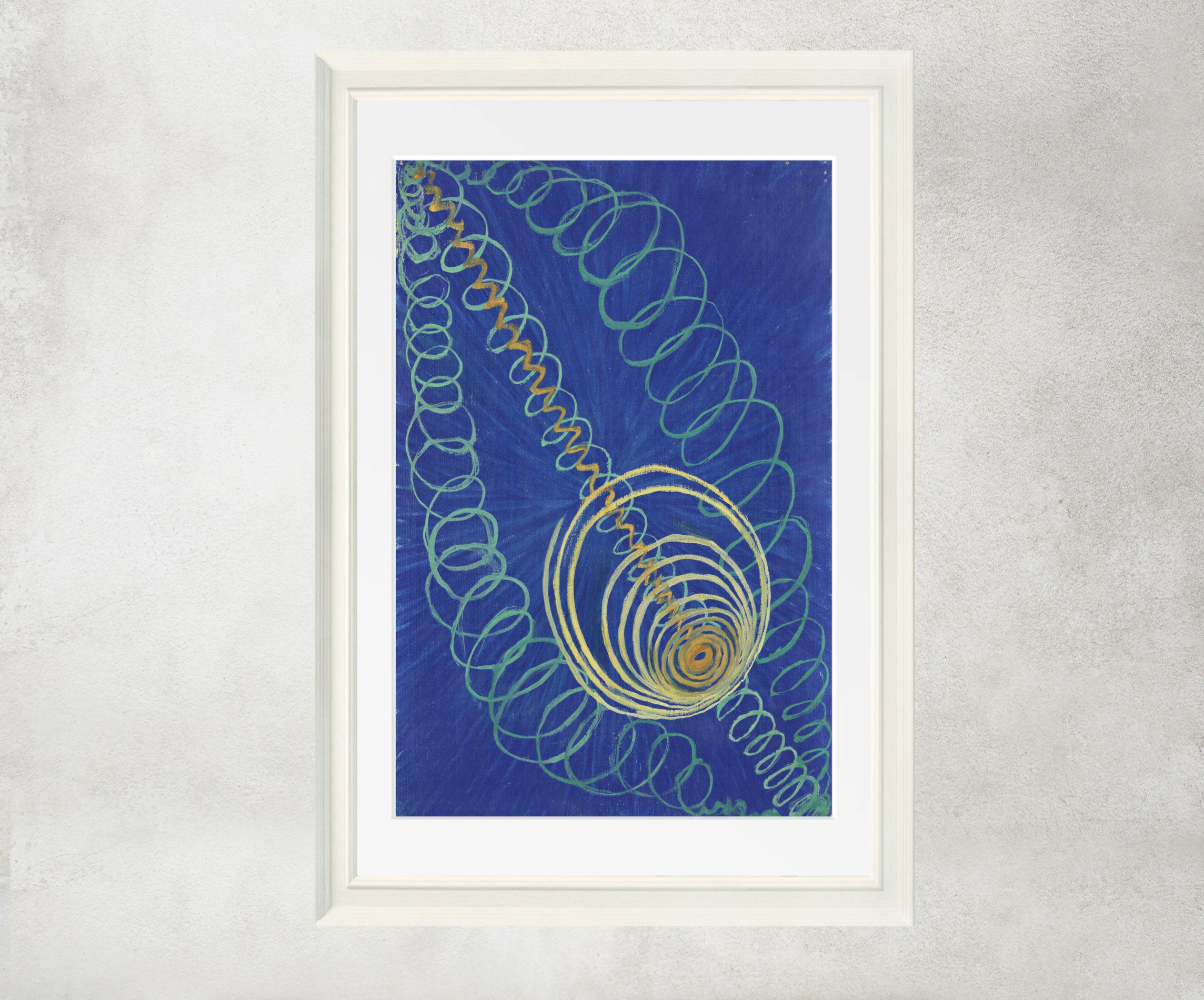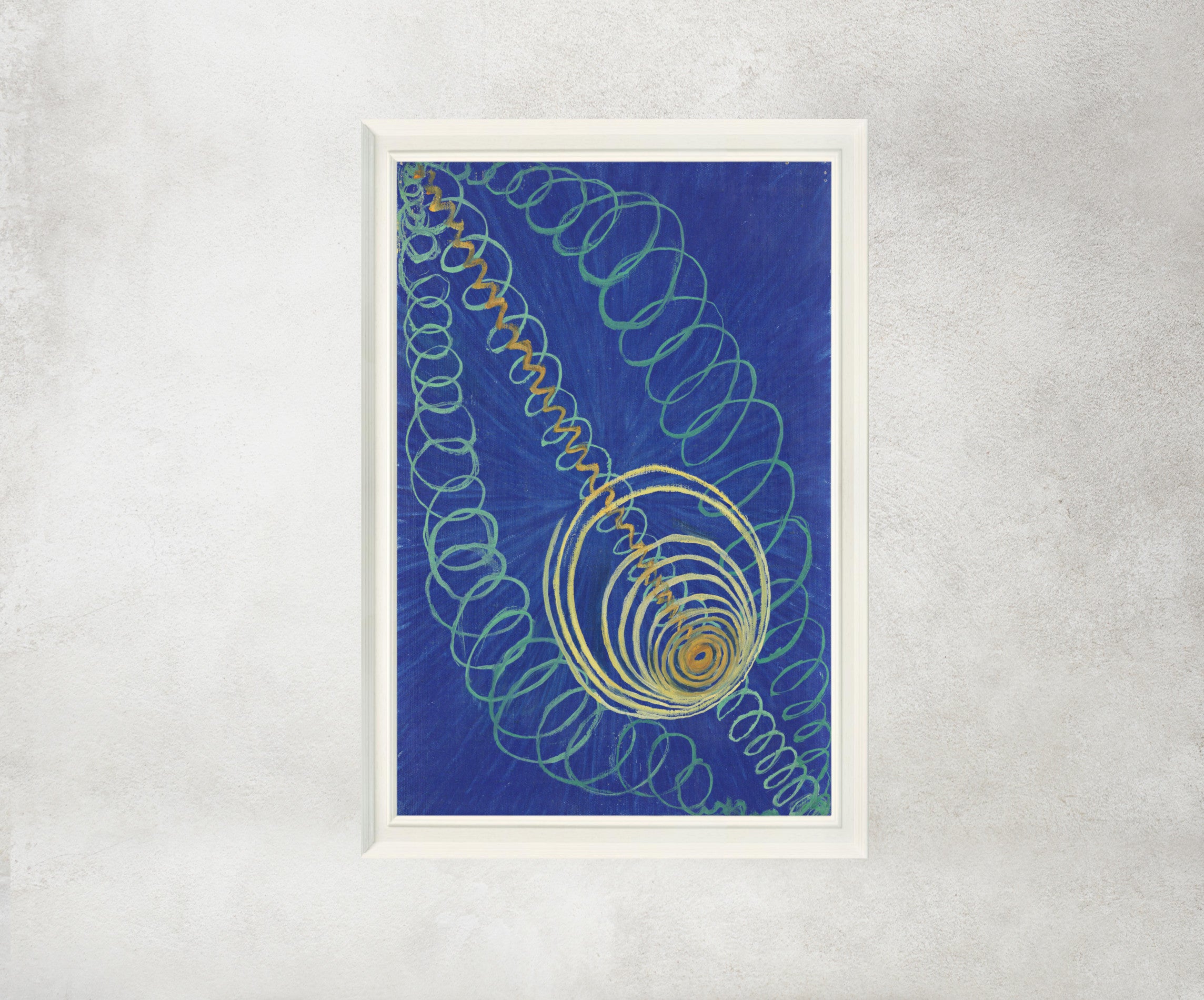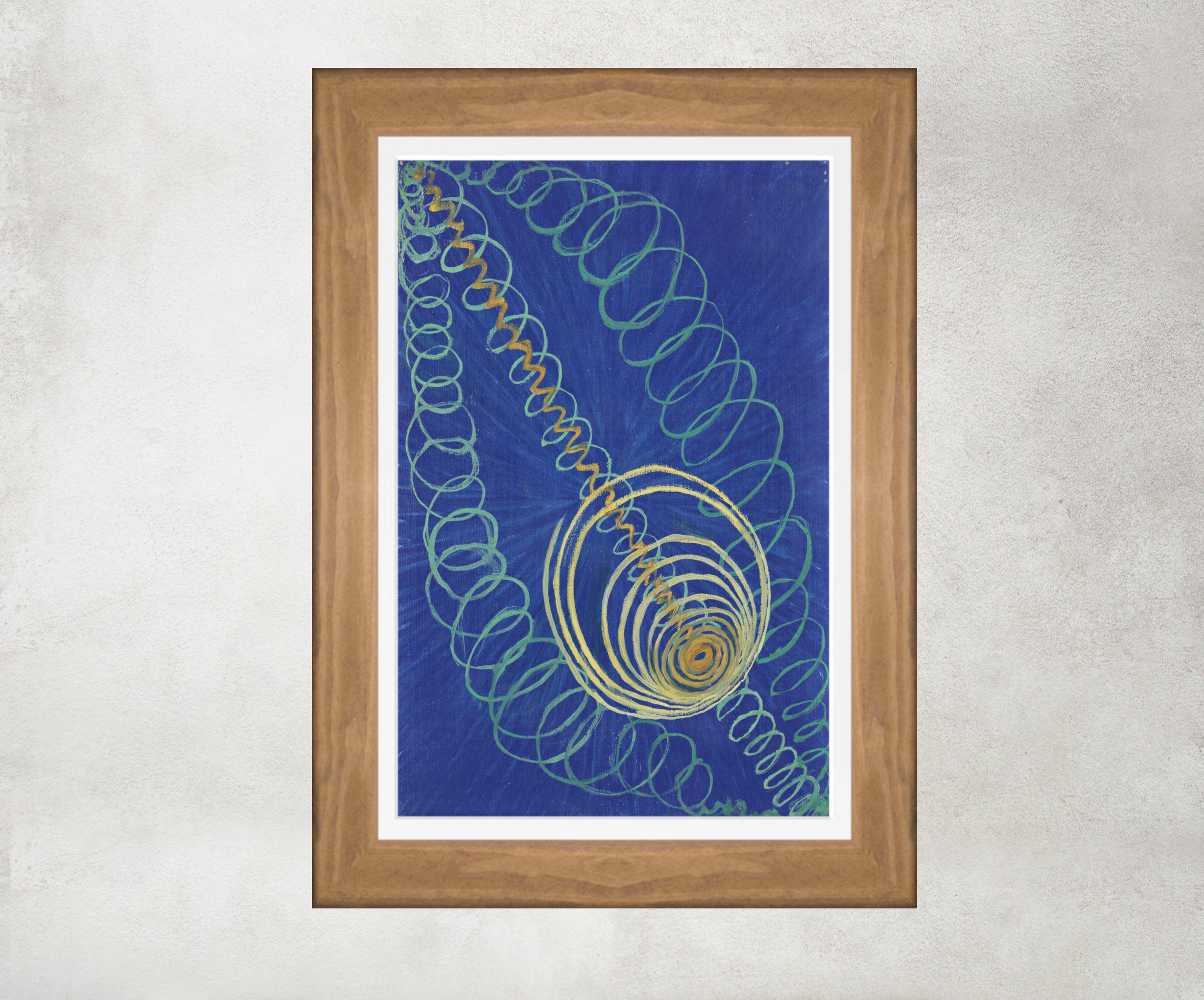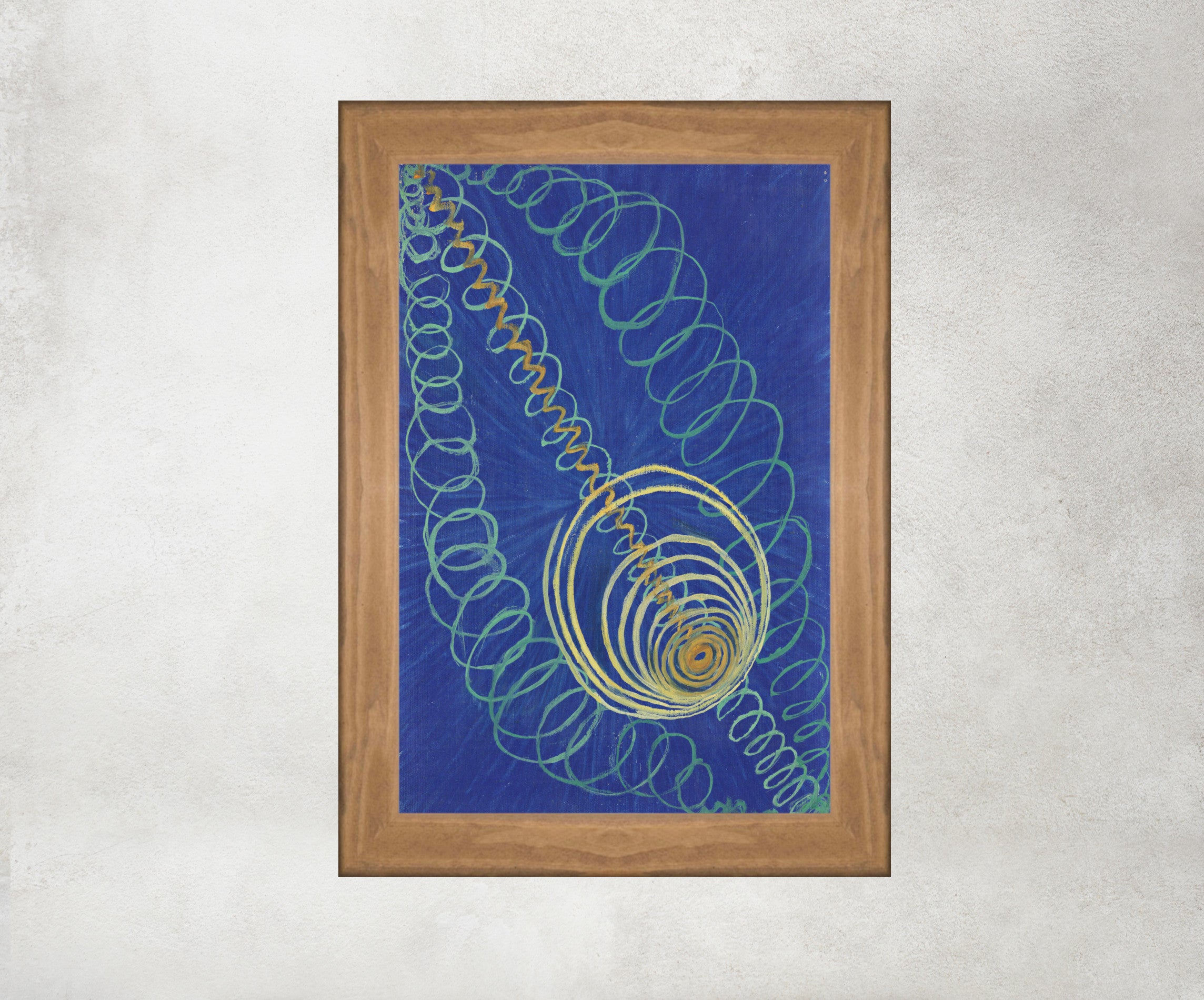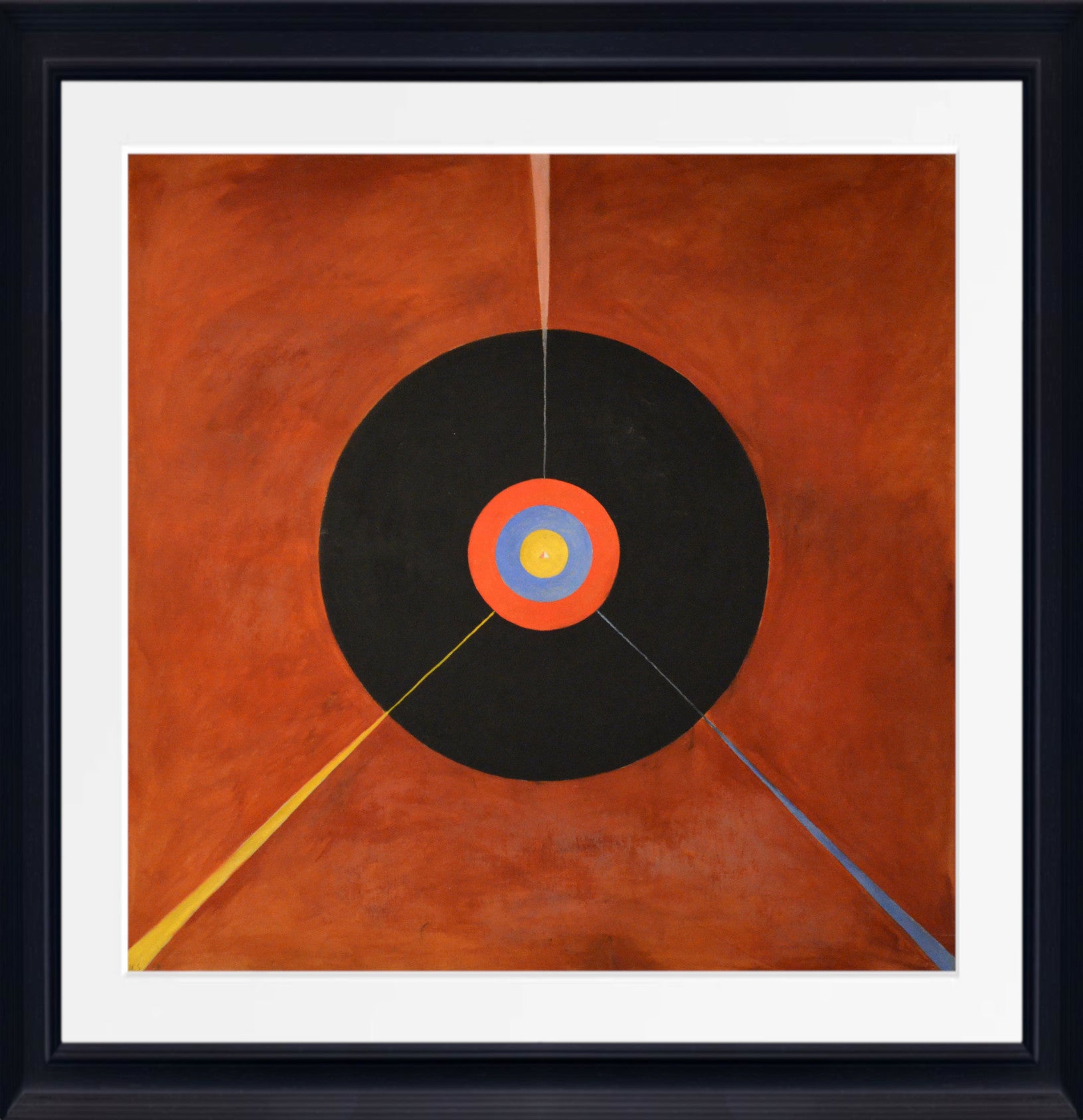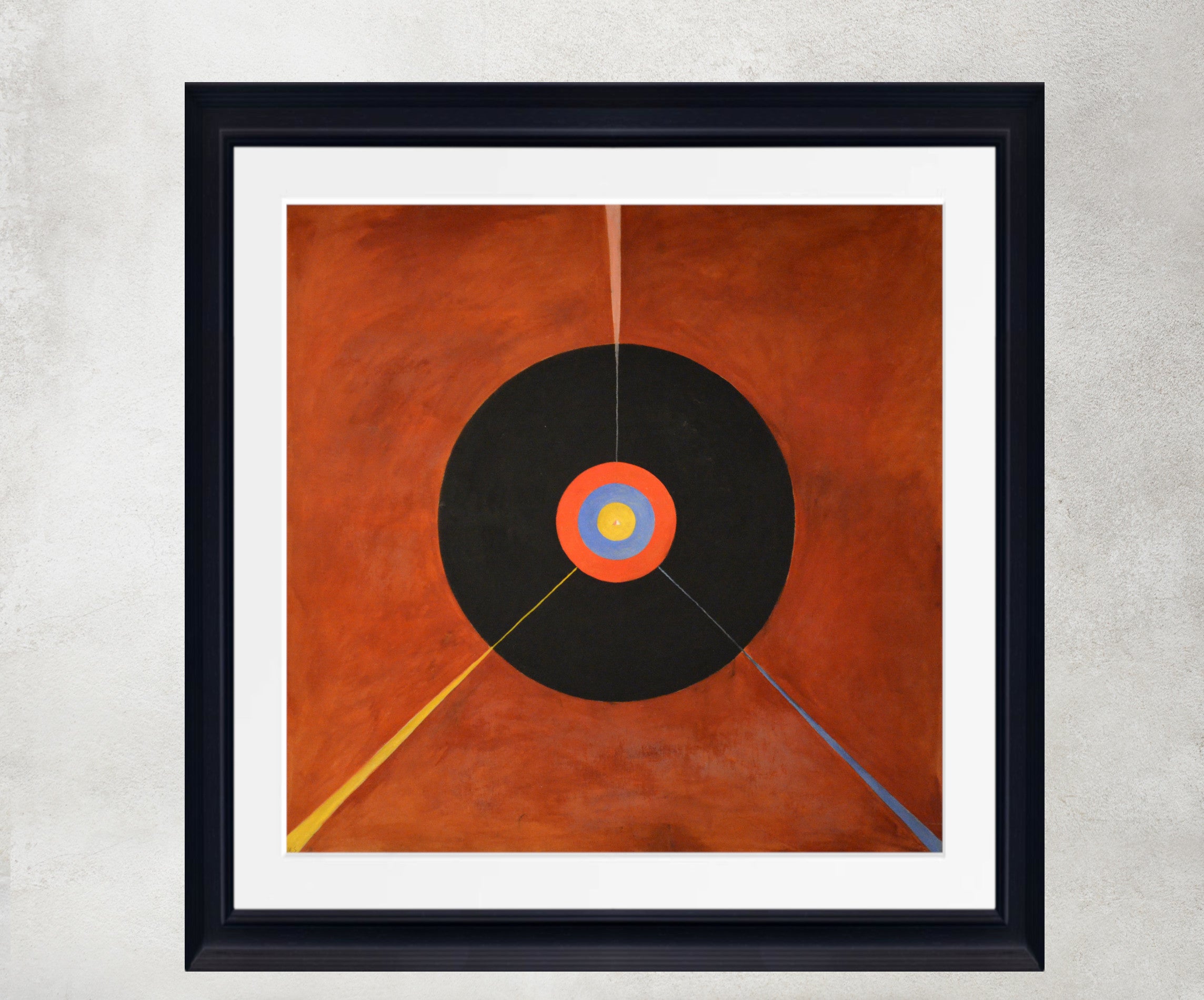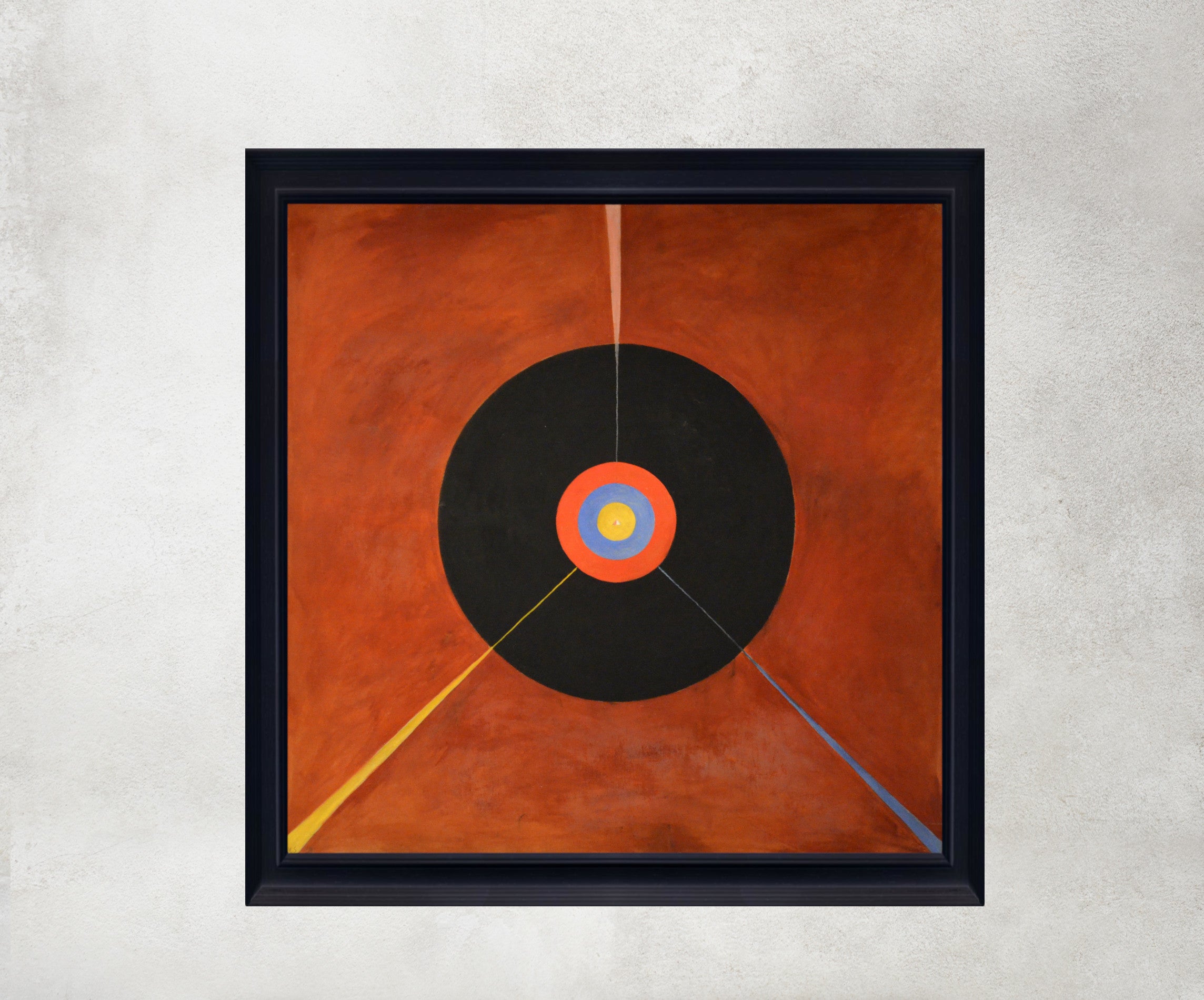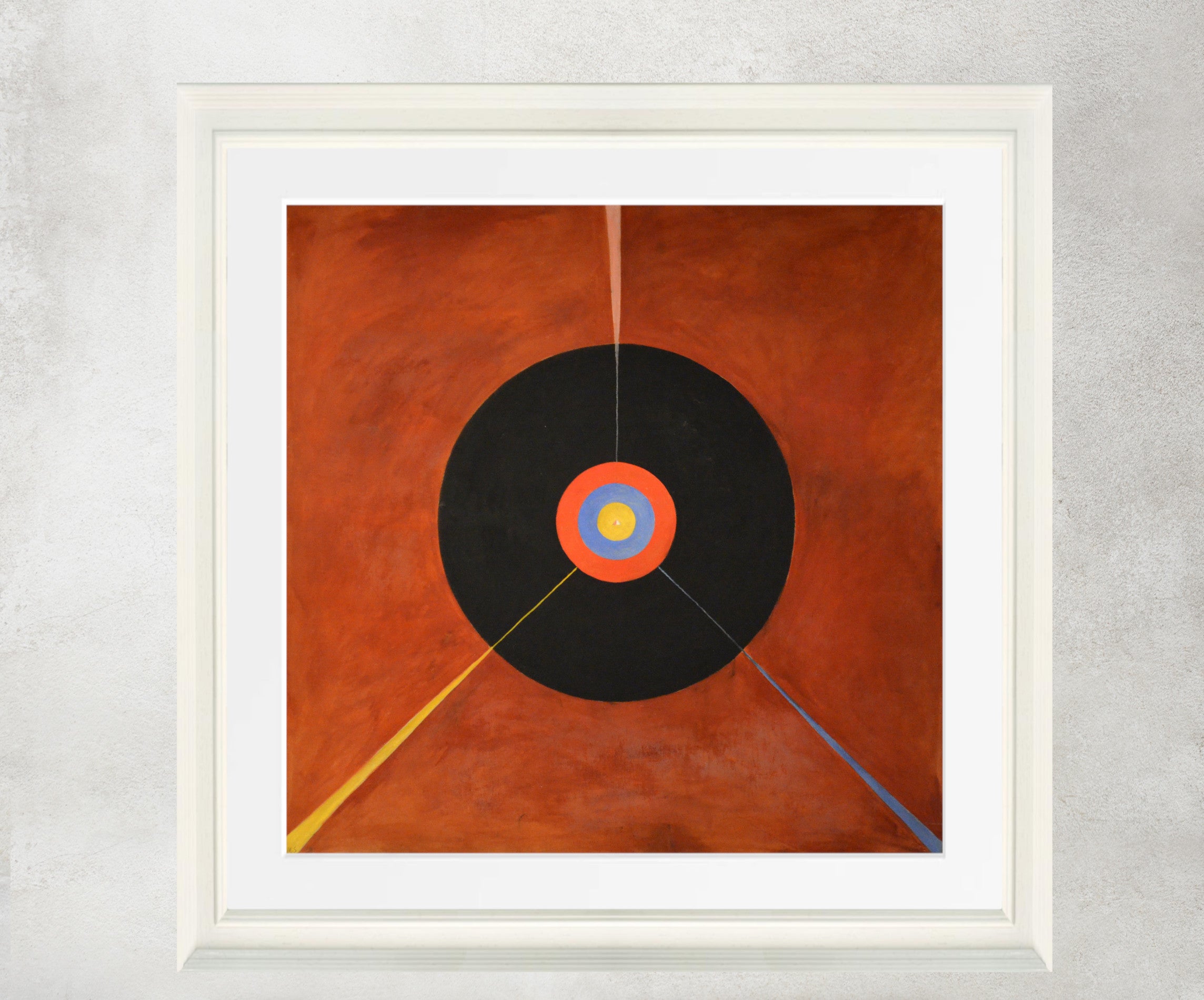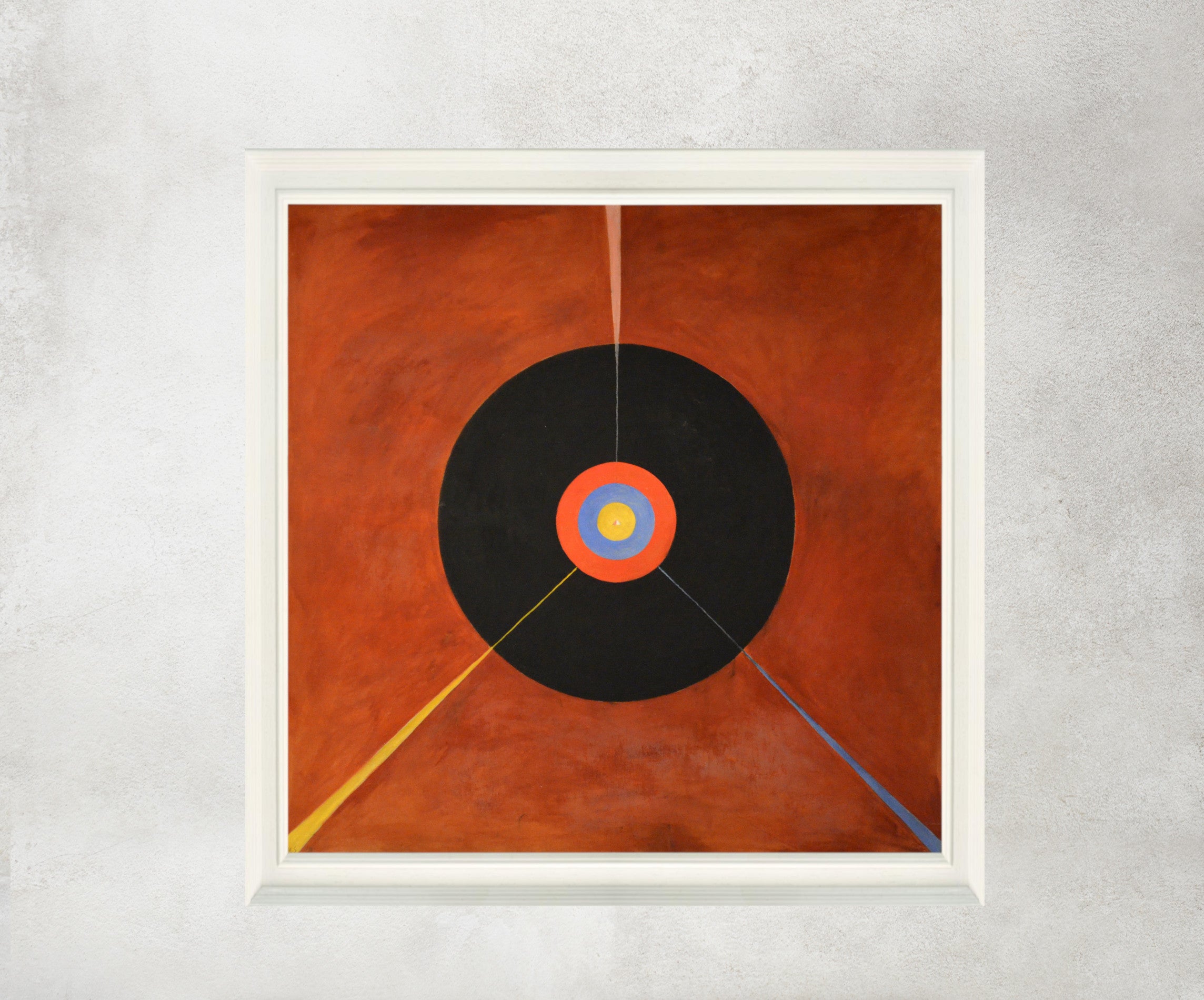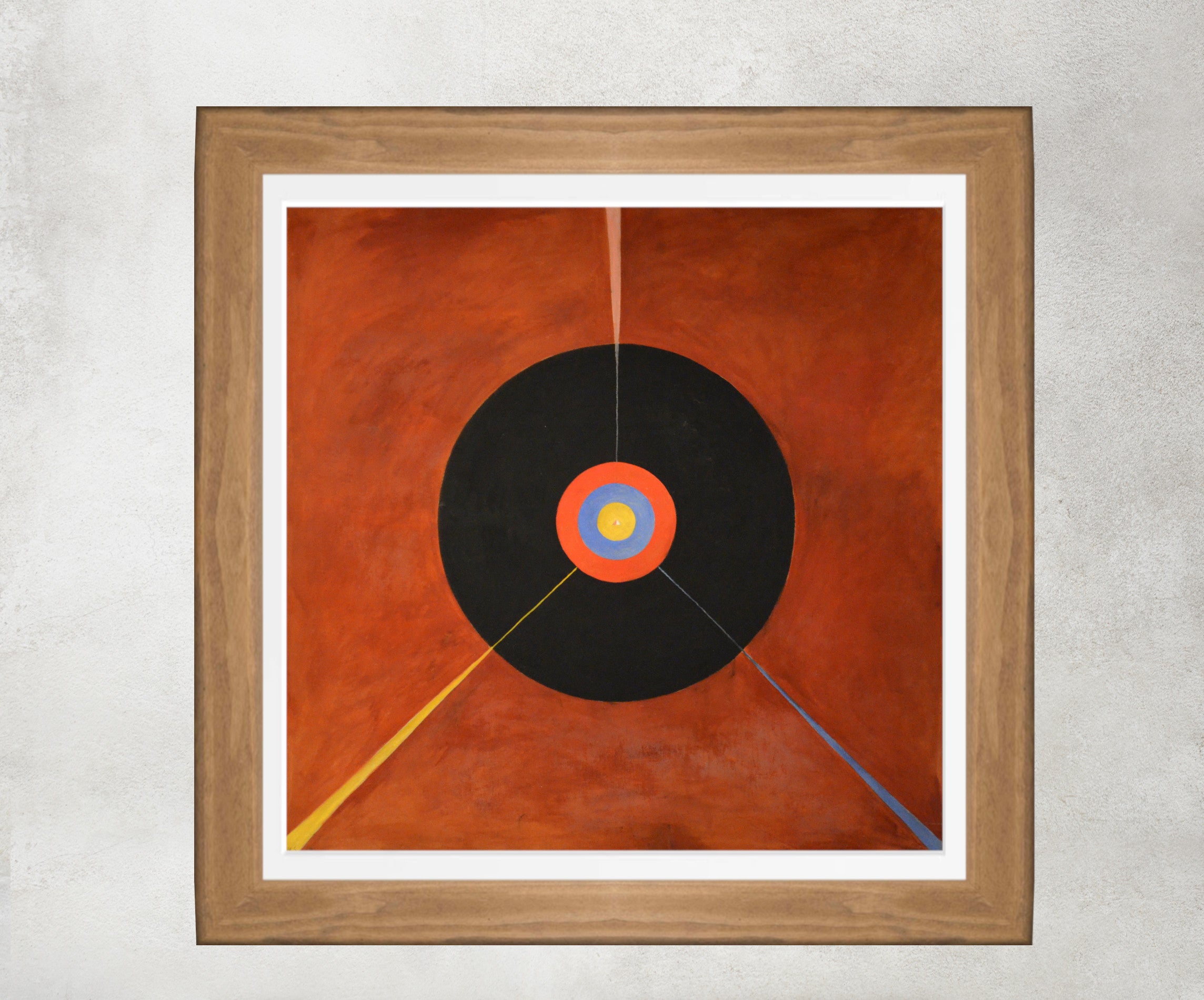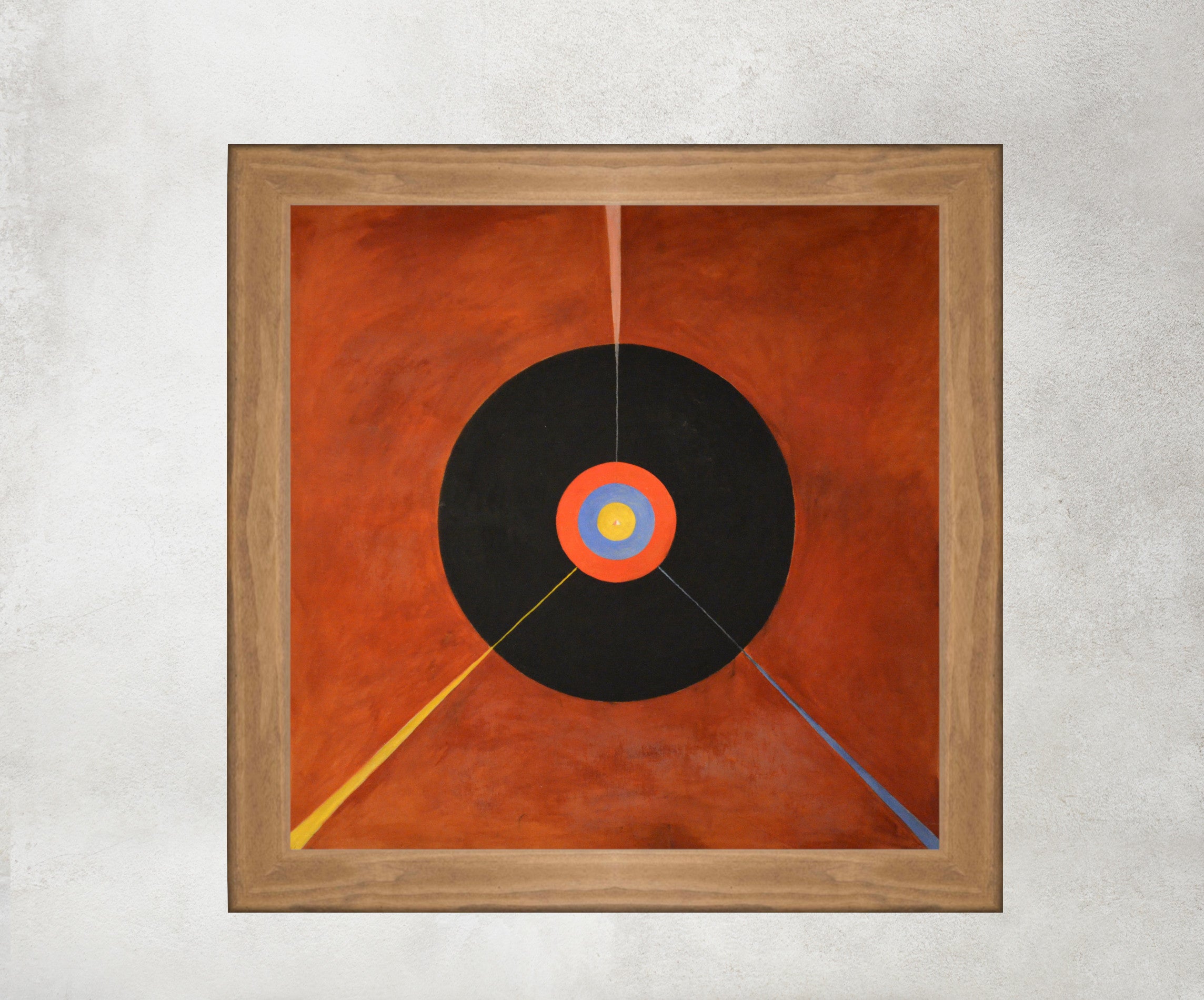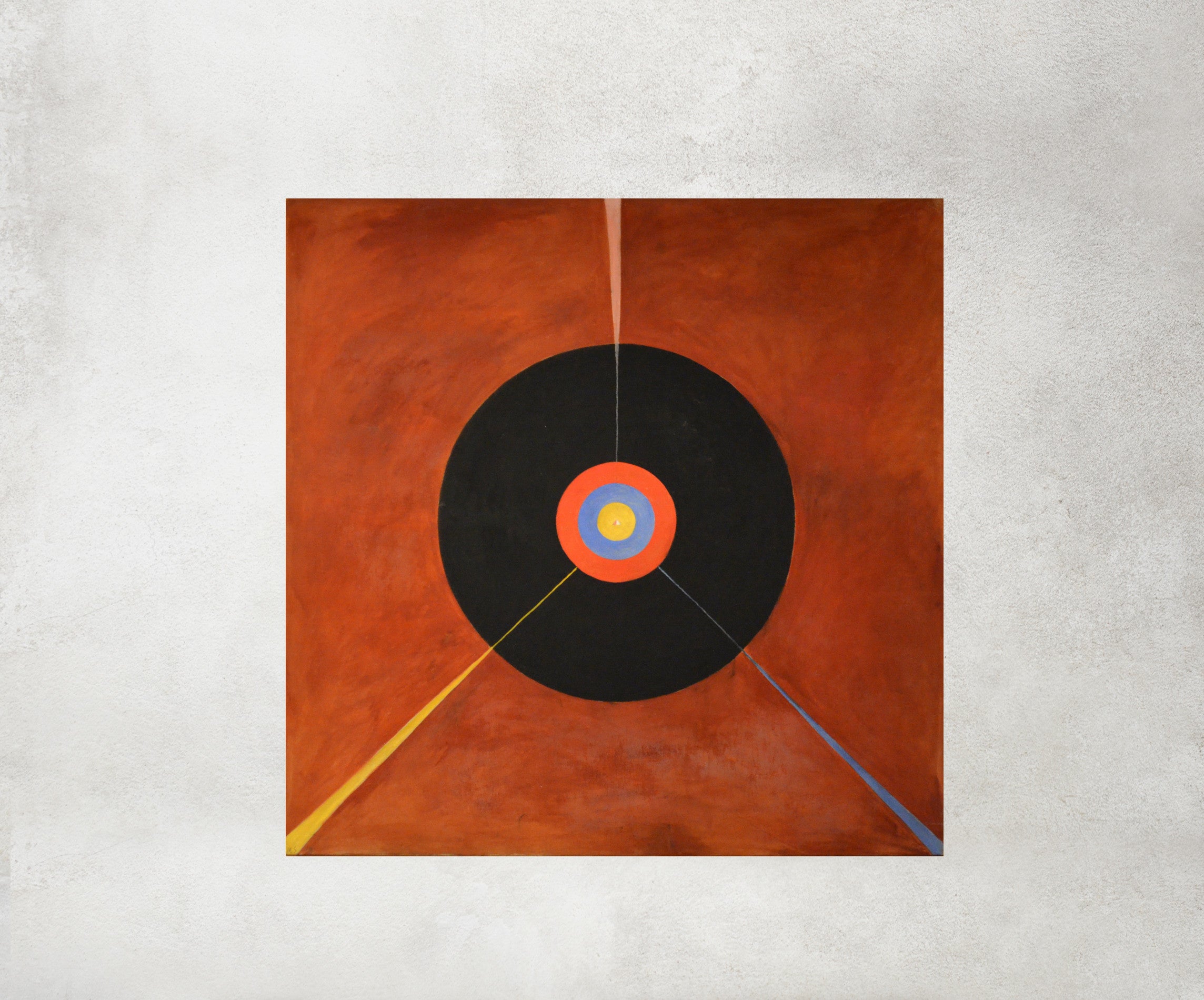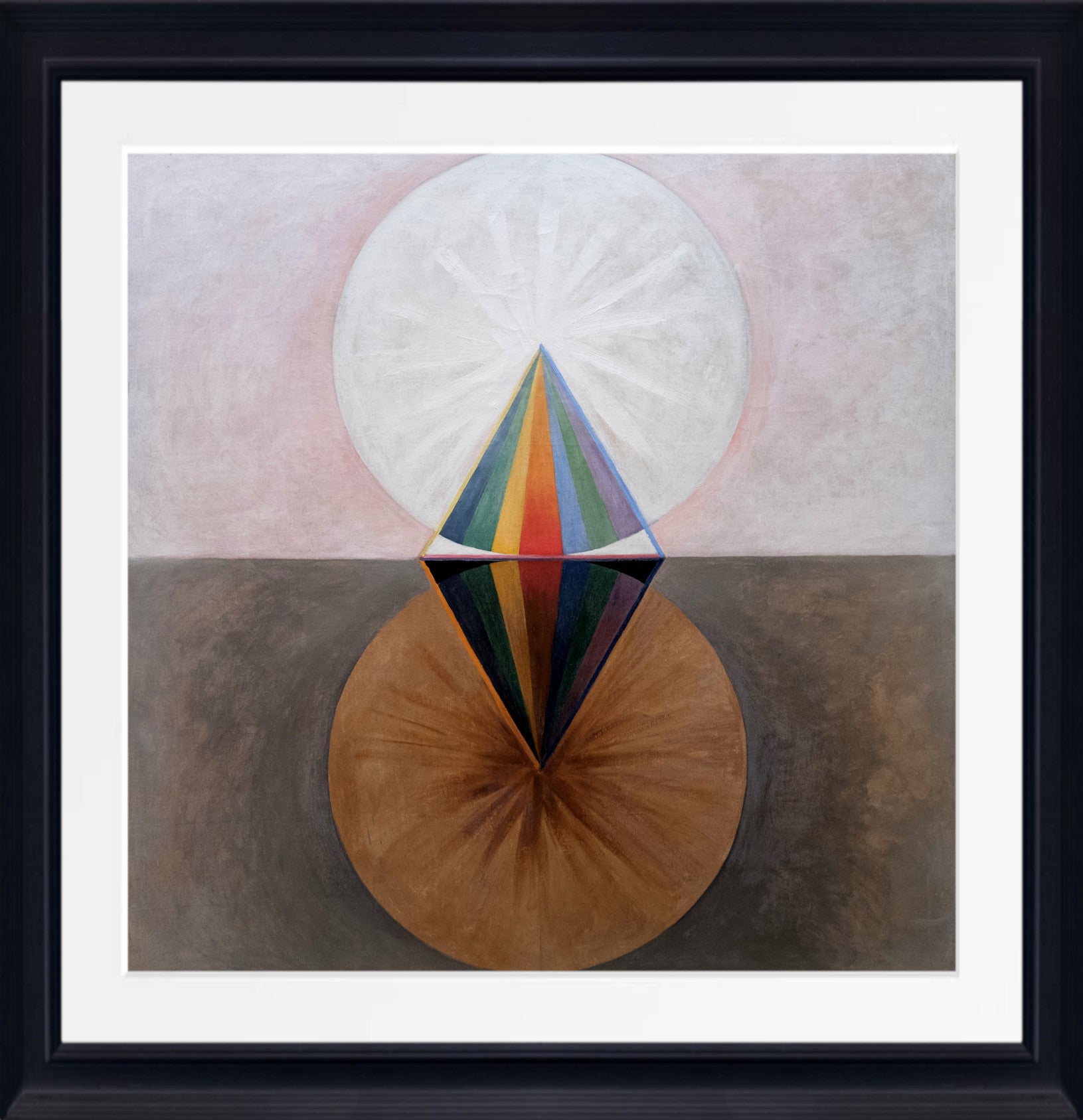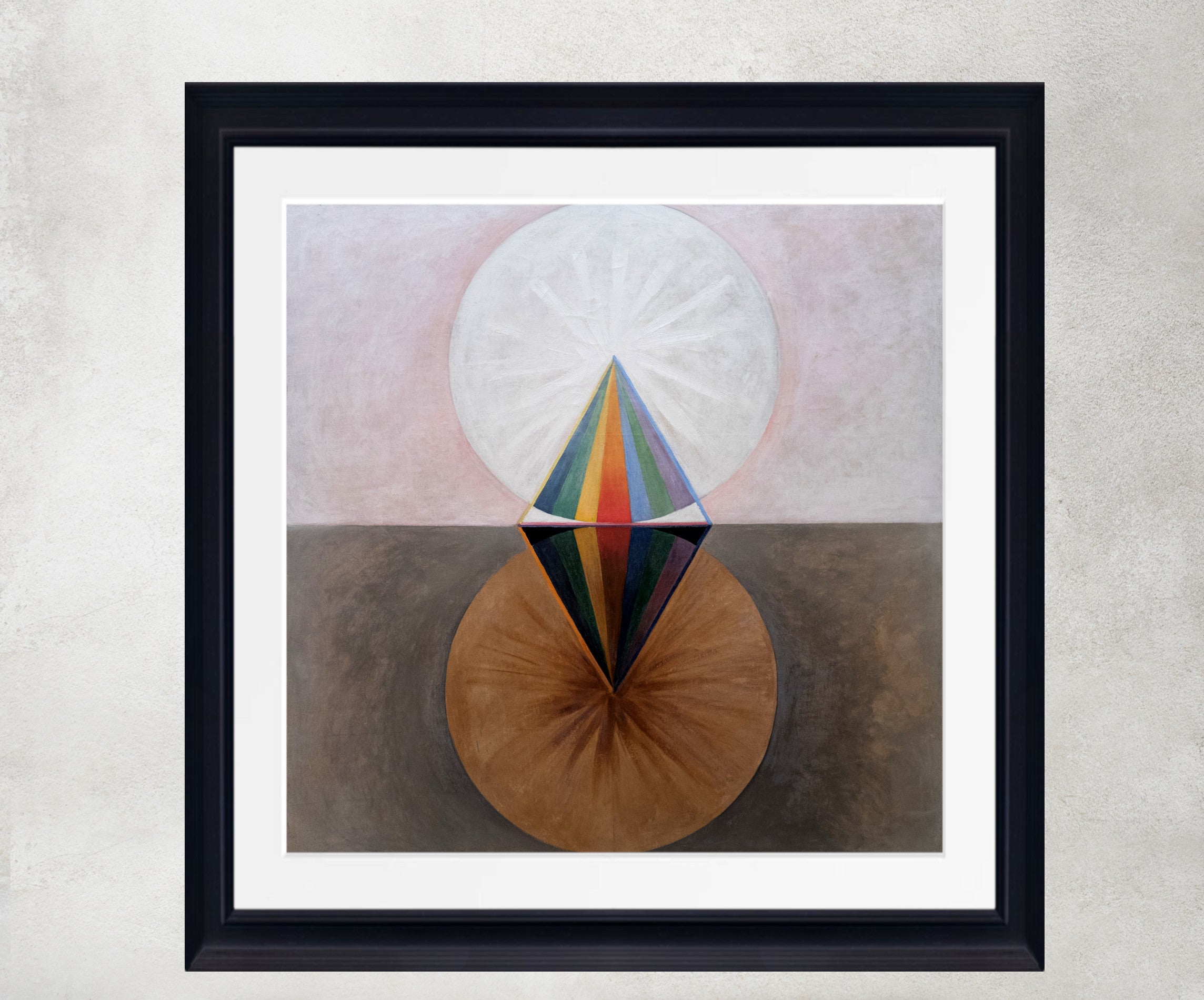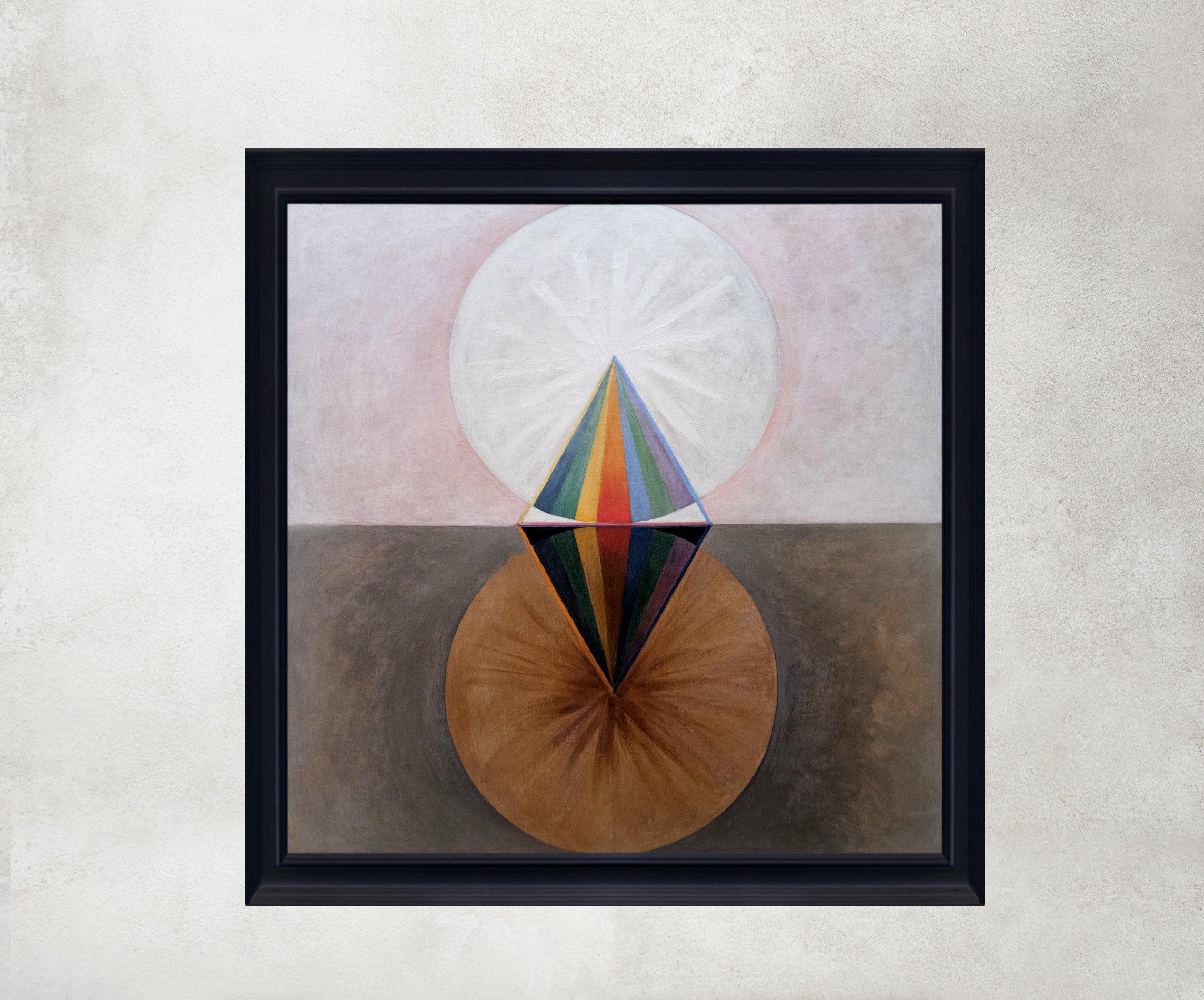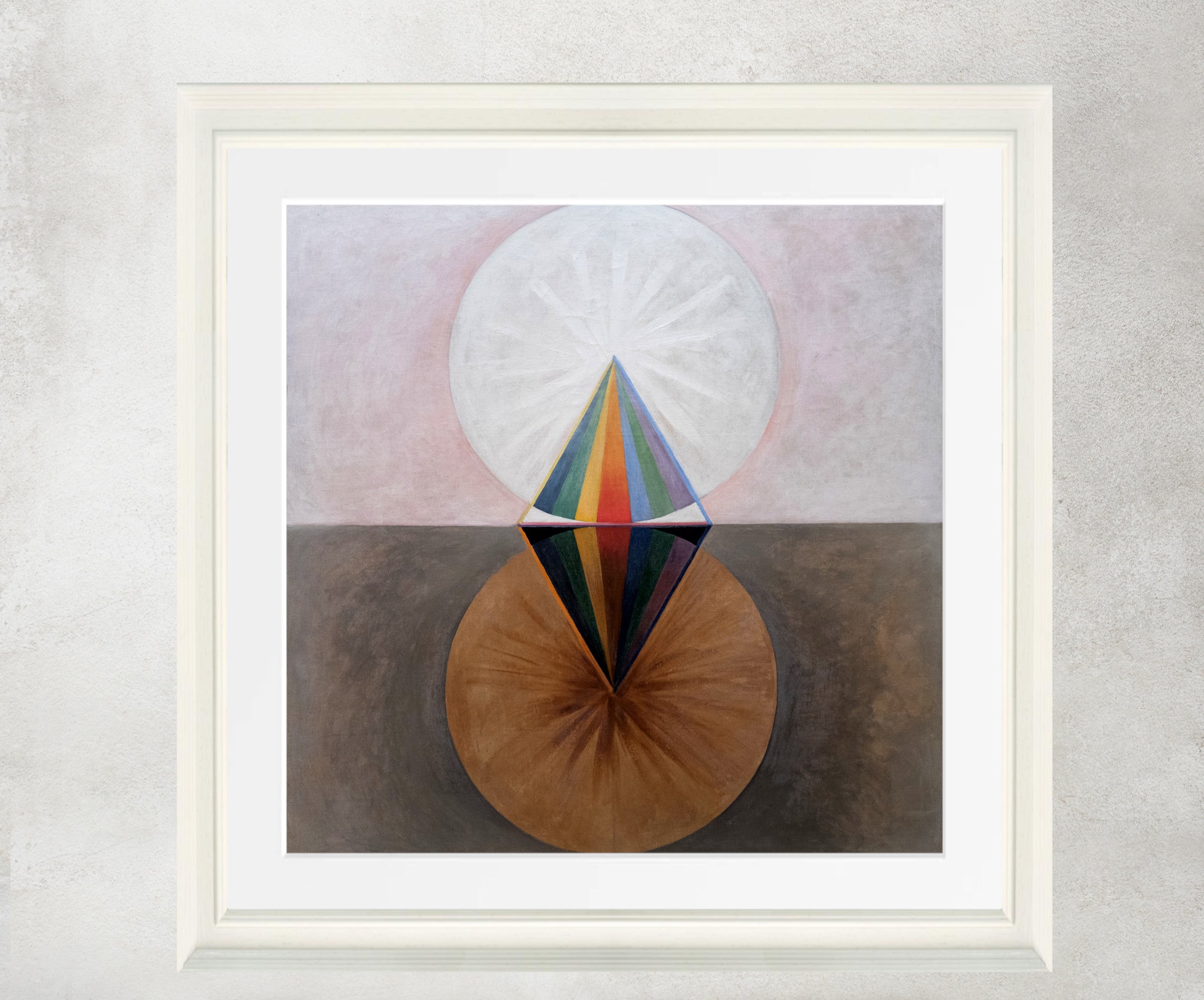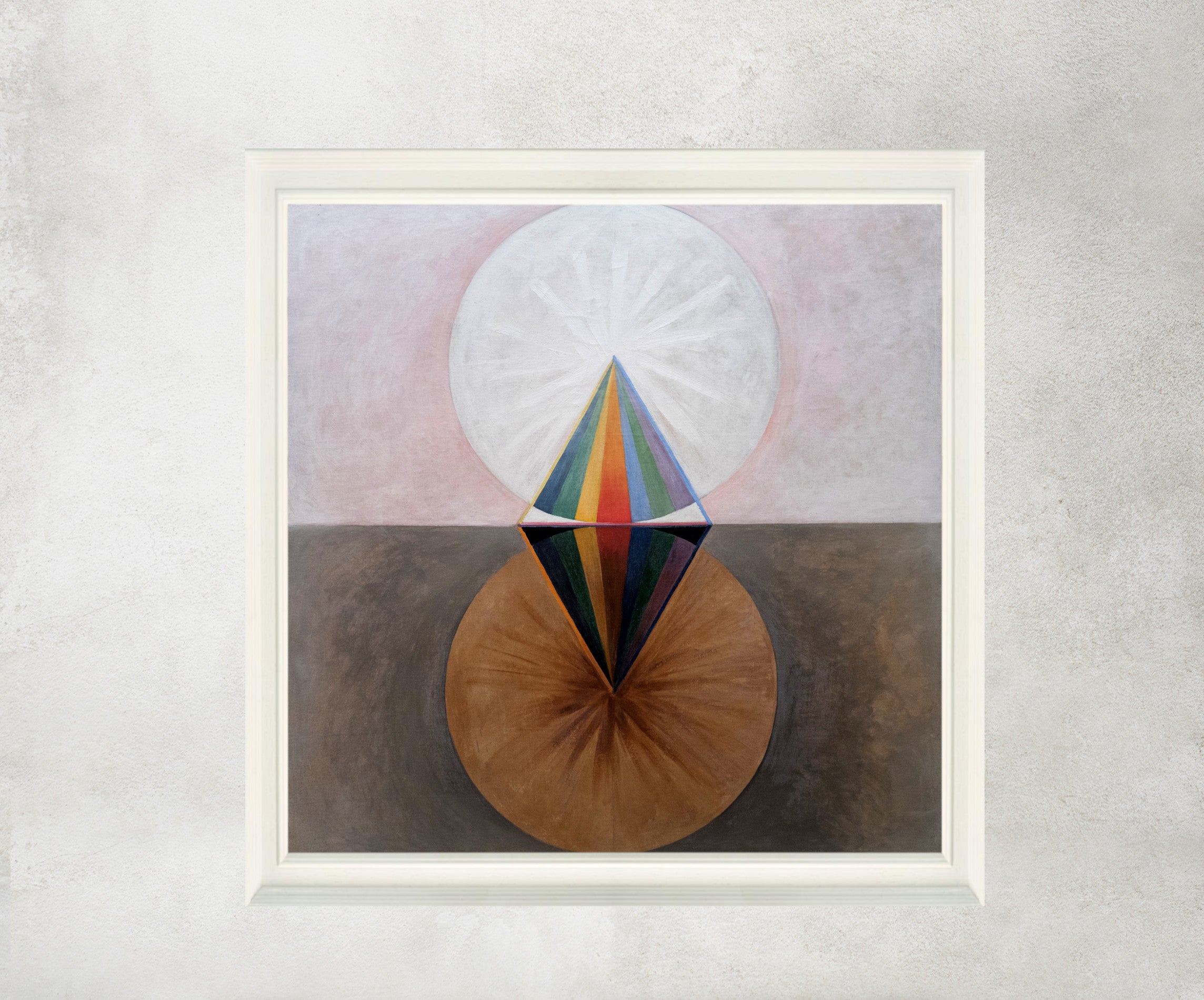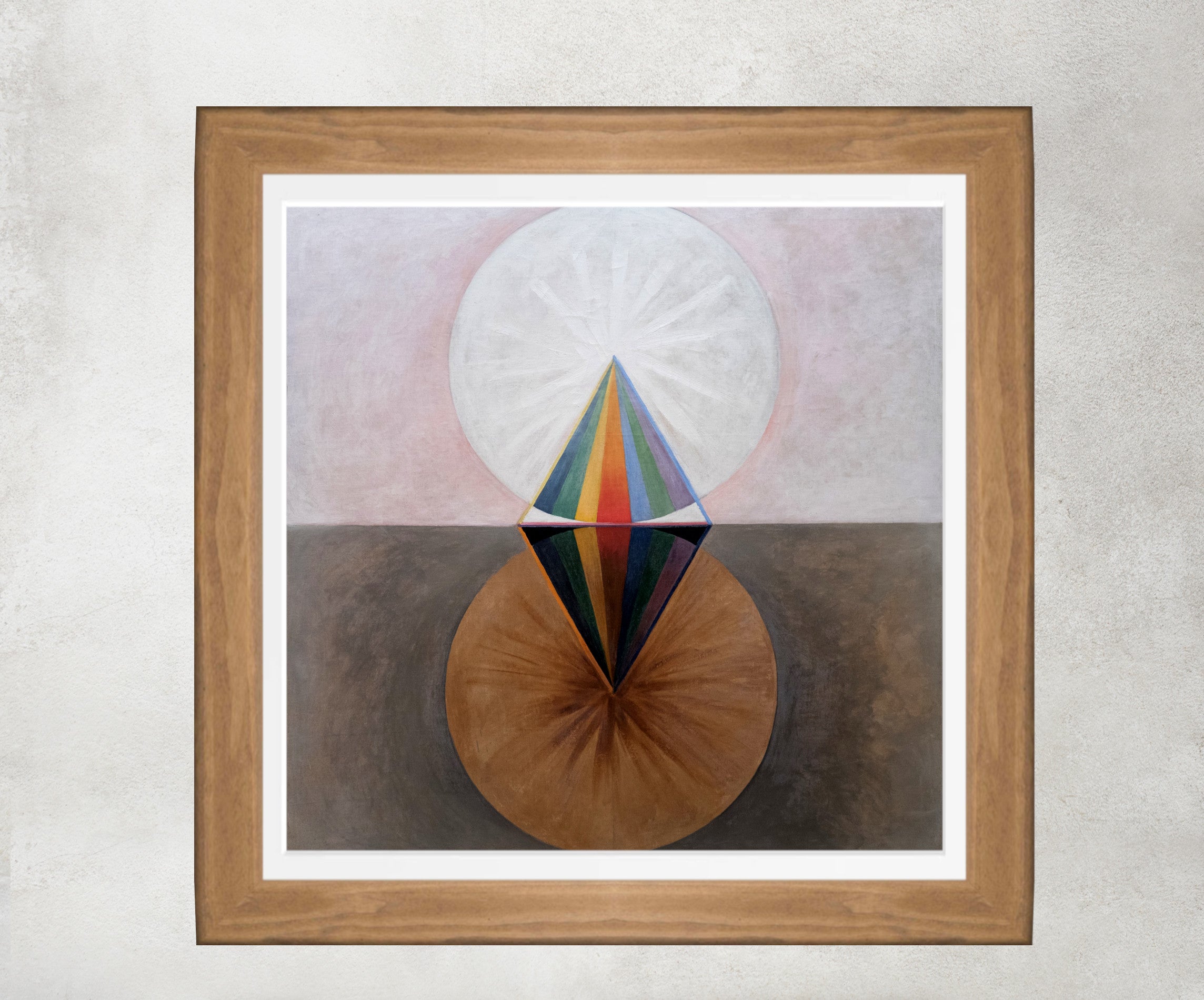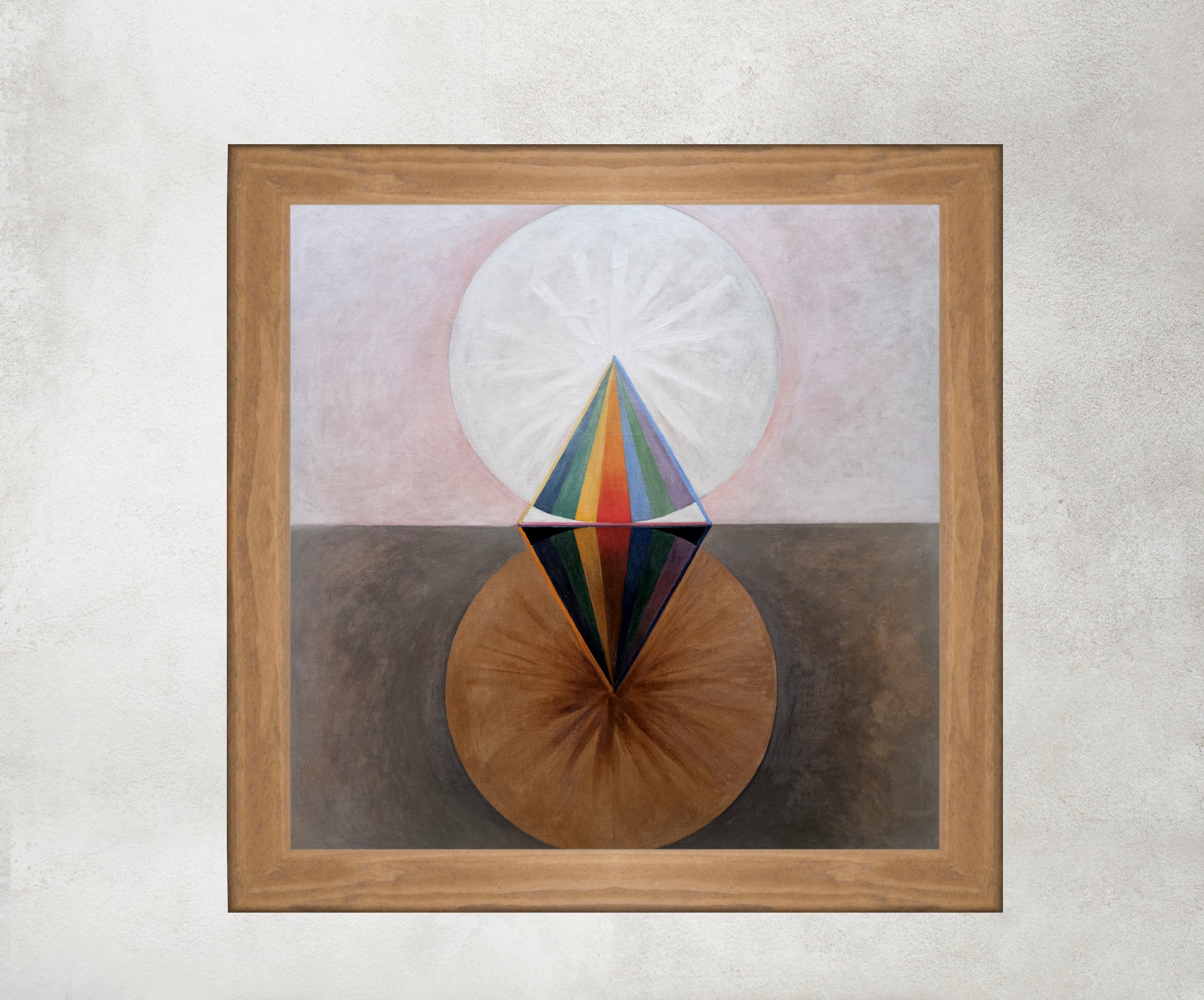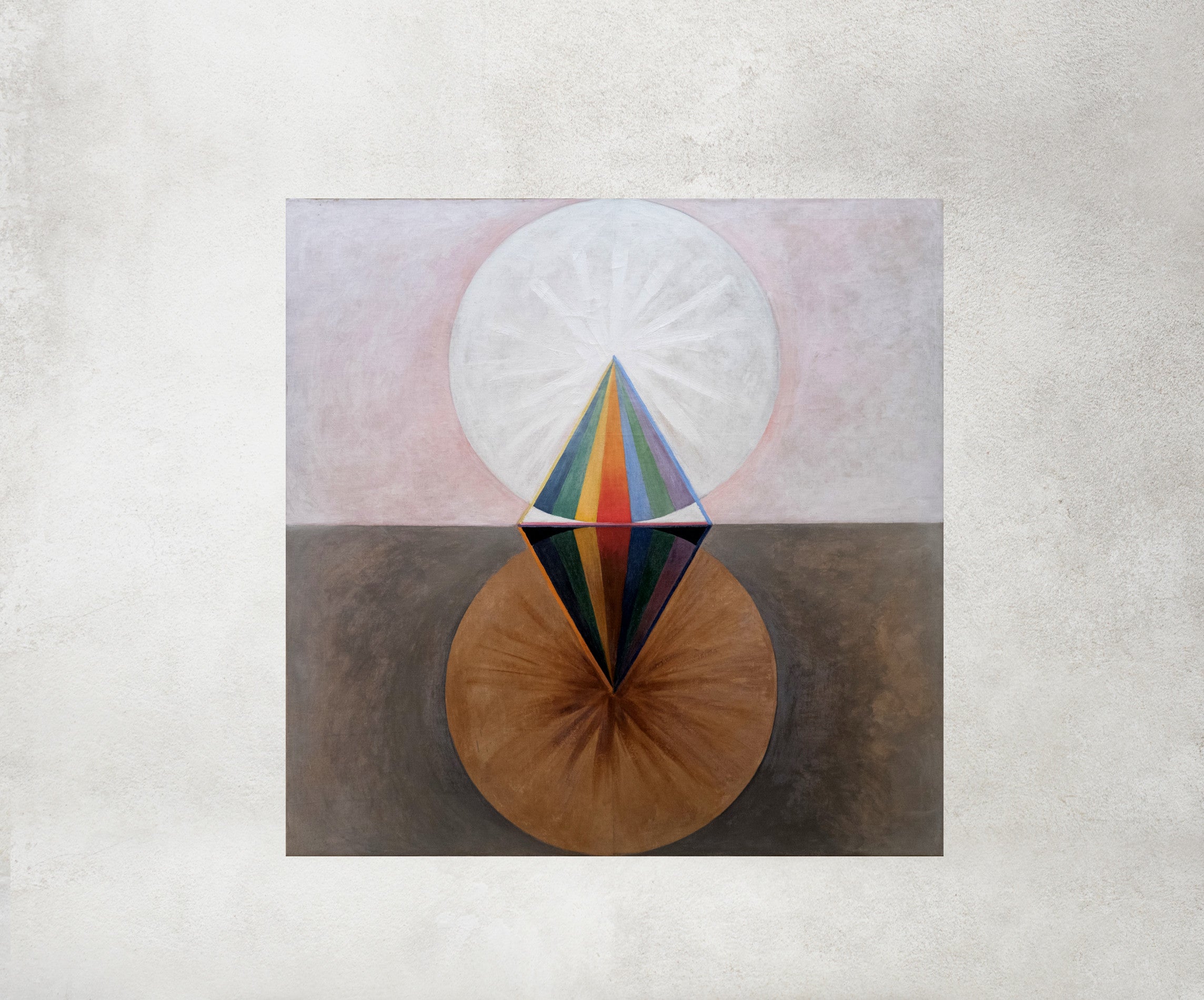Hilma af Klint (1862 – 1944) was a Swedish artist and mystic whose paintings are considered among the first abstract works known in Western art history. Every week for 10 years (1896-1906), Af Klint conducted seances with four other female artists, “the Five” (de Fem). She was the group’s founder and medium (their experiments with automatic writing and drawing predated the surrealists by decades). It was here, in 1904, that Af Klint reportedly received a “commission” from an entity named Amaliel who told her to paint on “an astral plane” and represent the “immortal aspects of man”. There followed 193 paintings between 1906-1915, an astonishing volume – known as the Paintings for the Temple.
The collection for the Temple is 193 paintings, grouped within several sub-series. The major paintings, dated 1907, are extremely large: each painting measures approximately 240 x 320 cm. This series, called The Ten Largest, describes the different phases of life, from early childhood to old age.
The Collection for the Temple

The collection for the Temple is 193 paintings, grouped within several sub-series. The overall idea is to convey the knowledge of how all is one, beyond the visible dualistic world. The temple to which the title refers does not necessarily relate to an actual building but can rather be seen as a metaphor for spiritual evolution. Hilma af Klint described her process: “The pictures were painted directly through me, without any preliminary drawings, and with great force. I had no idea what the paintings were supposed to depict; nevertheless I worked swiftly and surely, without changing a single brush stroke.”
The Swan series of the Paintings for the Temple
Following the "Paintings of the Future" exhibition at the Guggenheim Museum, Hilma Af Klint's works have soared in popularity as a new generation discovers these timeless design classics. GalleryThane has curated a range of Af Klints abstract paintings, gathering the most popular works from the many series within her "Paintings for the Temple".
With choices of size and frames these glorious prints are a must-have for tasteful modern interiors. The works range from the colourful to the spellbinding with a strong thread of spiritual mysticism throughout the range of works.


The Swan No 9 - one of a striking series from Hilma Af Klint symbolising the ethereal struggle of a swan struggling for unity.
The Swan series symbolises the ethereal in many mythologies and religions. With varying degrees of abstraction, Hilma af Klint explored polarities in her Swam series of paintings, through a black and a white swan striving for unity.
These wonderful images are also symbolic, representing respectively transcendence and love. Understood as gates to other dimensions, her paintings call for interpretation on a narrative, esoteric and artistic level while evoking primordial geometry and humanistic motifs.
These transcendent works are timeless in their appeal and sophistication and with such a wide range of colours it is possible to find a print from the Swan series which will comfortably fill a wall space with joy and intrigue.


Primordial Chaos
The first series of images directed by The High Ones is called Urkaos (Primordial Chaos) and illustrate the creation of the world. They are quite small pictures, 26 in all, with motifs showing basic elements Hilma further develops in her largest paintings. Snail shells, spirals, U and W are central and repeated symbols, texts included in the motifs are: avonwener, vestals and ascetics in the service of the Lord, evolution, Ararat, eros. U / V and W connect to eros and love. There are also crosses, sperms and eggs. Spirals are found everywhere in nature, from sunflowers to spiral galaxies, from pine cones and snail shells to cyclones. Snail shells are a good choice as a symbol of development because the shell’s growth occurs logarithmically, as a fibonacci sequence. Many plants use fastening threads, twisting in spirals. It is an effective way to find anchoring points, and Hilma had botanical knowledge giving an overview of all this.
The Ten Largest - An artistic representation of the Phases of Life

This series of ten bold patterns in striking colours depicting the stages of life have a spiritual warmth which gives an instant uplift in mood to the viewer. These works bring a sense of harmony to the space they hang in. The sense of wellbeing these wonderful images emit is amplifies when they are hung in groups or as a feature wall of the entire set.
The Ten Largest from 1907 illustrates the four ages of mankind: childhood, youth, maturity and old age. Some words and plant forms are discernible in these otherwise abstract compositions.




